Welcome to Art Song Canada, an online “magazine” to cover various aspects of the art song world. A new issue is published quarterly. Please consider subscribing for free now.
ןעװעג זיא רשפֿא סאָד ןײַמ קילג :
Geven iz efsher dos mayn glik:
Perhaps this was my happiness:
ןליפֿ יװ ענײַד ןגיוא
filn vi dayne oygn
to feel how your eyes
ןבאָה ךיז ראַֿ פ רימ ןגיובעג .
hobn zikh far mir geboygn.
bowed down before me.
ןיינ , ןעװעג זיא סאָד ןײַמ קילג :
Neyn, geven iz dos mayn glik:
No, rather this was my happiness:
ןייג קידנגײַװש ןיה ןוא רעה
geyn shvaygndik hin un her
to go silently back and forth
טימ ריד ןרעביא רעװקס .
mit dir ibern skver.
across the square with you.
ןיינ , טינ סאָד , טינ סאָד , ראָנ רעה :
Neyn, nit dos, nit dos, nor her:
No, not even that, but listen:
ןעװ רעביא רעזדנוא דיירפֿ
ven iber undzer freyd
how over our joy
טגעלפֿ קידנעלכיימש ךיז ןגיובנײַא רעד טיוט .
flegt shmeykhlendik zikh aynboygn der toyt.
there hovered the smiling face of death.
ןוא עלאַ געט ןענײַז ןעװעג ןרופּרופּ ,
Un ale teg zaynen geven purpurn,
And all of the days were purple
ןוא עלאַ רעװש .
un ale shver.
and all were hard.
– Anna Margolin’s “Mayn Glik,” transliterated and translated from Yiddish by Shirley Kumove, featured in Alex Weiser’s and all the days were purple
December is upon us! And with it, we continue to look at art songs that expand our definition of the art song canon. Today’s issue focuses on works from minority linguistic communities in Canada, including Bulgarian, Farsi, Irish, and Yiddish.* We are very pleased to present four up-and-coming singers/singer-scholars’ introductions to art songs in languages that reflect their backgrounds and exemplify just a few of the cornucopia of traditions present within Canadian society. Firstly, soprano and scholar Dr. Maeve Lilian Palmer gives us a primer on Irish song in 2025, including a guide to pronouncing all those Irish songs we know you’ve been longing to sing. Then, Lebanese-Palestinian Canadian tenor Haitham Haidar discusses his experiences melding his Arab background with the Western classical canon within his new (gorgeous!) album Zaytoun. Soprano and PhD candidate Jardena Gertler-Jaffe rounds things off with an introduction to the rich world of Yiddish art song, and finally in our “Introducing…” column, soprano and Speech-Language Pathology professor Theodora Nestorova introduces us to a Bulgarian work by her great-uncle, Tsanko Tsankov’s “Жениш ме, Mамо, годиш ме” (“Mother, You Are Giving Me Away”).
As always, we hope this issue inspires you and reminds you of the boundless potential of the art song genre. If you enjoy this issue, please consider donating to support the Art Song Foundation of Canada’s bursary programs for young Canadian singers and pianists.
— Sara Schabas, editor
* we may need to do a sequel issue soon!
An Introduction to Irish Art Song by Dr. Maeve Lilian Palmer
On a particularly wintry day this November, I braved the unseasonable snow to attend an Irish gathering at Midtown Toronto’s Boxcar Social (spearheaded by Pa Sheehen, Assistant Professor at St. Michael’s College, University of Toronto). I hadn’t been to the gathering in some time, so, as I climbed the narrow steps, I recalled the small, socially distanced walks around Queen’s Park of 2020, often just two or three people strong. I wondered if a similar group might be cozied up in a small corner near Boxcar’s fairytale patio. Yet, as I shook off my snowflaked hair and entered the warmly lit bar, I began to catch bits of Irish all around me. A group of elegant young women, drinks in hand, some be-sweatered lads by the window, a venerable group chatting jovially by the stairs. Astonished, I chanced a “Dia duit” (hello) to a pink-clad white-haired woman who returned “Dia is muire duit” (hello to you)! Once I had acquired a frothy chai tea, I made my way to the usually quieter upstairs, where Irish speakers overflowed every room, crowding out the bemused, laptop-laden regulars. From native Gaeilgeoir “Irish speaker” immigrants, to new language learners reading Irish picture books in a pillowy corner, dictionaries in hand, the voice of an teanga beo “the living language” resounded.
Once mother tongue to nearly a quarter of Canadians, Irish-Gaelic (Irish), like many native languages of Canadian Indigenous and immigrant peoples, suffered under Canada’s Anglo and religious assimilation efforts. Punitive policies and pervasive sentiments casting Irish as ‘subversive’ and ‘backward,’ inflamed the already fragile state of the language following the Great Irish Famine, contributing to its dormancy in 20th century Canada. As Canada enters a period of reconciliation with minority and Indigenous languages, the shroud of silence lifts and Irish sounds again; colonial wounds in Ireland and the Irish diaspora are, with effort and joy, beginning to heal.
Still, should you have counted yourself among those who thought Irish merely an accent, or else long dead, and certainly not a language of Canada, you wouldn’t be alone. Despite Canada’s ongoing revival of Irish in speech and song, the aptly named “Great Silence” of the 20th century continues to influence song performance in Canada. Popular classical arrangements of macaronic songs (songs in two languages – in this case Irish and English), often obscure Irish text beneath unstandardized transliterations. Perhaps you’ve performed John Beckwith’s “Dimindown” from his cycle, Four Love Songs, only hoping you had the syllabic pronunciation correct. Or maybe you’ve performed a 20th century publication of The Gartán Mother’s Lullaby, arr. Herbert Hughes, a staple of RCM level 8 students, not realizing the transliteration “a lyann van o” is the poor baby to whom the mother sings (a leanbhán ó “oh my little child” / a leabh an-óg “my babe in arms”). While possibly well meant, transliterations from any language are difficult to decode. It’s time to publish words, not transliterations, so we might strengthen our relationships with minority language and song, and begin to heal colonial wounds in our artistic practices.
For many, Irish song brings to mind the native Irish tradition of sean-nós singing: atemporal solo airs with mellifluously ornamented melodies, and a physically reserved performance practice. Today, sean-nós and other Irish traditional genres are joined in language by innumerable musical styles: rap, new age, pop, world fusion, choral, opera, Sean-nós–Western Lyric fusion, and, to our purposes, art song, have all joined the fray.
The journey of Irish into Western Lyric styles reflects the history of colonization and reparations in Ireland. Consequently, piano-vocal Irish language Art Song is a developing repertoire. Significant in 21st c. Irish art song is the 2019 Tionscadal na nAmhrán Ealaíne Gaeilge “Irish Language Art Song Project,” spearheaded by Dáirine Ni Mheadhra, co-founder of Canada’s now-dissolved Queen of Puddings Music Theatre. The project commissioned an impressive fifty Irish art songs from eighteen composers, including multinational Canadian composers Ana Sokolović, Ashkan Behzadi, and Anna Pidgorna. The songs, scored for voice and piano are open access, with translations, IPA transcriptions, and both spoken and sung audio recordings, making them highly accessible and programmable.
Ashkan Behzadi, Trí Amhráin ar Dhánta le Micheal Hartnett, 1. Sneachta Gealaí ‘77
Anna Pidgorna, Amhráin Chaointe 1. Caoineadh Eibhlín
Ana Sokolović, Trí amhrán 2. Maileo Léró
Notable among the commissioned is Irish composer Linda Buckley (Sólás) (Sólás 2. Sólás Buckley ). Buckley is known for her seminal work in the genre of sean-nós-western lyric fusion, through her collaborations with sean-nós singing Iarla Ó Lionáird, a prolific sean-nós singer, producer, and champion of contemporary sean-nós fusion works. Check out Buckley’s composition Ó Íochtar Mara / From Ocean’s Floor, for sean-nós singer and orchestra. Other groundbreaking collaborations with Ó Lionáird include 2026 Grammy nominated composer Donnacha Dennehy’s Grá agus Bás written for Crash Ensemble and sean-nós singer, and his docu-cantata “The Hunger” combining both bel-canto and sean-nós singing, starring Dawn Upshaw and Iarla Ó Lionáird. As yet, Dennehy does not have piano-vocal Irish language art song listed on his website – if you see this Donnacha, this is my plea to you!
Beyond this project, you’ll find a wealth of Irish song and choral music through Ireland’s Contemporary Music Centre, though without the pronunciation guides. However, while grammatically complex, Irish has exceptionally clear spelling rules. Though simplified, and non-dialect-specific, I offer these diction charts as a starting point for singers beginning their journey in Irish song.
As the Great Silence lifts, I look forward to Irish and other minority and Indigenous languages taking centre stage in recital repertoire. If my experience at Boxcar social is any indication, the future for Irish in Canada is a bright one.
Go leigheasfeadh glór do bhéil… “May the sound from your lips heal…”
A PRIMER ON IRISH PHONETICS
Doyle, Danny. Míle mile i gcéin: The Irish language in Canada. Ottawa: Borealis Press, 2015.
Palmer, Maeve L. “Singing Sean-Nós.” DMA diss., University of Toronto, 2024.
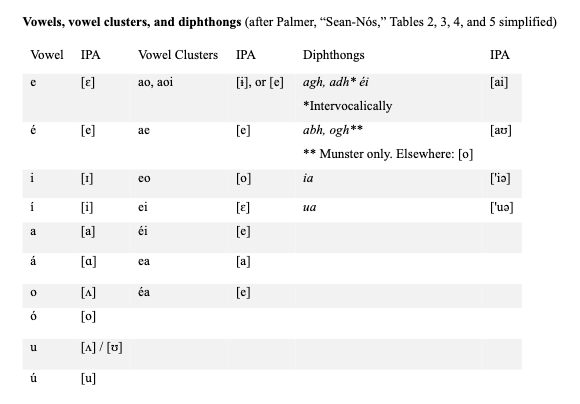
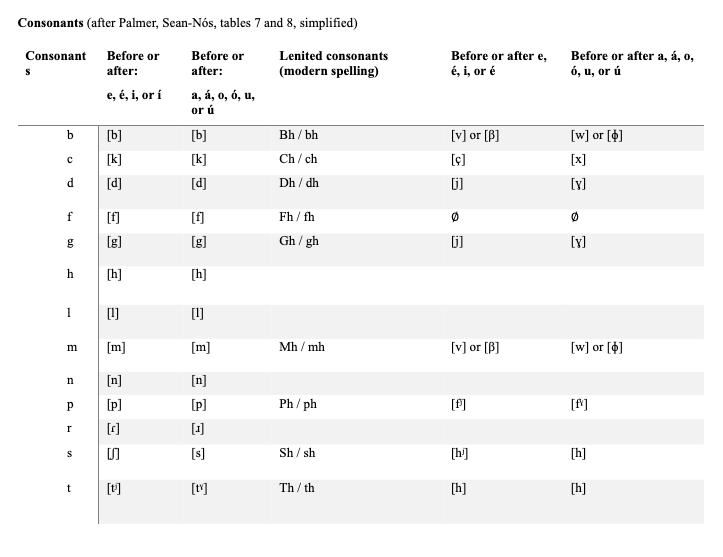

“Triple-threat … coloratura” (Opera Canada) Maeve Palmer is known for her sparkling voice and stage presence. An alumna of the Rebanks Family Fellowship and the University of Toronto Opera School, Maeve has performed with Opera Atelier, Tapestry Opera, and Chorus Niagara, among other companies. Recent roles include Valencienne (Lehar’s The Merry Widow, Highland’s Opera Studio), Aunt Lydia (Ruders’ Handmaid’s Tale, Banff Centre), and Genio (Haydn’s Orfeo ed Euridice). An acclaimed interpreter of art song and traditional Irish song, Maeve is a recipient of the Jim and Charlotte Norcop Prize in Song (UofT). Maeve holds a doctorate in Voice Pedagogy and Performance from UofT where she researched Irish traditional singing while residing as a Junior Fellow at Massey College. Currently, Maeve is thrilled to be teaching English Art Song at the UofT.
Candlelight: in search of identity by Haitham Haidar
Being an Arab immigrant in North America brings its own set of oppressive challenges that continue to ask me to assimilate and cater to a system that ultimately does not serve me or my people. I spend so much time turning my thoughts and feelings into palatable appetizers (not too much) in hopes of not ruffling any feathers, of not further giving this society reason to dehumanize us. Suddenly, I am not one, but two. I am the Lebanese-Palestinian, Arab man who was raised in Beirut under a combined sky of stars and rockets. I am also the Canadian, North American-looking, easy-going man whose English is “really good!” This division of self, this compartmentalization, is a safe space where both identities can be tucked away safely when needed. Unlike candles, these identities feel like they cannot exist while the other one is shining bright. That notion of needing to quiet one part down to uplift the other is something that brings unnecessary strife and dissonance to my world, and I aim to keep exploring an identity that contains all parts of who I am.
Identity through language
The stories we tell are windows into our humanity: They are the coffees we prepare in the morning, they are the overheard arguments on the street, they are the sound of the sea waves crashing against the coast. We use words to describe how feel and what we think.
Language is a means of expression, not expression itself, grasping for sonic syllables to make sense of how we feel and how we want to share it. Feelings are wordless, they are deep physical and soul-full rushes of heat in the body. They travel in our minds attempting to be labelled and categorized, searching for words to do their expression justice. But do we ever express our feelings or thoughts in their truest forms? Does verbalizing one’s feelings mean the same thing as expressing them? How else can one express their thoughts if not through language?
“The limits of my language mean the limits of my world.” – Ludwig Wittgenstein
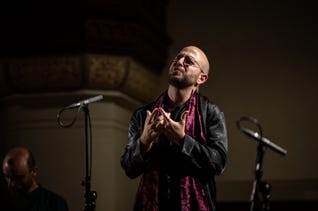
Identity through music
For those of us who grew up somewhere other than North America, our dive into classical music came from a yearning to explore belonging. Since we don’t feel like we are welcome on this geographical earth, maybe we are looking for a point of connection through music, another language. Within that, are we still assimilating as we yearn to find ourselves? What parts of us do we lose when we dive so deep into a world that was never meant to be ours? Our cultural stories become “folk tunes” or “traditional Arabic music” or even credited to “anonymous”. Is that true? Or is it only because they weren’t composed by Schumann or Debussy? Our music from our homes is rooted in generational trauma, joy, celebration, and sorrow. The music itself is coded with love letters and stories that transcend the power of the spoken word. This music continues to connect those of us living far from our lands to our families and our people.
“If a composer could say what he had to say in words he would not bother try to say it in music.” – Gustav Mahler
Identity through Zaytoun (alignment):
Zaytoun is a playground of cultures, of identities. Once separate and individualistic, these identities become intertwined, aiming to further connect with one another. Musically, it is the representation of my own personal search for belonging, for home, for a true connection to my roots. One part lives in the Western Classical music system, and the other is rooted in generations of Arab artists and thinkers.
“Zaytoun is all of these things combined. It joins the heart and soul of my Arabic roots with my love and dedication to Baroque music. Zaytoun explores the interlaced nature of Arabic and Baroque music in a way that feels new yet natural and allows us to shorten the distance between these two worlds.” – Zaytoun liner notes

As the process of producing and artistically executing Zaytoun developed, I found myself trying to label and categorize this album: is this considered “world music” or “early music”? Is it classical enough for that? Is it too out there to neatly fit into a box?
I counter all these doubts with questions like “why does it matter?” That short question alone invites me to reexamine the need to label and categorize, perhaps even to assimilate. Am I subconsciously attempting to assimilate Zaytoun into the Western canon of classical/early music? Is that an inadvertent attempt to make my cultural musical exploration more palatable to the audiences I’ve been taught to cater to?
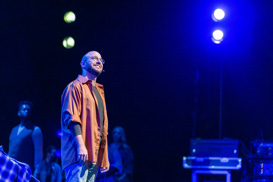
Zaytoun, the olive, small yet mighty, is the perfect connector between my two worlds rooting me in my ancestor’s wealth of knowledge and helping me expand that into a world that is finally seeing us as human.
Perhaps Zaytoun can remind us that in our differences we are very much alike.
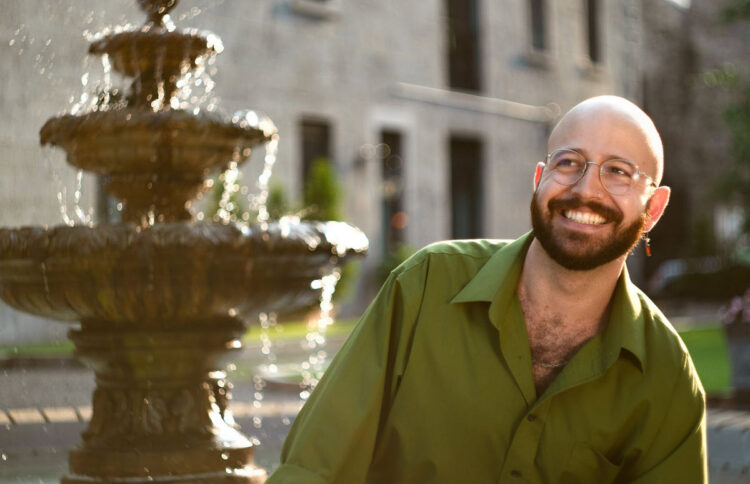
Haitham Haidar is a Lebanese-Palestinian Canadian tenor highly sought out for his musicality, “standout presence”, and sensitive storytelling. He is a proud graduate of Yale’s Institute of Sacred Music, McGill’s Schulich School of Music, and the University of British Columbia and currently resides in Montreal, Quebec. Haitham is praised for his ‘musical and linguistic versatility’ and his ‘bright’ and ‘innately lyrical voice’ and enjoys performing oratorio, opera, and chamber music across North America, Europe, and Asia.
A Brief Introduction to Yiddish Art Song by Jardena Gertler-Jaffe
Yiddish art song can roughly be divided into two categories: works that draw on folksong materials and those that use texts from the modern Yiddish literary tradition. Yiddish cultural production is diverse, and art song occupies a space distinct from theatre, popular music, and folksong– areas that have themselves been the subject of renewed study, performance, and attention. The following overview offers a brief introduction to this repertoire by highlighting representative works from both categories.
Although Yiddish has existed for over a thousand years, most of its literary output emerged within the last century and a half. This relatively short timeline reflects the evolution of Judaic practice and the multilingual nature of historical European Jewish communities. The progenitors of classic Yiddish literature, Y. L Peretz, Mendele Mocher Sforim, and Sholem Aleichem, were active during the late nineteenth and early twentieth centuries, and their work set the stage for an explosion of modern Yiddish poetry.
Settings of Y. L. Peretz’s poetry for children by Russian Jewish composer Moses Milner (1886–1953), performed by soprano Lucy Fitz Gibbon and pianist Ryan McCullough.
Modern Yiddish poetry proved to be fertile ground for art song setting. Lazar Weiner (1897, Ukraine —1982, New York) stands out as a central figure in the development of Yiddish art song. His prolific catalogue includes more than two hundred songs written for voice and piano. Although he set a wide range of poets, he was particularly immersed in American Yiddish modernist literary culture, composing songs to texts by Mani Leib, Moyshe-Leyb Halpern, and Naftoli Gross of Di Yunge (The Youth) movement, as well as Jacob Glatstein and Aaron Leyeles of the In Zikh (Inspectrovist) poets.
‘Shtile likht’ (1956) by Lazar Weiner on text by Mani Leib (1883, Ukraine—1953, New York). Performed by soprano Ida Rae Cahana, and pianist Yehudi Wyner (Lazar Weiner’s son).
Yiddish modernist poetry has been the source of continued inspiration for composers. This poetry often features writers coping not only with the radical changes in life arising from the technological advancements and industrialization of the early twentieth century, but also the alienation, isolation, and disorientation stemming from a shared history of immigration and displacement as artists fled anti-Jewish violence in Europe. Mikhl Gelbart (1889, Ozorków, Poland—1962, New York) provides a window into this world. In his song New York, setting poetry by Aaron Leyeles (1889, Włocławek—1966, New York), Gelbart captures both awe and repulsion in response to the city’s frenetic sounds and sights.
Anne Slovin, soprano and Andrew Voelker, piano performing ‘New York’ (1932) by Mikhl Gelbart.
Contemporary composers continue to expand the tradition. Alex Weiser (b. 1989), composer and leading advocate for Yiddish art song, has likewise turned to texts written by poets enmeshed in modernist literary movements. ‘Mayn glik’ from his cycle and all the days were purple sets poetry by Anna Margolin (1887, Belarus—1952, New York), a poet associated with both Di yunge and the Inzikhistn. Weiser’s musical language places Yiddish in a distinctly contemporary aesthetic, using colorful yet minimalist harmonies to foreground Margolin’s contemplative text.
Eliza Bagg, vocalist, and Marika Bournaki, pianist perform ‘Mayn glik’ (2017) by Alex Weiser.
Yiddish folksong has also served as a rich source of material for art song composition. Today, many composers find folksong materials in the audio archives of organizations such as the YIVO Institute for Jewish Research and the Milken Archive of Jewish Music. When Dan Shore composed his set of Yiddish folksong-based art songs , he turned to an archive of audio recordings made by folklorist Ruth Rubin. Shore’s work faithfully renders the melody and texts as they were sung to Rubin by Anna Berkowitz in her Montreal home. His piano accompaniment provides a beautiful harmonic foundation to the melodic material, and at times, countermelodies appear that flesh out the affective qualities and provide variation to these strophic songs.
Five Songs from Anna Berkowitz’ (2021) by Dan Shore (b. 1975), performed by Jardena Gertler-Jaffe, soprano, and Diana Borshcheva, piano. In this 2021 virtual premiere, each song on the set is preceded by the archival recording of Anna Berkowitz singing the folksong.
Other compositions using Yiddish folksong may use it only as the very basic foundation of their work. Alex Weiser describes this as a “free fragmentation” approach, in which a piece keeps only a general connection to the source folksong material but is otherwise freely composed. Aaron J. Kernis’s (b.1960) work “Farewell” (2019) exemplifies this method. Kernis draws on the instrumentation and initial melodic material from a 1909 arrangement written by Joel Engel (1868—1927, Russia), who was one of the founders of the Society for Jewish Folk Music. Kernis transforms the material into something decidedly different from the original folksong, incorporating whispering, chromaticism, and ornamental melismatic passages.
‘Farewell’ (Zayt gezunterhayt) by Aaron J. Kernis, performed by Jardena Gertler-Jaffe, soprano, Weichao Zhu, violin, and Ji Young Lee, piano.
The world of Yiddish art song is steadily growing. In a recently compiled list, over eighty works written in the last twenty years alone fall into this category, including works by Canadian composer Jérôme Blais. The source material for Yiddish art song is varied and plentiful. Singers, pianists, and composers intrigued by this brief overview are encouraged to delve more deeply into this remarkable trove of poetry and song.
A BRIEF PRIMER ON YIDDISH
Yiddish is the historical language of Ashkenazi (Eastern European) Jewry. It is estimated to be roughly a thousand years old, arising from the European period in Jewish History. Yiddish is a Germanic language written in Hebrew script, with significant borrowed linguistic components from Semitic, Slavic, and Romance languages. Historical Jewish language communities have generally been at least tri-lingual. In most pre-Holocaust Eastern European contexts, Yiddish would have been spoken in the domestic sphere as a Jewish secular language. In contrast, biblical Hebrew would have been used for religious study, and secular, non-Jewish language might have been reserved for communication with non-Jewish folk.
On the eve of the Second World War, Yiddish was the third-most spoken Germanic language in the world. More recently, UNESCO has described the language as “definitely endangered”. The reasons for this are manifold, but include the rise in prominence of Modern Hebrew, which arose with Israeli nationalist efforts, the suppression of Yiddish language and culture in Soviet Russia, and a strong internalized push towards assimilation in Jewish diasporic communities. Still, Yiddish survives. Yiddish is spoken as a vernacular in the highly insular Hasidic communities around the world. And, there are many people, including myself, who did not learn Yiddish at home despite having parents or grandparents who spoke the language, and who have immersed themselves in the study of Yiddish as a way of celebrating and continuing the Jewish diasporic culture.

Canadian/American soprano Jardena Gertler-Jaffe is a multi-faceted artist and scholar. Jardena’s recent performance work includes singing the roles of Krystyna Zywulska in Jake Heggie’s opera Two Remain, Marzelline in Beethoven’s Fidelio, a recital inspired by the life of Alma Mahler with pianist Erika Switzer, and workshopping the roles of Gitl in Dan Shore’s Greeners and Thea in Danika Loren’s Hedda. Jardena made the Canadian premiere of Alex Weiser’s Pulitzer-nominated set and all the days were purple, and the world premiere of Dan Shore’s Five Songs from Anna Berkowitz, works that also align with her love of and interest in Yiddish language and culture. She holds music degrees from the Bard College Conservatory (MM) and the University of Toronto (BMus). Jardena is an alumna of Bard Summerscape and Sarasota Opera’s Apprenticeships, the Britten-Pears Young Artist Programme, and the Association for Opera in Canada Emerging Artist Fellowship. Jardena is a PhD student in Music Performance at New York University, fully funded by a competitive Steinhardt Doctoral Fellowship. Jardena earned her MA in Ethnomusicology from the University of Toronto. Jardena has been on the staff of the art song champion organization Sparks & Wiry Cries since 2020.

Tsanko Tsankov’s “Жениш ме, Mамо, годиш ме” (“Mother, You Are Giving Me Away”) by Theodora Nestorova
Soprano Theodora Nestorova and pianist Margarita Ilieva’s performance of this art song recorded at the Bulgarian National Radio.
“Жениш ме, Mамо, годиш ме” / “Zhenish me, Mamo, Godish me” (“Mother, You Are Giving Me Away”) is a rarely heard art song by Tsanko Tsalov Tsankov (1899-1967)—a Bulgarian composer and musical theorist whose life bridged Europe and Canada. Despite facing sociopolitical and familial persecution during the Communist regime, Tsankov became one of Bulgaria’s most influential musical leaders: a conductor of the Vienna Opera (1942), rector of the Bulgarian Music Academy (1940–43), and co-founder of the Society of Bulgarian Composers (1933). Rooted in the colours of Bulgarian folk music, this song exemplifies the speech-like phrasing typical of early 20th-century modernism, framed by modal lyricism and asymmetrical phrasing. This reflects the period’s synthesis of Western European art music techniques with Bulgarian folk modalities (rich harmonic and timbral textures with uneven metres and intricate rhythmic patterns). After World War II, Tsankov’s immigration to Ontario (where he taught as a professor) with his wife, soprano Karin Mayer, and his daughters, one of whom was concert pianist Dolya Tsankov, situates this musical work within a broader transnational legacy. As Tsankov’s great-niece, I present this heritage piece as a culturally significant artifact to Canada’s expanding repertoire of diasporic art song traditions.
Bulgarian-British-American voice scientist, pedagogue, and performer Theodora Ivanova Nestorova serves as Assistant Professor of Speech-Language Pathology at Viterbo University. With award winning published research and recorded albums, Theodora serves as Associate Editor of the NATS Journal of Singing Mindful Voice column. Theodora is a former Fulbright Scholar and holds a Ph.D. from McGill University, M.B.A. from Global Leaders Institute, M.M. from New England Conservatory, and B.M. from Oberlin College & Conservatory. More at theodoranestorova.com.
Editor’s note: Readers, do you have a little known song cycle you’d like to share with the Art Song Canada community? Write to us at [email protected] to be featured!
Please consider making a contribution to the Foundation today.
The shining of gold, dark
and blinding bright by turns,
the sun falling from blue clouds
into the ocean and noon and dawn,
all unfolded and held up, carried, offered on motionless
petals, fingers, rays, unchanged
through all the day’s seasons
and the night under spectral
low-watted garden bulbs.
– from A.F. Moritz’s “Marigold,” featured in James Rolfe’s Wound Turned to Light
Happy September, readers! In this issue, we close off our Canadiana summer by looking at Canadian works that are coming to define the first quarter of the 21st century. James Rolfe—the Juno-nominated Canadian composer known for his operas The Overcoat, Swoon and Aeneas and Dido, as well as his many songs—takes us inside the eclectic mind of a composer in an article with references ranging from Hildegard Von Bingen to Toru Takemitsu, Leonard Cohen, Edgard Varèse, and the Canadian metal band The Dayglo Abortions. Following James’ piece, the mezzo-soprano and co-founder of Musique 3 Femmes, Kristin Hoff, offers an intimate look at Ana Sokolović’s Love Songs; a piece which pushes the boundaries of art song and opera and is quickly becoming a 21st-century classic. Finally, the label-defying soprano-composer-artist and creative force Danika Lorèn tells us how art song has shaped their spirit, both as an interpreter and as a creator.
Once you’ve finished reading all of that, keep scrolling to read our “Introducing…” column from Montreal-based soprano Marian Guay, who offers us a bilingual introduction to the 19th-century composer Liza Lehmann’s Bird Songs.
As always, we hope this issue inspires you and reminds you of the transcendent, boundless potential of art song. If you enjoy this issue, please consider donating to support the Art Song Foundation of Canada’s bursary programs for young Canadian singers and pianists.
— Sara Schabas, editor
Filth, Joy, and Singing by James Rolfe, composer, August 2025
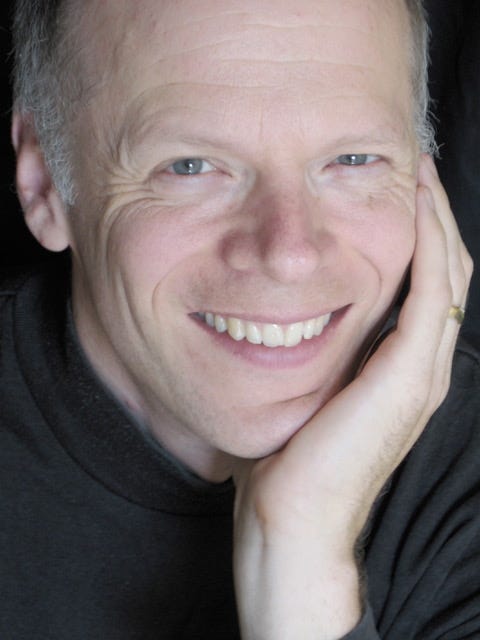
In July 2025, I acted as composer-mentor for Toronto’s Tapestry Opera Librettist-Composer Workshop—better known as the Lib Lab—led by Artistic Director Michael Mori. Four composers and four writers took turns pairing off with one another. The writer had 24 hours to create a libretto for their composer, who then had 24 hours to compose a 5-minute operatic scene. The four rounds were spread over ten days; each round was launched with a different prompt.
On the first morning, Michael and I both read an article in The Guardian on Hildegard von Bingen, the 12th-century German nun, composer, homeopath, and mystic.1 From an early age, she experienced visions, possibly caused by migraines. The image that stayed with me was the voice of God telling her “O fragile human, ashes of ashes, filth of filth, say and write what you see and hear”. It’s a beautiful metaphor for creation, for trusting in the unexpected places your imagination will take you. But I confess I was much more excited by the word “filth”: such a resonant, powerful word, and so dissonant with the image of God’s voice. I thought of my grandson who, not yet three years old, ran into the back yard and shouted “Poo!” at the top of his lungs. Who knows what he was thinking? I imagine he felt joy, a joy in his power to create and re-create his own filth—in psychoanalytic terms, a metaphor for the creative process. And perhaps the poo-triggered explosion of joy was so violent that he had to give voice to it. He’s learned that adults devote a lot of attention to keeping him clean, and that filth is shameful and naughty and funny, magnifying its psychic energy. And he’s young enough to have a very expressive (and very powerful) voice.
James Rolfe’s “Burning In This Midnight Dream” Wound Turned to Light, poem by Louise Halfe, sung by Jeremy Dutcher, piano Lara Dodds-Eden.
And so we had our second prompt: filth. The four pairs responded with wildly varied scenes, ranging from hilarious to absurd to dark. In comparison with the first assignment, there was a sense of liberation and loosening up. Perhaps the collision between filth and purity released dramatic and operatic energy.
Classical musicians are taught to purify: to make our art distilled, timeless, to rise above the mundane. Yet singers learn that pure voices can also get boring, that emotional connection lives in “the grain of the voice”. (There is a Roland Barthes essay of the same name, lovingly describing how certain old recordings of Schubert song cycles could touch his heart in a way that the more celebrated Fischer-Dieskau couldn’t.) A bit of grit can make a voice more real, more connected to the lyrics. For their part, composers learn how asymmetry and awkwardness can draw in the listener; if musical sailing is too smooth, we fall asleep at the rudder. To quote a Canadian composer, “There is a crack, a crack in everything. That’s how the light gets in.” (Leonard Cohen, from his song Anthem.)
“Marigold” from James Rolfe’s Wound Turned to Light, poem by A. F. Moritz, sung by Alex Samaras, piano Lara Dodds-Eden, video by Juliet Palmer.
Some musicians aren’t afraid to roll in the filth. I think of the Victoria, BC punk metal band The Dayglo Abortions and their album Two Dogs Fucking: their way of shouting “Poo!”. When I first heard the music of Edgard Varèse, I disliked its extreme registers, dissonances, and noises. Yet I couldn’t get it out of my head. Varèse said that he admired awkwardness in music, and now I see his point. The listener stumbles over it, shakes their head, pays attention; attention is a precious thing in music. Hank Shocklee, the producer behind the rap group Public Enemy’s iconic albums from the late eighties and early nineties, was another Varèse fan. He famously said that the group aspired to create the kind of sound world that musicians would hate. Another shout of “Poo!”
On the other hand, some of my favourite songs are quite pure and distilled: Dowland, Purcell, Mozart, Schubert have all crafted exquisite gems that sound effortless and just right. Yet their music also tells of pain and yearning—as do the blues, Reggae, soul, folk and pop songs. Perhaps these songs in their beauty are telling us that our anxieties and longings and disappointments are beautiful too—that we can accept and hold them as part of us, alongside our happier selves. It’s a path to becoming fully alive. Gardeners know that filth—manure, compost, worms—nourishes a vital garden.
And perhaps it’s neither filth nor purity alone, but the dialogue between them that feels more real, modeling the ambivalence and paradoxes we struggle with every day. The Japanese composer Toru Takemitsu said that music, like life, is about reconciliation. Music can embody how our polished, accommodating outer selves and our inner filthy, vital selves can live in harmony.
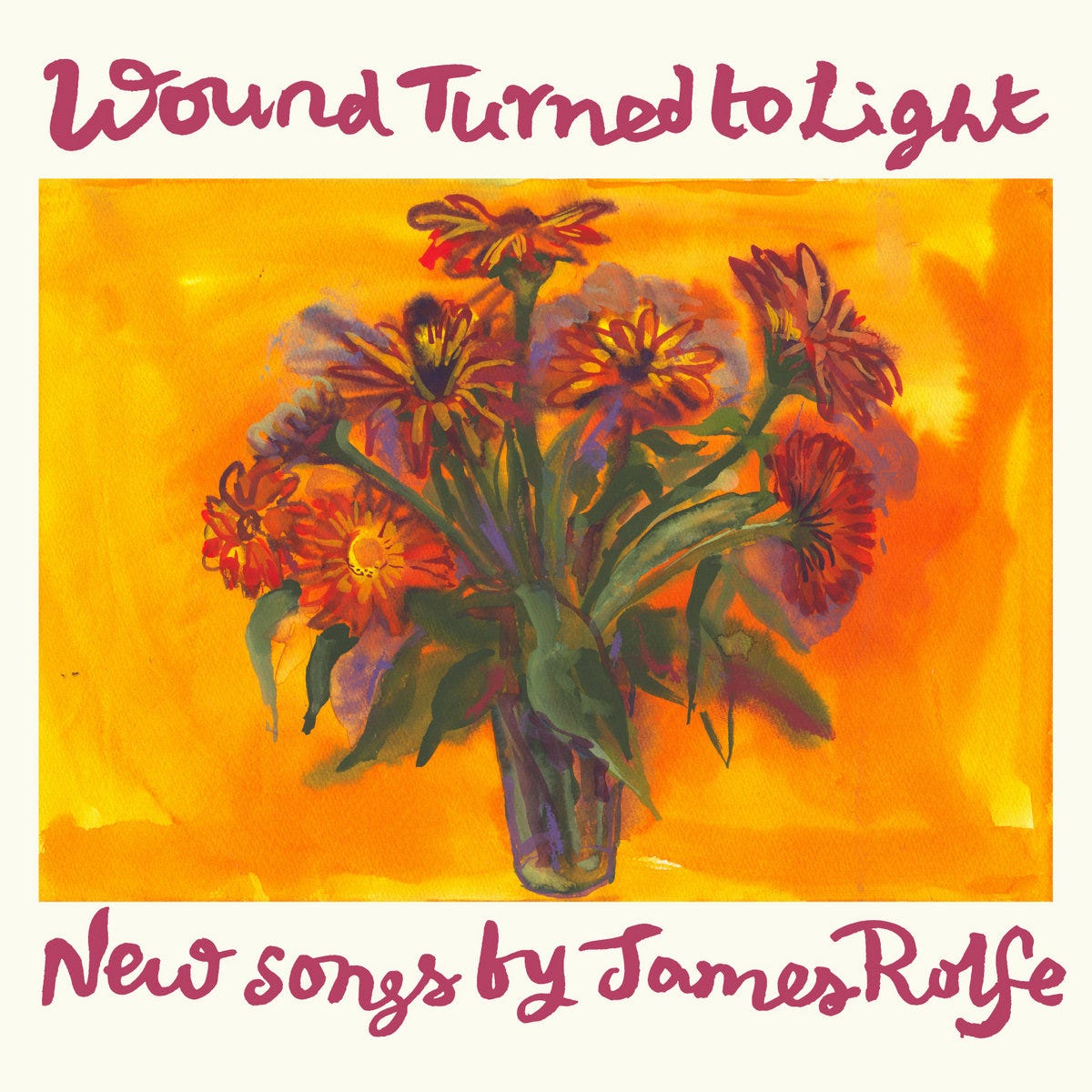
James Rolfe is a Toronto-based composer. His recent adventures in art song include the 2025 Juno-nominated recording of his song cycle Moths (words by André Alexis, with baritone Elliot Madore and pianist Steven Philcox, Canadian Art Song Project, Known to Dreamers, Centrediscs CMCCD 34224), and the CD Wound Turned To Light, a collection of songs to lyrics by Canadian poets (2023, Redshift TK540). Upcoming premiere recordings include O Greenest Branch with soprano Sara Schabas and conductor David Fallis, and Six Songs with tenor Colin Ainsworth, pianist Laura Loewen, and Pacific Opera Victoria. In the works is a cycle of songs to lyrics by poet Sophie Herxheimer.
Inside Ana Sokolović’s Love Songs by Kristin Hoff, mezzo-soprano
Love has always been and always will be the inexhaustible inspiration of human creativity. Love follows us everywhere; love is the cause and the result. Love evokes the strongest human emotions: love has led people to wars, but it has also inspired the most beautiful poems. All the languages sing about love the same way. Every happiness, worry, sadness and tenderness is similar to another.
– Ana Sokolović on Love Songs
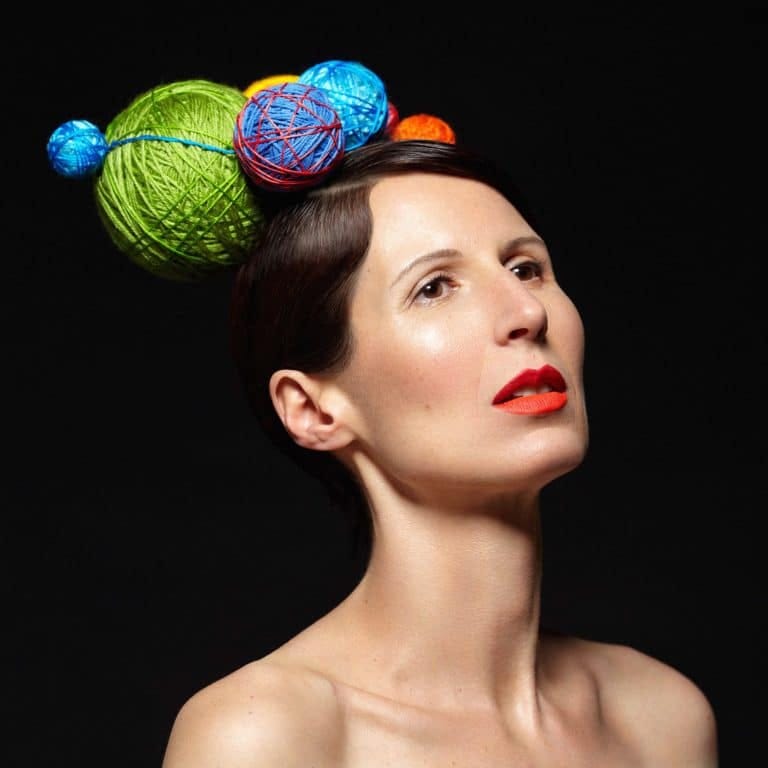
With texts in one hundred languages, Love Songs encompasses fourteen vignettes that tell different stories of love. The piece demonstrates that no matter what our language, our time, our culture, or our upbringing, human feelings about love are universal. In a past interview I had with the composer, Ana described how the process of reducing so many feelings and angles of love down to so few poems was a very challenging one. To give an idea, the first reduced collection of texts contained fifty love poems, which the composer then categorized into a dramatic arc before reducing to the final count of thirteen poems.
While Love Songs doesn’t follow a traditional linear narrative, the piece traverses five larger themes. These include pure love, tender love, child’s love, mature love, and love for a person we lost, with poems in English, French, Serbian, Irish, and Latin. In addition to the main poems, the piece begins with a dove movement and most of the thematic sections also have a transitional dove interlude. These doves are where much of the linguistic fun happens, as they move through the words “I love you” in one hundred different languages. Aiming to respect tonic accents of languages within her musical structure, Ana crafted each dove to set up an atmosphere that prepares for the upcoming section. The doves offer energy and levity to contrast with the main poems and help to propel the piece forward, transitioning us into the character of the coming section. And why the name doves, you might ask? Well, Ana asks, what is the first thing we think about when we see a pair of doves?
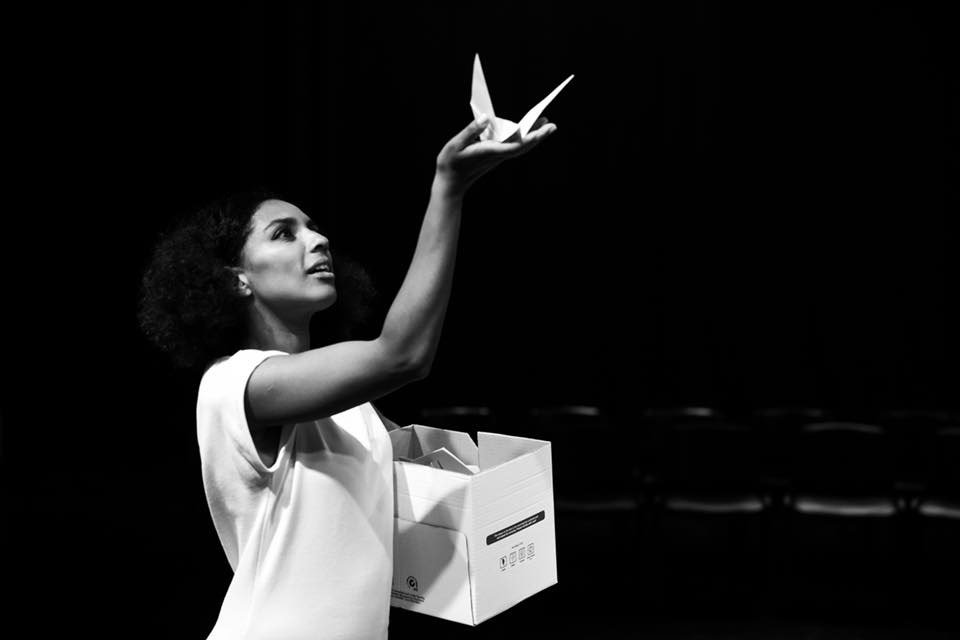
The last section of the piece, love for a person we have lost, is the only section that isn’t preluded by a dove movement. Ana notes that this part of the piece is already so emotionally full that there is no space to say I love you anymore. Instead, it is the final poem of the previous mature love section that moves us into the tragic ending of the piece. Ana chose to leave this poem—“How do I love thee” by Elisabeth Barrett Browning— as a pure recitation, saying that no music could add anything to her words, which bring us so effectively from light and joy into the imagining of loss. Namely, the final line of the poem is:
…I love thee with the breath, Smiles, tears of all my life: and if God choose, I shall but love thee better after death.
The ensuing final section of loss incorporates two movements. The first features the text Ma morte vivante by Paul Éluard while the second sets two Latin Carmen poems by Gaius Valerius Catullus, which were written over two thousand years ago. In Ma morte vivante, the composer leaves space for the performer to decide the degree of interiority or exteriority through which to express their grief, offering an intertwining of crying, speaking and singing the words in an utterance that leaves us feeling like the pain is crawling up our skin. For the final movement, the Carmen poems are voiced by a boy at the tomb of his brother who was drowned and washed into the sea. Akin to the composer’s Balkan heritage (Ana is Serbian), here tradition requires him to publicly mourn his brother, to honour him at his funeral rites. But the young man can barely squeeze the sounds out of his anguished body, and just manages it before the piece culminates in a cycle of his gradually calming breathing.
And that is how Love Songs ends. After traveling through ecstatic joy, tender love for a child, joyful play, sensual desire, and deeply-rooted, mature love, the piece closes with a feeling of very deep sorrow. Having performed the piece many times now, I’ve had several audience members ask me why it ends in such tragedy. As Ana describes it, the piece culminates with a scream that connects us to the pure scream and birth of joy in the first poem of the piece, She. She goes on to say that just like there is a scream at the beginning of life, there is also a scream at the end of life. So while the piece may end in tragedy, because of the cyclic nature of life, we know that there will be another birth scream coming again soon. That is the unspoken hope we are left with as the piece comes to its painful close.
It is no small feat to learn Love Songs, just as it is no small feat to perform it. I took on the challenge in 2013 with support from the Quebec Arts Council (CALQ) and with guidance from the inspiring vocal artist and contemporary music specialist, Fides Krucker. A tour-de-force, the work truly was a beast to learn, taking several months to wrap my mouth and body around and another several months to memorize. That said, as with many very challenging artistic experiences, the reward for the work runs very deep. It is a rare privilege to stand alone on stage for forty-five minutes, moving fluidly through a rapid succession of characters, languages, and emotional states—each one a different facet of the shared human experience. The energy required is nothing short of immense, but the satisfaction is enormous. In the past twelve years, I have performed the piece a total of fourteen times in eight different cities, three provinces, and on two continents.
A Serbian-Canadian work, Love Songs has been performed in Canada, Slovenia, Croatia, Czech Republic, the USA, Holland and France. According to the composer, there are a total of eight singers who have learned and performed the entire solo piece, and four others who performed the voice/saxophone version. Additionally, the Festival d’Aix-en-Provence presented the work divided up for a collaboration of seven singers. Similarly, as part of Musique 3 Femmes’ activities, I coached musically a group of young singers for a 2021 production by the University of Ottawa School of Music, wherein the piece was divided up for eight singers and presented in an elegant and impactful (socially-distanced) staging by Anna Theodosakis.
So much is possible with Love Songs. When I asked Ana Sokolović what she likes particularly about this composition compared to her others, she said that what is special about this piece is that it is always a new and different story with each person who performs it. She speaks affectionately about the artists who have committed to learning the piece, remarking that the story is deeply affected by everything about who that performer is in the moment that they perform it. She says, love is abstract just like music is abstract. Scientists, poets and artists try to explain love, but they don’t succeed. We may never be able to put our thumb on love, but we can feel it, express it, live it, and we can definitely sing about it.
2025 winner of the Mécénat Musica Prix Goyer, mezzo Kristin Hoff has performed with Vancouver Opera, Tanglewood, Carnegie Hall, Met Chamber Ensemble, Vancouver Symphony Orchestra, Boston Pops, and Festival de Lanaudière, among others. Noted as a performer for her “appealing clarity and emotional heft” (New York Times), Kristin is also Artistic and General Director of Musique 3 Femmes, a Montreal-based contemporary opera company focused on new opera creation by women.
A Spirit Shaped by Song by Danika Lorèn, soprano & composer
Art song is not only a musical expression, but also an intellectual and philosophical one. Preparing to perform works of this depth requires more than technical skill; it demands reflection, interpretation, and a search for meaning that goes beyond the notes on the page. To embody a song is to step into dialogue with a poet, a composer, and centuries of ideas about love, mortality, nature, and the human spirit. In many ways it feels like my spirit has been shaped by song, since it has been a huge part of my life since I began taking voice lessons at age seven. From competing in every possible category year after year at my local music festivals, to creating and performing art song pastiche shows, it is safe to say that art song has greatly influenced my life as a performer. I suppose it is also no surprise that it now forms the backbone of my work as a composer.
Eight years ago, I began to compose in a serious sense, and I put together my first album of 21 songs: First Fig Songbook. This songbook contains the earliest versions of my First Fig song cycle, which was my earliest full cycle. I began writing the cycle in 2016, but since self publishing in 2018, I have taken a note from Claude Debussy’s methodology and have allowed myself to edit these songs as I have grown. I haven’t made any major rewrites, but have made additions and refinements as I have lived with and performed the cycle. This has enabled the pieces to grow with me and also keeps me connected to a version of myself that was so precious and youthful!
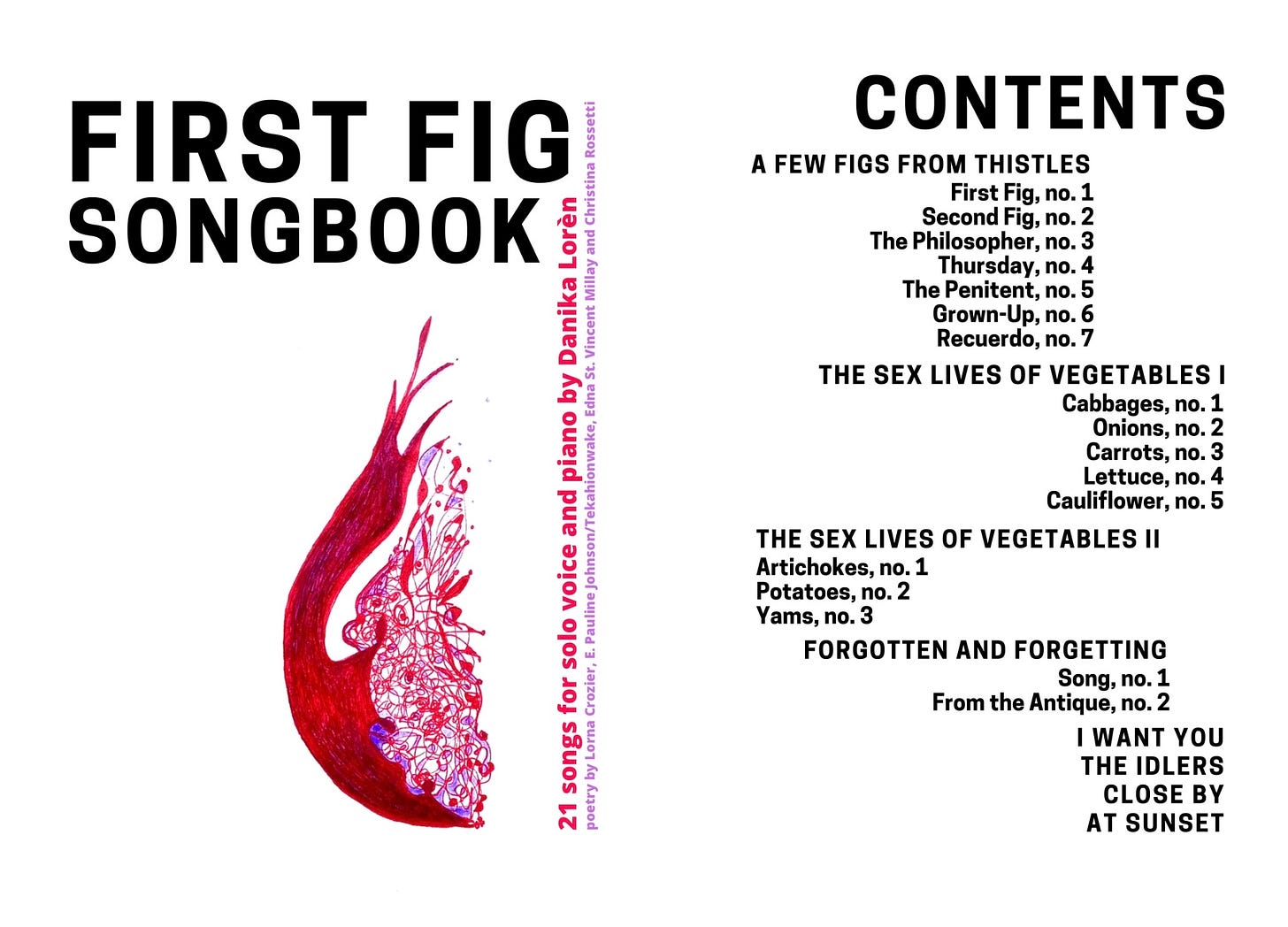
When I first read Millay’s poetry, it was like I unlocked a voice inside myself that was ready to scream! Her writing in A Few Figs from Thistles is at once lyrical and unflinching, blending a sweet sentimentality with a sharp, modern candour that laid bare the intensity of my experience as a young woman in a big city trying to find her way. Millay’s title references the biblical proverb “Do men gather grapes of thorns, figs from thistles?” (Matthew 7:16). This proverb implies that one can’t expect good fruit from a bad tree, or good actions from a corrupt heart. Of course, Millay is being deliberately provocative, suggesting she can get something rich, sweet, and beautiful from that which appears to be barren or prickly. She is questioning completely the concept of sin as it has been projected onto womanhood throughout history.
The first piece of the most recent version of cycle is, perhaps confusingly, Second Fig. This short poem sets the tone for the cycle: ”Safe atop the solid rock the ugly houses stand / Come and see my shining castle built upon the sand”. Starting with this invites the listener to join the singer as we playfully dig into life’s muck and make something as beautiful and protective as a castle out of it. In the second song of the cycle, The Penitent, the poem begins with the dilemma of a “little sorrow, born of a little sin”, but by the end of the poem, Millay comes to a liberated conclusion: “if I can’t be sorry, why, I might as well be glad!”
From this liberation comes a fiery and fairly flippant rejection in the third song of the cycle: Thursday. This song is an ode to the beauty of learning how to say “no” instead of appeasing a needy lover. Thursday is written in a range where, in order to get clarity in the text, the voice can’t really be too tender or precious. It is bright and inviting but also a bit sharp. The piano part ends with a kind of “womp, womp” motif, with a few crunchy minor seconds to sound like a double bass that is losing its tuning, much as this lover has lost their lustre. I think of this song as one side of a coin, and the next song, The Philosopher as the other side of the coin. The vocal melodies begin nearly identically, though in different keys and with contrasting piano parts. And as dismissive as Thursday is (“And if I loved you Wednesday,/ Well what is that to you?/ I do not love you Thursday,/ So much is true”), The Philosopher is sweet and sincere, almost dumbstruck by the situation of an undeniable chemistry with an unexpected lover. The piano is mostly tender and sensual, but with a sharper, repeated-note motif to symbolize the nagging of that chemistry that is undeniable.
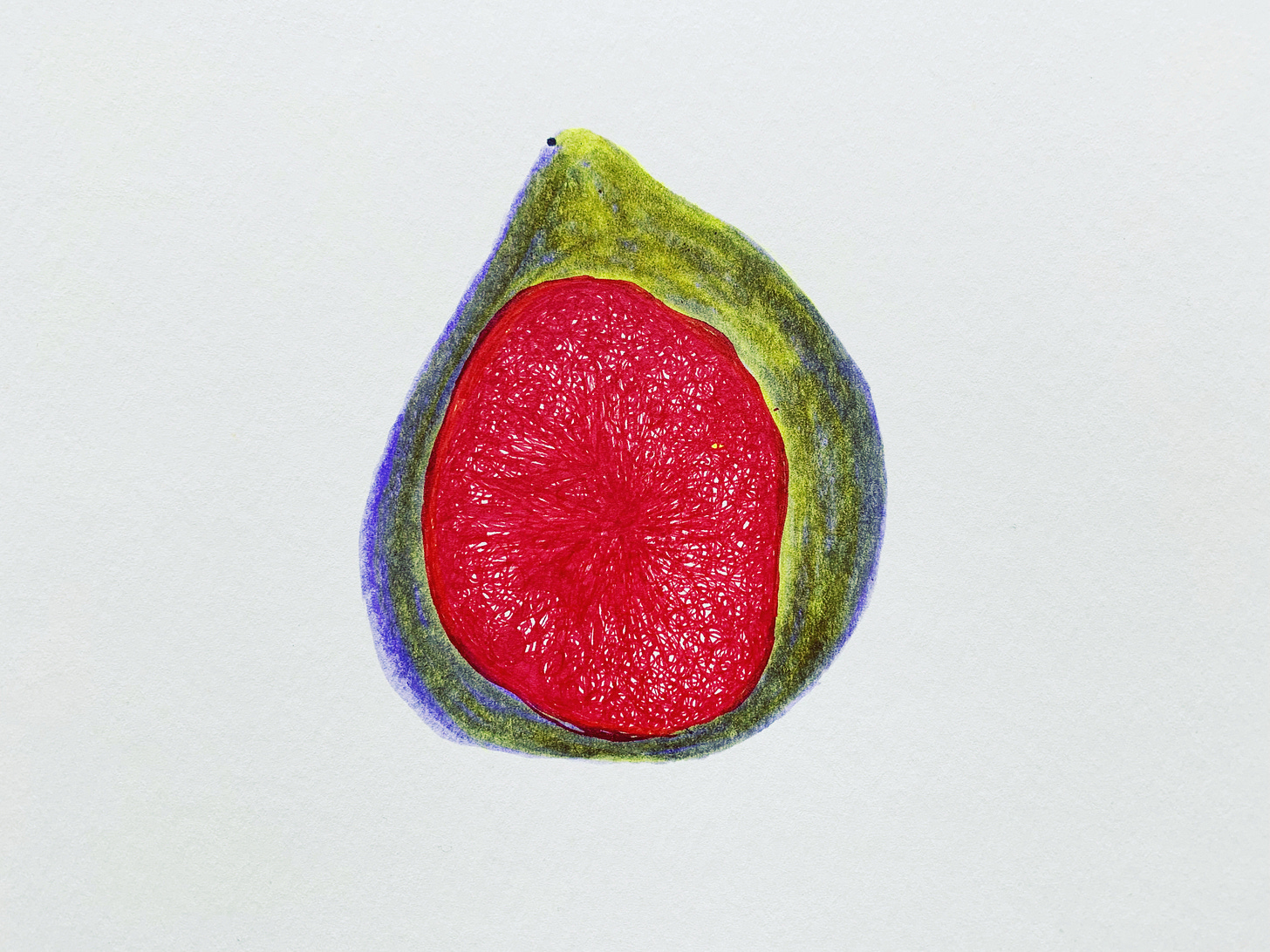
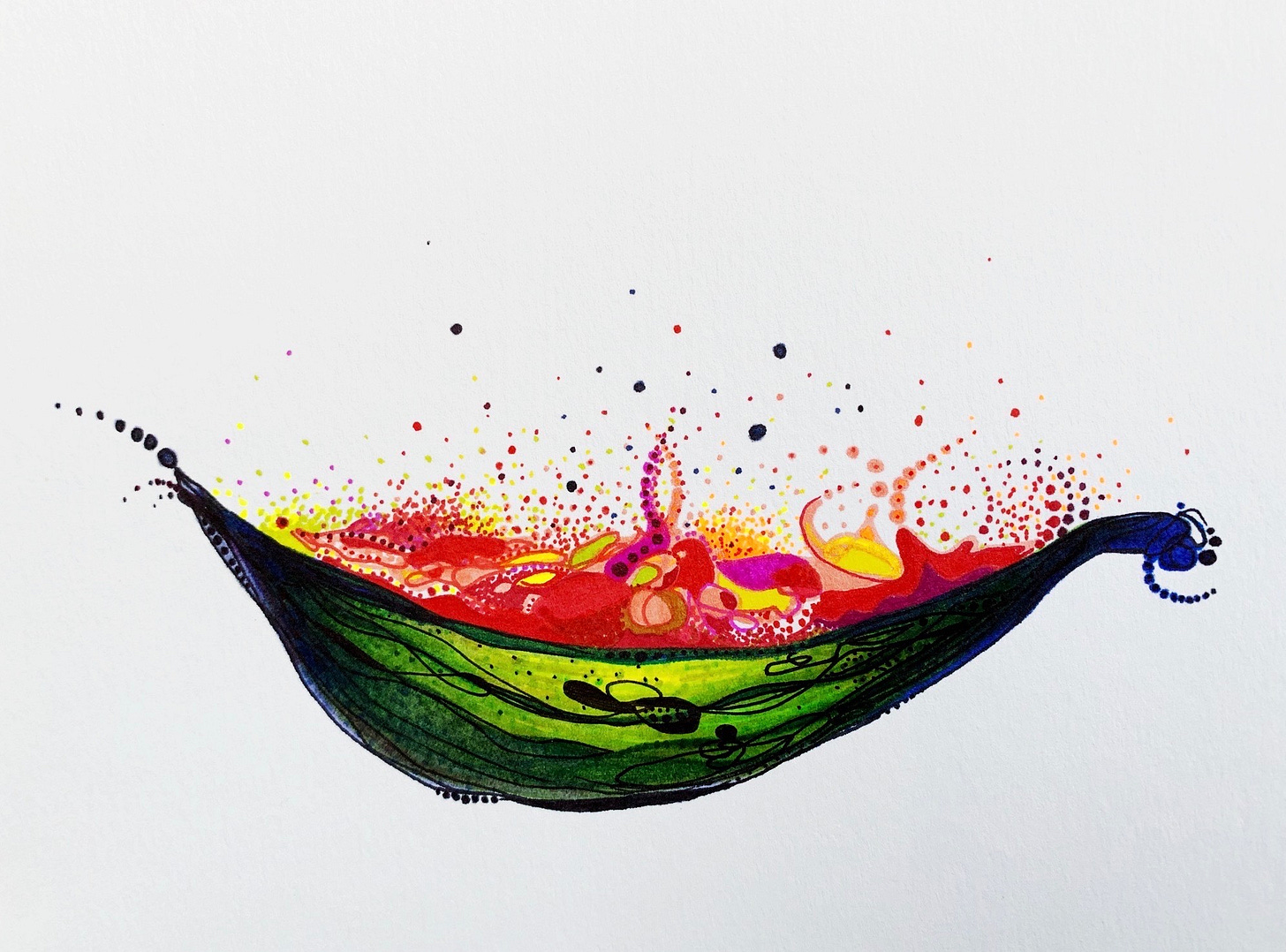
Midnight Oil is a more recent addition to the cycle, first released in my album MNSNGBK. Its original format is a round for four voices, but I have also written a vocal solo version. The harmonies in this round are quite crunchy and unpredictable, only coming together for a resolution in the final chord when all verses are sung/played together. It is a bit of a party anthem:
Sheet music and recording of Midnight Oil by Danika Lorèn, 2021 (recorded/mixed by Adam Harris)
Translation: I’ll sleep when I’m dead! Ah, youth. This is another moment where this song is one side of a coin and the following song, Grown-Up, is the other. Midnight Oil is a rebellious celebration of youth, and a willful ignoring of time’s control over us, whereas Grown-Up centres around the horrific notion of entering a phase of life where you prefer to go to bed…early (scream!). The fear of a domesticated adulthood was certainly something I related to when I wrote this cycle; now the performance on this piece is much more campy, over-the-top melodrama, and I have added a bloodcurdling scream to the final section (this is not written into any published version, but if you are performing these works and know the technique of screaming, feel free to let it rip!).
Grown-Up performed by Danika Lorèn and Stéphane Mayer, 2023 (recorded/mixed at Nobel Studios)
The next song of the cycle, Recuerdo is one of my favourites, and has been the star single of the cycle, having been performed around the world by many other singers. Most special to me was Georgia Burashko’s version (arranged for baroque ensemble) that toured around the Netherlands with Dutch Classical Talent in 2024. I also had the honour of recording the first version of the piece with Deutsche Grammophon after winning the DG prize in the Stella Maris competition.
Recuerdo performed by Danika Lorèn and Stéphane Mayer, 20 (recorded by Deutsche Grammophon)
The song was one of those that came to me in a fit of inspiration, immediately after reading the poem for the first time. It was also the first piece of the cycle that I wrote. It is the epitome of a youth-soaked love song. The tonal language of the song is vibrant and a rhythmic motif taken from the first line of text propels the song throughout. The language is not too flowery, just sincere and dripping with the energy of a first date that lasts until the next day. It is just one of those perfect poems:
I love this final stanza: it is morning now, the anticipation of the date has long left us, our lusty adrenaline has depleted, and we are nourished, keeping just what we need for now and paying the rest forward. The denouement of our love is fruit that we will pass along and nurture the rest of the world with. How sweet.
Finally, the cycle ends with the poem First Fig. One of my favourite “fun facts” about this poem is that it originated the metaphor of burning the candle at both ends, which essentially influenced the term being “burned out”. The wildness of youth and all of its paradigm shifting realizations have washed over us, and we are exhausted! Or should I say extinguished. This song holds a gentle grief in it. It isn’t a mourning over one’s death, but a mourning of youth once we turn the corner into adulthood. There’s no going back, no unburning of the candle. But, Millay doesn’t write this poem in despair! Rather, she addresses both friend and foe to reminiscence about what a very lovely youth it has been. Personally, I chose to take this reminiscing a step further, and now have a tattoo of my drawing of Millay’s double-ended candle on my forearm:
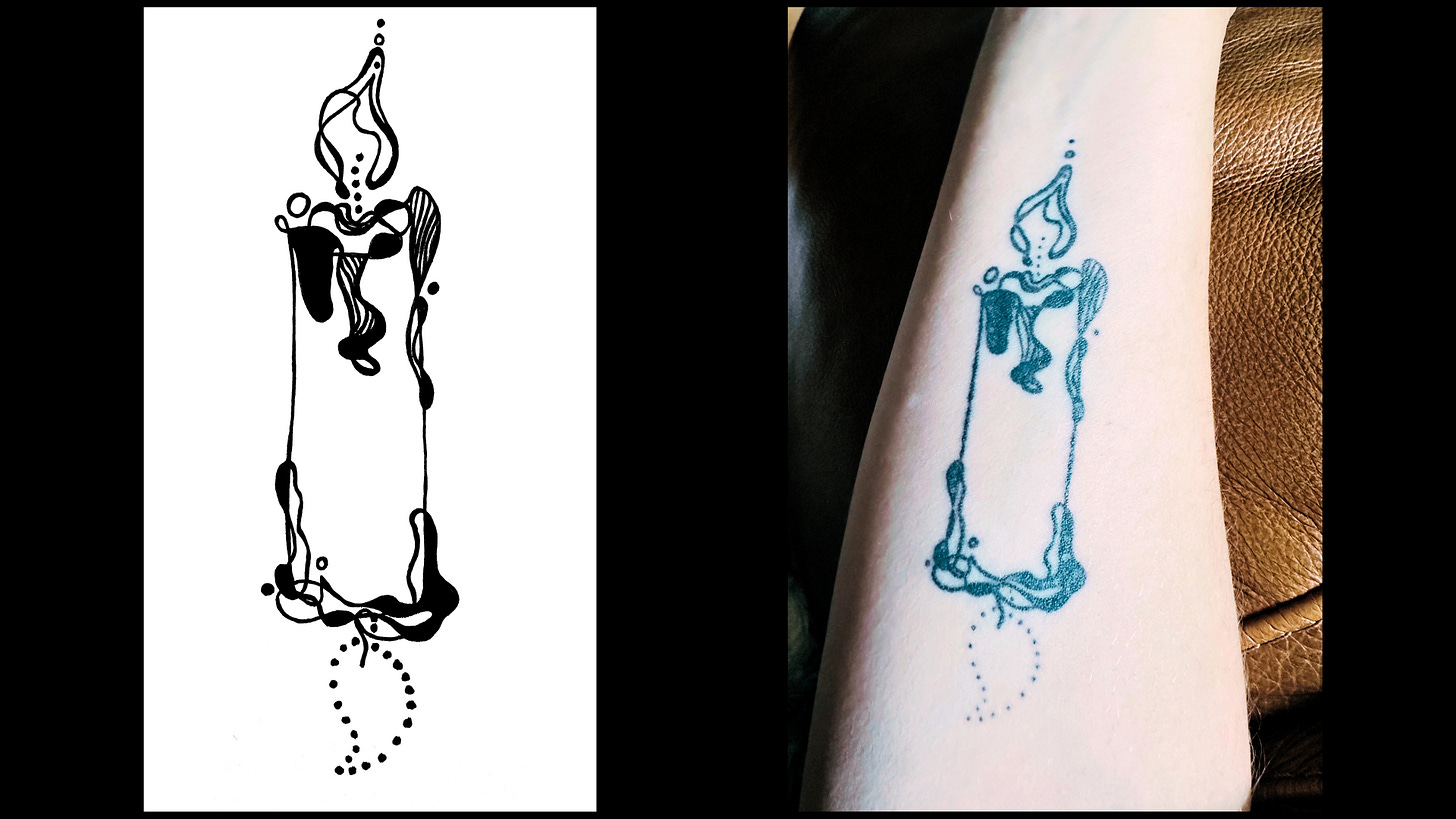
Thank you for spending this moment of reflection with me, and thanks to the Art Song Foundation of Canada for giving me this opportunity to share. I am really lucky that I have lived so much of my life through song, and that different versions of myself have been able to exist through these different versions of my work. The most recent version of First Fig is featured in my concert film UNBECOMING, along with two of my other song cycles: Tell Everyone and a new version of Sex Lives of Vegetables called SEX LoV 123. These three cycles are the works of my own that I have performed the most, and they feel like touchstones for my own artistic journey. Each one epitomizes an important pillar of self-growth, some philosophical cracking-open of my worldview, and together they form a kind of musical self portrait.
UNBECOMING will be available to watch online until September 9th, and you can find more information here, or purchase your pay-what-you-want access pass here. The film will be online until September 9th, and I will perform the first live public version of the show on November 15th in Waterloo with NUMUS (tickets here) with a guest appearance by the one and only Guy Few! Finally, for more information on my work past, present and future, feel free to visit DanikaLoren.com!
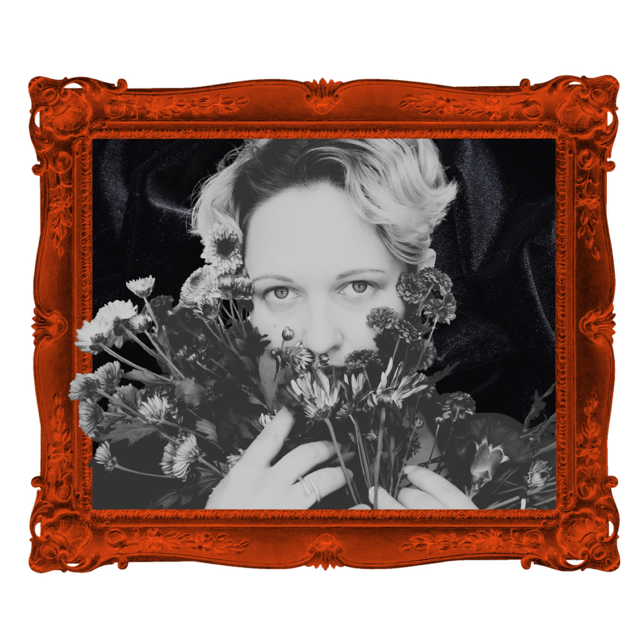
Danika Lorèn is a Toronto-based soprano and composer whose work blends classical tradition with contemporary innovation, earning acclaim for their expressive and theatrical performances. Their compositions have been showcased across Canada—by the CBC, Canadian Art Song Project, Canadian Opera Company, and more—and internationally at venues including National Sawdust, Muziekgebouw aan’t IJ, Leeds Lieder Festival, and Wigmore Hall.

Liza Lehmann’s Bird Songs by Marian Guay, soprano
Marion Guay, soprano, and Benjamin Kwong, pianist, performing Lehmann’s Bird Songs.
Version française
Née en 1862 et décédée en 1918 (curieusement, les mêmes dates que Claude Debussy), Liza Lehmann est une soprano et une compositrice anglaise. Elle entreprend une carrière de 10 ans en tant que chanteuse interprète en 1885 qui prendra fin en 1894 lorsque qu’elle se marie au compositeur et artiste Herbert Bedford. Elle se concentrera dorénavant sur la composition de pièces vocales qui connaitront un franc succès au cours de sa vie.
Lehmann sera surtout connue pour ses cycles de chansons, souvent à caractères charmants, humoristiques et parfois mélancoliques, notamment In a Persian Garden, The Daisy Chain et Bird Songs. Ce dernier a été composé en 1907 sur des paroles apparemment écrite par Alice Sayers, la nourrice de la famille Bedford. Chaque pièce de ce cycle à le nom d’un oiseau faisant parti du paysage sonore et champêtre britannique. Lehmann nous transmet ainsi ses souvenirs de temps heureux dans la campagne anglaise.
English version
Liza Lehmann, a soprano and English composer, lived from 1862 to 1918 (curiously, the same dates as Claude Debussy). She undertook a ten-year singing career beginning in 1885 which ended when she married the composer and artist Herbert Bedford in 1894. From then on, she concentrated on composing vocal pieces which achieved great renown during her lifetime.
Lehmann is best known for her song cycles which contain a charming, humorous, and at times melancholic character, notably In a Persian Garden, The Daisy Chain, and Bird Songs. The latter, composed in 1907, is set to texts apparently written by Alice Sayers, the Bedford family’s nursemaid. Each piece in this cycle is named after a bird that forms part of the British rural soundscape. Through these lovely pieces, Lehmann conveys her joyful memories of her time spent in the English countryside.
Marian Guay is a versatile soprano based in Montreal. She holds a bachelor’s degree in classical voice from McGill University’s Schulich School of Music, and is currently pursuing her master’s studies at the Conservatoire de musique de Montréal. She also teaches voice at the École de musique Vincent-D’Indy of Montreal.
Editor’s note: Readers, do you have a little known song cycle you’d like to share with the Art Song Canada community? Write to us at [email protected] to be featured!
Allan, Jennifer Lucy. “‘The perfect accompaniment to life’: why is a 12th-century nun the hottest name in experimental music?”. The Guardian, 15 July 2025.
Please consider making a contribution to the Foundation today.
As Canadian pride has swept across our vast nation in recent months, we thought it only fitting to delve into a bit of Canadian art song history for this month’s edition. In it, three experts offer insights into works by three important Canadian composers of the 20th century (stay tuned for our 21st-century edition!). Baritone and recent doctoral graduate of the University of Toronto Bradley Christensen ellucidates some of the final conversations he had with the great Canadian composer of many wonderful art songs, John Beckwith (1927-2022). Mezzo-soprano and professor Tina Alexander-Luna from the University of Regina takes us into the world of Violet Archer (1913-2000). Finally, the composer and recent author of Between Composers: The Letters of Norma Beecroft and Harry Somers (McGill-Queen’s University Press, 2024) Brian Cherney offers us a detailed look at the songs of Harry Somers (1925-1999) – a resource we believe will prove useful to all singers and pianists interested in performing or studying these works!
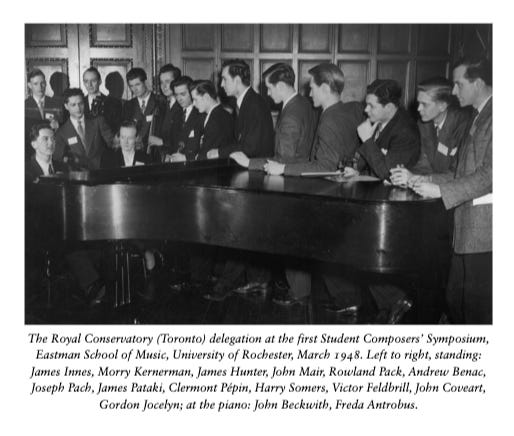
Once you’ve finished reading all of that (it might take you a bit!), keep scrolling to read our “Introducing…” column by the Newfoundland-born, Germany-based composer James Hurley, who introduces us to his Great Irish Poets Songbook.
As always, we hope this issue inspires you and reminds you of the transcendent power of art song. If you enjoy this issue, please consider donating to support the Art Song Foundation of Canada’s bursary programs for young Canadian singers and pianists.
— Sara Schabas, editor
John Beckwith: A life of song by Bradley Christensen, baritone
Born March 9, 1927, in Victoria, BC, John Beckwith was a composer, musicologist, teacher, and author whose significant contributions to the Canadian art song canon, and in fact, the broader Canadian artistic landscape, spanned a remarkable seven decades. Beckwith wrote over 150 compositions, including four operas, a dozen orchestral works, chamber and solo works, songs, works for chorus, and approximately 200 arrangements of Canadian folk music. The song repertoire of John Beckwith spans an incredible 67 years, with much of his output utilizing the literature of important Canadian literary figures, including bpNichol, Margaret Laurence, Colleen Thibaudeau, and Miriam Waddington. Beckwith also turned to the sounds of the people and regions for inspiration, whether it be a song composition speaking of winter in Winnipeg (“The Snow Tramp,” Three Songs to Poems by Miriam Waddington, 2003), or the setting of a Newfoundland folk song (The St. John’s Girl, 1969). In setting the texts, Beckwith recognized the need for specificity, and rather than attempting to channel a generic Canadian soundscape, he attempted to focus on the identity of specific regions. In his book Unheard of: Memoirs of a Canadian Composer, he wrote, “It’s fruitful, I’ve found, to ask the question, ‘What are the local or regional sounds, gestures, expressions, that would be appropriate to this compositional assignment?’” (200)
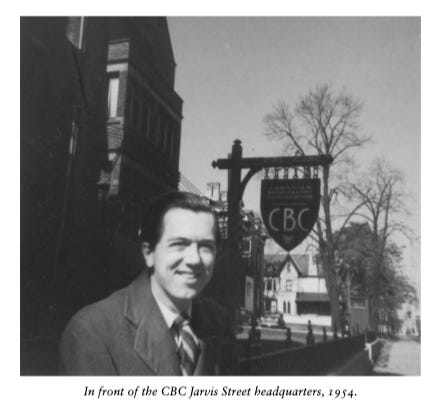
I am honoured to have been asked by Art Song Canada to write about John and his contributions to the Canadian art song canon. I interviewed John between September 2020 and September 2022 for over 16 hours as part of my research for my 2023 doctoral dissertation titled “The Repertoire of John Beckwith for Solo Voice and Piano: An Interpretive and Pedagogical Guide.” John was incredibly generous with his time, and I shall forever remember those interviews. He was sharp, remembering events from 70 years prior, and the humour that he portrayed in various song compositions was clearly an extension of his own personality. When I asked him questions such as, “Is there a reason that most of your songs don’t use a key signature?” his response was: “You can’t expect a singer to be governed by a tonality.” I laughed (although I wasn’t entirely sure that was a joke) before John clarified that he didn’t like to use a key signature because he found it restrictive. OK, he was joking! ☺
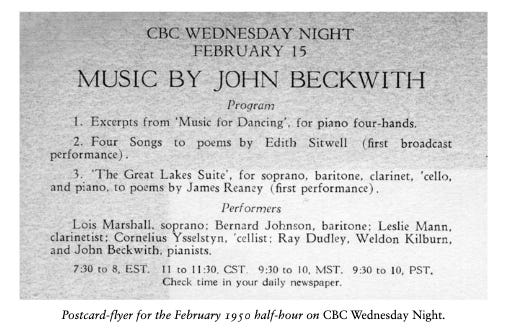
One significant observation that came from these interviews was discovering how well-read Beckwith was. It made sense upon learning that in his first year at university, he enrolled in an English literature course. His love of reading and his passion for the English language is demonstrated in his song catalogue, not only by the wide range of authors whose texts he sets, but also by the eclecticism in his taste.
Beckwith’s regard for literature and poetry made him a strong story-teller. He was always preoccupied with text, the sonority of syllables, and getting the literary background across to the audience. When I asked him what his most common suggestion for singers and pianists was, he said for singers, “stress the words,” and for pianists, “go with what the singer is trying to get across.”
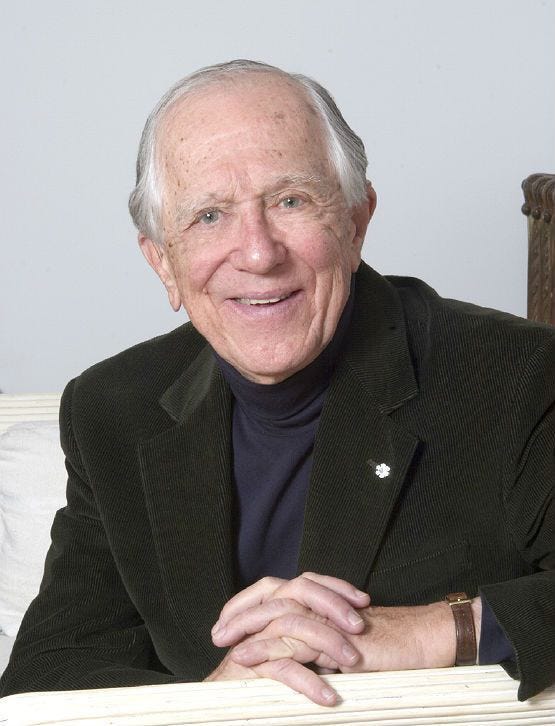
Generally speaking, Beckwith’s songs are challenging to perform. Beckwith was exact in his writing (rhythms, articulation, etc.); his compositions are concise and economical. A successful performance of a Beckwith song combines the precision of small detailed work with the presentation of larger gestures. The songs may take a while to learn, but the precision of the learning is to find freedom in the performance. Soprano Monica Whicher, for whom Beckwith wrote the cycle Stacey (1997), explained to me in an interview that because John’s music is so detailed, it is impossible to extricate these details from the context of the whole, yet one can never relinquish the over-arching gesture and emotion in the midst of this detailed work.
I have to say, prior to my doctoral recital, when I took his songs to him for coaching, I was quite nervous, as I expected him to pull me up on all the little details that may or may not have been included. However, while he offered a couple of suggestions regarding emphasis of particular words or messages he wanted conveyed, he simply seemed grateful and excited that his works were being performed. This feeling of gratitude I often observed in his recounting of past events.
There is much to be discovered in the rich tapestry of the Beckwith song catalogue. He is a unique voice in the canon of Canadian music, and, as Monica Whicher explained, is someone who devoted an entire life to the exploration of poetry and their own style. John passed away on December 5th, 2022 in Toronto at the age of 95, leaving behind a catalogue reflecting major themes of his life and work.
Award-winning baritone, voice teacher, and guest clinician, Dr. Bradley Christensen enjoys a busy multi-faceted career in the arts. Bradley obtained his Doctorate from the University of Toronto; he is an alumnus of the prestigious Rebanks Family Fellowship and International Performance Residency Program; and he furthered his artistic development as a young artist with Opera on the Avalon, Highlands Opera Studio, and Opera North.
The Art Songs of Violet Archer by Tina Alexander-Luna, mezzo-soprano
A once-household name, Canadian composer, Violet Archer, passed away in 2000, and this year marks 25 years since her passing. In a CBC interview, Archer was coined as “Violent Violet” known for the difficulty level of her writing and her neo-classical stylistic influences from composers like Béla Bartók and Paul Hindemith. Born in 1913 in Montreal to parents who were new immigrants to Canada from Italy, Archer had exposure to music at a young age and began studying piano formally at the age of nine. In a 1998 interview with Barbara Harbach, Archer speaks about her early interactions with music stating, “as an infant the sound of the piano cast a spell over me. The sound of a violin made me cry. The piano drew me to music.”
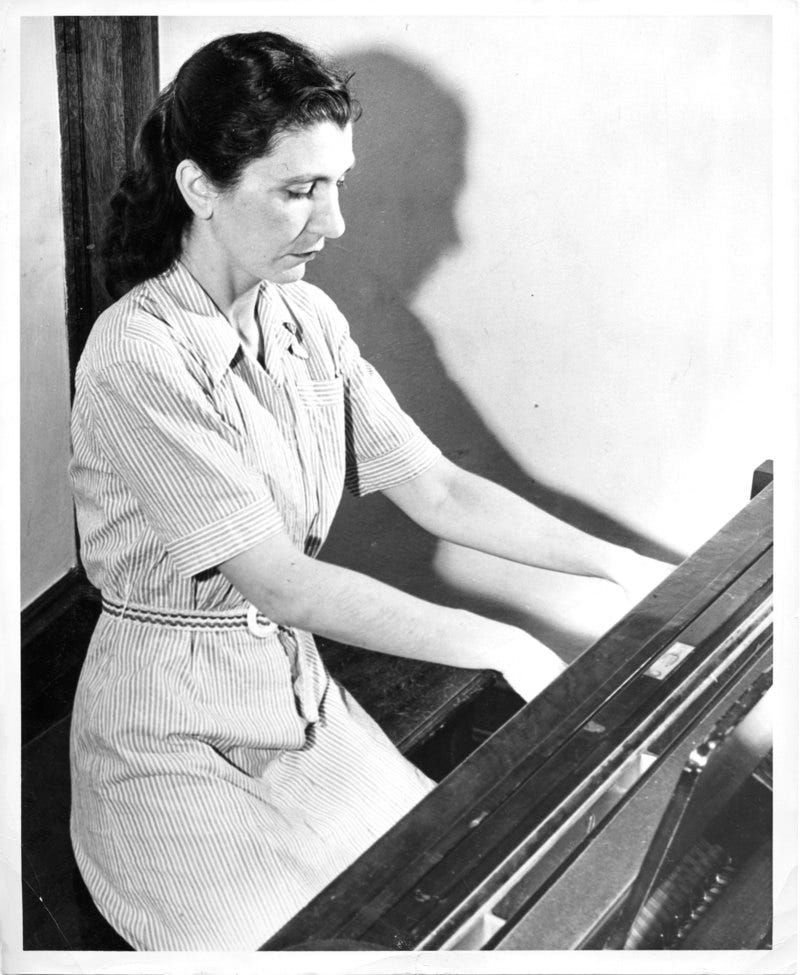
Despite being discouraged to study music at the University level by her family, Archer completed her Bachelor of Music in Composition at McGill University in 1936. In the early 1940’s, Archer would travel to New York City to study with well-known Hungarian composer, Béla Bartók, and by 1942, Archer had already composed thirty-eight known works for orchestra, solo voice, choir, and chamber groups. Archer completed her master’s degree at Yale University in 1949 and worked with composer Paul Hindemith. Although she travelled and taught as sessional faculty at several universities in the United States, it was in 1962 that Archer began her tenure at the University of Alberta developing their theory and composition programs. The bulk of her compositional output was during her time in Edmonton, and despite being far from family, she flourished in her compositional work, personal life, and in her advocacy for the performance and study of new Canadian music. Although she retired from the University of Alberta in 1978, Archer remained in Edmonton until 1998 when she moved to Ottawa to be closer to family before passing away in 2000.
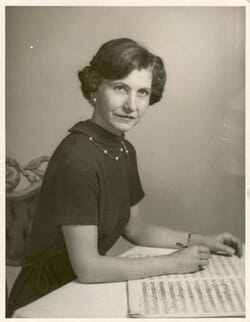
During a career that spanned over six decades, Archer composed just over 300 pieces including works for orchestra, chamber ensembles, solo piano, voice, choirs, and many diverse instrument combinations. According to a 2006 article by musicologist, Linda Hartig, Archer was, “serious about writing for beginning and intermediate students as well as for sophisticated performers,” and this is certainly exhibited in her compositional works for voice and piano. Although not known specifically for her contributions to art song, Archer wrote an array of interesting and viable compositions for voice and piano that can be interesting choices for singers and teachers! Archer wrote 110 songs for voice and piano and of these, about 70 are either written for mezzo-soprano voice/medium voice or are suitable for it. This is a large portion of her total compositional output that has been overlooked, underperformed, and underrepresented. Archer’s songs frequented texts by Canadian poets and there were also folksong influences in her writing.
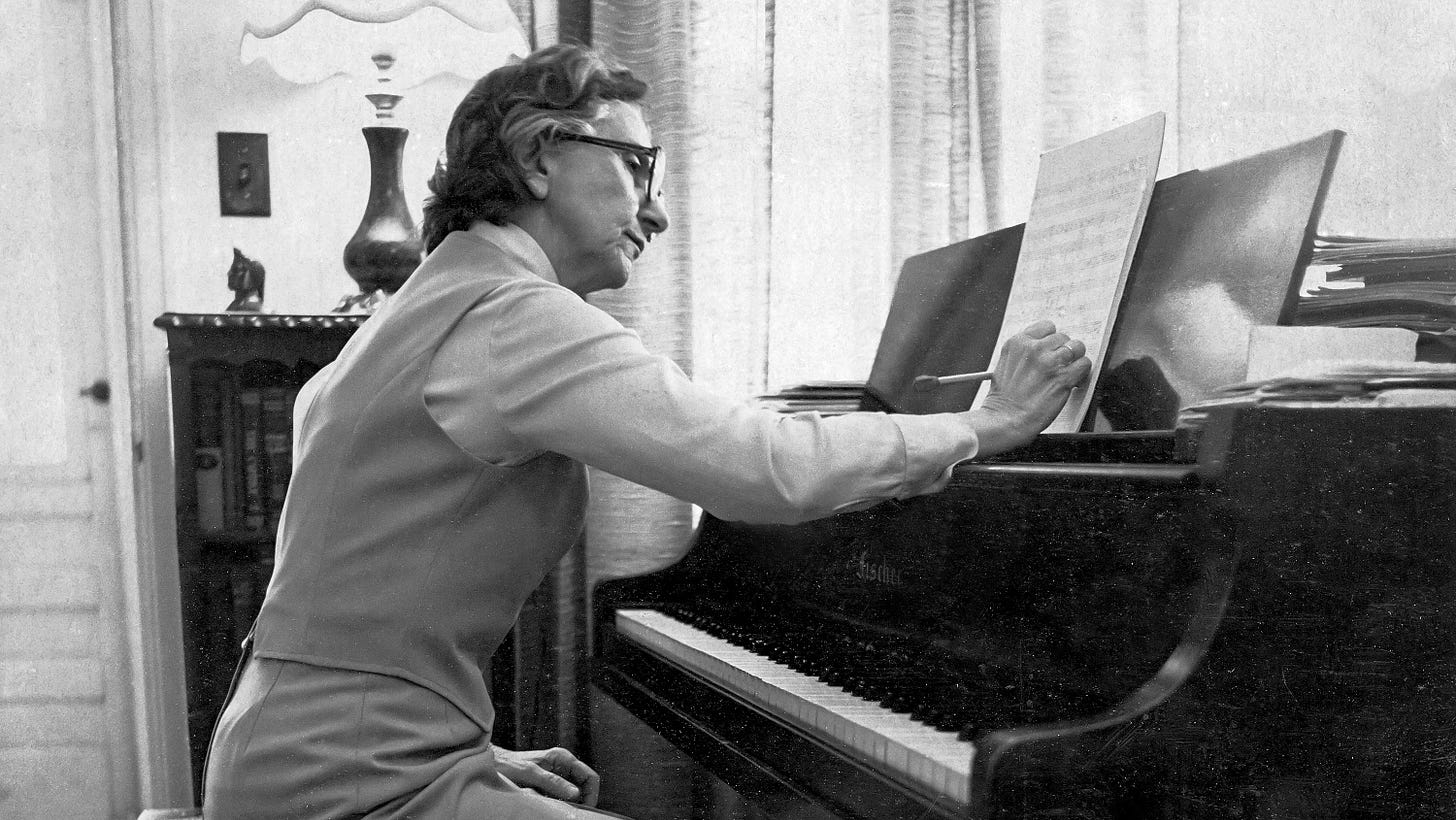
To be fully candid, even as a singer educated entirely in Canada, I had never learned any of Violet Archer’s songs until I began researching her during my doctoral studies at the University of Toronto. I felt oddly drawn to her because of her tenacity, how she was from the east (Montreal, and I am from Ottawa), and spent the bulk of her music career in Western Canada (where I have spent most of my professional career). Archer was also known for how she loved her cats- and who doesn’t love cats?!
So, here we are twenty-five years after her death, and access to the art songs of this prolific composer is only slightly easier than 25 years ago. Here’s hoping we continue to see more Canadian works for voice published and made more accessible to our Canadian voice community!
Mezzo-soprano, Tina Alexander-Luna, is a performer, teaching artist, and is Assistant Professor of Voice at the University of Regina. She recently completed her Doctor of Musical Arts from the University of Toronto. She performs frequently in recital and concert settings and will be presenting a lecture-recital in July of 2025 in Toronto at the International Congress of Voice Teachers (ICVT) entitled “Canadian Frontiers: the art song contributions of Canadian composer Violet Archer.”
The Art Songs of Harry Somers (1925-1999): A brief survey by Brian Cherney
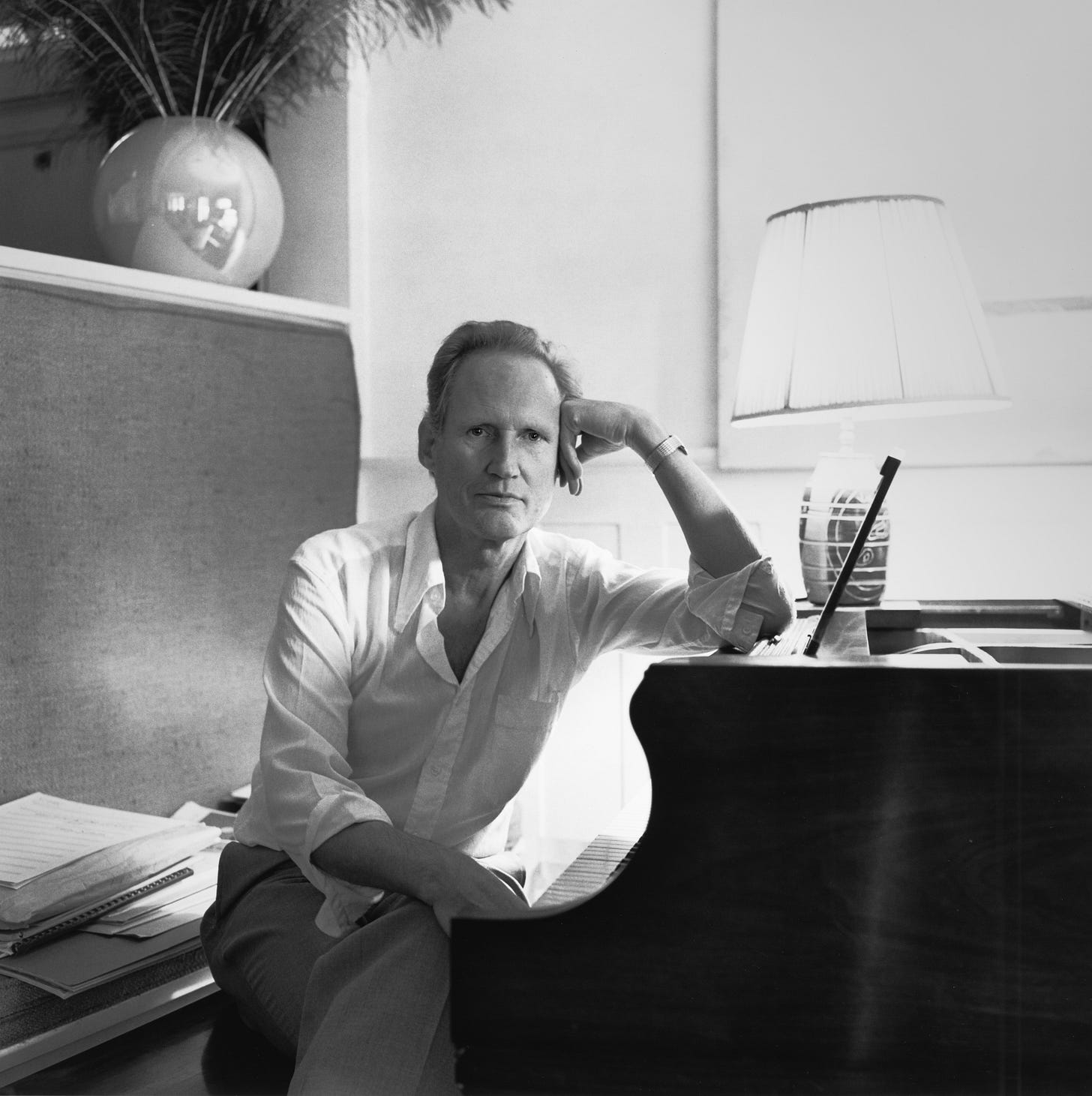
Strictly speaking, the art songs of Harry Somers span the entire length of his creative life. His earliest song, “Stillness,” was written in January 1942 when he was seventeen, only about three years after he began taking piano lessons. His last song, “Eternity,” was a very brief setting of a four-line poem of that name by William Blake, written shortly before his death in 1999. Another song, also using a brief poem of Blake, was planned but not written. Since by that time Somers was very ill, the song may or may not have been left as it was had he had more time to work on it. During the later 1940s and early 1950s, he produced a small number of conventional songs for voice and piano (including several sets) but in the 1960s he began to move away from his hitherto traditional use of the voice, culminating in more experimental works in the early 1970s, such as Voiceplay (for solo voice) and Kyrie (for solo voice, choir, and instruments). These are definitely not art songs. Later works for voice and piano include such pieces as the fourteen-minute-long operatic scene Love-In-Idleness (1976), with a text taken from Shakespeare’s Midsummer Night’s Dream. The sheer length of this piece excludes it from the art song category, whereas Shaman’s Song, for voice and prepared piano (1983), will be considered here. Although this piece is somewhat lengthy in terms of traditional songs, it is likely to be heard as a single, highly unified piece, not as a series of episodes. The particular use of the voice and its materials as well as the unusual nature of the piano accompaniment provide a consistent sound colour and atmosphere throughout. One could argue that it is a kind of extended and very intense art song—a stretched-out, magnified, and modified version of a traditional Lied, perhaps?
His earliest song, “Stillness,” was a setting of his own poem and was the first of his pieces, written in the 1940s (culminating in North Country for string orchestra in 1948), which were influenced by the landscape north-eastern Ontario, particularly the area of Temagami, which he had visited as a child with his parents:
This poetic depiction of the special qualities of the night (so dear to Romantic poets and musicians) no doubt sprang from the same fascination with the nocturnal world as had impelled Somers to wander the streets at night as a young child. (His correspondence and hastily jotted-down memoranda over the years are full of descriptions of night—the sounds, the light, etc.) In the 1950s the nocturnal world reappeared in the Five Songs for Dark Voice (“At four o’clock, before the dawn/ In the echoing street, there is yourself.”), although he himself did not write the text for these songs.
Some of the harmonic language of “Stillness” is based on stacked fifths in the left hand against fourths in the right, the latter a whole tone higher. This sounds like a thirteenth chord or a ninth chord with an added sixth. Chords often move in parallel motion, by semitone or whole tone in various voices. This is type of harmonic activity is typical of his other early music. The poem’s structure is faithfully reflected in the textural changes in the music, with the first verse basically melody with chordal accompaniment. The breeze in the second verse is represented in flowing arpeggio figures which, like certain of the harmonies, recall Debussy, especially because elements of the arpeggio are used to suggest a hidden melodic voice as a counterpoint to the voice line. In the third stanza the piano slows up into rising quarter-note arpeggios, again built on fifths (L.H.) and fourths (R.H.) moving in parallel motion; again, the harmony suggests major seventh or ninth chords. The last stanza reintroduces the harmony and texture of the opening and the “one soft note of stillness” appears as the pitch B-natural, which had appeared near the opening as the top note of the main reference harmony: A-E-B-C-sharp-F-sharp-B. The setting is syllabic throughout and the voice writing rather angular in places but generally unremarkable. There is nothing in Somers’s correspondence or other papers to indicate that the song was ever performed.
His first set of songs, entitled simply “Three Songs,” was commissioned by the Forest Hill Community Centre in Toronto, and written over a period of six months, beginning in January 1946. These were first performed by soprano Frances James, who performed much contemporary Canadian music in those years. All three poems are by Walt Whitman. It may be that Somers became interested in Whitman through his mother Ruth’s involvement with the Toronto Theosophical Society—Whitman was a figure greatly admired by the theosophists as far back as the 1890s. Whatever the impetus, all three poems depict nighttime. In “Look Down Fair Moon” the moon looks down upon the dead of the Civil War. “After the Dazzle of Day” depicts the stars which emerge in darkness, as well as the silence of the night, and the third song, “A Clear Midnight,” merges several previously depicted qualities of night that the soul can embrace and loves “best,” such as silence and stars but also sleep and death, as if the night sky offers the soul, a window to eternity. In these settings, the piano writing is more economical than in “Stillness” but still largely uses either chordal writing or arpeggiated figures, the latter either very short (suggesting the moon looking down) or very ornate and extended, as in the piano introduction to “After the Dazzle of Day” (to portray the “dazzle” of daylight). But the piano setting of the third song is the most effective, with its clear texture and motivic materials. A steady eighth-note semitone figure (A-sharp—B) above repeating octave E’s creates clarity but also suspense and is followed by an arpeggiated rhythmic figure, continuously repeated against the slow-moving voice part. This sequence is stated twice, thus providing a clear formal structure for the song (ABAB). The writing for the voice in these songs is expressive and less angular than in “Stillness” but still syllabic and rather careful, with brief melodic figures, repeated-note declamation of certain phrases, and the avoidance of sudden contrasts of register—in fact, the range of the voice part is confined to the staff. It’s interesting to note that the repeated-note declamation used early on recurs in his mature vocal writing, but the repetitions are more drawn out and intensified by the addition of a grace-note figure before each repeated note (see the first song in Evocations, for instance). In general, it seems as though he was, at this time and over the next few years, much more comfortable writing for the piano (his own instrument) than for the voice.
Those familiar with Somers’s juxtaposition of tonal and atonal passages in much of his music of the 1950s, will not be surprised to find examples of this in these early songs. “Look Down Fair Moon” begins with a rather dissonant piano introduction consisting of brief linear figures and dissonant chords (lower in register) but this all “resolves” to a plain d-minor chord when the voice enters—probably a way of contrasting the purity and beauty of the moon with the ghastly scene of bodies still lying on a battlefield many hours after they were killed. This juxtaposition is carried through to the final bars, again probably to underline the different images portrayed. Yet the song ends on a dissonant chord in the high register. There is no harmonic “resolution” of the scene depicted. On the other hand, “After the Dazzle of Day” concludes with a rising arpeggio figure built in fifths and fourths on C-sharp, suggesting in sound the last two words of the text— “symphony true.”
The title page of the original manuscript of “Three Songs” contains the following note: “with a fourth song which may or may not be included.” It may well be that this fourth song was never included in performances, since even on the Centrediscs recording of Somers’s songs (Songs from the Heart of Somers), this song is not included and there appears to be no recording of it. The title of the song is “A Song of Joys” and it is also a setting of Whitman, this time the first three verses of Whitman’s lengthy poem of that name. The song was written in 1947, and Somers entered it (as well as his Piano Sonata No. 1 [“Testament of Youth”]) in the Arts Competitions at the 1948 Summer Olympics in London. Neither piece won a medal (but John Weinzweig’s Divertimento No. 1 for flute and strings won a silver medal). The text (beginning “O to make the most jubilant song!”) is preceded by a substantial piano introduction which sets the mood, with its ¾ rhythm, fast tempo (marked “Allegro vivace, full of life, brimming over”) and homophonic texture. All of this gives the song the character of a fast, impetuous dance. The piano chords are, again, often built in fourths and fifths moving in parallel motion and these intervals are also prevalent in the voice part. In this song, the range of the voice part is somewhat more expansive than in the previous songs in the set, and its highest note, a G-flat 5, is saved until the very end, making the voice part even more effective and concluding the song with a sense of triumph.
In 1947 Somers wrote a single song, entitled A Bunch of Rowan, with a text by Diana Skala. Skala was not only a poet whose work had appeared in the periodical Saturday Night but had, evidently, studied piano and composition at the Toronto Conservatory of Music during the early 1930s, according to a short memoir she wrote years later (“A Letter from Sir Charles G.D. Roberts [A Personal Memoir],” published in Studies in Canadian Literature XI, no.2 [1986]). The “rowan” of the title refers to the rowan tree which, in some cultures, is thought to give protection from malevolent persons and/or witches. In the poem, the narrator, who seems to have led a life of excessive pleasure, asks to be laid to rest “where the willows are listening… with a bunch of rowan upon my breast” since she (or he?) does not know “evil from good.” The musical setting of this doleful, three-stanza poem, with its slow, steady tempo, has the quality of a dirge, with rolled chords in one or both hands of the piano which proceed in even, slow quarter notes in the actual accompaniment of the text. These rolled chords suggest the strumming of a string instrument and the frequent d-minor harmony, with chromatic slides to more dissonant chords or simply to a contrasting triad, suggest that Somers intended this setting to evoke the sense of a bard or minstrel singing of the deeds of a hero (or heroine?). The triadic arpeggiation in the voice part tends to support this impression. On the other hand, a short piano introduction consists of a high melodic voice which adds strong dissonances to the underlying d-minor harmony. This introduction returns in more or less the same way between each stanza, while each stanza is set to essentially the same music; thus, the setting is strophic (which also supports the idea of a song performed by a bard). It may be that Somers intended the tonal music to represent the “good” and the dissonant chords (many of which are ninth chords on G-flat) to represent “evil,” which the narrator cannot distinguish between (“For I know not evil from good.”). A Bunch of Rowan was performed in the summer of 1949 in Budapest during the second World Festival of Youth and Students.
Somers’s next set of songs, entitled Three Simple Songs, was written in 1953 and two of the songs were first performed 20 November 1954 at a Canadian League of Composers concert in Hamilton, Ontario by mezzo-soprano Trudy Carlyle and Mario Bernardi. The texts of the songs (“The Garden,” “Asleep,” and “My Faith Move Mountains”) were written by the Toronto lawyer and poet Michael Fram (1923-1989), who wrote the texts for no fewer than six works of Somers between 1953 and 1956, including two important works of those years: the one-act opera The Fool (1953) and the orchestral cycle Five Songs for Dark Voice (1956), the latter premiered by Maureen Forrester at the 1956 Stratford Festival. Fram was actually practicing law during these years but was also a serious poet who had met Somers through the latter’s first wife, Catherine Mackie.
The texts of Three Simple Songs are far more complex and enigmatic than the texts of the previous settings. The first two songs, “The Garden,” “Asleep,” both depict young children, first at play, then asleep, and in both there is a sense that the parent who is surveying the children wants to protect them from the world of adult emotions (“futile laugh,” “infected anger”) or, as in “Asleep,” prevent anything from interrupting their sleep. (Fram and his wife were the parents of young children during these years.) The piano accompaniments of these two poems are far thinner and more linear than in the Whitman songs. It looks as though a twelve-tone row was used to some extent in the first song but not systematically, since there are also scale-like figures, chords built in fourths and fifths, but there are again here unexpected juxtapositions of atonal and tonal pitch structures. This is especially true in the second song, in which the middle section is like the recitative format of some eighteenth-century opera, with e-minor and d-minor rolled chords providing the harmonic underpinning of each short phrase in the voice. The piano parts of the outer sections, however, are dissonant, whether the texture is chordal or linear. The voice part in these songs is generally more angular, disjunct, and wider in range than in the Whitman songs, yet still essentially lyrical.
The text of the third song, “My Faith Move Mountains,” seems to imply that only deep faith can banish “anguish, uncertainty and fear” and it is possible that the extended, empty fifths in the right hand of the piano (E-B-E), with sharp interjections in the left hand, are one of the symbols used in the song to suggest faith and strength (the others being the empty fifths, a major third apart, at extreme ends of the keyboard, which begin and finish the song, and the other being the insistent thirty-second note figure in both hands, with its periodic dissonance of A against B-flat, which surrounds the words “The sharp particular anguish uncertainty and fear”). This is a powerfully striking setting of the text, and it provides a welcome contrast to the gentler first two songs.
The last song completed during these early years was Conversation Piece, also a setting of a poem by Michael Fram. Written in 1955, this poem consists of three stanzas (like A Bunch of Rowan). In the first two stanzas, the poet wonders: (stanza 1) what swans say to each other as they glide along a river and (stanza 2) what is said (conveyed?) in a plant when whatever communication (conversation?) there is moves from the earth up through the plant until the leaves meet the air. In the third stanza, the question of communication is carried through to humans (“we”) who are “in silence by the river.” The images of darkness and river, carried through the second stanza (“Touching as darkness on the river.”), return yet again in the third stanza, but now the image of the swans returns as well but they are silent (“In utter clarity of silence speaking.”). Thus, a kind of oxymoron: speaking, yet silence.
The musical setting of this poem will strike anyone who has read my descriptions of the previous songs as extremely surprising, but this surprise can readily be assuaged by placing this 1955 song in the larger context of Somers’s music of the 1950s. He became fascinated by certain Baroque techniques such as counterpoint and fugue. One of his best-known works of this period was the Passacaglia and Fugue for orchestra, written the previous year, but there is also a set of fugues for piano (12 X 12) as well as other fugues and contrapuntal passages scattered through his music until the end of the 1950s. Some of these works (such as 12 X 12) also make use of twelve-tone related methods of pitch organization but this is certainly not the case with Conversation Piece. The song is in g-minor (complete with two flats in the key signature) and features an omni-present bass ostinato that moves back and forth at the pace of a quarter note between a perfect fifth (G—D) and the upper and lower neighbor notes of the D. The right hand of the piano accompaniment consists mostly of a duet in which the voices, in close proximity, move along smoothly in flowing rhythms that are distinctly Baroque in nature. At times, the two voices even proceed in a chain of two-three suspensions. The voice part is far more continuous and carefully shaped here than in previous songs. In each stanza, the voice part forms a long arc, gradually rising over the course of the stanza and then descending into the original register. The voice part is similar in all three stanzas, but the climax of the voice part, a high A marked double forte, occurs on the word “air,” the last word in the third line of the second stanza. Perhaps the greatest surprise in the song is the last phrase, which consists of a long melismatic vocalise on an “Ah,” the sort of melisma one might find in an aria in a Bach cantata. At the end, the singer moves from an “oh” (slowed up) to sustain the final note G on an “mm. Thus, the mouth must be closed, which alters the timbre of that final note. These final, contrasting measures cannot easily be explained with reference to the poem, but they are an interesting portend of things to come in Somers’s writing for voice. The previous songs are basically syllabic settings of the texts—they serve the purpose but are not particularly striking. At the end of Conversation Piece, however, something seems to have impelled him to do something more with the voice and these tentative steps towards abandoning a text and resorting to just pitched sound material anticipate what he was to do in the 1960s in Twelve Miniatures and Evocations.
In the next stage of Somers’s development as a composer, in the 1960s and beyond, vocal writing became a central concern, culminating in the early 1970s with such experimental works as Voiceplay 1972), written for Cathy Berberian, and Chura-churum (1985). And, of course, in 1967 his opera Louis Riel was premiered, to great acclaim; this work is regarded as one of his greatest achievements.
In the next stage of Somers’s development as a composer, in the 1960s and beyond, vocal writing became a central concern, culminating in the early 1970s with such experimental works as Voiceplay 1972), written for Cathy Berberian, and Chura-churum (1985). And, of course, in 1967 his opera Louis Riel was premiered, to great acclaim; this work is regarded as one of his greatest achievements.
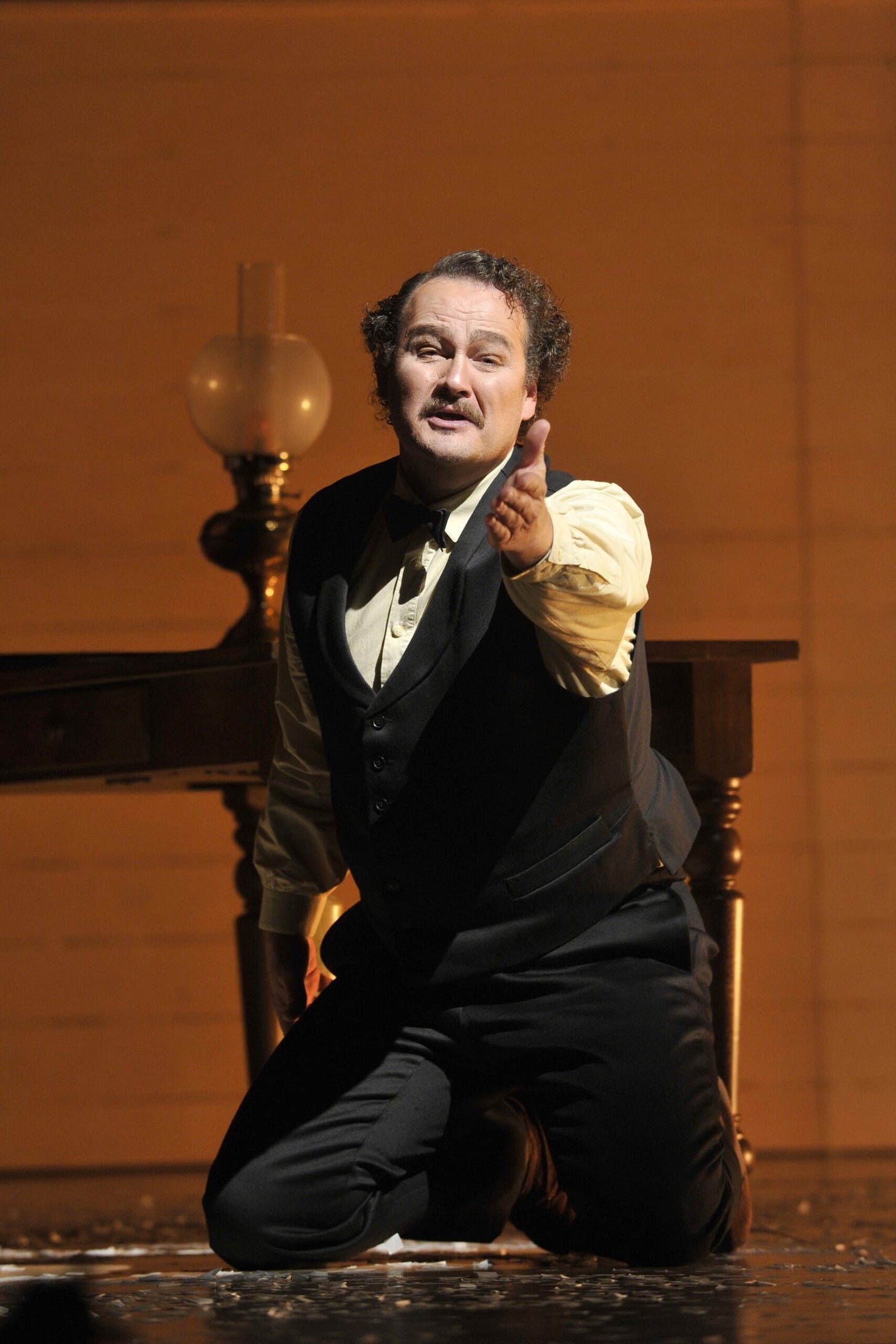
In the early-to-mid 1960s, there were two works which were the starting point for this new interest: Twelve Miniatures for voice and instrumental trio (1963) and Evocations for voice and piano (1966). Both of these were CBC commissions. Twelve Miniatures is not, strictly speaking, an “art song,” since it involves not only a solo singer and a keyboard instrument (either piano or spinet), but also flute and cello (or recorder and viola da gamba). It should be included in this brief survey, however, since it is not only one of the finest pieces Somers wrote but also the starting point for his exploration of new vocal techniques in the years to come. Twelve Miniatures was commissioned for Rowland and Carol Pack by the CBC and begun during the summer of 1962 in the Gaspé area of Quebec. It may be that the rhythm of the sea here influenced certain aspects of the first miniature (“Springtime Sea”), since there are eleven instrumental repetitions of a small cluster of fragments that gently appear and disappear, suggesting a recurring wave pattern of some kind. The work was completed during the following winter (1962-63). In May of 1963 Catherine, Somers’s first wife, died by suicide. Subsequently, Somers dedicated Twelve Miniatures to her memory.
The texts are taken from a collection of Haiku poems selected from an anthology published by Harold Henderson (An Introduction to Haiku) and are arranged in four groups of three, covering the four seasons of the year. The opening and closing miniatures (“Springtime Sea” and “The River”) share the same material, thus suggesting the human life cycle as well. A detailed description of Twelve Miniatures would be far beyond the scope of this survey. (A detailed analysis may be found in this writer’s 1975 monograph on Somers.) However, a few things should be mentioned here. By this time (the early 1960s), the juxtaposition of tonal and non-tonal passages on Somers’s music had disappeared. Twelve Miniatures does not contain any tonal music. It is constructed with small pitch cells, usually with different cells assigned to different instruments or voice; these may or may not comprise the full complement of twelve pitches. If there is a complete twelve-tone series, the order of pitches may not be retained. The effectiveness of these songs is partly due to their considerable variety of textures and colours. A few of the songs are very brief, a matter of a few seconds. Some have sustained and expressive lines (e.g. No. 2, “The Skylark, in which the flute and voice alternate short solo phrases until the very end, where voice, flute, and piano conclude together on the word “gone”). Others have a more fragmented texture, such as No. 11, in which a twelve-note series is used quite strictly in all parts, but the texture consists of single, separated, staccato notes in each part (to suggest the words “the snowflakes fall”). One of the most admirable features of Twelve Miniatures is the restraint with which Somers set the texts—there is a wonderful balance between the means used to set the texts and the word painting provided by the music. The textures are thin but scored in such a way as to contribute just the right amount of colour and support for the voice.
As mentioned, Twelve Miniatures is the beginning of Somers’s exploration of new vocal techniques. In the monograph on Somers referred to above, some of these are mentioned:
[A new approach to writing for voice] is to be found not only in the use of the accented grace note figure (as in ‘Springtime Sea’), which occurs in subsequent vocal writing of the sixties, but in the use of non-traditional inflections and timbres to help evoke the image of the text. In The Portent’ (the fifth song), for instance, the motionless intensity of a hot summer day is suggested by quarter-tone inflections around and between G and Ab (sung senza vibrato); the voice, which never deviates from this static inertia, is accompanied by a pedal B harmonic in the cello. In ‘Lament’ (example 6.2) the slides help to evoke the appropriate atmosphere, a frequent technique in twentieth-century threnodies (for example, the opening section of Crumb’s Black Angels). In ‘The Scarecrow,’ the soprano whispers the entire text in terse, clipped phrases.
The other work for voice and piano of the 1960s, Evocations for mezzo-soprano and piano, was again a CBC commission, completed in February 1966. When it was broadcast on CBC radio the following year, the performers were Patricia Rideout, mezzo-soprano, and Somers himself as pianist. This was probably one of the few times he performed as a pianist in his mature years, even though he had studied piano seriously until 1948 and had become an accomplished pianist. He also wrote the four texts for Evocations himself; there are many similarities in these to the text of his first song, “Stillness,” discussed at the beginning of this survey. For instance, the first song in Evocations contains words and phrases such as “Wreath of night,” “Darkness,” “womb of night,” “stillness”, and “night sounds.” The central image here is the loon; the “oo” sound in loon, the “crah” sound in the word “cry,” and the “cah” sound in “call” are both extended with repeated-note figures and a short single note preceded by one or more grace notes. The damper pedal is held down throughout this first song, thus allowing the voice part to echo in the vibrating piano strings—this is an imaginative way of evoking the sound of a loon over a northern lake (at dusk, perhaps?). The second song contains a number of images associated with light: shattered, refracted, shimmering, for instance, and the piano part provides appropriately striking figures to evoke these—fast arpeggiated figures, high, dissonant tremolo figures, always in irregular and unpredictable formations. The fourth song returns to images associated with night and darkness: “Moon cracks and spreads winter night/Cold heart of emptiness…In the womb is contained the tomb.” In this last song the middle section of the voice part is built entirely around the sounds of “oo,” “ah,” “oh,” and “mm.” These are derived from the words themselves and replace the words, except for the briefly spoken phrase “In the womb is contained the tomb.” During these sounds, the pianist does not have a notated part but is invited to “add percussive ‘comment’ by hitting the inner ribs and frame of the piano with mallets or with the knuckles.” The concluding gesture in the piano is simply the suggestion, through a wavy line, of a rapid figure going from the low to high register of the piano, in other words, improvised. (However, Somers thoughtfully provides a written-out passage for “tired” pianists.) The singer must scream or violently gasp (or both), towards the end.
All of this indicates that in Evocations Somers fully entered the world of contemporary music of the 1960s but another major feature of the songs confirms this—there is virtually no traditional metrical notation in this work. Durations and pacing of various notes, figures, and vocal phrases are notated in such a way as to give considerable flexibility to the performers. In the second song there are cues from one performer to the other to ensure coordination at certain points, while the beginning of the third song is written out in groups of sixteenth notes and the tempo fluctuates but the pianist is instructed to use these only as a guide. The chromatic clusters which open the last song are all notated in whole notes, but the instructions are: “long values, all variable duration.” In the years after 1960, when Somers had spent a year in Paris, he was clearly paying far more attention to international developments in contemporary music than he had during the 1950s. Even the orchestral work Stereophony, written in 1962-63, indicates this. As well, he was involved in the CBC new music program Music of Today from January 1965 until June of 1969. Through his work on this program, he was able to hear recordings of every imaginable type of contemporary music from every part of the world. Thus, many of the approaches found in Evocations can be found in the scores of major figures, whether they be Berio or Stockhausen or Crumb.
However, it should be noted that some of his other vocal music of the 1960s is quite conventional from the point of exploring new vocal techniques. This includes the choral pieces God the Master of this Scene (1962), Gloria (1962), The Wonder Song (1964), and Five Songs of the Newfoundland Outports (1969), the latter being one of his most successful and most performed works.
As indicated earlier, there are a number of later vocal works which involve piano and one or more voices. These do not, with perhaps one exception, fall under the “art song” category. Love-In-Idleness has already been mentioned, as has Shaman’s Song, for voice and prepared piano. The latter piece, written in 1983 as the test piece for the S. C. Eckhardt-Gramatté Competition of that year, could be regarded as an extended version of the traditional art song. The piece does have a text that has the words of Uvavnuk, a Netsilik Inuit woman:
The great sea has set me in motion
Set me adrift,
Moving me as the reed moves in a river.
The arch of sky and mightiness of storms
Have moved the spirit within me,
Till I am carried away
Trembling with joy.
However, the text appears only sporadically through the piece and is sung, but the extensions of the words through vowel sounds (notated in the International Phonetic Alphabet notation) are far more prominent in the song. (In fact, the sung words of the text do not appear until the fourth page of the score.) The nine-and-a-half-minute song is a long build-up to an intense climax that occurs only at the very end of the piece, with a high, double-forte C reached in the voice part and rapid, steady rhythmic activity in the piano. Much of the piano activity takes place in the middle register of the piano. In the version for soprano (on the Centredisc recording), this music is played in the area in which the strings are prepared with eraser wedges. The result is that much of the piano writing throughout sounds like small, unpitched drums or perhaps plucked strings, although periodically the pianist plays rapid arpeggiated figures in the high register (not affected by the eraser wedges) or harmonics created on low strings. Special muffling or dampening effects on low strings are heard in steady rhythms at the beginning of the song; this also produces a drum-like effect and ensures a suitably atmospheric background for the sung vowels of the opening.
The long buildup of tension in Shaman’s Song is comparable to similar procedures throughout Somers’s music, for instance, in the first movement of North Country (1948) or the first part of the orchestral piece Stereophony (1963). The small vocal figures and motives in the piece are very similar to such things in both Twelve Miniatures and Evocations. Thus, there is a line of continuity, a well-defined character in the music of Somers which can be traced back through much of his work.
Brian Cherney
April 2025
Montréal
Montreal composer Brian Cherney has written well over one hundred pieces, many of these commissioned by the CBC and other organizations over a period of many years. One of his most recent works, the String Quartet no. 7, was commissioned by the Molinari Quartet and premiered in 2023. For more than fifty years he taught composition, twentieth-century analysis and music history, and Canadian music at McGill University, where he is now Professor Emeritus. His latest book, Between Composers: The Letters of Norma Beecroft and Harry Somers (McGill-Queen’s University Press) was published in the fall of 2024. He is currently working on a new book on the life and music of Harry Somers. His earlier book on Somers, published by the University of Toronto Press in 1975, was the first full-length study of a Canadian composer.

James Hurley’s The Great Irish Poets Songbook, by James Hurley
The scene is Munich, Germany, where a pianist from Eastern Canada (that’s me) has been living since graduating from the New England Conservatory in 2010. My name is James Hurley—and you’ve almost certainly never heard of me before now—but I have some things I’d like to share! After working for many years as a classical/improvising pianist, I’ve rediscovered my artistic purpose in writing English art songs for tenor and piano. While living in Munich, I became acquainted with an Irish tenor in residency at the Munich State Opera named Dean Power. I began writing music for him, starting with fun concert arrangements of folk songs from Newfoundland and Ireland (there are about twenty of these written now) and gradually transitioned to setting texts from the literary giants of Ireland (Yeats, Joyce, Wilde, etc). Since beginning this project in 2022, there are now more than forty completed original songs, which have yet to be grouped into song cycles. However, the songs form what we are calling The Great Irish Poets Songbook. Love features at the core of the songs, which includes a setting for each of the thirty-six poems in James Joyce’s Chamber Music (1907).
If you’re looking to program Canadian works or works featuring Irish literature, please click on the link to get in touch, as well as to hear more and to see a list of the songs in this opus.
James Hurley is a Newfoundland-born pianist/composer currently living in Germany. There he runs a music studio and performance venue called Più Piano. He is active as a teacher, composer and pianist across Europe and Canada.
Editor’s note: Readers, do you have a little known song cycle you’d like to share with the Art Song Canada community? Write to us at [email protected] to be featured!
Please consider making a contribution to the Foundation today.
A stranger I arrived here,
Fremd zieh’ ich wieder aus.
a stranger I go hence.
Der Mai war mir gewogen
Maytime was good to me
Mit manchem Blumenstrauß.
with many a bunch of flowers.
Das Mädchen sprach von Liebe,
The girl spoke of love,
Die Mutter gar von Eh’,
– her mother even of marriage.
Nun ist die Welt so trübe,
Now the world is dismal,
Der Weg gehüllt in Schnee.
the path veiled in snow.
– Willhelm Müller (English translation by William Mann)
While it may be March, Canadians know winter is far from over. Indeed, as the end of our annual winter journey begins to enter our vision, we at Art Song Canada thought exploring Franz Schubert’s eponymous song cycle—deemed by some as the world’s first and greatest of concept albums—might be the perfect way to end the season. In the words of the great lieder singer Ian Bostridge: “For the initiate, Winter Journey is one of the great feasts of the musical calendar: an austere one, but almost guaranteed to touch the ineffable as well as the heart.”
Our winter journey takes us around the globe with three personal accounts from artists intimately familiar with Schubert’s opus. We begin in Waterloo, Ontario, where the Canadian bass-baritone Daniel Lichti first discovered Winterreise, before he became one of the world’s most prolific interpreters of the cycle. We then venture to Berlin, the base of the British-Canadian soprano and pianist Rachel Fenlon, who has made a name for herself internationally by singing and playing the work simultaneously. Finally, we stop by Johannesburg, where the South African artist, filmmaker, and opera director William Kentridge—who created a visual Winterreise for Matthias Goerne, Markus Hinterhäuser and the Festival d’Aix-en-Provence—listened to Dietrich Fischer-Dieskau and Gerald Moore’s Winterreise with his father on Sunday afternoons after lunch.
As always, we hope this issue inspires you and reminds you of the transcendent power of art song. If you enjoy this issue, please consider donating to support the Art Song Foundation of Canada’s bursary programs for young Canadian singers and pianists.
— Sara Schabas, editor
My journey with Winterreise and my companions along the way by Daniel Lichti
In the summer of 1971, I heard Winterreise for the first time.
It was performed in the Theatre Auditorium, at what was then known as Waterloo Lutheran University, now Wilfrid Laurier University – an auditorium where basketball games were more the norm than a Sunday afternoon Schubert recital. I will never forget it, or its effect on me.
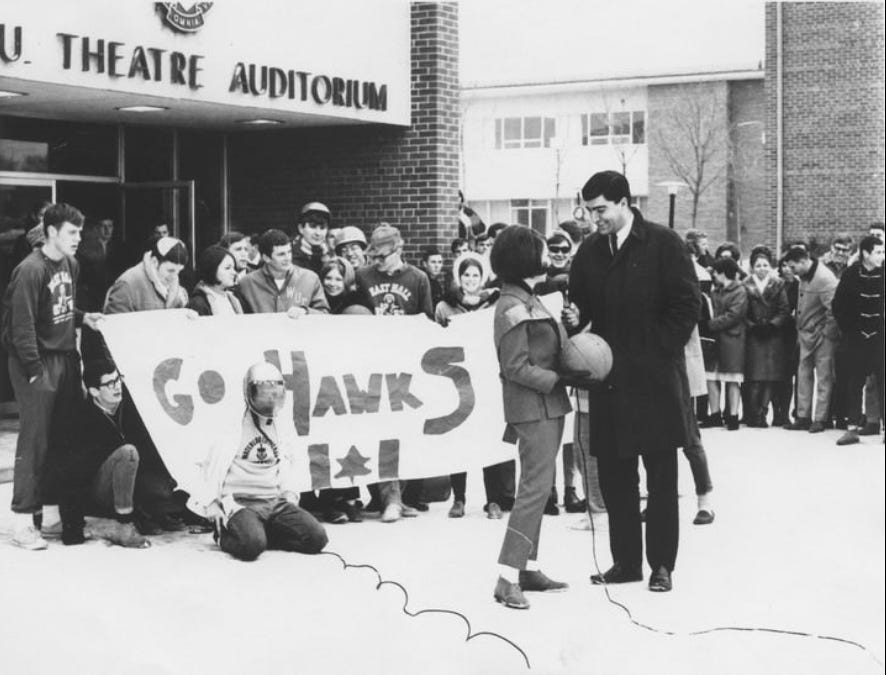
I was too much of a newcomer to understand the unmistakable attraction I felt to explore this kind of artistic expression and this great song cycle, but I felt it intensely. The pursuit of learning it, studying it, memorizing it, and engaging with many partners in its performance in many settings throughout my now 50 years of professional life has contributed immensely, more than any other single influence, to my growth as an artist. The initial impression was one of awe – that a narrative communicated through the singer and a pianist could stimulate my imagination so powerfully at first exposure was new to me. It wasn’t just the text (that came later with fluency), but the combination of the journey narrative and the compelling musical partnership between singer and pianist that drew me in, and set me off on my own journey with Winterreise.
The performance in 1971 was given by Canadian baritone, David Falk, and German pianist, baritone and voice pedagogue, Theo Lindenbaum. These men are both gone, but each influenced me in significant ways. David, along with my first voice teacher, Victor Martens, both of whom were foundational in building a highly respected Voice and Opera program in a fledgling Faculty of Music at WLU, continued to support and mentor me when I was invited to join the Faculty of Music in 1998. Theo became my teacher and mentor for three years at the Nordwestdeutsches Musikakademie in Detmold, Germany. Martens and Lindenbaum were both involved in my learning process – I sang the first seven songs of the cycle on my final recital as an undergrad at WLU and then continued to work my way through the rest of the cycle in my Detmold days, managing a full performance in the spring of 1977 with a fellow student pianist for an audience of seniors in the nearby Spa-town of Bad Salzuflen. I was pretty sure my audience knew the work better than I did.
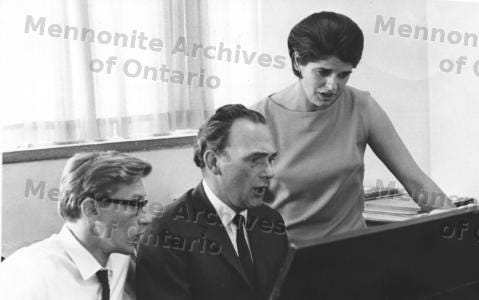
Not long after returning to Canada to work at building a professional profile in earnest, I met Leslie De’Ath, Professor of Piano and Collaborative Piano at WLU, and likely one of the most active musicians in the Kitchener-Waterloo region throughout his illustrious career. I have always thought of him as an artist-intellectual, and appreciate his influence on me through our many performances of Winterreise, our conversations, and through his writing. We have performed in traditional recital settings, but also at a 50th wedding anniversary celebration in a private home, and in the Rotunda of the National Gallery in Washington D.C., where we filled in at last minute for an ailing Hermann Prey at a concert commemorating the Millenium of the Austro-Hungarian Empire. Leslie and I also recorded Winterreise for ANALEKTA, distinctive because of the use of a 1851 Streicher fortepiano, which has a sound perhaps akin to that with which Schubert and his contemporaries were familiar.
Along the way, I encountered the NYC-based collaborative pianist and educator, Arlene Shrut, and at our first rehearsal for an unrelated audition, realized that we communicated easily and deeply with Lieder, and for a few years we worked together several times, including a performance of Winterreise in Syracuse, NY. It was with her that I then sang my first recitals at the National Gallery in D.C., and we partnered on the first digital recording of Lieder by Dorian Recordings.
In the early ‘90s, fate brought me together with the renowned Canadian pianist, Janina Fialkowska at the Carmel Bach Festival in Carmel by the Sea, CA. Before long we were giving recitals around Ontario that turned into recordings for Opening Day, Schubert’s Schwanengesang, and songs of Brahms and Schumann. Our Winterreise adventure took place in Ottawa at Festival Canada, organized by the late Nicholas Goldschmidt – our page turner that evening was Janina’s good friend, Angela Hewitt!
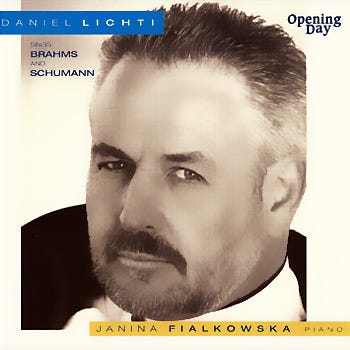
Further performances of Winterreise have included the Teatro Manoel in Italy with pianist Michael Laus, the Temple Square Recital series in Salt Lake City with pianist Paul Dorgan, in the former homes of artists and thespians in Saint Petersburg, Russia with Irina Chukovskaya, in Quebec City with Leslie De’Ath, tours from Winnipeg to Victoria with Sandra Mogenson, with Roland Pröll in Germany, Laetitia Bougnol in Lyon and Paris and most recently, Kitchener to celebrate my 50th year of professional life, a house concert in Kfar Vradim, Israel and recitals in Waterloo and Toronto with the Israeli pianist Ephraim Laor, and recently, an arrangement of the cycle by cellist Richard Krug, which I have performed with the Penderecki String Quartet. While Laetitia Bougnol was in Kitchener in July, we took six young pianists and six young singers with us on a deep dive into Winterreise, as the focal point of the inaugural Art of Lied festival and workshop.
All of the pianists with whom I have partnered have enriched and influenced me as an artist in distinct and special ways. Each has brought their personality, artistry, imagination, and their individual history of influences to bear on our musical relationship, with a generosity that has been humbling and instructive.
The winter journey continues.
Acclaimed as one of Canada’s finest concert and oratorio singers, bass-baritone Daniel Lichti continues to perform worldwide. Since beginning his career at the 1974 Stratford Festival, he has bowed with the Canadian Opera Company, Landestheater Detmold, at Teatro dell’Opera di Roma, L’Opéra de Montréal, Opéra de Québec, Opera Atelier, Edmonton Opera, Opera Hamilton, the BBC Proms, the Bach Choir of Bethlehem, the Bachakademie Stuttgart, the Thomaskirche in Leipzig, Usher Hall in Edinburgh, at St. Albans Organ Festival, the Hercules Saal in Munich as well as at the Kennedy Center and Carnegie Hall. From 1998–2017 Lichti was Associate Professor and Coordinator of Voice for the Faculty of Music at Wilfrid Laurier University in Waterloo, Ontario, Canada.
Schubert and Me by Rachel Fenlon, soprano and pianist
Schubert’s Winterreise is a work that has lived with me as a companion, a mirror, and a vessel for the past four years. I’ve toured the world with it, recorded it, and lived through profound personal moments alongside it. My artistic life feels like it falls into two categories: life before Winterreise and life after. Having performed it over 20 times as a self-accompanied singer/pianist, I feel I am only beginning to scratch the surface of what Winterreise has to say —and what it has given me.
When Schubert composed Winterreise in 1827, he was already living with the terminal stages of syphilis, dying the following year. What he left behind in this cycle feels like an unraveling of his own grief. The protagonist embarks on a cold, dark journey through winter toward a place “no one has ever returned from.” Winterreise grapples with the darker, more isolating aspects of humanity—grief, loss, unrequited love, and longing. Yet even amid this overwhelming darkness, Schubert offers a surprising amount of light.
“For long years I felt torn between the greatest grief and the greatest love… Whenever I attempted to sing of love, it turned to pain. And again, when I tried to sing of pain, it turned to love. Thus were love and pain divided in me.”
—Franz Schubert
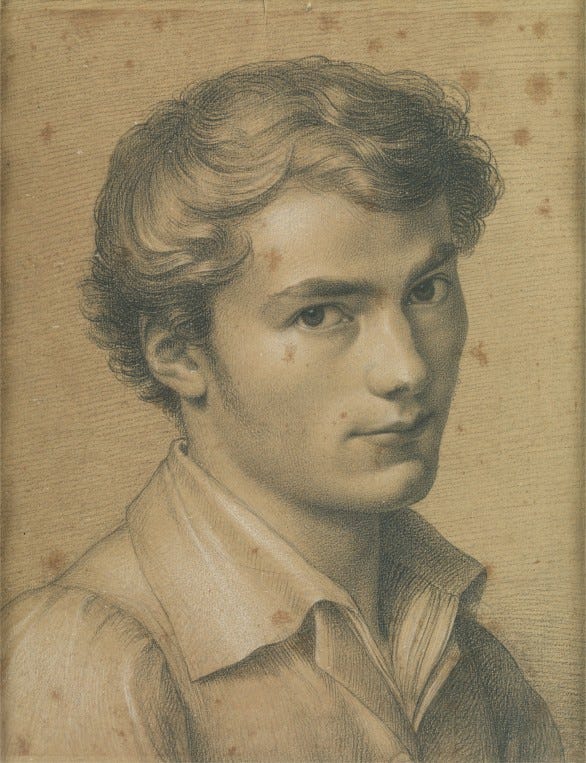
This quote feels like a glimpse into Schubert’s soul, and it echoes throughout Winterreise. Even in its most sorrowful moments, the music in Winterreise often shifts between contrasting emotional states. In songs that might be considered the “saddest,” such as Die Nebensonnen and Das Wirtshaus, we encounter major keys that feel unexpectedly serene. In songs like Wasserflut, set in the key of e minor, there is a sense of lightness and the calming cyclical nature of water. In Die Post, we get a burst of energy and an unexpected hope. In Der Leiermann, often perceived as chilling, there is an acceptance of life’s cyclical nature in the open fifths that ring throughout. Schubert’s contrasting emotional landscapes in Winterreise—joy and sorrow, love and loss—reveal an intimate look into both the psyche of his protagonist and his own.
I first opened the score of Winterreise in 2021. That year, during the pandemic, was a time of collective grief, but also a time of personal loss. One of my closest childhood friends, Karyn, was diagnosed with terminal cancer. I began to immerse myself in the music, knowing that I would lose her. A witness to her illness, Schubert was a companion to my grief. Karyn passed away in 2023, as I was touring Winterreise and recording it. Looking back, it’s unimaginable that I went from attending her celebration of life to the recording studio in the same week. My Winterreise feels deeply interwoven with my own grief, and it has shaped so much of how that grief has been embodied and shared on stage.
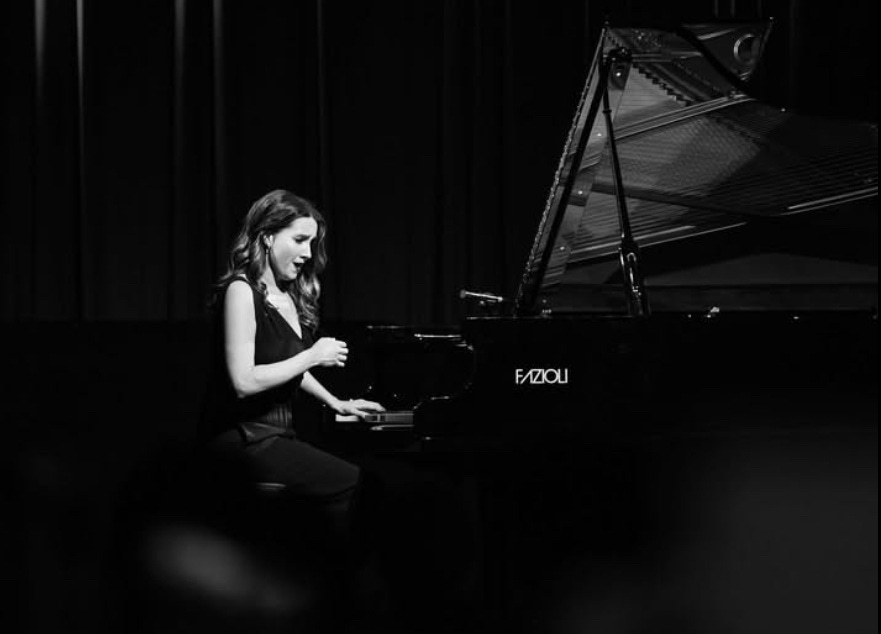
In German, there’s a word, Innigkeit, which translates to “intimacy, tenderness.” Unlike Intimität (also meaning intimacy), Innigkeit refers to a genuine, honest intimacy meant to be shared. Schubert, above any other composer, opens his soul with intimacy that invites us to share in his joy and sorrow. In this communion, we feel our own. In Winterreise, the protagonist invites us into a deeply personal world. While metaphors and symbolism abound, there is a clear specificity and intimacy in the narrative. For example, the devastating first word, “Fremd,” meaning “stranger” (“A stranger I arrived, and a stranger I shall depart”).
We’re given everything—from the passing of time to the landscape and surroundings, and in the music, our emotional landscape—all to pull us into the protagonist’s reality.
As an interpreter, our work is about making sense of someone else’s world. Being both singer and pianist for Winterreise, this work has felt solitary, and intensely personal. There are several things I’ve learned so far on my Winterreise journey. First, being both a singer and pianist is innately solitary, so lean into that sense of loneliness, lean into the question marks. Second, there is only truth or not truth with Schubert—no in-between. If I can’t access my own deep emotions through what Schubert has written, it won’t resonate with the audience. Third, the magic of Winterreise comes alive on stage. You must live the journey with your audience to truly convey it. Winterreise must be as much about the silences between the music as the music itself. A close friend, Simon Bode, a celebrated German tenor, called me after my third performance in 2022 and said, “Congratulations, now you begin to really understand it!” Finally, performing Winterreise repeatedly requires constant reinvention. A key word for me in performance is “surrender,” a mantra I repeat before I go on stage. But surrender is constantly renegotiated. It’s the same with understanding Winterreise. Different pieces reveal themselves on different nights, and much of it is about being open enough – in your mind, in your heart – to receive different perspectives in the moment.
I heard an interview with Judi Dench, speaking about her role as Cleopatra:
“We did a hundred performances (of Antony and Cleopatra). I knew that there was a laugh in a line that Cleopatra said. I tried for 99 performances to get the laugh, and on the hundredth, I got the laugh.”
—Judi Dench
Winterreise is a home for grief —a place where sorrow is acknowledged and transformed. Schubert lays bare his grief — for his impending death, for his sense of isolation as a stranger to the world he loves. Schubert invites us to sit with our pain, and in doing so, shows us that there is light even in the darkest of places.
Rachel Fenlon is a Canadian soprano and pianist who has made a name for herself internationally by performing self-accompanied song recitals. Her debut album, Winterreise, released in October 2024, received critical acclaim, being named Album of the Week by CBC Canada and BBC Radio 3, and Album of the Month by Classic 106 FM. Rachel has performed at prestigious venues including the Martha Argerich Festival, Virtuosi Brazil, Fundación Juan March Madrid, Vancouver Recital Society, Oxford Lieder Festival, and Konzerthaus Berlin, among others.
A Dream of Love Reciprocated: History & the Image by William Kentridge
Written in January, 2014. Printed and redacted with the author’s permission. To read the entire article click here or to watch Mr. Kentridge lecture on his Winterreise at the University of Chicago click here.
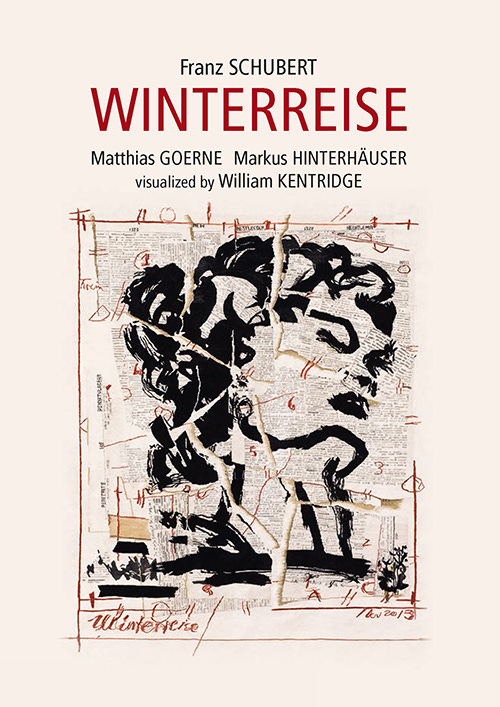
Am I too loud?
Johannesburg, Sunday afternoons after lunch. The hiss of the gramophone needle on the record. The indrawn breath before the music. My father lying on the hard sofa, reading the notes on the record sleeve, overstuffed cushion under his head. The yellow and black label of the Deutsche Grammophon Gesselschaft. Dietrich Fischer-Dieskau the voice, and the piano of Gerald Moore. An English-German offering, as if to show the war really was over.
This was in the 1960s, where in my family it was still out of the question to buy a German car, or even visit Germany or Austria. Sometimes my mother would be in the room, but more often than not, she would leave. She never liked Lieder, but tolerated it for my father’s sake. She even went to concerts with him. But when she turned 50, she claimed the right never to have to go to another Lieder recital or another Wagner opera.
Checkpoint Charlie
In 1981 I visited Berlin, the first time I had been in Germany. I crossed into East Berlin through Checkpoint Charlie. This was a crossing into a strange world of history and fiction. The crossing itself like walking into a film set from The Spy Who Came In from the Cold. But the city on the other side felt strange, transported through time. The piles of rubble, the empty blocks, and particularly the bullet-riddled surfaces of every building made the fact of the war, the destruction of the city, immediate. But not necessarily real. It was not clear which was the front of the stage, and which was backstage. The modern technology and buildings of West Berlin, being the backstage machinery, there to present the spectacle of ruin and the history in the East; or if East Berlin was the creaking basis and support of the shiny film set of West Berlin, the top floor of the Ka De We being the setting for the last act of the opera.
The city was so overloaded. Between the buildings, the stones, the piles of masonry, the weeds growing in empty lots – between all this and my eyes was such a mass of images, stories, histories. Even looking at the buildings themselves felt like a second-hand looking. It was also the experience of a Johannesburg boy venturing into the forbidden terrain of the other side of the iron curtain (a geography excluded for South Africans because of our apartheid policies; at that time western Europe saw Mandela as a terrorist, and support for Mandela and opposition to the apartheid government came mostly from the USSR and DDR). And let it be said – there was another displacement, even in 1981 that put me on edge: that of being a Jew in German terrain.
This is a biographical start to a talk on image and history – by which I mean, what happens when the world comes into the studio. While thinking where to begin on this topic, I have been working on a project made around a performance of the song cycle Winterreise, by Schubert.
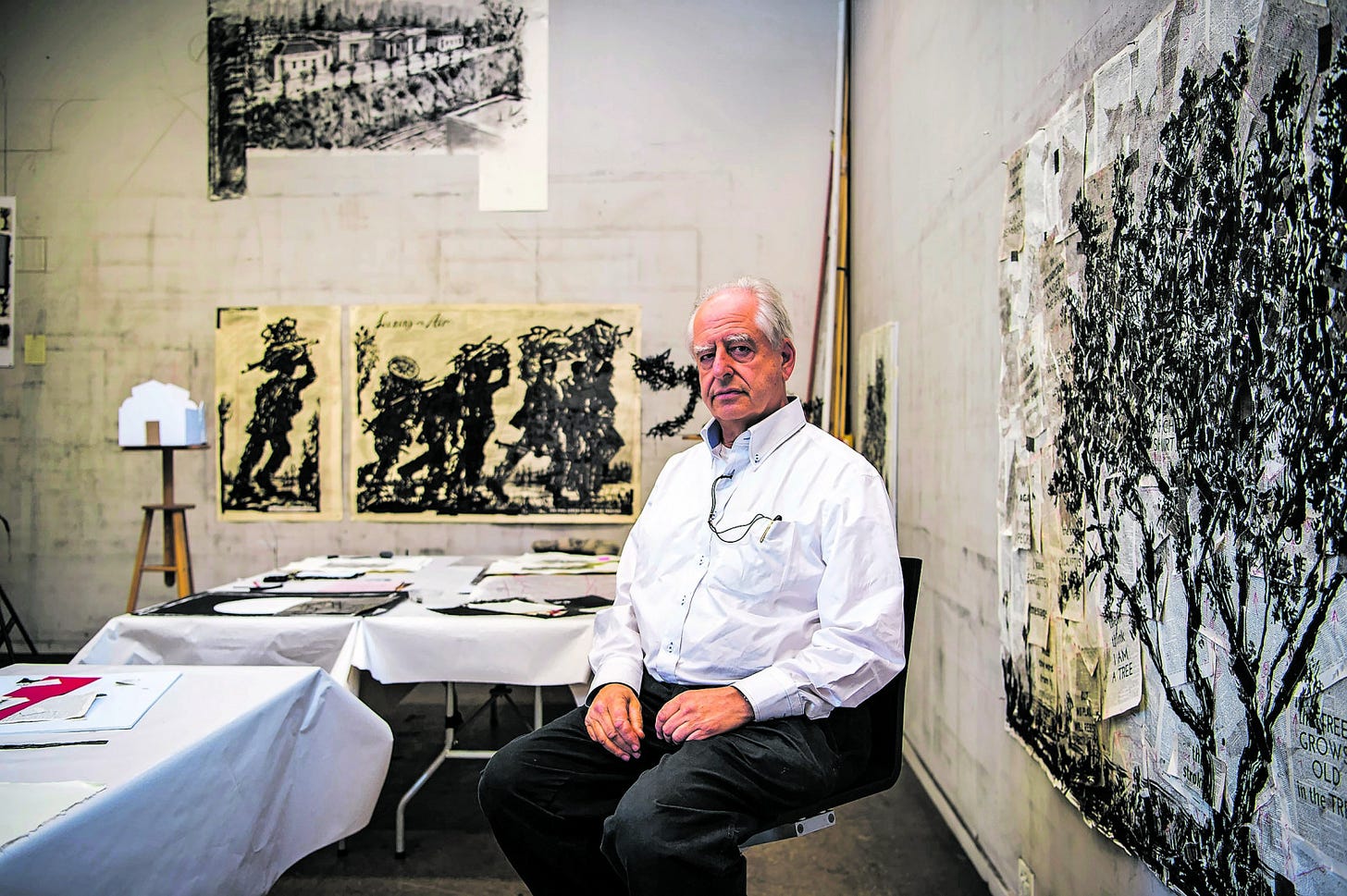
Why Winterreise? It started as a thought of making a cycle of films, like a cycle of songs. I thought of the music of Satie or other early 20th century music. To test ideas I started to look at pieces of film I had already made, whilst listening to different pieces of music. One of the pieces of music I tested was Winterreise, vestigially familiar from childhood.
Drawing in Words
On those Sunday afternoons with my father there was the red and black Penguin book of Lieder, a bilingual edition. I tried to read some of it. It was like reading a prayer book. Each phrase or sentence was comprehensible, but taken together, it became impenetrable. A wall of words that stopped understanding (I would have been between twelve and fifteen at the time). I remember wondering why a song went from such lyricism to shouting and back – feeling that there must be a pattern or logic behind the songs, but not feeling a strong desire to seek out the text. The text was of course important, but the song was much more than the text.
In primary school music lessons, we had learned to sing “Die Forelle” in English. Even then, I felt a gap between the flow and run of the piano, and the awkwardness of the words that we sang. ‘A brooklet clear was running’ (‘In einem Bächlein helle da schoß in froher Eil’). Nobody spoke like that. A brooklet? (There are no brooks near Johannesburg. Ditches. Muddy streams. But no brooks.) There was a gulf between the insistent, contagious, even inevitable nature of the music and the words – the fact of their specificity. The voice must sing the words, but we hear and don’t hear the words. We are caught somewhere in the space between the piano, the words and our imagining.
What to draw?
The first material I started on for the films was stilted, halted by the words of the songs. I needed to draw a gate, I needed to draw snow (and it has only snowed five times in the 58 years of my life in Johannesburg; who was I to draw snow?), I needed to draw a weather vane.
I stopped pushing in this way and looked at what I had drawn without thinking about Winterreise. A series of revolving transforming sculptures already there, turning into a weather vane. The black paper confetti I had used in several earlier films was already snow falling. I had not drawn a Leiermann or a pianola, but I had some years ago used the punched holes of a pianola roll in a film. These now became (they were already were) either a different snow slowly descending or the ice of “Gefror’ne Tränen.”
Music as exemplified by the piano has obvious similarities to film. A transformation of time into palpable material, the frames of the film the notes of the piano. In some of the films for Winterreise, a flipbook technique is used. Pages of the book change for each frame of the film. The rapidly turning pages of the flipbook films I had made became the speed of the fingers of the pianist, the abundance of notes coming from the piano.
In each case, the found image was stronger. Images pushed into service for another idea, but hinting at or coming back with some connection. The instability of a sculpture which was either a telephone or a woman, and the instability of emotion in “Die Wetterfahne.” New material has been drawn for many films, some made entirely new, but generally the pieces that feel strongest are where the music and images amplify each other, and are found rather than made.
The Winterreise project is a trio: a pianist, a singer, the projector. But also a trio of music, text and images. The question of what has primacy – prima la musica, dopo le parole – has been at the heart of opera, a question still unresolved and unresolvable. The imposition of images, fundamental in opera, but not the norm in a song recital, complicates but does not change the fundamental question: what is the space the song occupies in us? The uncharted tension between the limited exactness of the words, and the specific but unplottable meaning of the music: an internal space for the construction of sense.
There is both an ignorance (of language and of tradition) and an inward pressure to connect to the musical event using whatever means possible. This is not to celebrate incomprehension, but an argument for the irrational, unstructured way we make meaning.
Who Needs the Words?
Roland Barthes in his essay ‘The Grain of the Voice’, an essay about Dietrich Fischer-Dieskau, makes the distinction between the ‘theno-song’ and the ‘geno-song’. He characterizes the theno-song, as exemplified by Dietrich Fischer-Dieskau, as singing tied to the dictionary, too based on a clarity of diction of the singer, as if the key to the song is to get the listener to hear every word – so clearly that they cannot avoid ‘the brooklet clear’ of the track. The geno-song (which Barthes hears in the voice of Charles Panzera, the Swiss baritone) is characterized by a voluptuousness, clarity of diction being secondary to the embodiment of the music. The voice, rather than just finding meaning, has to give form to the ‘jouissance’ of the music, the ‘unstable landing point of that desire, joy, or individual thrill’ we feel but find difficult to put into words, that music gives us. The erotic, sensuous charge that music evokes on hearing not just in the head. But Barthes’s argument is also against the perfection of high-fidelity long-playing records, as opposed to the crackly instability of pre-World War II 78 rpm recordings of Panzera. He is longing for a familiar sound, for a graininess. The logical argument is always mired in nostalgia, a private memory inseparable from objective pronouncement – in this case the sounds of the record that Barthes had grown up with and was familiar with.
Working on the Winterreise project – making or finding images for the music – the closest I would come to being a musician – is also about reclaiming those Sunday afternoons, the smell of the cherrywood cabinet, with its neatly labeled drawers for records (Drawer 5: Schubert – not Lieder; Drawer 5a: Lieder (including Wolf and Schumann)). But it is also an after the fact justification of defense of the ‘half-understood’.
I have the text of all the Winterreise songs, in German, in English. I do know the meaning of each of them. The poetry is not dense, the sense not complex. But still while working on each song, I find myself back in the old way of listening to Lieder – a title, a direction, and then the specifics of each line retreating in a mist of incomprehension. I can and do deliberately lift this mist; but always, as I let it drop, I feel closer to the music, closer to each song. I am aware this is precarious terrain: a celebration of incomprehension. I cannot disguise ignorance, in my case ignorance of the German language, which is a lack. But I want to redeem that with the imaginative gain this lack produces.
I am aware this is a Johannesburg perspective. A projection onto the given of the work. The record is like a letter from another world. But there is always distancing. Caspar David Friedrich’s landscapes are both depictions of what he saw, but also constructions made from notes made in his notebooks – ‘ice on a leaf’, the particular form of the angle of separation of branches.
Even in the Vienna of Schubert there is a distancing. Müller, the poet, was very affected by Mary Shelley’s Frankenstein, and his ongoing theme of the traveler walking to his death in the frozen landscape owes much to the image of Frankenstein’s monster on the ice floes at the end of the novel.
This is obvious with painting or writing. What is less obvious is the way this artifice is the model of how we all go through and apprehend the world.
There is the domestic comfort of the Schubertiade, a place of sanctuary in Metternich’s Vienna, a safe space out of the censorship that controlled and confined public space. The rural life in the songs was even then a view of a life idealized and abandoned.
And then there is the gap between the music and the words – the specific words being necessary but inessential. The precise, inarticulateness of the music, the instability being its truth. This is not to claim that music is the unconscious of the song, the truth behind the ostensible meaning of the words; but to make a space for other words and thoughts that the music invokes. To listen to the songs is not to invent lyrics for them, but to enter into a space of specific openness – a precision of meaning one knows is there – the singer had to know the words (as the Rabbi had to know the words of the Hebrew prayers in schul, but we did not).
As a listener one floats between the precision of the piano and words into an area of openness. Not having to visualize a trout in a river, but rather to sense in the music the ripples up and down our own thorax. (If I have to pull a visual image from listening to the trout now, it would be not of a river, but of Mr Reyneke, our music teacher, in his grey three-piece suit, sitting at the piano on stage, and 46 boys in shorts sitting on the floor below him, in the school hall.)
In the films I have made over the years, there has always been a movement between drawing and listening. Showing early stages of the film to the composer (for most films, the composer Philip Miller), and then both of us adjusting our work successively, as the music is written and new image emerge. With Winterreise the process was one not so much of making new drawings, though there are those too, but finding connections: rhythmic, textual, iconic, that felt a good meeting between the songs, written in Vienna in the 1820s and images made in South Africa 180 years later. Not finding (nor looking for) illustrations of the songs – drawing a gate when the word ‘gate’ is heard, or a mountain, or a river – or even directly translating them – a mine dump for a mountain, a storm water drain for a river. Then what? Finding broader corollaries. Films of walking. The bleached Highveld landscape for the snow filled white landscape of the songs.
The shock has been to find a Winterreise that was sitting somewhere in me all these years – as if I had been drawing the project for twenty years. Discovering in working on the songs part of what the films had been all along. This has been the case with other projects too. While working on a production of Gogol’s short story as Shostakovich’s opera The Nose, I found the same thing – I had been had been drawing the opera for years before I came to it. One could do a tracking back of the history of The Nose in the same way as I have done for Winterreise. There is both an image of history, but also a history of the image, which cannot be separated from it.
William Kentridge (born Johannesburg, South Africa, 1955) is one of the world’s leading contemporary artists. His work has been seen in museums and galleries around the world including the Museum of Modern Art in New York, the Albertina Museum in Vienna, Musée du Louvre in Paris, and countless others. His opera productions including Mozart’s The Magic Flute, Shostakovich’s The Nose, and Alban Berg’s operas Lulu and Wozzeck have been seen at the Metropolitan Opera in New York, La Scala in Milan, and the Salzburg Festival.
This season, his production of Wozzeck can be seen at the Canadian Opera Company from April 25th-May 16th. Learn more at www.kentridge.studio/ and head to Medici.tv to watch Kentridge’s entire Winterreise with Matthias Goerne and Markus Hinterhäuser from Aix-en-Provence.

Daniel Black’s Six Love Songs of Pablo Neruda (2020, orchestrated 2024) by Daniel Black, composer & conductor
Those looking to add Spanish-language art songs to your repertoire might consider my Six Love Songs of Pablo Neruda. The original version is for soprano and piano, although a transposition for low voice is also available. With a total duration of around 23 minutes, each song sets a different poem from Chilean poet Pablo Neruda’s 100 Love Sonnets. I composed this cycle in the summer of 2020 after a chance encounter with the Neruda collection at a used bookstore in Kitchener, Ontario. Neruda’s poems immediately struck me with their depth, beauty, variety, and universal humanity. My song cycle places particular emphasis on clarity and expressiveness of the vocal line with simple harmonic accompaniment. I endeavoured to express the emotions of Neruda’s beautiful words exploring love from a different angles; from the dreamy nostalgia of the first song (« Amor, cuantos caminos hasta llegar a un beso »), to the sense of shared humanity in the second (« Radiantes días »), the naturalism of the third (« Pero, olvidé que tus manos »), the fierce empathy of the fourth (« Espinas, vidrios rotos »), the wistful sadness of the fifth, to the cosmic optimism of the sixth (Y esta palabra, este papel escrito »). Piano-vocal scores are available at www.jwpepper.com.
Daniel Black is a Montreal-based conductor and composer whose works have been performed on three continents. A three-time recipient of the Solti Foundation’s U.S. Career Assistance Award, Daniel has held conducting positions with The Florida Orchestra and the Fort Worth Symphony Orchestra and has guest-conducted across the United States, Canada, the Ukraine, and Russia. His composition mentors have included Richard Danielpour, François-Hugues Leclair, and Ana Sokolovic.
Editor’s note: Readers, do you have a little known song cycle you’d like to share with the Art Song Canada community? Write to us at [email protected] to be featured!
Please consider making a contribution to the Foundation today.
When icicles hang by the wall
And Dick the shepherd blows his nail
And Tom bears logs into the hall
And milk comes frozen home in pail,
When blood is nipp’d and ways be foul,
Then nightly sings the staring owl,
Tu-whit;
Tu-who, a merry note,
While greasy Joan doth keel the pot.
When all aloud the wind doth blow
And coughing drowns the parson’s saw
And birds sit brooding in the snow
And Marian’s nose looks red and raw,
When roasted crabs hiss in the bowl,
Then nightly sings the staring owl,
Tu-whit;
Tu-who, a merry note,
While greasy Joan doth keel the pot.
-William Shakespeare (Love’s Labour’s Lost, Act V, sc. ii)
December is upon us, dear readers! ❄️ As much a season of yule and warmth as it is a season of seeking refuge from Canada’s bitter cold. What better time to dive into music and poetry? To get you in the mood, this season’s issue brings you into the minds of three of Canada’s finest interpreters of art song: bass-baritone Philippe Sly, soprano Mireille Asselin, and tenor Michael Schade. Each of these world-class artists spends this issue musing on what it means to them to interpret art song and how it differs from the rest of their artistic practise (including that 🐘 in the room – OPERA).
Following these explorations, pianist Michele Wong (currently pursuing a DMA at New York’s prestigious Juilliard School) introduces us to the young American composer Jacob Weranek’s Three Poems cycle, which Wong recently premiered with the Canadian mezzo-soprano Stephanie Bell.1
Happy reading!
— Sara Schabas, editor
NB: If you enjoy this issue, please consider donating to support the Art Song Foundation of Canada’s bursary programs for young Canadian singers and pianists.
The habit of song by Philippe Sly, bass-baritone
It’s a sunny day along the Venetian Lagoon. We’ve been walking all afternoon and the cicchetti we devoured seem awfully far away. “But what is actually going on?” Alasdair continues. “What do you mean?” I retort, a little confused. “What is happening when you sing a song? What are you doing?” Silence… I am struck dumb by Alasdair’s question. “In a play or an opera, a character has his motivations and actions,” Alasdair continues. “The actor or singer must ask the question, ‘what do I want’ and ‘how will I go about achieving it.’ There is no such framework in song.” Put another way; the stakes at play for the narrator are not fundamental to the audience’s appreciation and understanding of the song.
Why hadn’t I asked this question before? After all, I had been performing recitals as a classically trained singer for a good ten years. Perhaps it is something we take for granted. A song is a song, people sing them all the time; to our little ones as they fall asleep, on our drive to work, at the top of our lungs at midnight surrounded with tipsy grinning faces. In these moments do we stop and think to ourselves, “Hmm, how should I interpret this song?” No, we launch into it and we let the song guide us. It is a habit. We simply know what a song is because it is something we all do. In this same way, I took for granted how precisely a song works.
When we listen to someone sing or sing ourselves, it is as though the simple act of singing has its own innate drama; as if we were suddenly plugged into the vein of a deep and mysterious spring.
My mother tells this story: The principal of my kindergarten called her in. “I’m concerned about your son, Philippe. He has the habit of constantly leaving class to go to the bathroom, but he does so to sing… and this every day!” My mother simply replied, “Let the boy sing.”
There was wisdom in my mother’s response. For me, singing became a process of both self-discovery and recognition. I say recognition because it is often through music that we “re-cognize” our own emotional depth; a kind of act of remembering that simultaneously changes us. This is a fundamental feature of song.
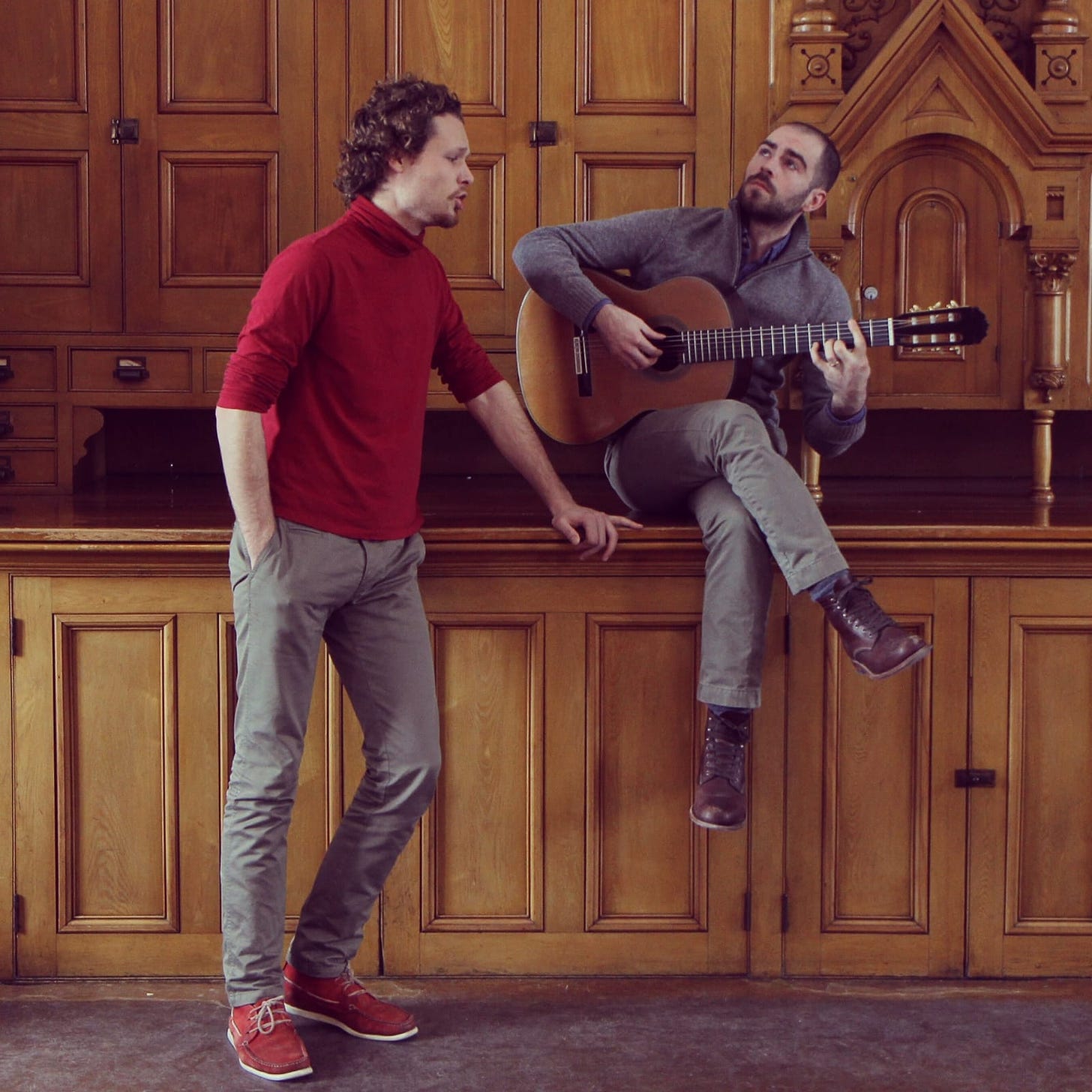
The impact of my first listening to Mahler’s second symphony was unmistakably of this category. Mahler’s reality became my own, as if my dreams had suddenly flooded my waking reality and forever altered its landscape. Then suddenly, Mahler turns to the sung lyric, “O red rose, man lies in direst need, man lies in direst pain…”
It is no coincidence that Mahler turned to lyric poetry at the climax of this symphony. The marriage of word and music has a heightened expressive power. In song, sentiment and symbol are bound into a dance, each relying on the unique gestures of the other. Like lovers tenderly (and not so tenderly) intertwined, this marriage of lyric and melody also has its tensions; a kind of tango where one must yield as the other expands. Differences in rhythm and emphasis deeply enrich the whole of the song. It’s not a match made in heaven, it is one made on earth.
When Alasdair asked, “How does one sing a song?” my answer should have been, “How does one read out a poem?”
How often do you read a poem aloud? As a child I would sing anywhere and whenever I pleased (my colleagues at the opera house will exasperatingly report that I still do). As an adult however, I will more often turn to poetry for that special connection. Poetry is a learned habit. It was passed on to me by an individual whose love for the form was intoxicating. He would say, “Philippe, I need you to love this word, otherwise the poem doesn’t hold.”
It takes a certain generosity to declaim a poem. Most of us will read a poem every now and again, some of us may even listen to one. It does not seem in our habits to recite them aloud to ourselves let alone to others. It is a loss. Like classical music, oysters, and whiskey (in that order), one’s appreciation for poetry needs to be learned.
Or does it? It took me a good three years and countless evening rehearsals on Oxford Street to appreciate the distilled barley brew. However, the first time my mentor Michael McMahon had me read out verses of Goethe with him the connection was made. No gradual conditioning was needed. I immediately recognized that if I was generous with the poem, if I breathed into its colours, if I leaned into its contours and let myself be sung by its inherent rhythm, the poem would sing back.
So how does a song work? As a singer I’m bound to satisfy the unique expressive qualities of the poem and the musical line. The poem gives birth to the music, the music is the medium in which the poem breathes, and the breath is the bow with which the singer ignites and engages our imagination.
Philippe Sly, a French-Canadian bass-baritone, is celebrated for his performances, both in opera and in recital. His operatic career includes notable roles at the Paris Opera, San Francisco Opera, and Wiener Staatsoper. As a recitalist, Sly has toured extensively in North America and Europe. Frequent collaborators include pianists Michael McMahon, Olivier Godin, and Julius Drake, as well as guitarist John Charles Britton.
Du holde Kunst by Michael Schade, tenor
NB: An extended version of this article can be accessed at this link.
What makes singing Lieder and recitals so special and different? It is that you have to be a kind of “all-rounder” to really understand how to pass the passion of this intimate type of performance genre, not only to audiences, but also to the next generations of singers.
My greatest mentor, the late Austrian historical performance guru and world famous conductor, Nikolaus Harnoncourt, once told me, “Music is the umbilical cord that connects us with godliness.” I have never met another person in my life that was so dedicated, not only to performing beautiful music, but to basing his performances on the knowledge of what the score asked for, the history of the composer and of what other composers and artists of the same given period were saying (in other words, researching sources), and the historical research on the instruments that a composer had available to him or her at the time. The amazing thing though, for me, has been, that even though he was one of the greatest scholars of music, Nicholas Harnoncourt was the Germans call ein Bauchmusiker. In other words, an instinctive, creative musician, whose music is at the end of the day expressed through the gut feeling of what feels right and what is wrong.
When you truly follow your gut, when you are truly passionate about something, the more you delve into your passion, the more it becomes part of your life – as an expression of yourself and your soul.
We musicians have one of the great honours in life: that our hobby is our passion, and our passion is our work. The more music becomes part of one’s life and the deeper one delves into the history of what it is that we do, the more we can feel and see music’s relevance to the present, bringing out the greater truth of any given piece.
I often say that the world needs art song like the world needs prayer or faith. We may think we don’t need it for most of our lives, but we eventually need to be reminded of what is important. Faith and art song go hand in hand. This applies especially when life is born or at the beginning of a budding and loving relationship where you pray that the one that you seek in love actually notices you. When in love, one can write entire poems about a flower and find momentous musings about the smallest of things with hope that the loved one may notice you.
As I have grown into the life of being a singer, I’ve realized evermore that with each of the Lieder I sing, I meet a new part of myself. I learn along the path of life with each of the poems I’ve sung and these words are actually my dear, dear friends. I need nothing else but a view out the window, a walk-through a park, a train or plane ride, all to realize that I’m not ever alone. I can always call up one of my friends – each of which has incredible insights into life and the ability to gently make me feel humbled and teach me something about the future. They are such awesome friends that they even take away the pain of missing my children and my wife when on the road (even if only momentarily)!
If I can summarize what art song means to me, it is that it’s the essence of singing.
Why? Because it is an art form comparable to making a great sauce in the world of cooking. You start with a lot of goodness and you have to boil it way, way down and reduce it to a minimum to get to the core taste of it and find its real value. The core of humanity is, at the end of the day, the truth which shines through one’s soul. Being an all-round singer means that you have to try to always communicate the truth. Yes, even in the large scale of opera performances or the concert setting of oratorio performances. Then, one must really hold onto their heart to be able to delve down and make that reduction be something special in art song or Liederabend performances.

I am honoured to have been allowed to live a life of delving into the art and friendship of so many Lieder. It is my great hope that the next generations will share the joy of this art format. That they will make friends with the poems and share the ideals and the truth of life in “Liederland,” which at the end of the day, is all about singing from the heart and telling the truth; giving the audience the chance to feel their own hearts and their own truths! That’s what faith is: feeling and seeking your truths.
It is all a bit of a calling and the more you listen to that calling, the more the flutters of the nerves of am I good enough? go away and are replaced with the joy and certainty that you may just help someone achieve a better moment in this world.
Du holde Kunst, ich danke Dir dafür!
The tenor Michael Schade is an Officer of the Order of Canada and was named a Kammersänger by the Austrian government in 2007, the first Canadian to receive this honour. He currently lives in Vienna where he is a professor at the Universität für Musik und darstellende Kunst and artistic director of the Internationale Barocktage Melk.
The pilgrimage of art song by Mireille Asselin, soprano
Art song was my first vocal love and in many ways my gateway into an operatic career. I remember fondly my discovery of Debussy and Fauré’s songs, specifically their settings of works by Verlaine. I was in high school, and the combo of angsty poetry written by a young, tormented man, and the gorgeous, melancholy music to which it was set seemed like a revelation. Singing them was my safe space in which to process and release the emotions I had bottled up inside. For a shy, bookish kid like me it was akin to therapy. An artistic pressure release valve. I loved it, and it made me love singing.
Opera came later, the natural progression of things as I aged and that repertoire became available to me. With it, I tackled the next great set of challenges: developing a vocal technique that would stand up to large orchestras, focusing on acting and stage craft to push past my entrenched shyness and inhabit characters with full abandon. In so doing, I also fell in love with opera.
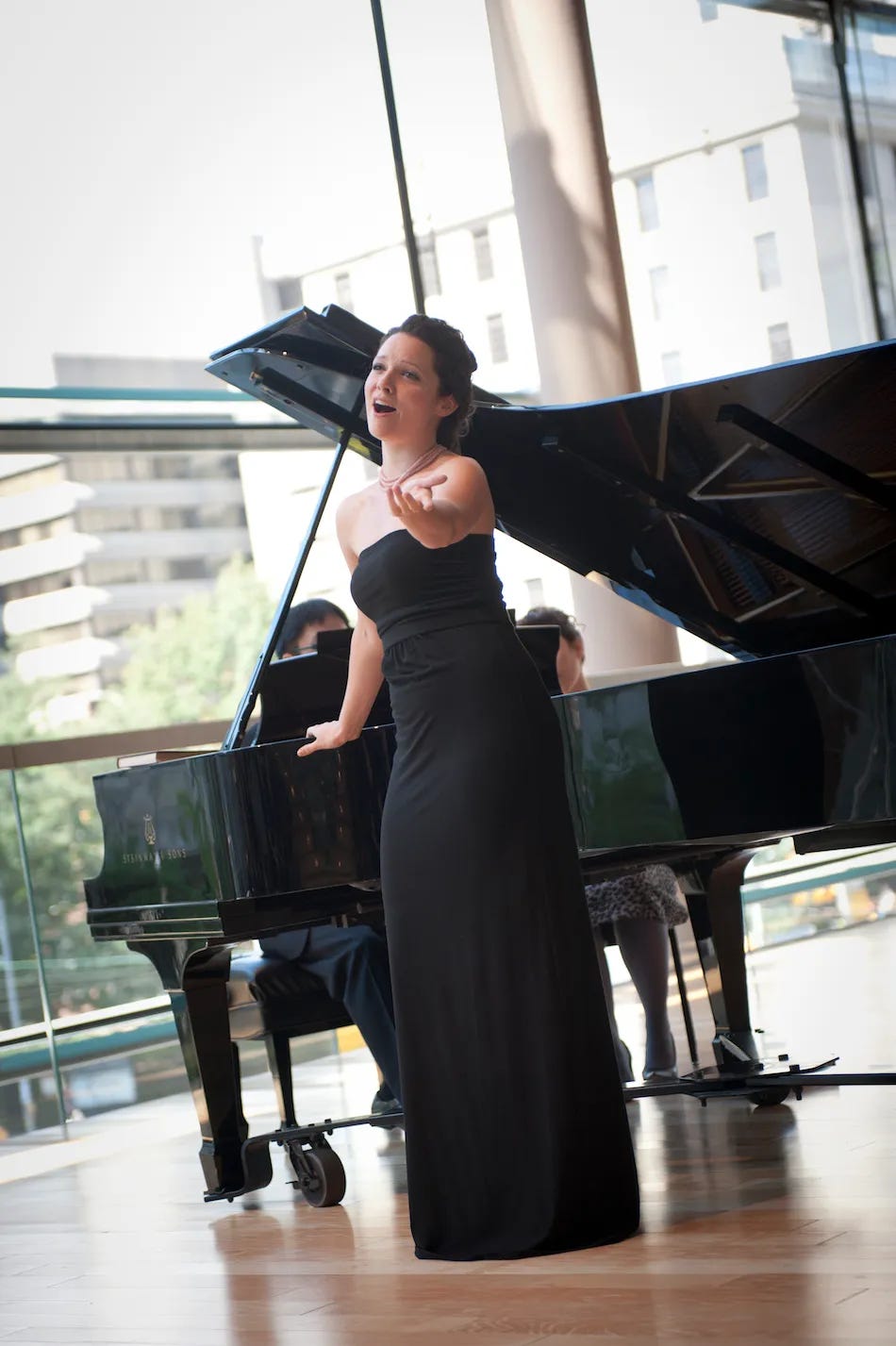
Performing opera often feels like a superhuman feat. The stamina, focus, intense preparation and output of energy… it can have you riding high once the race has been run! But the most personal and challenging creative act I do in my career remains the art song recital. In opera, I am cast in a pre-existing project. In recitals, I build the project from the ground up. Opera is this great, big, amazing machine with lots of creative input coming from all corners. Art song is profoundly personal and exposed, with just you and your pianist or other collaborators baring your souls on stage. No costumes, no artifice, just art.
In many ways, crafting and singing a good recital program is still my primary form of therapy. I can spend days upon days thinking about a theme or idea which feels important to me. I then give myself over to the research process – I read poetry, I listen to great recordings, I pull dusty scores off my shelves and get lost in the stacks of a music library. I call mentors and friends and get their ideas, talk to them about love or loss or remembrance or grief or motherhood and the songs that are their touchstones through those things. Then comes The Great Organizing Of Thoughts! What do I want to say? How do seemingly unrelated works connect or provide commentary on one another? How do I balance things? And of course, what does my collaborator think about all of this?
Some projects have helped me process the loss of a loved one, some allowed me to express patriotism or joy, some have just been bits of whimsy… but each recital has marked a moment of growth in my life, and I felt like I emerged from each with a greater understanding of myself and of my place in the world.
If opera is like running a marathon, then art song is a pilgrimage. And I am so grateful for both.
Canadian soprano Mireille Asselin has been deemed “a treasure” by the Toronto Star. She enjoys a diverse, international career spanning concert, opera and recital work, including leading roles at the Metropolitan Opera and numerous recital and recording projects.

Jacob Beranek’s Three Poems (2024) by Michele Wong, pianist
This past year, I had the opportunity of premiering a song set by Jacob Beranek with the Canadian mezzo-soprano Stephanie Bell on her Juilliard degree recital. Beranek’s set uses poetry by Bridges, Wordsworth, and Keats, and the texts muse on beauty and its role in our lives. In the composer’s own words, the first song “describes the creative reaction to beauty”, the second “explores the reaction of wonder, and the third “transcendentally sums up the two prior songs: ‘Beauty is truth, truth beauty,—that is all you know on earth, and all you need to know.’” As beautiful as the music itself is, perhaps the most profound beauty present in the set is the craftsmanship that emerges between the lines – the care given to every shape, every harmony, and every nuance in the texture reveals the beauty of the creative process itself, not just the finished result. The song set pays tribute not just to the beauty we observe around us, but the beauty we strive to create. Collaborating together on the set was a moving reminder about the best part of being in the art song world: how composers, poets, performers, and ultimately listeners all share for a brief yet impactful moment our individual longings for what is beautiful and true, and thus experience a powerful instance of unified creativity through it that cannot be equaled any other way.
Michele Wong is an NYC-based collaborative pianist and chamber musician currently pursuing her doctorate at the Juilliard school. Passionate about art song, she has participated in programs such as Songfest, SourceSong, and the Schubert Institut, and worked closely with composers including John Harbison, Jake Heggie, and Ben Moore.
Editor’s note: Readers, do you have a little known song cycle you’d like to share with the Art Song Canada community? Write to us at [email protected] to be featured!
Please consider making a contribution to the Foundation today.
Golden tropft Blatt um Blatt
(Golden falls leaf upon leaf)
Nieder vom hohen Akazienbaum.
(Down from the high acacia tree.)
Sommer lächelt erstaunt und matt
(Summer smiles, astonished and weak,)
In den sterbenden Gartentraum.
(In the dying garden’s dream.)
– “September,” Hermann Hesse (Vier letzte Lieder, Richard Strauss)
Dear readers, welcome to Art Song Canada’s Fall 2024 Edition! This issue explores the communal aspects of art song performance and creation, featuring writers from across Canada. From British Columbia, mezzo-soprano and civic engagement specialist Rebecca Hass describes how art song performers in Victoria are collaborating with Indigenous Elders and language speakers to translate canonic works into their languages. Over in Halifax, soprano Maureen Batt interviews composers and poets for a look at the collaborative aspects of song creation, focusing on Fiona Ryan’s “Lady of the Lake” and Saman Shahi’s “Breathing in the Shadows.” Finally, art song enthusiast Dr. Don Melady recounts a communal exploration of Schubert’s Winterreise that began over the pandemic and culminated in two Liederabende performed in Toronto last spring (cet article est également disponible en français).
Following our featured articles, we continue with our Introducing… series for little-known song cycles, this time looking at Xavier Leroux’s La solitaire.1
Thank you for reading with us. If you enjoy this issue, please consider donating to support the Art Song Foundation of Canada’s bursary programs for young Canadian singers and pianists. Allons-y!
— Sara Schabas, editor
Indigenous Language Art Song Project by Rebecca Hass, mezzo-soprano, composer, community-builder
At Pacific Opera Victoria (POV), I design programs and build community partnerships. In my own compositional practise, I am fascinated by how the language of different nations reflects worldview, the land, and the people. As a classical singer, and a person of Métis ancestry, I have been active in singing and composing songs for local urban Indigenous drum groups for the last few years. It was this very personal journey of Indigenous language and song that inspired me to create a bridge between the classical European musical world and my Indigenous community.
I envisioned a song translation program that could help build an authentic relationship between POV and Elders who are speakers of their community’s languages. This would support the work of Reconciliation, POV, and our Indigenous community by showcasing the Indigenous community’s languages in action. This past spring, Pacific Opera hosted two artists-in-residence – Camila Montefusco and Nicole Ross – and their residency seemed the perfect opportunity to explore this idea.
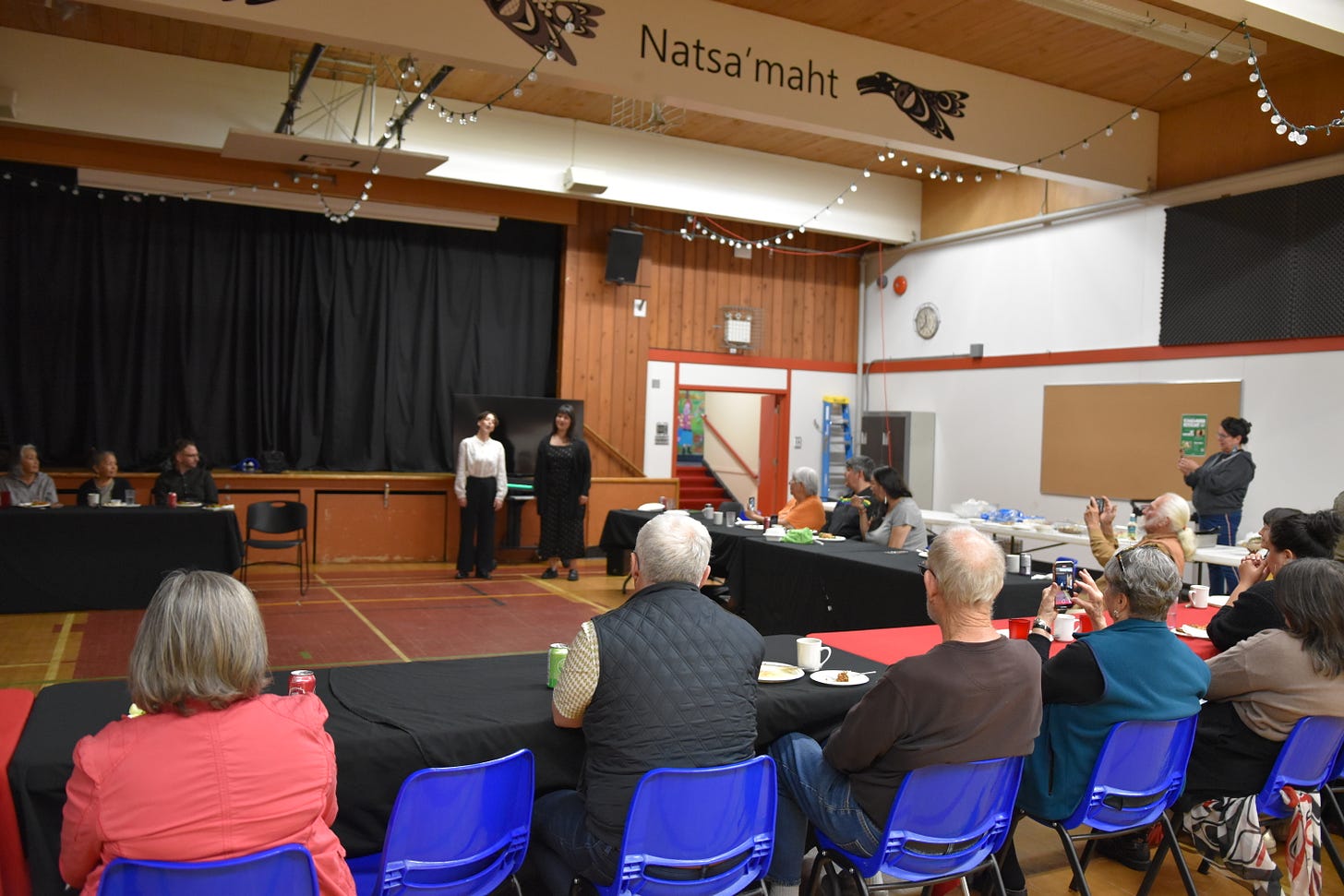
Despite the immediate excitement to engage in this work, this project was challenging for the company and the artists involved. In our work in classical music, we have preconceived notions about how we prepare pieces and what a successful performance looks like. For example, to work with the Indigenous Elders who would be our translators, a relationship between the company, the artists and the Elders had to be forged. Rather than racing to prepare for the lunch performance at the Victoria Native Friendship Centre, time was taken for tea, snacks, and visiting. Much more time was spent visiting than in traditional practice or rehearsal time. Throughout the process, I asked the artists to trust that success in this project would be measured by the good relationships that we were building, rather than the professional quality of the upcoming performance.
Two months ahead of the performance, I asked the singers to send me a few art songs in the vein of a folk song with a simple story in any language. From what they each sent me, I looked at song lengths, the poetry, and the nature of the melodic line. Once I selected the song that I felt would be most successful in translation, I considered the singers’ personalities and matched them to an Elder for the process. I built relationships with two Elders ahead of time, and worked with the translations they developed, fitting them into the pieces and making sure that the musical structure supported the words so it all made sense. As it turns out, Anishinaabe words are much longer than Russian and English words which meant I had to choose to cut some text in one of the songs.
“How Fair This Spot” (Opus 21) by Sergei Rachmaninoff with text by Glafira Adol’fovna Galina was translated into Anishinaabe by Elder Aldeen Mason of the Sagkeeng First Nation. Manual de Falla’s “Nana” (Siete Canciones de populares Españolas, anon. poet) was translated into Nu-Chah-Nulth by Ahousat Elder, Genevieve Mack. Rachmaninoff’s song features imagery from the natural world while the de Falla song is a lullaby.
Both of the poems selected resonated with the Indigenous speakers. However, translating European repertoire into Indigenous languages led to challenges. In the Rachmaninoff, we encountered the word ‘meadow’, for which there is no Anishinaabe word. Aldeen translated it to ‘grasses’, which is what she imagined when she thought of the fields in her home territory outside of Winnipeg. Nicole Ross, who had sung the song often in Russian, noted that the vowel placement in Anishinaabe resembled the Russian text. For the de Falla, Genevieve described the syllables and sounds in Nu-chah-nulth that are used to rock a baby. She sang us a lullaby her mother used to sing and explained the words in her language for the startle cry of a baby awakened from a nap.
The final private session with the singers and the speakers was a tear-filled afternoon. Genevieve recounted her experiences at Residential school being punished for speaking her language. She told us that to have artists come to visit and take the time to learn her language and sing a beautiful song to her was a moment of great happiness and gratitude. Our resident artists performed these songs in a small program at an Elders’ lunch hosted at the Friendship Centre. Our Anishinaabe speaker, Aldeen, was so excited and proud that she invited her family along.
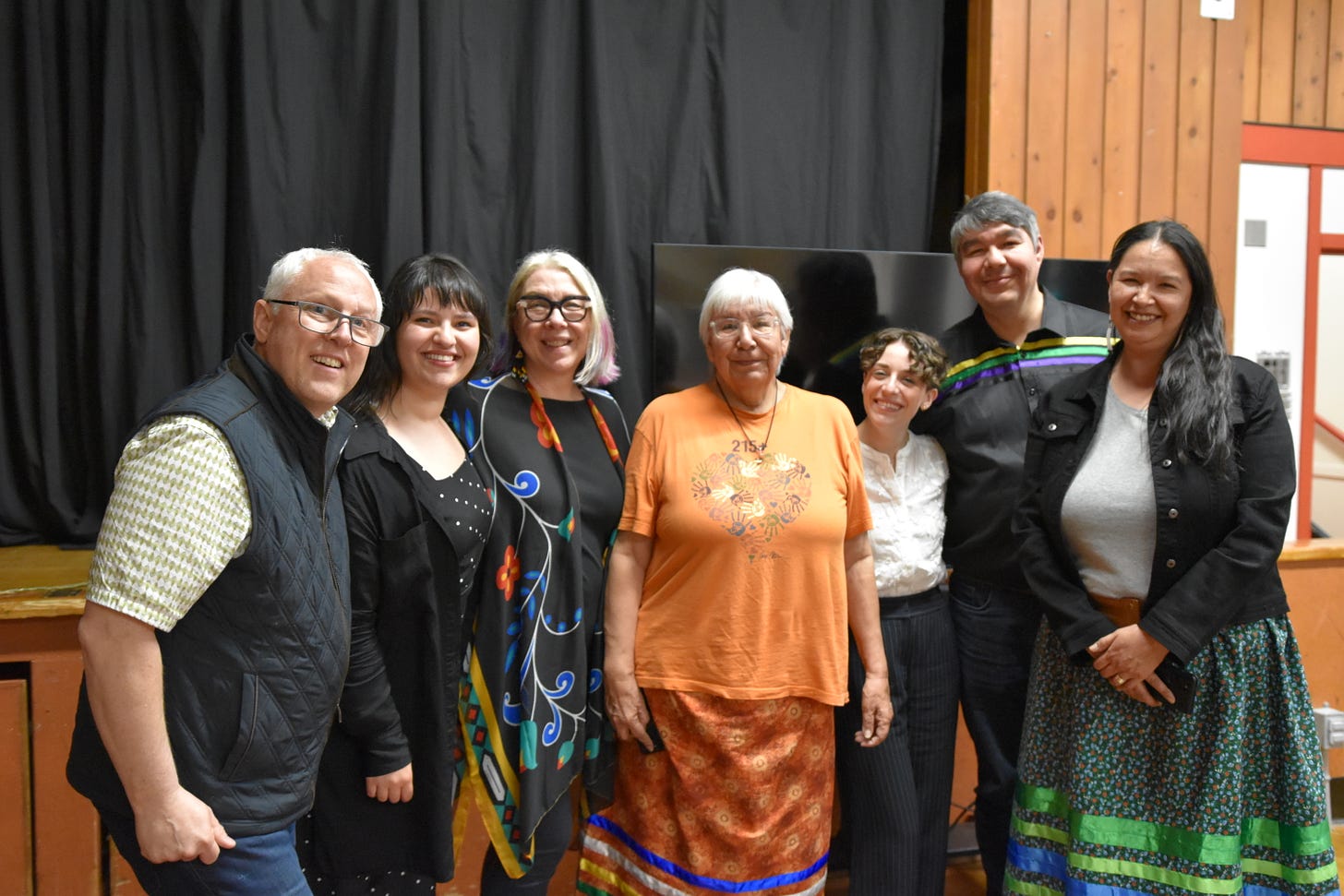
For me, this project confirmed the value of relationships when music-making and the power of music-making beyond the aesthetic. Our project built bridges and created excitement and interest in the community to continue. This season I will be undertaking six more translation projects with other Indigenous languages and speakers. I can’t wait to continue visiting, drinking tea, and making music for our community. Mezzo-soprano and artist-in-residence Camila Montefusco summed it up perfectly when she shared this with me at the end of the program:
“Having the chance to translate a classical piece to an Indigenous language and perform it during our residency shows me yet another way in which music can serve as a cultural bridge. It opened the doors to what I believe is possible for the future of our art form.”
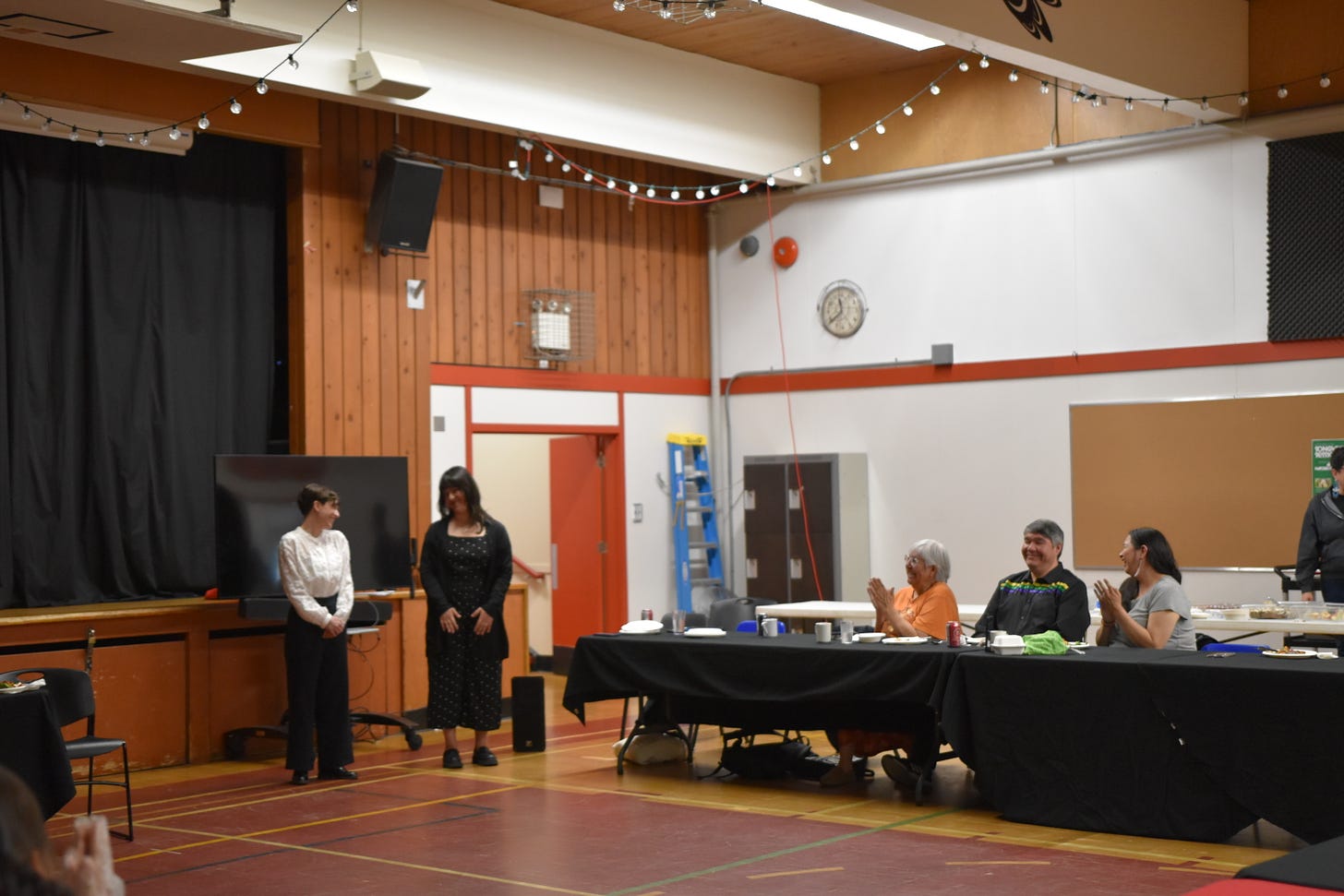
Rebecca Hass (Nitaawe giizhigok/ singing sky woman) is a singer, arts administrator, mentor, writer and creative living coach who has been a grateful visitor on Lekwungen territory since 2005. A mixed blood woman (Georgian Bay Métis, French, German, British) she is currently the Director of Engagement Programs and New Work for Pacific Opera and was the winner of the Nada Ristich Change Maker Ruby from Opera Canada for 2022.
The Cast and Creative Team of Art Song and Art Song Cycles by Maureen Batt, soprano
The communal aspects of art song are what excite me; how we connect over a shared experience (astrological events, Olympics, a stunning flower, or the smell of a new season), or over a desire to understand, interpret, and be in dialogue with someone else’s creative work. My experience with art song embodies community.
While art song only requires a singer and pianist to be performed, the creative ensemble also includes the poet and the composer. Looking further, another three collaborators are revealed: the inspiration for the text, the inspiration for the composer to set that text, and the inspiration for the singer to perform the work. Those three layers of connection are entities in their own right.
The dance among text, melody, narrative, and interpretation examines the form and the versatility of the song cycle as a genre. Pianist Simon Docking writes:
“I think at its best, the song cycle experience lends itself to an interior intensity that can match the exterior intensity of opera. A cycle projects the emotional journey on a much wider time-screen [than a single song], and can take us to many more places. The cycle provides a way the composer can easily imply a “cut” in time, like the title card in a movie (“Three Weeks Later” etc.). Fiona [Ryan]’s “Lady of the Lake” is unusual, because it’s a single-poet cycle, with a narrative, but it presents vignettes from the narrative rather than the whole thing[…], both more dramatic than the classic German cycles and less direct.”
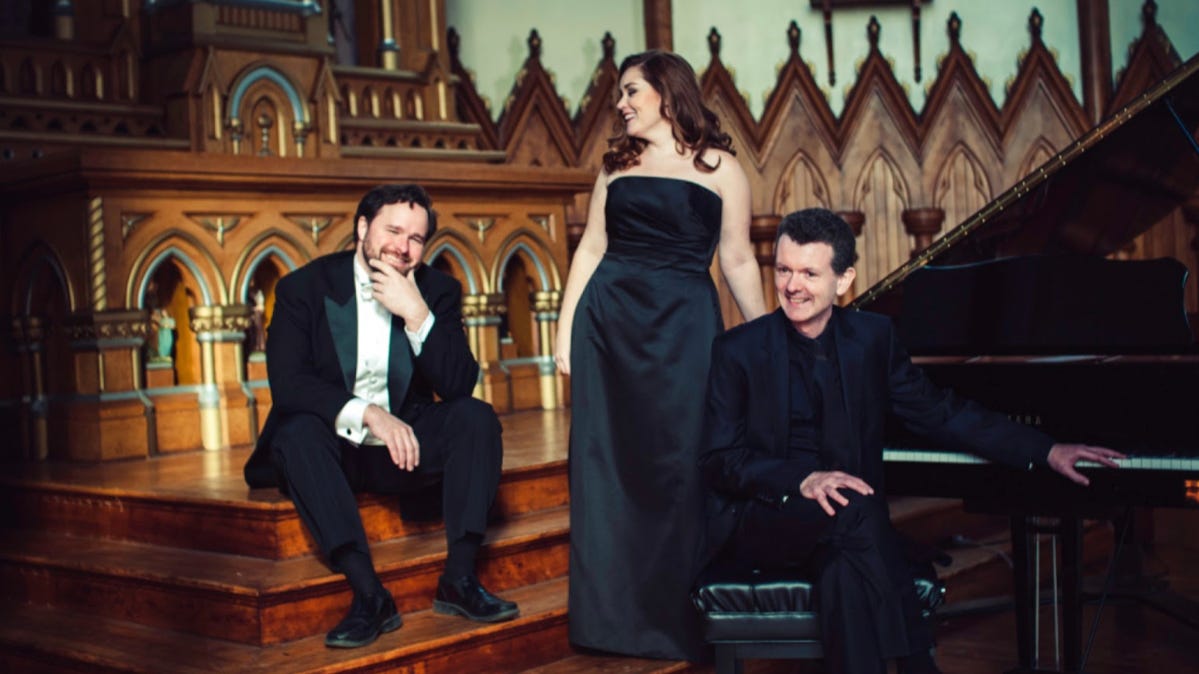
Composer Fiona Ryan writes:
“While Schubert could assume many audience members would be familiar with the work on which “Lady of the Lake” was based, I knew I could not make that assumption, and therefore chose to write in a more operatic or theatrical way: many of my songs are essentially character sketches that hint at the larger plot, rather like film teasers.”
“Song of a Warrior Woman” by Fiona M. Ryan from Lady of the Lake. Video by Tom Belding.
Composer Chia Yin Wu says:
“Art song is an integral part of my creative endeavour because it is a marriage between distilled human thoughts/emotions and the warmth of human voice. When compared with a single art song and opera, art song cycle offers the best of these two worlds. It has the opera’s ability to narrate an extended story and the single art song’s ability to highlight significant poetic moments. I like that [art song] is concise. It says what it needs to say and not more.”
Composer Saman Shahi writes:
“I have to really live with the poem, and the life story of the author before I can get in their world. In “Breathing in the Shadows” I feel like I was able to gain access to their thoughts and lives like a friend, and combine it with music. My favorite thing about “Breathing in the Shadows” is that the writing process was very intuitive and not very formal. I was playful, I was improvising, I was listening to my inner ear as opposed to relying solely on my technical abilities as a composer.”
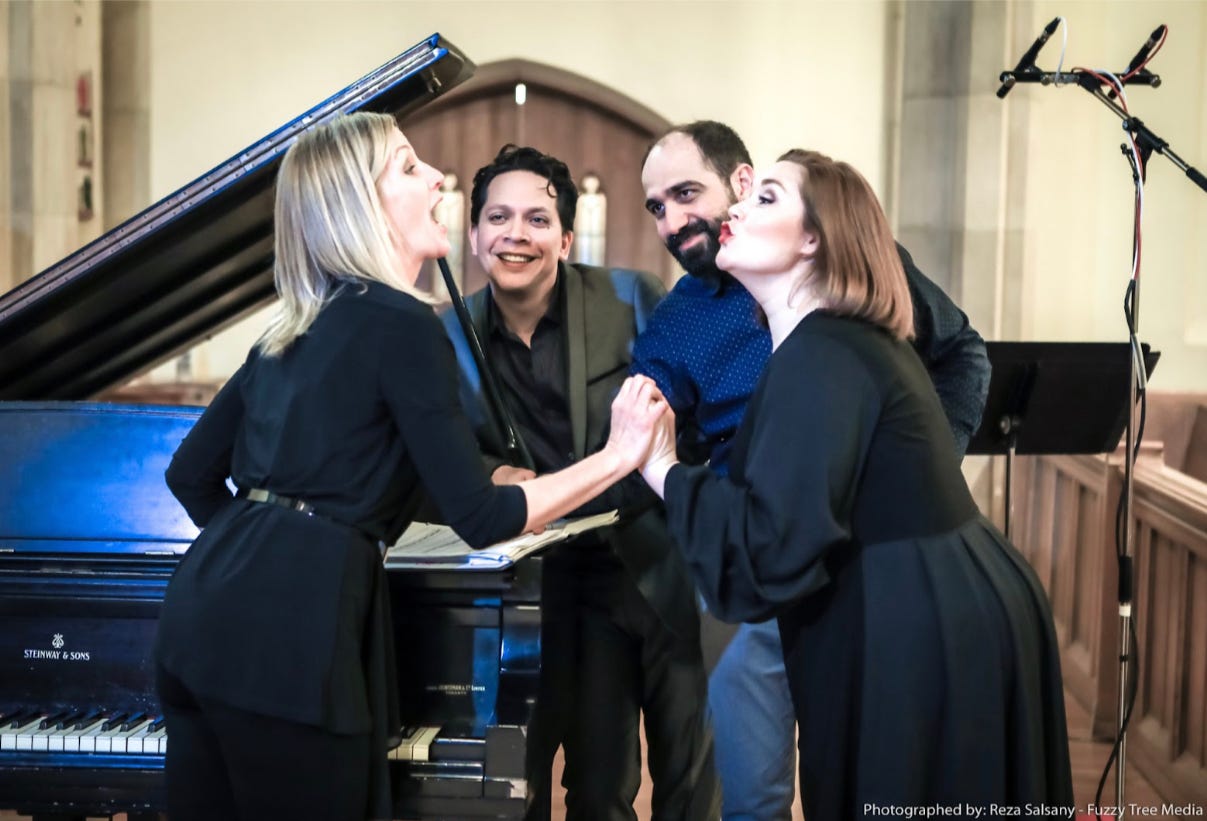
When we hear, watch, or perform art song, we are the recipients of the entire ensemble’s coalescence. The cast list grows with each new artist that comes to the work and engages with it, whether it is folkloric or floral, story or snapshot. I am most invested in cultivating these relationships; the more cast members, the merrier.
“A la una yo nasi” by Elisha Denburg from Four Ladino Folk Songs. Video by Leaf Music.
Maureen Batt is a soprano, recording artist, artistic director and educator based in Halifax, Nova Scotia. Maureen’s career focuses on celebrating music by living composers through her opera company Essential Opera, her concert series Crossing Borders, and her discography. Check out 2x-ECMA-winning album Lighthouse here.
The Winterreise Project at ProVoce Studio by Don Melady, MSc(Ed) MD CCFP(EM)(COE) FCFP
Art song is alive and well in Toronto, not just on concert stages and among professional performers but among music enthusiasts as well. Testimony of this reality comes from The Winterreise Project and the weekend recently organized by Tina Torlone’s ProVoce Voice Studio.
During the pandemic, Dr. Erika Crinò (DMA, Piano Performance, UBC) and Professor John Warden (retired Professor Emeritus of Classics, U of T) started collaborating, at great distance, on the songs in Schubert’s Winterreise. They started with a few Lieder and, as the pandemic continued, they ended up working in depth on the whole cycle. Erika and John were each in their homes; the former in Trieste, Italy, where she is member of the piano faculty at the Conservatory of Perugia; the latter in Toronto where he is active as a solo and choral singer and poet. Like everyone during those years, Erika and John found ways to overcome the challenges of distance and to make music even though separated by thousands of kilometres. They worked through all 24 of the songs in Schubert’s Winterreise using Zoom and an iterative process of recording, discussion, analysis, and writing. They created a written record of their observations, discoveries, and disagreements!
In the spring of 2024, Erika returned to Toronto. She and John wanted to share their project with a larger audience – and a larger number of performers. They worked with Tina Torlone, with whose studio they are both associated, to expand the project. John agreed to perform eight of the songs and Tina assigned the other sixteen to some of her advanced students as well as herself.
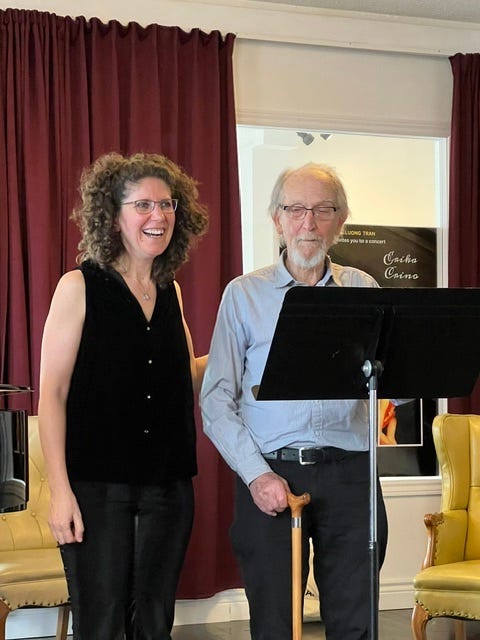
Over the weekend of April 12-14th, 2024, a total of nine singers presented the entire Winterreise cycle to friends, family, and the public in two Liederabende. The singers – Tina Torlone, Joanna Manning, Amanda Vallejos, Maria Case, Elizabeth McLeod, Lee Ramsay, Don Melady, Alex Chan, and John Warden – worked with three professional pianists and coaches – Dr. Erika Crinò, Dr. Joy Lee, and Gergely Szokolay. During these two evenings, the songs were performed in order, introduced in groups of four with comments by Erika and John. Participants were also offered an 80-page commentary, co-written by Erika and John, which contains an analysis of each of the songs. In it, Erika focuses on how harmonic, structural, and physically pianistic insights affect and colour the interpretation of the text, while John’s contributions are those of someone with a lifetime of experience as both a poet and a literary scholar. It is based on the ideas they exchanged in their journey together through the cycle. It is not intended as an academic study.2 Fabulous Sachertorte and Topfentorte were waiting for all participants at the end!
Pro Voce Studio’s response has been so enthusiastic that there is already a plan for an art song project to study and perform different settings of chosen texts during the next year.
Don Melady is a Professor at the Faculty of Medicine at the University of Toronto. He is also the director of the Geriatric Emergency Medicine Fellowship at Mount Sinai Hospital and the Toronto Chair of the Clinical Practice Committee of the International Federation of Emergency Medicine. His book, Creating a Geriatric Emergency Department, is available from Cambridge University Press.

Xavier Leroux’s La solitaire (1887) by Michaela Chiste, soprano & Theodore Chow, pianist
The life of Xavier Leroux (1863-1919) shares interesting parallels with the famed composer Claude Debussy. Both studied at the Conservatoire de Paris and each won the prestigious Prix de Rome; Debussy in 1884, and Leroux in 1885. However, Debussy was disapproved of by his professors at the Conservatoire de Paris for his radical approach to composition, while Leroux was hired as professor of harmony.
Leroux’s La solitaire (1887) is an early work featuring poetry by Armand Renaud, a contemporary French poet often influenced by Persian and Japanese poetry. 3 The first song in La solitaire, “Le Nil,” evokes a couple blissfully floating across the Nile River in their boat, revelling in their love. The second song, “Le délire,” describes a woman being approached by various merchants in a busy market, each offering her their finest trinkets to celebrate her beauty. The final song in the set, “Gazelles,” references the tale of Majnun and Layla, a Persian story of star-crossed lovers wherein the spurned man wanders the desert after Layla is forced to marry another. The song describes how Majnun sees Layla in the graceful gazelles he hunts and implores other hunters not to kill the gazelles, as it would be like slaying his love.
Listen to Canadian singer Michaela Chiste and pianist Theodore Chow perform La solitaire below, or on your favourite streaming service! Bravi.
Echo North is a voice-piano duo consisting of soprano Michaela Chiste and pianist Theodore Chow. Though there is very little music that the two of them do not enjoy performing, Echo North takes every opportunity to dig up and present unusual, hidden gems in the art song repertoire. Echo North is currently planning a concert tour that includes exclusively Canadian art songs in an effort to bring these underperformed and underappreciated pieces of music into the public eye.
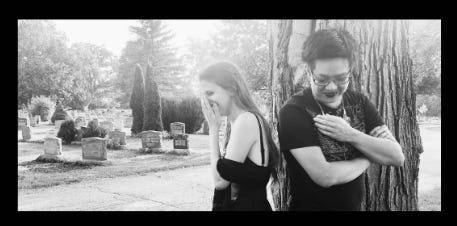
Editor’s note: Readers, do you have a little known song cycle you’d like to share with the Art Song Canada community? Write to us at [email protected] to be featured!
Interested readers can request a copy of this document by contacting [email protected]
A cultural interest in distant lands and cultures can be felt in much of the art produced in France in the late 19th century. From 1855 onwards, Paris was the site of several Expositions Universelles, exposing French composers to diverse sounds which they borrowed to suit their own creative uses. In his 1978 book, Orientalism, the literary critic Edward Said characterized early 19th century Paris as the capital of the Orientalist world. (Echo North)
Please consider making a contribution to the Foundation today.
Now,
In June,
When the night is a vast softness
Filled with blue stars,
And broken shafts of moon-glimmer
Fall upon the earth,
Am I too old to see the fairies dance?
I cannot find them any more.
– Langston Hughes
Dear readers, welcome to Art Song Canada’s Summer 2024 Edition! In this issue, three brilliant art song interpreters tell us what the word mentorship means to them.
“Mr. Mélodie” François Le Roux deep dives into his early career in France, intimating at how different mentors shaped his path (and even suggesting where his career might take him next!).1 We then feature the brilliant duo behind Sparks and Wiry Cries. Vancouver-born pianist Erika Switzer relates how mentorship is a reciprocal relationship, benefiting the mentor as much as the mentee. Her frequent collaborator, the Canadian soprano Martha Guth then shares a love letter to (a few of) the mentors in her life, from the art song legend Graham Johnson to the Grammy and Pulitzer-winning folk musician Rhiannon Giddens. Following our featured articles, we continue with our Introducing…series for little-known song cycles, looking at Lili Boulanger’s Clairères dans le ciel.2
Thank you for reading with us. If you enjoy this issue, please consider donating to support the Art Song Foundation of Canada’s bursary programs for young Canadian singers and pianists. Allons-y!
Regarding Mentorship by François Le Roux, baritone

While some artists speak of maîtres (masters) when looking at the origins of their careers, the term mentor feels more appropriate for me. A free artist remains the maître of his or her own journey. Mentors inspire and guide the artist’s path, helping the artist to find his or her own individual voice.
Among those who have been influential to me, first of all, are my parents. My father could have become a professional actor, and he directed me while I was in high school in Le Devin de village by Jean-Jacques Rousseau. At the age of ten, I played Tirésias in Sophocles’ Antigone, for which my mother made the costumes.
My high school music teacher, Nicole Cazalet-Aubert, also played a major role in my development. As students, she played Maurice Ravel’s Jeux d’eau for us on the classroom upright piano. She encouraged me to sing in the high school choir conducted by Claude Panterne. For my final examinations, Mme. Cazalet-Aubert had me sing Poulenc’s “Priez pour paix,” my first mélodie. She later became my collaborative pianist in several recitals, the first being the complete solo Duparc songs.
Mme. Cazalet-Aubert led me towards the man who became my singing teacher, the excellent Swiss basso buffo François Loup. Monsieur Loup entrusted me to coach some of his beginning students, sensing my pedagogic capacity after only one year of work with him. I appeared in his recitals as a narrator or translator, such as when he would perform Russian songs in recital. Monsieur Loup also introduced me to German lieder, and thanks to him, I fell in love with Schubert and Schumann.
I found my next mentors when I joined the Paris Opera Studio in 1976. I took vocal lessons from the famous singer and teacher, Vera Rosza, followed by the Kammersängerin Elisabeth Grümmer of Berlin. Grümmer kept an incredibly youthful voice throughout her life and astonished her students with her demonstrations. She led me towards many Schubert songs. I still remember her comments about “Der Zwerg.”
“Schreckliche Geschichte,” she’d say, “aber wunderbare Musik!”
At the Paris Opéra-Studio, my coach, the American-born Craig Rutenberg, encouraged me to work as much on recital repertoire as on opera. I have always followed his advice. I sang my first German Lieder recital of Schubert songs with him.
Another mentor, the great French singer Mady Mesplé, instigated my first recordings for EMI (now Warner Classic), as well as a number of television shows on which I performed with her. She was a star soprano, but she behaved nothing like a star, always demonstrating admirable musicianship and humility. She also introduced me to Jeff Cohen, who has been my collaborator ever since.
Finally decisive for me as a mentor was Simone Féjard, vocal coach at the Paris Opéra-Comique. Simone guided me through the role of Pelléas, which became my trademark. She had me work on the part quietly for two and a half years, and when, in January 1985, the Lyon Opera presented the production, I felt ready, confident, and happy. In 1997, when I was about to sing Golaud in the same Debussy opera, I decided to go and work on it with her. She accepted with pleasure but refused any fee, asking only for a free ticket for the first performance. At the end of that performance and after very warm congratulations, she said that she was now waiting to attend my staging of Debussy’s opera, a desire which I have not (yet?) been able to fulfill. Simone was a true coach and mentor; demanding, warm, and always offering positive support.
Named “Mr Mélodie” by American critics, François Le Roux gives numerous recitals accompanied by such renowned names as Graham Johnson, Roger Vignoles, Christian Ivaldi, Olivier Godin and Jeff Cohen, and conducts master classes dedicated to the interpretation of French repertoire around the world. His first book Le Chant intime, received the “René Dumesnil Prize 2004” from the Académie des Beaux-Arts. He was awarded the grade of “Chevalier” in the French National Order of les Arts et Lettres in 1996, and chosen as “Musical Personality of the year 1997-1998” by the French Critics Union. He is a vocal teacher at the Conservatoire national supérieur de musique et de danse de Paris (CNSMDP) and at the École normale de Musique Alfred Cortot as well as Artistic Director of the Académie Francis Poulenc in Tours.
The Song Exchange: In giving, we receive by Erika Switzer, pianist
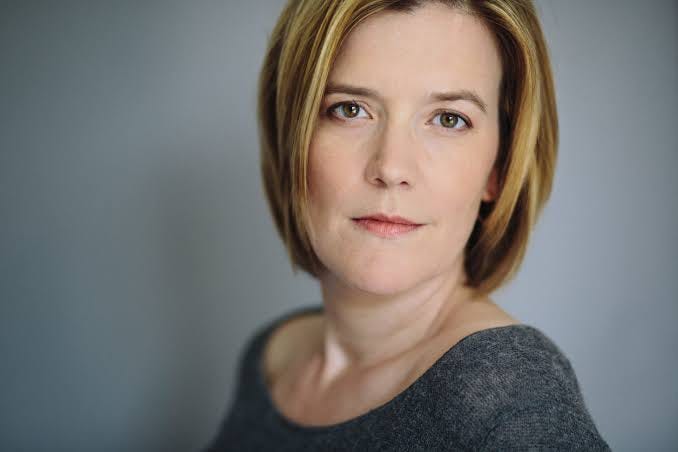
I am the incredibly fortunate beneficiary of more mentoring that I can possibly capture in this brief meditation. Beginning in my very early and fragile student years, I sought connection to the artists that inspired me most through attendance of their masterclasses. Among the many extraordinary art song luminaries that shared their experiences, Elly Ameling, then Dalton Baldwin, Rudolf Jansen, Brigitte Fassbaender, and François Le Roux stand out for their enduring and encouraging support. As a young artist, I carried more fear than confidence and more innocence than wisdom. The examples made by each of these artists of the process of craft, the nuance of interpretation, and the good humour of mistakes along the way gave me the courage I required to risk my own path forward. The angelically patient mentors that guided me, week-by-week, along that extended path, Jane Coop, Rena Sharon, Helmut Deutsch, Margo Garrett, and Jonathan Feldman, are interwoven in their individual ways into the textures and colours of my musical thinking.

Art Song may not be where we go to earn all the money, but it most certainly is where we go to become enriched. The boundless riches of collaboration, poetry, musical expression, and listener engagement could not be further from transactional. Quite the opposite, the riches are relational. In relating to art song we relate to our humanity, our joys and our fears, through both the doing (our intrinsic physical marriage to music making) and perceiving. This is what I have learned from mentors who have led by example and from a place of deep generosity.
I recently read an article in Forbes magazine (Oct 2023) in which National Philanthropic Trust CEO Eileen Heisman explained that “In philanthropy, data shows that the act of charitable giving benefits the giver as well as the recipient. Mentorship has a similar exchange. Good mentors accept the responsibility knowing that they will learn and grow as much as their mentees.” If mentorship is the sharing of experience in a multidirectional continuum through which we develop functions and expressions of our humanity, what more magnificent and inherently equitable model for education could we find? Mentorship empowers both parties to engage in the vulnerable work of reflection and personal identification, centering the human over the task and prioritizing process over product.

Connection and community are among my core values, those elements of life that make life worth living. Now that I, too, am a mentor, I experience deep gratitude for opportunities to witness and guide, always knowing that it is not only my experience that is present in the room. I carry the wisdom of those named above and many more. When their voices arrive like angels, heralding new connections and growth, I understand the rich inheritance, far greater than the sum of my own experience, that is wholly available to those with whom I connect.
Erika Switzer is an accomplished pianist who collaborates regularly in major concert settings around the world. In 2009, she and Martha Guth founded Sparks & Wiry Cries, which curates opportunities for song creators and performers, commissions new works, presents the songSLAM festival in New York City, and publishes The Art Song Magazine. She is also devoted to new music, and has recently premiered new compositions in the 5 Boroughs Music Festival Songbook II; at the Brooklyn Art Song Society; and at Vancouver’s Music on Main. She is also an active teacher, serving on the music faculty at Bard College and the Vocal Arts Program of the Bard Conservatory of Music. Switzer holds a doctorate from The Juilliard School, and lives in New York’s Hudson Valley.
A Love Letter to (a few of) the Mentors in my Life by Martha Guth, soprano
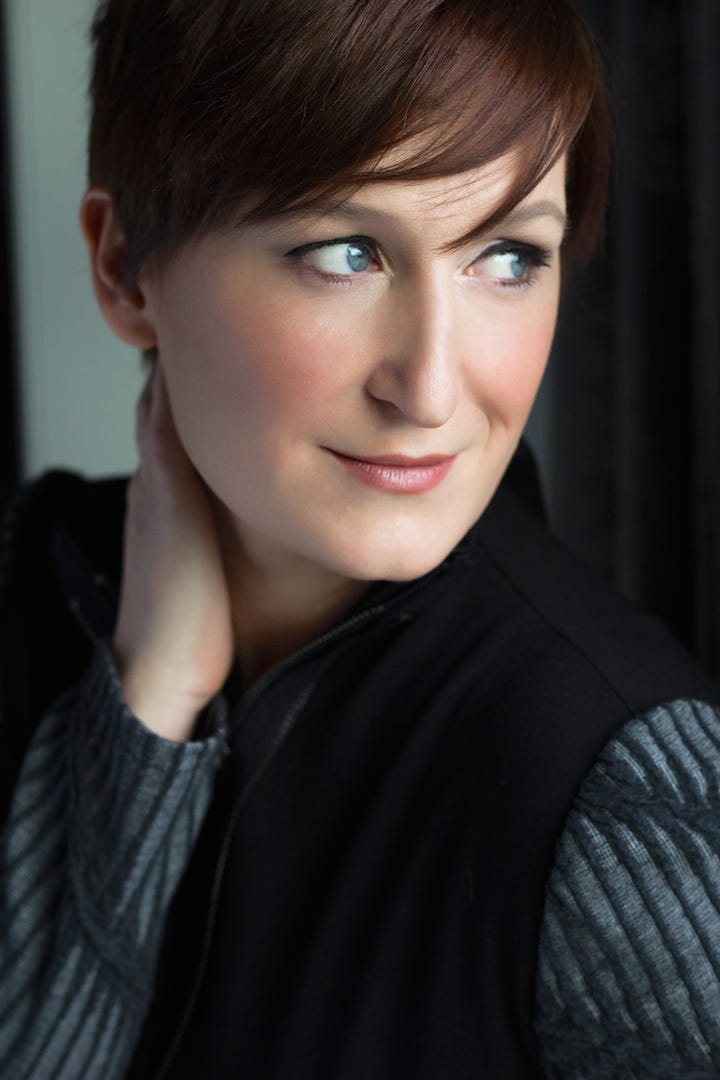
Oh me! Oh life! of the questions of these recurring,
Of the endless trains of the faithless, of cities fill’d with the foolish,
Of myself forever reproaching myself, (for who more foolish than I, and who more faithless?)
Of eyes that vainly crave the light, of the objects mean, of the struggle ever renew’d,
Of the poor results of all, of the plodding and sordid crowds I see around me,
Of the empty and useless years of the rest, with the rest me intertwined,
The question, O me! so sad, recurring—What good amid these, O me, O life?
Answer.
That you are here—that life exists and identity,
That the powerful play goes on, and you may contribute a verse.
—Walt Whitman
When I enter pianist and scholar Graham Johnson’s house in London, the first thing I see is that it is filled to the brim with books. They are everywhere: the walls in every room are lined with shelves. When rehearsing or discussing the nuances of text he often pulls one out and seemingly knows the exact page of whichever poem he wants to read aloud to illustrate a point. Books and poetry were my entry point into art song – so that is a natural meeting place in sustaining our now decades long collaboration. From Graham, likely my greatest mentor and now colleague, I learn what it is to really care for text and music, and then, how to deepen my music making so that it reflects both research and life experience. I learn to shut out the noise (as alluring as it can sometimes be). I learn that sitting still with the words and music guides every aspect of musical expression in art song. Perhaps this is why I can so easily own that music and poetry are my own form of spiritual practice.
When I enter the house of pianist Erika Switzer, I feel community and generosity. Her welcoming home is a revolving door of guests and friends. I have learned many things from her: how to think about and maintain an equal partnership, how to teach with empathy, how to work with patience through the hard stuff, and how to value my own contributions while honoring the contributions of those around me.
When I visit with poet Tsitsi Jaji – friend, collaborator & co-conspirator, I notice the way she looks at the world, responding with depth and thoughtfulness to even the most mundane statements. Her brilliance and kindness teach me to broaden my gaze and reconsider the angles from which I am thinking about things.
When I watch my friend the singer Rhiannon Giddens perform, I see a fiercely direct focus and a vulnerable openness; a lesson for every performer. I tend to hedge and soften my questions and statements about what I think of my personal contributions, but when she asks me directly over breakfast, “What do you want?” I know it is a dare to say the thingunflinchingly, so I do. From her I have learned to be a musician with a personal mission statement and to simply ask for what I want.
When I listen to mezzo-soprano Rebecca Hass give land acknowledgements, her inclusive voice teaches me how to honour and reflect on all ancestors, as they help to contextualize our place in the continuum of time. Her acknowledgments remind me that as musicians and teachers we are simply one link in a long chain that extends forward and backwards, and it is our job to keep the light of knowledge burning and then pass it on.
Through the kindness of pianist Javier Arrebola, I remember the gift of silence, listening, slowness, and respect for others. Soprano Jardena Gertler Jaffe, often the most thoughtful and inclusive voice in a room, a powerful reminder. The list goes on and on…too many to name.
All of these friends and colleagues have changed my life for good. The gift of watching their practice constantly informs my own, and these torch bearers are who I think about when I am called to do this work myself.
If mentorship is about encouraging and then bearing witness to someone else’s growth, it requires two things: to see the artist and their gifts for exactly who and what they are, and to call upon the knowledge of your own mentors to hand down their wisdom so the chain can continue. While hardly any information is truly new, we can be good stewards of our own musical-spiritual practice and a bridge for others as they too contribute a verse to the powerful play. That you are here—that life exists and identity, that the powerful play goes on, and you may contribute a verse.
Juno and Latin Grammy-nominated soprano Martha Guth’s recital and concert highlights include Wigmore Hall, Lincoln Center, The National Cathedral, St. John Smith Square, The Toronto Symphony Orchestra, The Chicago Philharmonic, and many more. With Erika Switzer, she is Co-Founder/Director of Sparks & Wiry Cries, a non-profit dedicated to art song spanning publication, live performance, and commission of new works. Martha is Assistant Professor of Voice at Ithaca College, and on faculty at SongFest and the Vocal Academy at the Collaborative Piano Institute.

Lili Boulanger’s Clairères dans le ciel (1913-1914) by Sara Schabas, soprano
Lili Boulanger composed the song cycle Clairères dans le ciel when she had just won the Prix de Rome. At nineteen years old, she was the youngest composer as well as the first woman to win the prestigious prize and quickly signed a contract with Ricordi Publishing House. The almost forty-minute, thirteen-movement cycle is Boulanger’s longest work, as she tragically died a few years after completing it. Comprised of settings by the Symbolist poet Francis Jammes, the cycle’s prose poetry blends Catholic and flower imagery. It recounts a man’s love for a gawky girl who reminds him of tall flowers that like to grow in water—lilies, perhaps. According to Boulanger’s sister Nadia, Lili strongly identified with the gravement gaie, lily-like protagonist described by Jammes.
Lili Boulanger’s song cycle is a feast of riches for lovers of post-Wagnerian French Romanticism and empassioned, high tessitura depictions of young love and its aftermath. Hidden codes and recognizable leitmotifs abound throughout the work, as well as ambiguous markings such as à l’aise, resigné or avec mélancolie, comme dans un souvenir. The following excerpt comes from a performance featuring myself and the pianist Tony Stauffer. For more, I highly recommend listening to Kevin and Heidi Grant Murphy’s gorgeous recordingon their album Clearings in the Sky.
Sara Schabas is a Dora-nominated soprano, writer and yoga teacher. She has performed and created leading roles with companies including Vancouver Opera, Pacific Opera Victoria, Tapestry Opera, the Dayton Opera, and Aspen Opera, and is a former member of Barbara Hannigan’s Equilibrium Young Artists. Currently based in Montreal, she is a doctoral student at McGill University — where she recently received the Wirth Vocal Prize — and editor of Art Song Canada magazine.
Cet article est également disponible en français.
Editor’s note: Readers, do you have a little known song cycle you’d like to share with the Art Song Canada community? Write to us at [email protected] to be featured!
Please consider making a contribution to the Foundation today.
Dear March—Come in—
How glad I am—
I hoped for you before—
– Emily Dickinson
Dear readers, welcome to Art Song Canada’s Spring 2024 edition! My name is Sara Schabas and I’m a Canadian soprano, writer and researcher taking over from Brett Polegato as editor of the Art Song Canada magazine.
In this quarter’s edition, we look at challenges inherent in the art song canon from a 2024 perspective. We begin with seminal works of the past, as tenor Colin Ainsworthshines a trauma-informed light on Franz Schubert’s Die schöne Müllerin. Soprano and scholar Meghan Lindsay reimagines Robert Schumann and Adelbert Von Chamisso’s perspective on a woman’s loves and life in Frauenliebe und Leben. Finally, pianist and author Pierre-André Doucet illuminates some meaningful new works as well as his own highly personal contributions to the art song canon (cet article est également disponible en français). At the end of this issue, you’ll find a new Introducing… column where we introduce little-known song cycles to our readers. For this edition, University of Toronto Faculty of Music lecturer and pianist Asher Armstrongintroduces us to Regine Poldowski’s settings of the poet Paul Verlaine.
Thank you for reading with us, and if you enjoy this issue, please consider donating to support the Art Song Foundation of Canada’s bursary programs for young Canadian singers and pianists. Allons-y!
PS: this is a long issue, so you may want to click here to read it in your browser!
A trauma-informed look at Schubert’s Die schöne Müllerin by Colin Ainsworth
Franz Schubert’s extraordinary song cycle, Die schöne Müllerin, is a journey through the tumultuous emotions of a young man grappling with love, loss, and ultimately, despair. Set to text by Wilhelm Müller, it tells the story of an impetuous young man who hopelessly falls in love with a miller’s daughter, who (for her part) falls in love with a strapping hunter. Our young miller is devastated and tragically decides to end his life in his beloved river and is carried out to sea. It is a mammoth cycle full of challenges – not the least, having to learn all twenty songs – and also, containing difficult themes and a vast array of emotions of unrequited love, isolation, anger, depression, and suicide. For a singer who has never taken up the challenge of such a huge work, it can be daunting. The question then is, how do we singers undertake these works or guide students through these large-scale cycles, especially ones with difficult subject matter?
This was the question that Dr. Laura Loewen and I considered as we sought a way to bring this cycle to students. Laura and I have had the privilege of presenting various recitals since 2017 across Canada, enjoying a fantastic singer-pianist partnership. Before the Covid epidemic, our goal was to bring this collaborative experience to groups of singer-pianist duos at the university level working through Schubert’s cycle and, with them, present a final concert. The pandemic shut down any hope of collaboration until the return to in-person learning, in which we realized how important our project could be, potentially addressing the emotional impact, mental health challenges, and isolation precipitated by the shut down. It struck us that the themes of isolation, depression, lack of community, and connection were not just emotions held uniquely by the young miller but were also being experienced by students, exacerbated by the pandemic. We recognized this was the perfect opportunity to speak about how to tackle these cycles and also, the bigger issue of mental health. But, knowing we were not qualified to speak to the issue of mental health and wellness, we invited Dr. Carol Wiebe, founder of Radical Connections, which strives to improve healthcare and strengthen communities by bringing artists and people together, and Danna McDonald, who works as an embedded counselor at the Desautels Faculty of Music in Winnipeg, to help frame our work through the lens of positive mental health and wellness. We felt that our project could provide help to those who were either dealing with these challenges or give them tools to help someone who was.
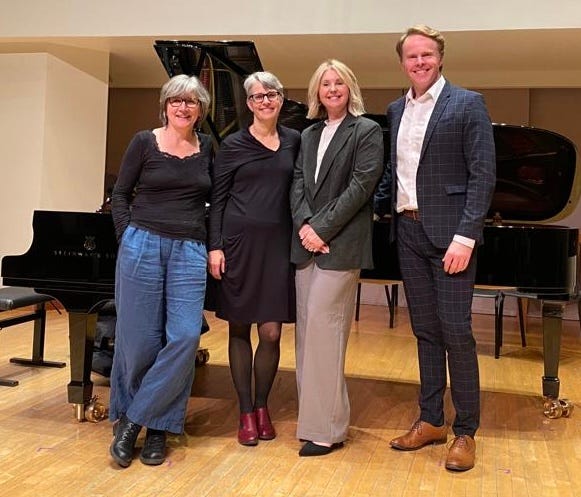
We have had the privilege of bringing our DSM workshop to the University of Ottawa, Wilfred Laurier University, and the University of Toronto, (and this March, at Ithaca College, NY) where we explored various techniques of breathing, meditation, exercise, journaling, and self-compassion to help deal with the stresses imposed upon us by us and our world. In our sessions, we objectively examined the miller and his world through the lens of mental health and wellness, seeing how his lack of community, connection, and isolation were contributing factors to his tragic end. We discovered that, when supporting someone dealing with disappointment or hardship, we can be empathetic and compassionate but, when similar situations are thrust upon us, we can be extremely hard on ourselves with negative self-talk, forgetting the compassion and love we would have given to others. We were then able to bring this awareness and empathy to the miller and his story in our coachings and masterclasses which helped to bring another level of depth to all of the students’ interpretations.
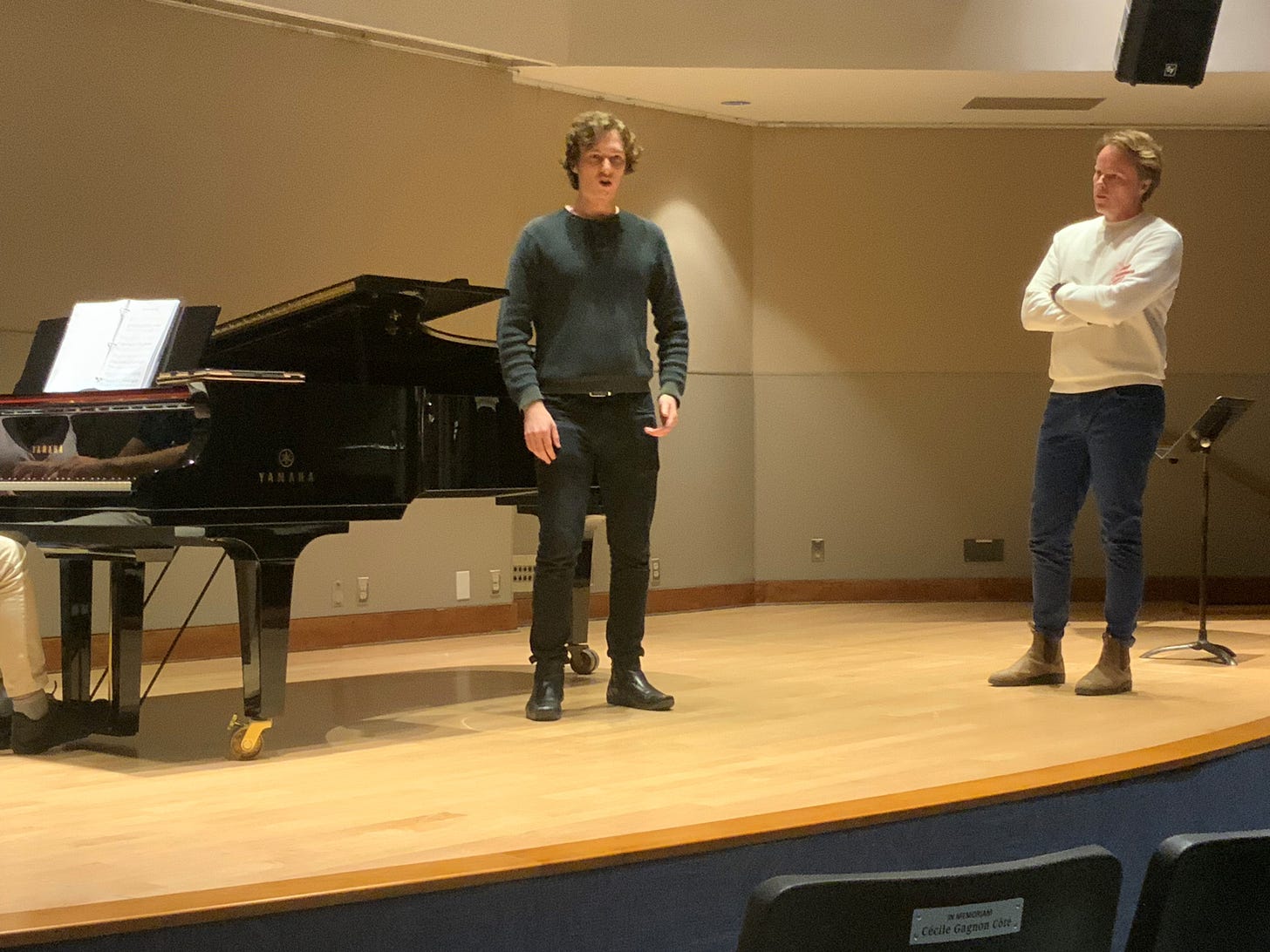
It was phenomenal to see the transformational journey of each duo in three short days, witnessing their work in self-compassion and empathy communicated in each of the performances. Even though our miller was unable to have a community and circle of support, his story joined us together as one community, starting with small circles of singer-pianist duos, supported by our workshop team, and ending with the final performance of the larger circle of audience and participants. Instigated by difficult circumstances in our world, the DSM workshop hopes to build community through collaboration, and to instill self-compassion, understanding, and empathy in each student. By combining musical coaching and collaborative performance with a focus on mental health and wellness, our desire is to give students avenues of support for themselves and others, and to demonstrate the critical importance of community and connection.

Canadian tenor Colin Ainsworth is internationally renowned for his performances at the Royal Opera (London), Canadian Opera Company, Chicago Opera Theatre, Glimmerglass Opera, L’Opéra de Français, Opera Atelier, Pacific Opera Victoria, and the Greek National Opera. His repertoire spans from the Baroque to contemporary works and he has especially enjoyed commissioning and premiering numerous song cycles.
Reimagining Frauenliebe und Leben by Meghan Lindsay
For the last fifteen years, much of my effort, time, and energy have been spent on interpreting the works of men. This focus isn’t always out of preference but is largely dictated by the established canon—a canon that, despite attempts to challenge or change it, still forms a significant part of the repertoire for many singers. This journey, though full of discoveries, often highlights a conflict: the portrayal of women from an external and sometimes alien perspective. Frauenliebe und Leben is no exception, offering narratives about a woman’s life that, while beautifully written, feel like opaque reflections on female identity and experience. The interpretation of works from this era therefore demands a nuanced relationship with tradition, blending interpretation, reverence, politics, and creative agency. It involves a relentless quest to authentically represent female voices in a domain predominantly shaped by men, all while challenging homogenous notions of what it means to be female.
I’ve always been intrigued by Frauenliebe und Leben. I, too, have been conflicted. How could ‘Süsser Freund,’ with its tenderness and simplicity, coexist with ‘Er, der Herrlichste von allen?’ As an artist and interpreter, I have struggled with how to embrace parts of the cycle I loved deeply while feeling distant from others. Unearthing my relationship with the piece was deeply intertwined with motherhood, a formative time that prompted me to dive deeper into what it means to interpret and to embody. For many in the live arts, motherhood demands flexibility of practice. Balancing the intricacies of caregiving with career demands leads us to reevaluate our autonomy, our connection to our voice, and our body. For me, the vivid, imaginative state of parenthood provided the perfect opportunity to explore something new.
In 2017, I cofounded an interdisciplinary artist collective named New Art/New Media, which enabled us to finance the conceptualization of Frauenliebe as a short film. Collaborating with choreographer/director Jennifer Nichols, filmmaker Zara Saleki, poets Erin Lindsay and Katie Gorrie, pianist Carson Becke, and sound engineer Ross Murray, we aimed to explore the expression of Frauenliebe through film from a feminist perspective. This began with cutting pieces that felt the least reflective of my experience as a woman. Acknowledging expressions of femininity are diverse and not restricted to those that are biologically or born female, I assert that my choices were unique to my experience and may not reflect that of others. ‘Seit ich ihn gesehen’, ‘Du Ring an meinem Finger’, ‘Süsser Freund’, and ‘Nun hast du mir den ersten Schmerz getan’ were selected, while others were left out. Piano improvisations were used to hint at the omitted pieces, creating a cohesive musical experience.
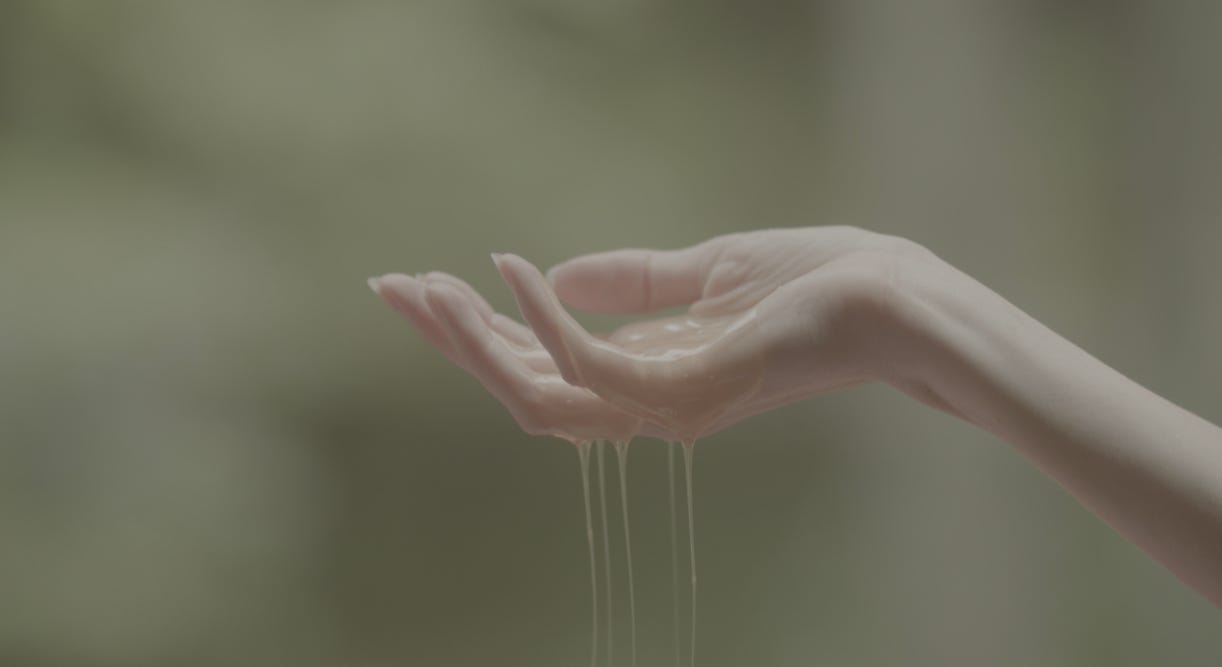

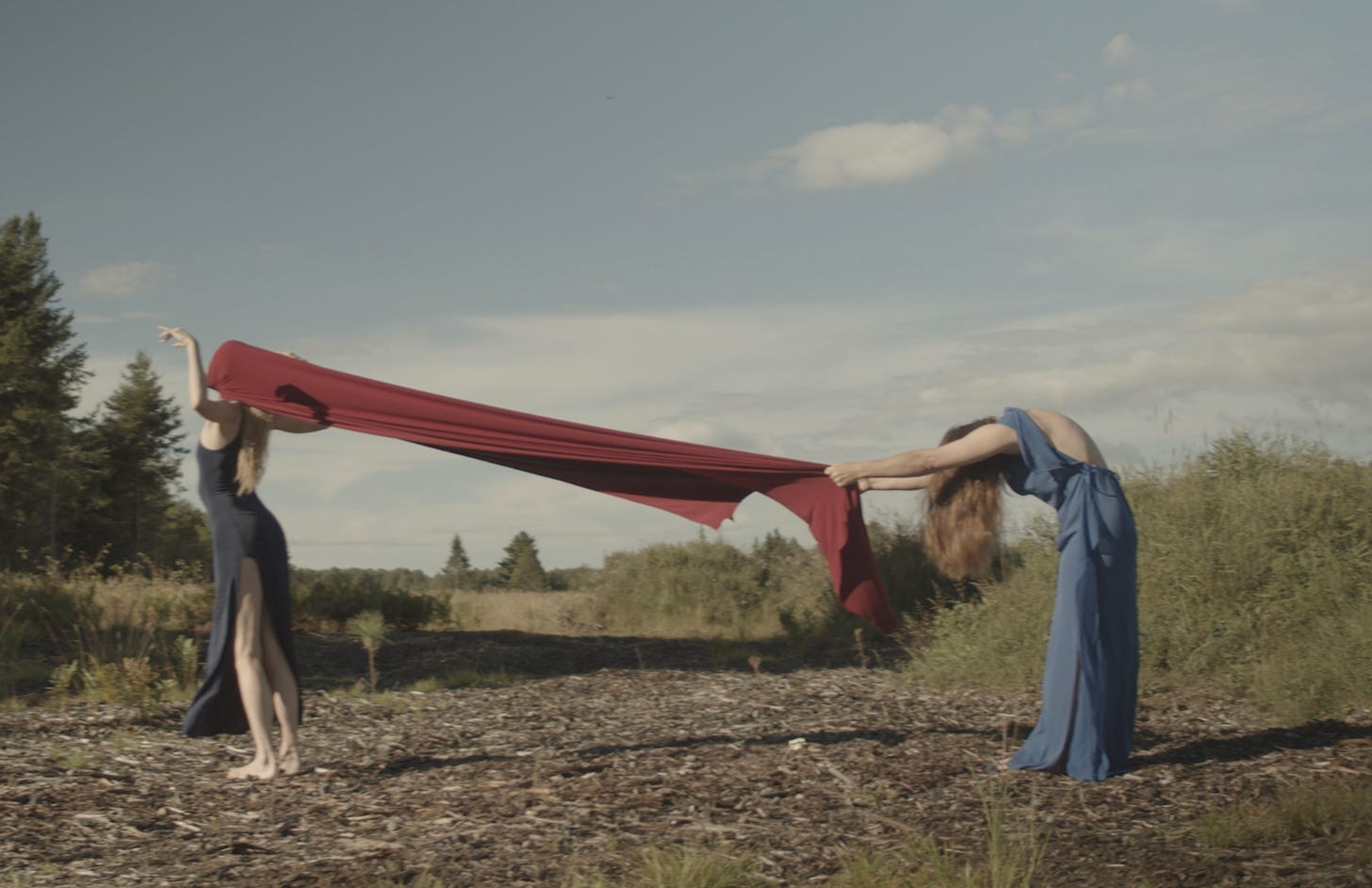
We collaborated on a dramaturgy to the newly imagined piece based on a series of reflections. Tasked to create a series of poems that would weave between the songs, the poets (Erin and Katie) shared prompts that encouraged us to articulate our own interpretations of key themes through both imagery and text. These prompts were designed to elicit diverse and personal responses, through an iterative process that included initial collection of inspiration, followed by the drafting of poetry, and subsequent rounds of feedback and revision. This approach allowed for the poetry to evolve in response to both the visual elements and the collective input of the team. Listening to the music and reflecting on its emotional and sensory impact was an integral part of the process. We were curious about the affective dimensions of listening. What did we feel when hearing this work? What did we feel when reading the text? Our team was prompted to note these emotional responses, the colors and textures we envisioned, and any imagery the music evoked. This exercise is not just about reflection but about how individual perceptions could be woven into the collective narrative.
The project unfolded as a deeply collaborative effort, weaving together poetry, dance, on themes that resonate with our collective responses to Schumann’s work— care cycles, grief, and our intricate relationship with the environment emerged as central themes. With each poem reflecting a specific phase of life or an aspect of the human condition—encounter, union/ritual, birth, death, and the possibility of change or renewal, the structure of our interpretation mirrored the cyclical nature of life. We focused on dimensions of fear, sisterhood anxiety, ritual, and protection. Emotions that speak more vividly to the complexities of the female experience.
When it came to filming, we quickly realized that throwing people together in the woods of rural Quebec resulted in an abundance of ideas. Our storyboard loosened as we adapted to our natural environment. We danced in the middle of bug-ridden fields, ran into each other’s arms, swam through lakes in gowns, and lay curled up naked in a hayfield. It was ironic how our interpretation of a piece, originally profound and serious, transformed into a process filled with playfulness and spontaneity.
Our piece is still in process. Honouring a feminist ethic, we are careful and tender to the lives of our team, giving ample space for life to be lived before the film reaches public. I am so grateful for this time. Grateful for these collaborators and their willingness to run through fields.
Soprano Meghan Lindsay is acclaimed for her portrayals with Toronto’s Opera Atelier, Versailles’ Royal Opera House, the Glimmerglass Festival and elsewhere. She is the Co-Director of the Pontiac Enchanté chamber music series and the Co-Founder of Hills Winter Music Festival, as well as a PhD Candidate in Cultural Studies at Queen’s University, where her research explores how the social impact of the arts is co-constructed between artists and the mechanisms of public funding.
S’écrire mélodie / Myself, a song by Pierre-André Doucet
Bringing new work to life has always been one of my favourite aspects of song interpretation. To me, it is essential to our lives as performers, in addition to being critical to our discipline’s continued relevance.
Just as in learning more standard repertoire, deciphering a contemporary art song calls upon many of our core skills, including text analysis and score study, technical problem-solving, aural and emotional world-building, and the ability to initiate open and honest conversations with one’s musical partners. Beyond this, however, performing new work offers a unique challenge in bringing us to engage with idioms, colours and texts that are often, paradoxically, both completely novel and viscerally familiar.
In the past few decades, for instance, the song canon has been expanded to include a vast array of modern themes, such as social interaction in the digital age, in Craigslistlieder (Gabriel Kahane / Anonymous authors), gay desire, in Of Passion’s Tide (Jeffrey Ryan / C. P. Cavafy, trans. Rae Dalven), and domestic violence, in Songs for Murdered Sisters (Jake Heggie / Margaret Atwood). Canadian works such as mouvance (Jérôme Blais/ Gérald Leblanc), which delves into the uprootedness that is central to the Acadians’ collective psyche, and Rien ne tuera ma lumière, by Anishinaabekwe composer Barbara Assiginaak and Innu poet Maya Cousineau Mollen, an emotionally charged solo piece on intergenerational trauma which was premiered by soprano Élisabeth St-Gelais to mark last year’s National Day of Truth and Reconciliation, have also complexified and deepened the conversations within and about our field.
While not completely absent from the standard canon, these diverse voices, perspectives and themes have until recently often remained marginalized or under-explored within it. By engaging with them, modern composers, librettists, and performers allow themselves to further develop their vocabulary, expand the scope of their work, and anchor their practices in the present day, all the while broadening audiences’ understanding of the human experience.
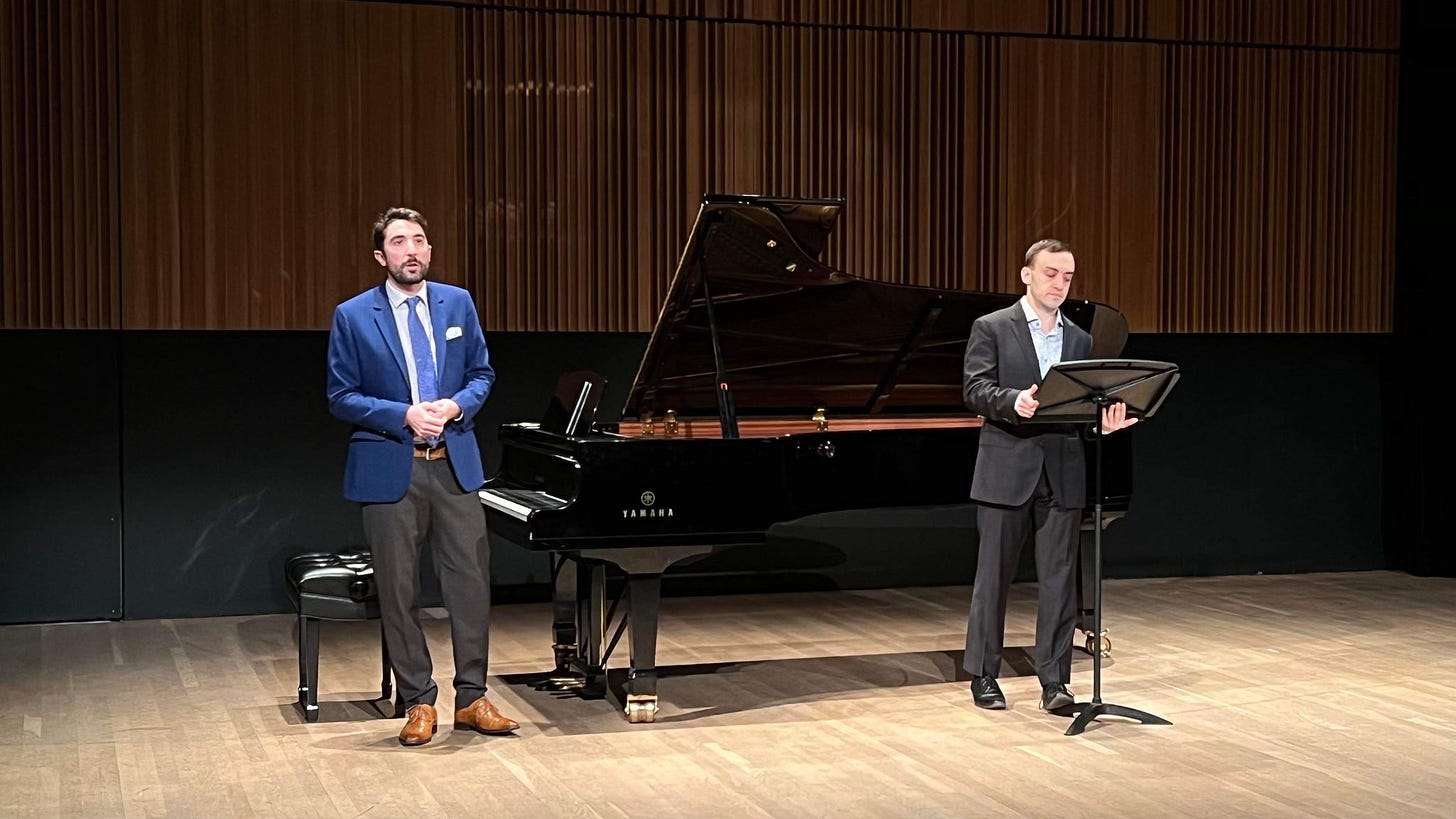
Last winter, alongside baritone Geoffrey Schellenberg, I had the privilege of premiering Rémanence, by Canadian composer Matthew Ricketts. Without a doubt, it was one of the most surreal and illuminating experiences of my career thus far, as for the first time, the words that were carefully and vividly set to music in this new song were my own.
The work’s origins can be traced to the premiere of Unruly Sun, a song cycle by Ricketts and librettist Mark Campbell, which chronicles artist and activist Derek Jarman’s final years living with AIDS.
I had spent the months preceding this premiere in a raw emotional state. In the midst of negotiating a post-pandemic return to full-time music-making, I had also recently been diagnosed with cone-rod dystrophy, a degenerative eye condition that was beginning to significantly impact my ability to read and perform music. And so, on the cold December night of Unruly Sun’s premiere, as Ricketts’ restrained setting allowed listeners to witness the progression of Jarman’s disease, including his eventual blindness, I was profoundly moved when I heard tenor Karim Sulayman sing “as I grow old / he will be my eyes.”
The next day, I dove back into the manuscript of my forthcoming poetry collection, which, until then, had been centred on the climate crisis and my relationship to the natural world as a gay man. Thanks to Ricketts’ setting, I was suddenly able to see the relationship between my vision loss and environmental degradation, and I knew that I wanted him to set some of this work to music.
Writers often work in isolation, and we are disconnected from our published works: once they’re printed, our words no longer belong to us. Readers do not contribute to our creative process in the same way that audiences lend their energy to a performance. It was therefore, in a sense, slightly unnatural and unnerving to hear my own words, excavated from the foggy depths of my brain, filtered through a brilliant composer’s pen, and finally sung by an esteemed colleague. It was like seeing them run through a kind of wondrous, delicate and fragile sausage-maker. The process was both challenging and humbling, selfish and selfless. It required a relinquishing of creative control which oddly – or aptly? – mirrored and foreshadowed the loss of autonomy that I might experience in the future. In a way, it was an unexpectedly, almost absurdly cathartic process, a trust fall which allowed all three of us to transform the solitary act of writing into a communal effort of communication.
Art song has always fascinated me through its potential for vulnerability, collaboration, and intimacy. It is a testament to respect, to reverence, even to admiration and love, between poets and composers, between writers and performers, between words and audiences. Inserting myself – my queerness, my ecological anxiety, my vision loss – into the canon, through this project, has only served to deepen my appreciation for our discipline, and for the strength and resilience that lie at its core.
Pianist, writer and cultural worker Pierre-André Doucet has performed throughout Europe, North America, and South Africa, and has been a prizewinner of the Eckhardt-Gramatté, Ibiza International, Knigge and Prix d’Europe competitions. His published works include Sorta comme si on était déjà là (2012) and Des dick pics sous les étoiles (2020), both published by Prise de parole. He is currently the coordinator of the McGill-UdeM Piano-Vocal Arts Residency in Montréal, QC.

Songs by Regine Poldowski (1879-1932) by Asher Armstrong
Soprano Maeve Palmer and pianist Helen Becqué perform Four Songs by Regine Poldowski
Regine Poldowski enjoyed significant success as a composer during her lifetime, seeing works performed across Europe and North America, but she is little-known today. This is a huge shame, as would be evident to anyone who peruses her cycle of sixteen Verlaine settings, which are full of what Graham Johnson calls“fin-de-siècle decadence” and comprise perhaps her most important contribution to the song repertoire.
David Mooney, another scholar, notes that these settings are characterized by “great beauty, intense feeling, vivid colour, and palpable sensuality.” Perhaps most vividly colourful is ‘Columbine’, an exuberantly energetic song in the commedia dell’arte tradition, whose circus-like setting seems to suggest Carmen-esque chromaticism along with insouciantly toe-tapping rhythm. The charm of this song competes robustly with that of the infectious ‘Dansons la gigue,’ which is bursting with Iberian character, even down to “zapateado” and the flourishes of folk dance—also in this list stands her ‘Mandoline’ (famous in previous settings set by Fauré and Debussy—estimable company Poldowski’s song nonetheless deserves).
But her way with the more atmospheric—and voluptuous—texts of Verlaine is equally compelling (‘L’heure exquise,’ for instance, which in Poldowski’s hands becomes a passionate, opulent nocturne), as is the landscape of song repertoire which lies beyond the Verlaine settings. One of many highlights in this oeuvre might be named in ‘Narcisse,’ a singular work for voice and strings which simultaneously encloses the world of the fin-de-siècle and a more modernist expressionistic impulse: this song, which juxtaposes delicate string trelliswork with throbbing, full-throated textures, has something about it that lingers in the mind and the heart long after the last notes sound.
A native of Knoxville, Tennessee, Asher Armstrong is Lecturer of Piano and Chamber Music at the University of Toronto. Armstrong has also been published by numerous journals and recently recorded an album of piano music by women including works by Kaprálová, Pejačević, Boulanger, Beach, Leginska, and Eckhardt-Gramatté.
Please consider making a contribution to the Foundation today.
Welcome to the Art Song Canada ‘Collaborative Pianists” issue.
Those of us who spend a sizeable amount of time performing song recitals understand the crucial collaborative bond that exists between singer and pianist. A successful performance depends on the artistic synergy between them. Magic happens when a pianist commits to the texts as profoundly as the singer. In this issue, four collaborative pianists share some of their insights with us.
Jessye Norman was, arguably, the finest soprano of her generation. Although perhaps best known for her operatic roles, she devoted much of her artistic time and energy to orchestral works and to the art song recital. Pianist and vocal coach, Mark Markham, discusses his 20-year collaboration with this extraordinary woman, and offers some advice to those hoping to pursue a career as a collaborative pianist in his article, Preparation is Everything.
This coming February, the Desautels Faculty of Music (University of Manitoba) and the Canadian Museum for Human Rights will join forces to host a three-day collaborative piano conference in Winnipeg. As Laura Loewen and Judy Kehler Siebert explain in their article, Dream Big: Building Community Through Collaboration, their idea is to bring together pianists and their collaborators to experience the power of music written in response to trauma, and to explore the complex relationships that exist in cities of diverse communities.
When the idea for this issue came to me, I knew it had to include a tribute to one of Canada’s finest and most generous musicians, pianist Greta Kraus. Greta inspired generations of singers and pianists, nurturing their artistic and emotional growth through her attention to detail, her love of Lieder, and — perhaps most importantly — her profound humanity. No one but my dear friend and brilliant pianist, Carolyn Maule, could have better paid homage to this extraordinary woman who meant so much to so many of us. Her touching article is Greta Kraus: A Legacy of Love.
This issue also brings to an end my tenure as editor of Art Song Canada. It has been an educational three years, and I have enjoyed reading the articles of so many friends and colleagues. Art Song is, indeed, alive and thriving! I am excited to announce that soprano Sara Schabas (Issue 21, Emmy Heim: The Mother of Art Song in Canada) will be taking up the position with our spring issue. We wish her all the best.
—Brett Polegato
Editor, Art Song Canada
Preparation Is Everything
By Mark Markham, Pianist and Vocal Coach; Founder and Artistic Director of Singing in Sicily: an intensive summer training program for your singers; Advisory Board of the Art Song Preservation Society of New York
At the intermission of a concert I was playing with soprano Phyllis Bryn-Julson in the summer of 1985, someone knocked on my dressing room door. I opened it and there stood a strawberry-blond gentleman whom I did not know. He asked, “Who ARE you?”, and I responded with “did they not give you a program?” It was Graham Johnson; there we were in Delaware playing at the same festival. My performance in the first half of the program had gotten his attention, and he was curious. We met again after the recital and then the following day to discuss ‘my future.’ A month later I would be 24 years old, so any advice he could impart about this business would be appreciated. After several hours of talking, his clear message was to keep doing what I was doing and hopefully one day, I would find a great diva to accompany. After such a lengthy conversation, I was hoping for something more detailed, but that was what he offered.
How I prepared a song recital was something that I had really never thought about too much. There were no collaborative pianist programs at the time, so at the Peabody Conservatory, I was the oddball pianist who loved to play solo music AND accompany singers. My love for the human voice and poetry drew me in, and I could never resist. I loved and still do love the path of trying to understand why a composer chose a poem and how they set it to music. Finding the perfect colours for a phrase, a word, or just an atmosphere fascinated me. But once I realized that I had found half a dozen ways to hear something, a rehearsal with a singer could turn all of that upside down, and this was a challenge that I gratefully accepted. Staying calm no matter what.
Almost ten years to the day after my encounter with Graham, his words of wisdom came true when I was asked to play a recital tour with Jessye Norman. I could hardly believe it myself, but I knew inside that I was ready for this moment. We spoke on the telephone about the program and our rehearsal schedule in London. She did not hear me play a note until our first meeting a few weeks later. During that month I studied texts so that I could play and sing the songs as many ways as possible. Her recordings were helpful, but I did not count on her duplicating them in a live performance.
Richard Strauss’ Zueignung was the first song we did together, and I still remember the experience as if it were yesterday. Whatever she did, I was there, even though I wanted a seatbelt because of all of the energy in the room. When she asked to do it again with more schwung, I was free to soar with her because of my preparation. Talent and playing the notes are lovely, but it only gets you in the door. We worked for over two hours on our program and ten encores. I practised every day at Steinway to be ready for anything she might throw my way. If I arrived with 100 ways to play a song, she would inevitably come up with version 101. This alone made our work together fulfilling.
Many pianists think that song accompaniments are not technically very challenging so they slack off on their preparation. Not all singers are going to know if a pianist is playing well, but when you encounter one that does, look out. At the end of our first tour, Jessye asked to see me in her dressing room, and I will never forget what she said: “Thank you for your wonderful playing AND your extraordinary preparation. You cannot imagine the number of pianists who fake their way through this repertoire.” Her honesty was appreciated, especially when she invited me for her fall tour a few months later. Our partnership lasted twenty years, and I know why: we loved the work.
Music deserves our very best. Our practice and rehearsal time is 90 percent of the game. Five percent is spent traveling, packing, and unpacking, while the last five percent is on the stage. If you want the chance to have a great performance, do the work and love doing it. The reward is priceless.
Dream Big: Building Community Through Collaboration — A Musical Exploration In Winnipeg
By Laura Loewen, Professor of Collaborative Piano/Vocal Coach, Associate Dean (undergraduate programs), Desautels Faculty of Music, University of Manitoba
And By Judy Kehler Siebert, Professor of Collaborative & Solo Piano/Area Head of Chamber Music Ensembles, Desautels Faculty of Music, University of Manitoba
February 22–24, 2024, at the Desautels Faculty of Music, University of Manitoba and the Canadian Museum for Human Rights
From Winnipeg, in the heart of Canada, the collaborative piano conference Dream Big: Building Community Through Collaboration invites musicians and lovers of music to three days of exploration, concerts, and community building. Winnipeg is a city of complex relationships, one where diverse immigrant communities, generations-old settler communities, and Canada’s largest urban Indigenous community strive to understand one another in the context of a challenging colonial history. It is also a city with a thriving arts culture, and a perfect setting for Dream Big, which explicitly investigates the intersections between trauma and collaboration. Together with museum curators from the Canadian Museum for Human Rights and extraordinary special guests, we will explore the power of music written in response to trauma or as a call to action, and the ways musicians enter into this music with honesty and vulnerability. We are most excited to welcome art song performers, whose performances will hold special resonance.
We created Dream Big in 2020 to celebrate the dynamic relationship between collaborative pianists and their performing partners. We have both experienced the transformative nature of ensemble playing — how musicians empower each other to take risks and make bigger choices than they could on their own. Our aim was to create an organization that mirrored these strengths through mentoring and events such as our biennial conference. Four very eventful and challenging years later, we are grateful that our community can come together to realize this goal.
During these intervening years, the importance of exploring this repertoire has come even more into focus for us. Our increased awareness of ongoing social justice issues and the societal changes brought on by the COVID pandemic have changed our perception of music’s societal role and increased the need to engage with social justice issues in music-making. This is not just our experience; the musicians with whom we perform and the students we teach all share a longing to create music that transcends the idea of art for art’s sake.
The beating heart of collaborative playing is empathy, making Dream Big the perfect place to explore this. The dynamic nature of collaboration, requiring give-and-take and mutual learning at every step of the process, creates relationships in which many things that would be impossible for us on our own are suddenly very much within reach. These relationships give us the courage to explore challenging music. They also empower us to enter into robust conversations about the nature and meaning of music, how we can serve our communities and reflect our values through music, and how we can serve each other.
Throughout the conference, we will be inspired and challenged by our extraordinary guests: Jean Barr (Eastman School of Music) and Margo Garrett (Juilliard School) — two of the most inspiring and influential performer-teachers of Collaborative Piano in North America, beloved journalist, humanitarian, and Order of Canada recipient Shelagh Rogers (CBC), and health activist, musician, and award-winning writer Jillian Horton (U of M, Rady College of Medicine), who will lead keynote conversations focusing on storytelling, memory, and healing.
Our partnership with the Canadian Museum for Human Rights will enrich the entire conference. The second day will unfold within the museum’s incredible spaces, fostering conversations about music’s profound relationship with societal issues, culminating in a thought-provoking and engaging multi-media performance event open to the public, featuring fifty mini-performances staged throughout the museum’s galleries.
The performances and discussions at Dream Big will feature many ensembles, each providing their own pathways of connection for the audience. We are especially excited about the impact of truth-telling in the performances of song throughout the conference.
The vulnerability and commitment demanded by art song imbue each step of the learning process. Performers must learn to thrive within the tensions created between the sometimes similar, sometimes opposing, perspectives of the poet, composer, and performers. Art song requires a unique relationship between performers, one based on closeness and interdependence. The concentrated nature and intricate relationship of text and music compel the musicians to commit from the first note; there is no time to warm up into a song, they must be fully present from the first note to the very last.
Embracing the demands of art song creates ensembles who are willing to take risks, to commit fully to one another, and to engage audiences in specific storytelling that also resonates universally. The conversations and discoveries at Dream Big will offer singers and their collaborators new insights in their continuing exploration of song and a deeper level of intimacy and connection in their performances.
For more information, please visit our website at dreambigcollaborative.com.
We look forward to welcoming you to Winnipeg in February!
Greta Kraus: A Legacy of Love
By Carolyn Maule, Collaborative Pianist
www.carolynmaule.com
It is an incredible honour, as a collaborative pianist, to be asked to share some thoughts about Greta Kraus, whom I consider both my mentor and friend. Greta influenced so many Canadian musicians through her work as a celebrated harpsichordist, pianist and teacher.
To list all the artists whose lives she touched musically would be impossible; however I will share the names of just a few – Monica Whicher, Tracy Smith Bessette, Brett Polegato, Russell Braun, Catherine Robbin, Jane Coop, and the late Douglas Bodle. I often wonder if there is a music faculty at a Canadian university that does not have on its staff either a student of Greta Kraus or the next generation of one of her students. Her impact on the Canadian music scene is enormous.
Greta Kraus was born in Vienna August 3, 1907, and died in Toronto March 30,1998. She entered the Vienna Academy of Music in 1923 and received a Music Teacher’s Diploma in 1930. Her principal teachers were Hans Weisse and Heinrich Schenker. In 1939 Greta Kraus moved to Toronto where she began teaching at Havergal College. She became a Canadian citizen in 1944.
Greta Kraus was well respected for her continuo playing, performing with Arnold Walter, Boyd Neel, and the Toronto Baroque ensemble, as well as establishing a duo with flautist, Robert Aitken. She collaborated with her dear friend, soprano Lois Marshall, both in recital and on a recording of Schubert’s Die Schöne Müllerin, and coached many singers and pianists at Shawnigan, Banff and in Toronto.
In addition to the many young musicians she taught privately, Greta inspired students at the Royal Conservatory of Music and University of Toronto from 1943-1976. Greta continued teaching Lieder classes at the University of Toronto until shortly before her death. I had the incredible opportunity of being her teaching assistant and accompanist for the University of Toronto Lieder classes from 1989–1997.
Greta had a gift for bringing out the best in the musicians she worked with, whether they were students or already accomplished professionals. For her, musical notation was a language she spoke fluently and through her understanding students were encouraged to look deeper into a musical score. Her rich education in Schenkerian analysis supported the intuitive part of her music making and that, along with her fluency in the German language, created an understanding of Lieder that was second to none. It didn’t hurt that as a child she stood at the back of the Vienna Opera House watching Strauss conduct, and absorbed as many recitals as possible.
Greta invited — and often demanded — singers to let the composer’s details in the piano part inform their interpretation of the musical line and text. What does this forte mean? Where is the apex of this hairpin? Why would there be a sudden dynamic change under this word? Composers only had so many symbols they could use, and generic dynamics were never a part of her teaching or music making. She inspired us to look into the text, the dynamics, the harmonies, and the rhythmic changes, and to search for what the composer sought to convey. Each song was an opportunity to investigate a new world of colour and music.
One of my favourite memories of working with Greta was back-to-back coaching with two different students on Berg’s first song from Sieben Frühe Lieder. On the first day, when we worked through Nacht, Greta looked fondly at me and said “Goldniss, that was perfect.” Her rich Viennese accent still echoes in my mind. The next day I was excited to have another chance to play it, as praise like that from Greta was rare. I did my best to recreate the exact timing of the previous ending. I lifted my hands off the keyboard to the words “Goldniss, WHAT are you doing??!!” I looked at her rather perplexed and said, “I thought I was playing it just as you wanted it yesterday?” To this she replied, “That was yesterday. Today is today and a different singer requires a different approach.” She taught that there isn’t one perfect way to perform a piece, while still encouraging us to strive for perfection through being as focused as possible on each detail of the score, listening to and discovering the music on the page, and allowing our music-making to be alive in the moment.
The last time I saw my beloved mentor and friend was on my birthday, the day before she died. Greta was in hospital and shortly after I walked in, she asked me what I knew about Indigenous history, saying she wanted to learn more about what actually happened, prompted by recent news she had watched of a blockade. She seemed very tired that day, but upon realising it was my birthday, offered to sign a CD of her Bach Chromatic Fantasy and Fugue. She wrote: “with more love than this piece of paper could ever hold.”
For me, those words reflect who Greta Kraus was: a performer, teacher and friend whose passion and knowledge brought to life every piece of music she worked on with a love that lifted it off the page. That love continues to flow through her lineage of students and artists to this day.
With thanks to the Canadian Encyclopedia entry
(Authors: William Schabas and Betty Nygaard King)
Please consider making a contribution to the Foundation today.
Welcome to the Art Song Canada ‘Women and Song’ issue.
The contribution of women, both as performers and composers, to the development of art song has gone relatively unacknowledged throughout the course of its history. It is only within the last few decades that the songs of composers such as Fanny Mendelssohn, Alma Mahler and Rebecca Clarke have regularly made their appearance on recital programs. The tide is finally turning.
Soprano Sara Schabas (Emmy Heim: The Mother of Art Song in Canada) traces the significant impact that Emmy Heim made to the popularization of art song in Canada. Not only was Heim one of the foremost interpreters of the contemporary composers of her day — Schoenberg, Wellesz and Berg — she also trained and, in so doing, inspired many of Canada’s finest singers, including Mary Morrison, who would herself mentor this issue’s next article writer!
Barbara Hannigan, soprano, conductor and all-round force of nature, shows us a side of her that may surprise some. In her article, Listening, she confesses her initial fear of intimacy that the song recital instilled in her. However, thanks to her long-time collaborator and mentor, Reinbert de Leeuw, and with the help of composers like Alma Mahler and characters like Goethe’s Mignon, she not only learned to love them, she went on to record five albums of art song.
I was thrilled when my talented friend, mezzo-soprano Krisztina Szabó, agreed to share with us her experiences singing the songs of women composers and poets (When I Stop Saying Your Name). Krisztina is one of Canada’s most sought-after performers and is known for her wide-ranging repertoire: she sings everything from Monteverdi to Saariaho. Most recently, she premiered Leslie Uyeda’s and Lorna Crozier’s song cycle, Five Songs of Grief. At the time of its premiere, all three women were grieving the loss of special people in their lives. In a very personal account, Krisztina explains to us what this moment of communion was like for her, and she underlines the importance of women in art song.
—Brett Polegato
Editor, Art Song Canada
Emmy Heim: The Mother of Art Song in Canada
By Sara Schabas, Soprano, Writer, Yoga Teacher, Student
www.saraschabas.com
Over the past half century, Canadian institutions have trained many great interpreters of lieder. Singers including Adrianne Pieczonka, Barbara Hannigan and Philippe Sly have garnered worldwide acclaim for their interpretations of the songs of German masters. But from where did this tradition spring?
In the halls of Canada’s great music institutions, hints for inquiring minds abound. Voice students at the University of Toronto’s Faculty of Music may have noticed a portrait of a mysteriously impassioned woman grasping her fist on the wall of Mary Morrison’s (now Monica Whicher’s) studio. Others studying at the Royal Conservatory of Music may have wondered at the namesake of Vocal Studio 552. The lucky few admitted into Michael McMahon’s exclusive Song Interpretation class at McGill may stop to ponder how such a rich tradition developed.
After years of studying art song and lieder at U of T, the RCM and McGill, I myself finally uncovered one key to understanding our rich Canadian lieder tradition: the Austrian-Jewish emigrée to Canada, Emmy Heim (1885–1954).
The acclaimed singer Emmy Heim first visited Canada in 1934. She was accompanied by her husband, the Bauhaus architect Franz Singer. In Vienna and throughout Europe, Heim was already a renowned interpreter of contemporary music. Composers such as Schoenberg, Wellesz, and Berg trusted her to premiere their compositions, while Expressionist artists like Oskar Kokoschkha painted her portrait. Vienna’s great authors, including Thomas Mann, Rilke and Hugo von Hoffmansthal, were counted among her friends. Heim came to Canada to see her brother Jules, who had moved to Montreal. Her visit created a stir, and she was quickly introduced to the conductor Sir Ernest MacMillan, who invited her to give a recital at Toronto’s Hart House Theatre with him.
Advertisements for Heim’s Canadian debut described her as a ‘Distinguished Lieder Singer of Vienna’ and showed a black and white photo of an elegant woman looking into the distance. Her program included Schubert, Schumann, Mahler and Wolf, and culminated in folk song settings in six languages. Her subsequent Canadian performances were lauded for their ‘perfection’ in the Globe and Mail and were completely sold out with many attendees standing at the back of auditoriums.
Heim liked Canada, although her husband complained of Toronto’s lack of ‘real architecture.’ She enjoyed teaching Canadian students about lieder, as they exuded an ‘exuberance and enthusiasm toward their repertoire’ that contrasted with the ‘snobbish’ European students she had previously taught, who showed signs of over-exposure to lieder repertoire.
When the Nazis invaded Austria in 1938, the Singer-Heims, both of Jewish backgrounds, luckily escaped to England. While there, Heim maintained contact with her friends in Canada. She moved to Canada in 1946 to teach at the Toronto Conservatory (now the RCM) after her marriage to Singer dissolved and the Vienna in which she’d grown up was devastatingly unrecognizable.
At the RCM, the larger-than-life Madam Heim was regarded as a ‘severe but understanding teacher.’ Her teaching focused on lieder by Schumann, Wolf, Mahler, and Schubert. (She found Richard Strauss’ song-writing ‘too operatic’ and that Johannes Brahms didn’t pay enough attention to prosody.)
Heim poured her soul into her lieder teaching and performances, which were often informed by her own life experiences. She found it too painful to coach her student (and founder of McGill’s Song Interpretation class) Jan Simons on Mahler’s Kindertotenlieder (Songs on the death of children), as her children had all died very young. Regarding Schumann’s Frauenliebe und Leben (A Woman’s Life and Loves) with poetry by Adelbert von Chamisso, Heim remarked, “What did Chamisso and Schumann know about women? How dare they presume to write about women in that way?”
Emmy Heim also brought her appreciation of new music to Canada. She taught her Canadian students the repertoire of Schoenberg and his contemporaries, providing her pupils with a direct line into those composers’ musical intentions. Mary Morrison, the soprano, voice teacher and wife of the composer, Harry Freedman, recalled that Heim always inquired after what Freedman was working on. She encouraged Morrison, who went on to teach many of her pupils to be advocates for new music, including the now world-renowned muse to many composers, Barbara Hannigan.
While Emmy Heim had no surviving children, her legacy as a teacher has touched nearly every classical singer trained in a Canadian institution. Biographies and memoirs by Stuart Hamilton, Lois Marshall, Frances James and Elizabeth Benson-Guy describe Heim’s deep influence on her Canadian students, to whom she saw herself as a motherly figure. “I’m not teaching my children only how to sing,” she described. “I’m teaching them how to dig for more wealth in their own souls.”
It’s clear that the wealth Heim shared permeates Canadian musical culture to this day.
 Portrait by Joanne Mazzoleni that hangs at the U of T Faculty of Music.
Portrait by Joanne Mazzoleni that hangs at the U of T Faculty of Music.
Author Bio
Soprano and writer Sara Schabas is a current member of Barbara Hannigan’s Equilibrium Young Artists and a doctoral student at McGill University studying the Austrian-Canadian singer, Emmy Heim. Her engagements next season include an art song recital at the Canadian Opera Company’s Richard Bradshaw Amphitheatre featuring Second Viennese School composers and the Canadian premiere of Pulitzer-nominated composer Alex Weiser’s Yiddish song cycle, in a dark blue night (2021), narrated by musicologist Robin Elliott.
Listening
By Barbara Hannigan, Soprano, Conductor. Recently named the ‘Reinbert de Leeuw Professor’ at the Royal Academy of Music, London
www.barbarahannigan.com
It was 2006, I was living in Amsterdam, and I heard a knock at the door.
Reinbert de Leeuw was standing in the stairwell: “Barbara, I have a recital program for us.”
Uh oh. I generally avoided recitals. I found the intimacy of performing a vocal recital activated all my panic buttons and insecurities. Recitals were something I had done very rarely since I’d finished the obligatory four recitals for my Bachelor and Master degrees at the University of Toronto. I found them nerve-wracking. Put me on stage and let me sing Lulu on pointe shoes (check), or Mélisande’s love scene with Pelléas in an empty swimming pool (check), or have me fly in from the top of the theatre in a trapeze artist’s harness while singing stratopsheric high notes (check)…
“A recital?”
“Well, no. A world! It’s a world,” Reinbert said, “…of Sehnsucht. Music from the turn of the 19th-20th century in Vienna. Fin de siècle. Alma Mahler is at the centre.”
This was Reinbert de Leeuw. My mentor, my lodestar. A composer, pianist, conductor. Founder of the Schoenberg Ensemble. Champion and friend of composers including Ligeti, Kurtag, Dutilleux, Messiaen, Andriessen. The authority on, well… on more about music than anyone I knew, and especially on late romantic music from Vienna. He was a great musician and an extraordinary musical soul.
We both knew this recital idea was not a proposal. It was a done deal. ‘No’ was not an option. If Reinbert believed I was the one to sing this program with him, I had to listen to him. And I would find a way to believe him.
Fast forward to 2007: Reinbert and I went on to perform this particular recital all over Europe. We recorded it, finally, in September 2017 as Vienna, fin de siècle, and toured it to North America shortly after in November 2017. Besides the Viennese program, we had a Satie program which we also recorded, a Russian program, and music of the French fin de siècle. Performing recitals with Reinbert eventually gave me not only confidence, but love for the art song genre.
Reinbert was my most dear colleague, with whom I would share over 75 concerts, 4 different recital programs, several opera productions, and 5 recorded albums, until shortly before his death in February 2020. It is now three and a half years since he left us and I am galvanizing my courage to start touring with Bertrand Chamayou our upcoming recording of Messaien’s voice and piano music which in large part was rehearsed on Reinbert’s piano. The instrument now makes its home in my living room.
Back to 2006: I listened to Reinbert describing the music to me, much of which I did not know, all of it lingering at the edge of harmony. I listened to him play through the songs he’d chosen: early works of Webern which were challenging but nowhere near as angular as Webern ventured a few years later, Berg’s Seven Early Songs, Schoenberg’s Opus 2 which were Strauss-ish (but even better!), a hand-picked selection of Zemlinsky’s lieder, as well as Hugo Wolf’s Mignon Lieder from the Goethe texts, including the famous song Kennst du das Land, and four songs by Alma Mahler, written when she was studying (and having a love affair with) Zemlinsky. Reinbert felt that Alma Mahler (actually, Alma Schindler at that time as she was not to marry Gustav Mahler until a few years later) was a personality who epitomized Viennese society at the turn of the century. Alma was muse, free spirit, pianist, composer, lover, and eventually wife, mother, and all-around icon.
Another important aspect of our recital program, a red thread connecting the works, was the poetry of Richard Dehmel. The German poet had gotten into hot water for publishing Weib und Welt, which was deemed obscene and blasphemous. It was from this collection that the famous poem Verklaerte Nacht came, the poem which inspired Schoenberg’s masterpiece for strings of the same name. Quite a few of Dehmel’s poems from the 1896 publication were set by Webern, Schoenberg, Berg and featured on our recital program. It is a bit difficult to grasp why the poems were so offensive to some in their time. But it is very easy, upon reading them, to understand why they were so inspiring to composers.
The third major figure of the recital program was Mignon. A girl really, Mignon was a lost soul who appeared in Goethe’s book Wilhelm Meister and who says: “Only the one who knows Sehnsucht, knows what I suffer…” Hugo Wolf was one of many many composers including Schubert, Schumann and Ambroise Thomas who were inspired to bring Goethe’s character to life. Our recital finished with the four Mignon Lieder from Wolf’s Goethe-Lieder. Kennst du das Land was the closing song. We never did encores. Reinbert could not imagine adding anything to what was already a complete world of song.
Here is the third of Wolf’s Mignon Lieder from our recording, with film footage showing a bit of what it was like to be on tour with Reinbert in Italy.
Performing with Reinbert was an incredible experience. His perception of space and time was unique and in the beginning years I sometimes struggled to understand where we were going and where had come from. Occasionally I asked him what tempo we were aiming for, just to get my bearings, and he’d just look up at me and say, “No tempo!”. We barely spoke during our rehearsals, only chatting and laughing on tea breaks. We didn’t really rehearse in a traditional sense (whatever that means). We just played through the songs, again and again, without making too many agreements. Just listening, leading, reacting. We simply needed to be in the same zone and once we were there the flow happened. In case anyone is wondering how I overcame the recital-phobia that I mentioned at the onset of this article, I simply had written all over the pages of my music one helpful note to myself: Listen to Reinbert. And it worked.
— — — — — — — — — — — — —
Here are two bonus links. One is from the NPR series Tiny Desk. Normally, they invite pop/rock/indie artists but Reinbert and I were invited to come, and we performed the morning after we’d played at the Kennedy Center in Washington. It was a strange location, but we were both game for it and I cherish this performance and talk.
The other is the link to our performance at Toronto’s beautiful Koerner Hall. It was very special for me to bring this program, and Reinbert, to Toronto. My teacher Mary Morrison was sitting in the front row.
www.krisztinaszabo.com
In March of this year, I was privileged to premiere a new song cycle written by Leslie Uyeda to poetry by Lorna Crozier in Celebration Hall at Mountain View Cemetery for Little Chamber Music. We gave two performances on one night against the backdrop of the Vancouver sun setting over the city, with beautiful orbs of light hanging delicately from the ceiling over the listening audience. It was an evening steeped in magic but also grief. The three women at the centre of this premiere were all grieving recent losses: Lorna Crozier was grieving the loss of her beloved husband; Leslie Uyeda, the loss of the brother of her partner, Kathleen; and me, the loss of my wonderful mother. Loss and grief are inevitable human experiences, and they change us profoundly. Says Uyeda: “Grief happens in the blink of an eye, tragedy happens, death happens. Whether it has been expected or not expected, when the moment of passing comes, the earth turns in a different way.” And what better way to find catharsis for the grief than in the writing and performing of art song?
Leslie Uyeda and Lorna Crozier have a profound artistic connection spanning almost two decades. To date, Uyeda has set over 60 songs to Crozier’s words — a veritable treasure trove. When I asked Uyeda recently what draws her to Crozier’s poetry, she commented that “a composer must feel that they have room to get in a poem and Lorna’s poetry has a rhythm and kind of movement that I can get in on. Writing music has always come quite easily with Lorna’s poetry… I like to make a new musical home for her poems.”
Uyeda attributes her love of art song not only to her love of poetry but to Rena Sharon, pianist and Professor of Collaborative Studies at UBC. “After I met Rena, she opened art song in a new way for me and though we are two very different artists, the depth of her belief in art songs and their capacity to lift us is profound.” But having begun her artistic life listening to opera singers and learning about the musical dimension that is possible by an opera singer, Uyeda’s favourite thing, she says, is having an opera singer sing her art songs. “I like to have my cake and eat it, too!”
The poems set in the Five Songs of Grief are from Crozier’s latest book, After That (pub: McClelland & Stewart), due out September 5, 2023. So deep is the trust between these two remarkable artists that when Uyeda requested to see her latest poetry, Crozier sent all the poems to Uyeda long before they were published. After going through them, Uyeda whittled down her selections to the five that she felt would form a thematic arc. From the first song When I Stop Saying Your Namewhich Uyeda describes as “quite delicate, quite small” to the last song, Small Lesson, which leaves you with a sense of light and hope that life carries on, Crozier’s words in the home of Uyeda’s music takes the listener – and the performer, too – on quite an emotional journey.
I can’t say enough about how deeply meaningful it was for me to perform this beautiful and poignant song cycle. I’ve sung the words of women poets and the music of women composers but not often both together. More of this, please! I’ll let Leslie Uyeda have the final word on the importance of women making art: “I want human expression to be inclusive. I don’t want there to be one way of looking at the world. Part of my decision to write music using mostly women’s words is that we must be heard. And I want to see and hear myself reflected in art. Until there is a balance, we have to keep promoting women… The more women’s voices get heard, the better! That is my fundamental, bald belief.”
I couldn’t agree more.
SMALL LESSON by Lorna Crozier
Hoarfrost feathering the window
and behind that a high cloud
and behind that the hunter’s moon.
Three things without
a light inside them
yet how they shine.
Please consider making a contribution to the Foundation today.
Welcome to the ‘Art Song Canada Summer Festival’ issue.
As a performer and lover of art song myself, I am excited that summer programmes for young singers, pianists and — yes — composers are thriving in Canada.
In the first of our articles, my good friend and pianist, Julien LeBlanc discusses the exceptional art song training that he and soprano, Nathalie Paulin, offer at the Barachois Summer Music Academy, where young singers and pianists study and perform while surrounded by the beauty and hospitality of their home province, New Brunswick.
The Canadian music scene has benefitted greatly from our immense cultural diversity. In 2004, the British bass-baritone, Pavlo Hunka, founded the Ukrainian Art Song Project in Toronto with the aim of recording and publishing Ukrainian songs. Five summers ago, as Melanie Turgeon explains in her article, ‘Giving Voice To Forbidden Song,’ the Summer Academy was created to introduce today’s young artists to this beautiful but neglected repertoire.
Creation is at the heart of Vancouver’s (Art) Song Lab. Since 2010, co-founders Michael Park and Alison d’Amato have been focusing their energies on the creation of new (Canadian) art song. Next summer, for the first time, they will introduce a performance stream and invite young singers and pianists to collaborate with living composers and poets. Read their article and learn how, through their shared passion for art song, these talented artists will help shape its future in the 21st century.
—Brett Polegato
Editor, Art Song Canada
The Barachois Summer Music Academy: An Exploration of Poetry and Art Song in a Nurturing Environment
By Julien LeBlanc, Pianist, Co-Artistic Director and Faculty Member, Barachois Summer Music Academy
The oldest Acadian church still standing is found in Grand Barachois, New Brunswick, in the heart of Acadia. It is a charming, small wooden building with wonderful acoustics. Build in 1824, it is an important witness of the vibrancy and richness of Acadian culture. This historical landmark was saved from destruction in the early 1980s by devoted local residents who decided it should have a cultural vocation. Over time, they have founded a classical music series, a museum and an art gallery. Thousands of visitors have seen art exhibits, visited the museum devoted to local history and listened to wonderful performances since its reopening in 1980. In 2016, soprano Nathalie Paulin and I founded an Academy for singers and pianists devoted to art song with a focus on Canadian music.
We both have been involved as students and later on as mentors in different summer festivals around the world. We wanted to create our own program so we could share our knowledge with young aspiring musicians and share the beauty, warmth and hospitality of our home province with Fellows from across Canada and abroad. Our desire was to create a small and nurturing program in an idyllic setting where the Fellows would get very personalized attention but also have the liberty of exploring their own artistic voice, experimenting with repertoire and growing as performers in the process.
The first summer we started with four singers and two pianists but by 2017 we decided to add faculty members and to partner with the Music Department of l’Université de Moncton. This allowed us to host two programs running in parallel: a ‘Student Artist’ program for singers and pianists at the undergraduate level and an ‘Emerging Artist’ program for more seasoned young artists. Upon completion of the program, the latter would be ready to tour the Maritimes with a polished program of pre-chosen art songs. Since then, we have usually accepted twelve singers and three to five pianists.
We have chosen to give a voice to lesser-performed composers, choosing the repertoire from among Canadian composers, women composers and BIPOC composers. Fellows attend daily private voice lessons and coaching sessions, workshops on poetry and diction as well as some informal talks with key actors in the music business. Fellows from both programs perform a main concert in the historical church where the Barachois Summer Music concert series usually takes place. Those Fellows from the ‘Emerging Artist’ program perform several concerts in other locations in the Maritimes. They have delighted audiences in cities such as Fredericton, Saint-John and Charlottetown.
Faculty members have varied over the years. We have had the pleasure of welcoming soprano Chantal Dionne, mezzo-soprano Krisztina Szabo and pianist Pierre-André Doucet in the past. Our faculty for 2023 will be sopranos Nathalie Paulin and Monica Whicher, pianist Laura Loewen and me. Fellows have had the opportunity to explore thousands of noteworthy and inspiring compositions such as John Greer’s Liebesleid-Lieder, Schumann’s Spanishes Liebeslieder, song cycles by David Bontemps, Lili Boulanger, Dean Burry, Samuel Coleridge-Taylor, Jean Coulthard, Denis Gougeon, Jacques Hétu, Mathilde von Kralik, Frédéric Lacroix, Libbie Larsen, Danika Lorèn, Pierre Mercure, Norbert Palej, Julia von Webenau and many more.
On top of spending time in the wonderful world of poetry and music making, Fellows have an opportunity for sight-seeing, enjoying the nature and the beaches of the Maritimes as well as being fed a huge variety fresh bake goods graciously and lovingly prepared by my mother and her partner. The rhubarb-custard pie is usually a great success!
Programming at Barachois this summer will run from July 28 to August 8,
culminating in four concerts throughout the region.
Giving Voice to Forbidden Song: The Ukrainian Art Song Project’s Summer Institute
By Melanie Turgeon
In the 19th century the art song genre flourished in many parts of Europe, and was a means of expressing culture and identity with a deep sense of national pride. It quickly gained popularity in Germany and spread to various other parts of Europe, including France, Russia, Bohemia and Poland. Its ability to flourish in Ukraine, however, was stifled and impacted by two things: Ems Ukase (1876) and the Bolshevik Revolution (1917). Ems Ukase is a decree that was issued in 1876 by Tsar Alexander II of Russia, banning the use of the Ukrainian language in print, in performance, and in scores. Ukrainian composers were forced to break the law in order to write an art song. Despite this sanction and other future censorships, Ukrainian composers still persevered and secretly wrote art songs ‘for the drawer.’ Additionally, Soviet society did not support the development of the Ukrainian art song because they disliked the fact that it was a Western tradition imported to the East. Any higher art was condemned as formalist, aristocratic, bourgeois, and intellectual. Instead, folk music and propaganda music sung by semi-professional musicians was endorsed. Anything with artistic merit was considered threatening. Despite these conditions, Ukrainian poets still wrote poems and Ukrainian composers still set these poems to music, often in the form of art songs. More than 1000 art songs by Ukrainian composers have been collected to date!
The Ukrainian Art Song Project (UASP) was founded in 2004. The driving force behind it is renowned British bass-baritone, Pavlo Hunka. Together with Canada’s leading opera singers and an exceptional committee of volunteers, Hunka has recorded and released over 16 CDs of Ukrainian art songs. Recording the music is merely the first phase of the project. The second phase is making all the scores available online for free (www.ukrainianartsongproject.ca), where singers can download the music in any key. The original Cyrillic texts have also been transliterated, making the songs accessible to all. The third phase involves outreach: presentations, interviews, concerts, the publication of anthologies, and most importantly, the annual Summer Institute, an initiative that began in the summer of 2017.
In late August 2023, the Ukrainian Art Song Project will host its fifth Summer Institute at the Royal Conservatory of Music in Toronto. The purpose of the Summer Institute is to give eight selected singers and two pianists the opportunity to collaborate with accomplished faculty, who are eager to share their experience and expertise in a supportive atmosphere. Participants gain the necessary knowledge and understanding to successfully perform Ukrainian art songs, and the inspiration to serve as ambassadors for this music. The program is augmented this summer as we are including a collaborative pianist component for the first time.
This year’s faculty will include Benjamin Butterfield (co-director and vocal coach), Andrea Ludwig (vocal coach), Steven Philcox (collaborative pianist), Leanne Regehr (collaborative pianist), and me, Melanie Turgeon (co-director). I am the only faculty member of Ukrainian descent. It is very moving to witness my non-Ukrainian colleagues embracing and celebrating this music. They respect and appreciate Ukrainian art song and are energetic and passionate about advocating for this previously forbidden music. They share the belief that Ukrainian art songs deserve to be performed alongside the art songs of other highly-regarded composers.
Dr. Leanne Regehr shared this reflection on the 2022 Summer Institute:
It was such a privilege to be a part of the 2022 Ukrainian Art Song Project’s Summer Institute. There was a wonderful spirit of collaboration between the young artists and faculty as we discovered this repertoire together through coachings and masterclasses. There has been a significant shift in music in the last couple of years with respect to uncovering composers whose voices have been silenced, and Ukrainian songs certainly fall into this category. The Summer Institute was a unique opportunity for us all to immerse ourselves in Ukrainian art song: to delve into the historical context of the poetry, work on our Ukrainian diction, and to discover the musical nuances of each composer. The commitment of the eight singers was remarkable, and the final concert was certainly a highlight that demonstrated their artistic growth. It’s fantastic to see these young artists excited about sharing Ukrainian songs in their communities; these are beautiful and rich songs that simply need to be heard, now more than ever, to literally ‘give voice’ to and celebrate Ukrainian culture.
For more information on the Ukrainian Art Song Project and its Summer Institute, go to: www.ukrainianartsongproject.ca
In June 2024, (Art) Song Lab will add a performance stream to its groundbreaking summer program. Selected singers and pianists will collaborate directly with composers and poets on the creation of new art songs. The program will be presented in partnership with the University of Manitoba’s Desautels Faculty of Music. Innovative composer Andrew Balfour, of Cree descent, will join as guest composer.
Michael Park (MP):
Picture it: Vancouver, 2010 in the salon of the Canadian Music Centre (CMC). Around me was an eager audience of creators, performers, and lovers of art song… and they were all alive. Let’s face it – when it comes to art song, creators and performers are rarely on the same terrestrial plane, let alone the same room.
Alison d’Amato (AD):
And yet, here we were gathered together: creators, performers, and audience sharing our experiences in real time! It left us all wondering, why was this such an uncommon occurrence for the very people who are most passionate about collaboration?
MP:
Months before, poet Ray Hsu and I had unsuccessfully tried to convince Vancouver International Song Institute (VISI) artistic director Rena Sharon to assign our art songs to all the students in her program. Our hopes temporarily dashed, it led to me facilitating a connection between VISI and the CMC which resulted in this unprecedented gathering.
AD:
At that time, VISI was a mecca of joyful collaboration for faculty and students alike. Teachers came from around the world to work together and watch colleagues in action. This CMC session was no exception; there was great curiosity in watching each other explore new songs, and witnessing the immediacy of expression and craft as it launched into the audience.
MP:
It was how we all interacted that was so special. In front of the audience, composers asked poets about their interpretations, and how their setting might have altered that. Within minutes, they had negotiated changes with the performers that allowed for a completely different interpretation.
AD:
I always remember the surprise and gratitude the composers had for the performers. So many of my projects up to that point were centred on older works, and my ‘collaboration’ was based on deciphering printed instructions from long-dead composers. To have my commitment seen and deeply appreciated by the authors was beautifully affirming, and it gave me a real boost as a working artist.
MP:
Cultivating that level of mutual appreciation remains the driving force behind (Art) Song Lab. Since 2011, we’ve hosted the creation of 117 new art songs by hundreds of composers and writers from around the world. They have been guided through the process of rehearsal, workshop, and performance by our faculty of singers and pianists with decades of experience performing and studying art song.
AD:
It’s fostered an amazing experience and professional development for our participants, but we’ve long wanted to engage performers on an equal footing so that everyone benefits from new collaborative experiences.
MP:
That’s why we’re so excited to bring performer participants into the fold. It’s been beyond rewarding to see the next generation of composers and poets influenced and forever changed by their experiences at (Art) Song Lab, but it feels incomplete without including the next cohort of performers.
AD:
We are witnessing an explosion of the song repertoire canon these days, and artists are advocating for music that reflects their own cultural and linguistic vernacular. At (Art) Song Lab, duos will collaborate directly with composers and poets on a world premiere song, working on the immediacy of text and music written expressly with them in mind.
MP:
In addition, duos will be coached by (Art) Song Lab’s performance faculty on other contemporary songs, take part in workshops and group discussions, perform at least two public concerts, and help shape the future of art song.
AD:
(Art) Song Lab changed the ways I make music. I always enjoyed working with composers on new works, but the inclusion of writers at (Art) Song Lab was a mind-opening experience. I remember how moved poets were by the close readings of their work by composers and performers – the words mattered deeply to all of us, and the expressive immediacy of our work was how I always knew music should be.
To learn more, be sure to visit the website and subscribe to the newsletter so you don’t miss details about next summer’s program.
While you’re there, be sure to listen to the catalogue of songs written for (Art) Song Lab, and learn more about the incredible artists who’ve participated.
Please consider making a contribution to the Foundation today.
Welcome to Art Song Canada’s Spring Issue, ‘Operatically Speaking’.
It is a curious truth that few opera composers have been successful composers of art song. In this issue, we focus on three who have managed to wear both hats: Richard Wagner, Francis Poulenc, and Benjamin Britten.
In ‘The Wesendonck Lieder: Intimacy and Intrigue’, British soprano (and Wagner interpreter), Rachel Nichols, offers us a fascinating look at the creation and structure of these iconic and intimate songs, written by one of opera’s most expansive composers. Canadian pianist, Rachel Andrist, brings her extensive expertise as both a recitalist and coach to her article on Francis Poulenc, in which she examines the influences that Tel jour, telle nuit — perhaps Poulenc’s greatest song cycle — had on his opera, Dialogues des Carmélites. Canadian tenor, Michael Colvin, has been making a name for himself in the music of Benjamin Britten. In an article inspired by his personal connection to Britten’s music, Michael explores the humanity of the composer which he feels is at the heart of his success in both opera and art song.
—Brett Polegato
Editor, Art Song Canada
The Wesendonk Lieder: Intimacy and Intrigue
By Rachel Nicholls, Soprano
The Wesendonck Lieder were written for soprano voice and piano by Richard Wagner between 1857 and 1858. In themselves they are beautifully simple — each song a perfect scene in itself, with text that is clear and easy to understand with none of the opacity of Wagner’s own libretti. But what these songs give us, as well as being important works of art in their own right, is a window through which we can look in order to grasp some of the intrigue and motivating forces which resulted in Wagner’s masterpieces. As someone who composed epically huge operas based on towering themes, it’s very surprising how successful these intimate songs are. Although they have since been orchestrated more than once and are often performed this way, Wagner himself conceived them for piano and voice. Many opera composers can’t summon the necessary subtlety and nuance for chamber music, but Wagner is careful not to overpower the text and I feel that the intensity of the interplay between singer and accompanist without the intermediary of a conductor gives us a flavour of the intimacy he shared with his muse.
The songs were the result of an artistic collaboration between Wagner and his muse, Mathilde Wesendonck, and were first performed in Laubenheim on 30th July 1862 by soprano Emilie Genast, accompanied by Hans von Bülow. Wagner was still married to Minna, his first wife, and a year after the first performance, he was to embark on a long affair with Cosima Von Bülow — the wife of the accompanist. Cosima and Wagner went on to have three children together, and eventually married in 1870. Interestingly, Hans Von Bülow’s admiration for Wagner’s music was said to be undiminished by Wagner stealing his wife. But it was Mathilde Wesendonck, not Cosima von Bülow, who was the muse for Wagner’s heroines: Eva, Brünnhilde and Isolde.
The letters written by Wagner to Mathilde are passionate, expansive and fervent. Sadly, those written by her to him were destroyed, so we can only guess at the whole substance of their relationship. Wagner claimed that it was unconsummated, and it is clear that the intense suffering and melancholy at the heart of Tristan und Isolde is an expression of Wagner’s frustration and unhappiness. Wagner tells Liszt in one of his letters, that by getting to know Tristan, he would come to understand the intimacies of Wagner’s relationship with Mathilde, so perhaps the writing of Tristan was a way for Wagner to express his deepest feelings to the world while at the same time keeping the identity of his muse and great love clandestine.
The Wesendonck songs are all expressions of love. The first, Der Engel, describes its redeeming quality and ability to save from suffering. This first song is gentle and intimate. It lies low in the voice, making it easy to articulate the text without losing the beauty of Wagner’s mellifluous melodic lines. It always seems to me absolutely appropriate for a performance in a smaller performing space, drawing the audience in and inviting them to come on a spiritual and emotional journey. Wagner’s word-painting of the hovering angel on a piano top G is simple but beautifully effective.
Stehe Still begins with “stop the world, I want to get off” but invokes a storm of movement with the lovers at the calm centre, gazing blissfully into each others’ eyes. Wesendonck was seemingly as big a fan of alliteration as her lover, giving the singer the gift of consonants that you can almost taste as you produce them.
Im Treibhaus was one of the two songs described by Wagner as ‘studies’ for Tristan. The music uses the moody thematic material from the tortured beginning of Act 3, and the song describes the suffering of displacement — perhaps Wesendonck is referencing Wagner’s forced exile following the revolutionary uprisings of 1848-49, or perhaps the unhappiness of two souls yearning to be together but forced to live apart. The melody is chromatic and the setting syllabic which needs carefully handing, impeccable tuning and a flawless legato. It’s a big challenge and once again requires the most delicate colours in the Wagnerian’s paintbox.
Schmerzen has an altogether more heroic quality. It’s short, fabulous and gleaming.To understand joy we must first understand pain is the message, and the song ends with a triumphant motif from The Ring which seems optimistic. Here Brünnhilde can be vocally unleashed in all her glory.
Finally, Träume (the second Tristan study) encapsulates the exultant joy and terrifying fragility of the Act 2 love duet in one perfect song. The introduction is so beautiful I am always terrified of spoiling it, but the indulgent harmonies and rich texture make it rather like resting on a sumptuous feather bed of sound.
Singing the Wesendonck Lieder is about as far away from Hojotoho as it’s possible to get, and reminds me that Wagner’s heroines in real life and in his operas are multi-faceted, subtle and full of intrigue.
References and further reading:
Millington, Barry. The Wagner Compendium. (Thames & Hudson: 1992)
Rieger, Eva. Richard Wagner’s Women. tr. Chris Walton. (The Boydell Press: 2011)
Spencer & Millington. Selected Letters of Richard Wagner. (W.W. Norton & Co.: 1998)
By Rachel Andrist, Pianist
“I have always adored singing,” stated Francis Poulenc, an avowed lover of the human voice and one of the few composers equally at home in art song and opera. He attributed his musical influences to Mozart and Debussy, among others and was also clear in attributing the lyricism in his works to Pierre Bernac, whom he accompanied for years. Through Bernac, Poulenc learned how the human voice worked and developed his skill for perfect melodic setting of text.
This lyricism and understanding manifests itself in a natural vocal writing, always completely attuned to the nuances of the text and the rhythm and flow of the words. Whether poetry or libretto, slow or fast, his music always serves the words in a deeply lyrical way.
Poulenc composed everything from the piano, and even though his opera Dialogues des Carmélites and the song cycle Tel jour telle nuit were written twenty years apart, they both represent watershed moments. Tel jour was his first real song cycle, with the two slow outer songs Bonne journée and Nous avons fait le nuit, forming a frame for the rest with the quick ‘trampoline songs’ that get us from one slower song to the next. Carmélites has a similar ebb and flow: short bursts of energy that propel us into the next scene.
My first encounter with Carmélites was to prepare it for a production in Copenhagen in 2007 with the wonderful French conductor Marc Soustrot. I was learning it the during the summer at a festival whilst working on a different French opera and was lucky to have one of the best French language coaches ever as a colleague. We had many discussions about Carmélites — the text, the transfer of grace and also where to liaise, always an issue with French opera. 🙂 (By the way, the higher class characters like Blanche and Mère-Marie do more liaisons than the lower class characters… one way to solve the inevitable arguments.) By that time in my life, I had played many of Poulenc’s song cycles, and when I first began to play the broken octaves in the speech he Old Prioress gives to Blanche in the fourth Tableau, I was struck by the similarity to the outer songs of Tel jour — not just the octave figure, but the themes of profound humanity and compassion, the themes of love and faith, and how incredibly intense ‘calme’ can be.
As a coach, I don’t distinguish between art song and opera. You must sing both with your voice fully connected to the core of your sound and on the breath and consistently legato all the time. Only with a true legato will the text be clear and the musical phrasing natural and organic. I too have “always adored singing.”
A Profound Perfect Union
By Michael Colvin, Tenor
The music of Benjamin Britten has been a constant throughout my career. From my early days as Johnny Inkslinger in University of Toronto Opera’s Paul Bunyan to a memorable run as Male Chorus in The Rape of Lucretia with the Canadian Opera Company’s Ensemble Studio, it didn’t take long for me to recognize a special affinity for Britten’s music.
My debut with English National Opera soon followed and with it came roles like Peter Quint in The Turn of the Screw, Flute in A Midsummer Night’s Dream, Bob Boles in Peter Grimes and Red Whiskers in Billy Budd. There were also two hugely memorable ‘jump in’ performances as Peter Grimes himself, substituting for an ailing colleague; a dream come true. This year I’ll make my Teatro alla Scala debut as Bob Boles in a new Robert Carsen production of Peter Grimes — another dream come true.
I vividly recall my first encounter with Britten’s music. I was researching opera in English when I stumbled upon Tarquinius’ Ride from The Rape of Lucretia.
This music was so different from opera as I understood it. Opera was ‘The Three Tenors’, Puccini and Verdi, Nessun dorma and La donna è mobile, large bel canto voices and long legato lines. But here was something altogether different. Here was music that spoke to me on a visceral level. I remember listening in rapt attention as The Male Chorus recounted Tarquinius’ harried and sexually charged ride towards Rome. I could hear the pounding hooves, cracking whips and snapping tendons as Tarquinius pushed his steed to the breaking point, the image of Lucretia burning a hole in his brain.
It wasn’t just his operas that caught my attention. Over the years, I’ve had the good fortune to perform many of Britten’s most celebrate works: from folksong arrangements like Sally Gardens, canticles like Abraham & Isaac and Still Falls the Rain, song cycles like Winter Words, to his oratorios and chamber works. His Serenade for tenor, horn & strings remains one of my favourite pieces of all time and one I revisit whenever the opportunity arises.
So what is it about Britten’s music that made him so successful whether composing for the massive forces of grand opera or intimate songs for voice and piano?
Britten’s intellectual rigour (he was incredibly well read) pushed him to explore subject matter far beyond conventional operatic tropes, and his innate sensitivity coupled with a keen insight into the human condition gave us some of the most psychologically complex characters in all of opera. He also had a deep love and respect for the rich history of English song which gave us his Purcell Realizations and his stylish arrangements of Folksongs of the British Isles. It didn’t hurt that he was also a noted pianist and conductor who enjoyed performing his own works.
However, if I had to choose one thing that stands out, it would be Britten’s profound and enduring love of the voice… and not just any voice!
The voice of Peter Pears is something of an acquired taste and has been described by some as nasal and reedy, not necessarily the ideal of a traditional operatic tenor. Comedian Dudley Moore’s irreverent but affectionate parody of Britten and Pears is sure to put a smile on your face.
Despite such characterizations, Pear’s artistry was beyond reproach and his ability to vividly interpret Britten’s music made audiences sit up and listen. The voice was sizeable, easily heard over a large orchestra, and yet Pears could pull it back into a hushed pianissimo which he could spin forever, like threads of vocal gold. Take, for example, this excerpt from Seven Sonnets of Michaelangelo.
Here is Britten in his own words from 1974, reflecting on Peter’s voice and artistry:
My darling heart… I do love you so terribly, not only glorious you but your singing. I have just listened to a re-broadcast of Winter Words and honestly, you are the greatest artist that ever was — every nuance, subtle & never over-done — those great words, so sad & wise, painted for one, that heavenly sound you make, full but always coloured for words & music. What have I done to deserve such an artist and man to write for?…I love you, I love you, I love you, B. —Letters from a Life, Vol. 6
I believe it was the flexibility and versatility of the voice he was writing for that inspired Britten to move so effortlessly between art song, chamber music, opera and oratorio. Conversely, Britten’s originality and inventiveness pushed Pears to develop and mature as an artist, exploring vocal colours and timbres he may otherwise never have found.
Together, these partners in life and music gave us so many magical moments. They brought out the best in each other, creating a profound, perfect union, and our world is much the better for it.
Please consider making a contribution to the Foundation today.
Welcome to the Art Song Canada’s Winter Issue: Beginnings.
The New Year is almost upon us and, for many, it brings with it a renewed sense of purpose, a list of resolutions for the coming year, and the hope that we can leave the past behind and start afresh. In this issue, three of North America’s highly acclaimed musicians share with us their ‘beginnings’.
American composer, Ben Moore, gives us insight into his compositional process and the various ways in which a song cycle comes to fruition. Canadian pianist, Cole Knutson, who is currently making waves across Europe, describes his journey from saxophone soloist at Carnegie Hall to collaborative pianist with many of today’s finest young singers… including mezzo-soprano, Ema Nikolovska. Ema, in our final article, Art Song As an Anchoring Element of Singing Life: Each day is Its Own Beginning, discusses the importance of art song as the cornerstone for both a healthy technique and artistic growth. One need only look at her meteoric rise to international recognition to understand the truth of what she writes.
—Brett Polegato
Editor, Art Song Canada
Beginning a Song Cycle
By Ben Moore, Composer
www.mooreart.com
I’m fascinated with beginnings, especially the beginnings of musical compositions. So I’m delighted to discuss how I began each of my five song cycles, pieces I believe contain some of my best work. These include So Free Am I, Dear Theo, Ode to a Nightingale, Love Remained and And Another Song Comes On. Listeners, I find, want to believe there’s a common, predictable pattern to how I began each of these cycles but that’s not quite true.
My first cycle was So Free Am I for soprano and piano. I was commissioned by the Marilyn Horne Foundation in 2005 to write the work for their annual song festival at Carnegie Hall and was paired with the wonderful soprano Monica Yunus. The choice of texts and subject matter was left entirely up to us. Finding an inspiring theme or framework for a cycle can be a difficult process but in this case it came together quite naturally. Monica’s father is the Nobel Peace Prize laureate Mohammed Yunus, and my conversations with Monica inevitably touched on the monumental work her father was doing to help lift oppressed and disenfranchised women out of poverty. After only one meeting we had decided to choose texts written by women concerning issues around oppression.
When I work with librettists (or when writing my own lyrics) I usually prefer to write music first. For these cycles, however, the words almost always came first. The exceptions include certain songs within the cycles to which I applied existing melodies to the chosen texts; melodies I’d created years earlier in some cases. This may seem surprising to some, but I make the point that, like music, structured poetry has repeating patterns and cadences that quite often fit existing melodies and vice versa.
Having established the theme for So Free Am I, I set about combing through poems by women. These are the questions I was asking: 1.) does the poem address women’s oppression in some way? 2.) is it compelling emotionally? 3.) is the language accessible and potentially singable on first read? 4.) is it of a reasonable length?
After the selection of texts comes a most onerous, but necessary, step: making sure the texts are either in the Public Domain or obtainable by permission. It’s terribly frustrating to fall in love with a poem only to find out it’s not available. I have many stories to tell on this subject but the most surprising is as follows: I had fallen in love with two poems which I had hoped to make the first and last songs of So Free Am I. They were writings of Indian Buddhist nuns from the sixth century B.C.E., translated by the Indian scholars Uma Chakravarti and Kumkum Roy. In trying to gain permission from Ms. Roy, I was dismayed to discover she was residing in an undisclosed location in Bangladesh, evidently fearing for her life because of her religious and feminist views – a sad reminder of the continuing injustice that women suffer – and certainly ironic for a translator of So Free Am I.
After the hurdle of securing the texts, the next step was to memorize each poem, recite it aloud (often on my walks in Central Park) and let my subconscious, over time, suggest the musical elements. I recorded these on staff paper, on my phone, or at a keyboard. Thus began the lengthy process of working and reworking toward a final product.
In later cycles I used a similar process but with some substantial differences. Dear Theo sets passages from Van Gogh’s letters to his brother. I consider it one of my most successful cycles. Yet it began, not as a cycle, but as a choral piece for the Hobart College choir. Its musical themes were later developed into separate songs. Nightingale is the only cycle of mine that is a setting of a single, timeless poem: Keats’ ‘Ode to a Nightingale,’ each stanza constituting a separate song. One of the songs, ‘Darkling I Listen,’ was written some ten years before the others. The premiere recording was released by Delos productions featuring Art Song Canada’s own Brett Polegato in a stunning performance.
As I consider the beginnings of each of these works, there is one indispensable element I must mention: a passion for the text. For me, if there’s no emotional enthusiasm for the material, very little of value can be accomplished. That passion was certainly there for my last two cycles Love Remained and And Another Song Comes On. Both are comprised of songs in support of the LGBTQ community and the ongoing fight for acceptance.
From the Prairies to the Concert Platform
By Cole Knutson, Pianist, Saxophonist
www.coleknutson.com
My music studies began on the piano when I was twelve in my hometown of North Battleford, Saskatchewan. I come from a modest background of typical prairie folk and had the privilege of always being in nature as a child. I remember long summer nights camping and enough inconceivably cold winters to make me shiver at the mere thought.
I first played for a singer in the same year I started piano lessons, and I knew then that I needed to do whatever that was for the rest of my life, blissfully unaware that the idea of conventionality would be fantasy henceforth.
The following month, I began independently learning the saxophone to better understand the nature of the accompanist-soloist relationship. I suspected many similarities between singing and playing the saxophone. I took three years out of high school to intensely focus on both disciplines, finished my high school studies online in four months, and continued my studies on the saxophone with Allen Harrington in Winnipeg.
During my time in Winnipeg, I had the privilege of playing as a soloist with several orchestras, touring with various ensembles — always as principal saxophonist — and winning second place at the National Music Festival of Canada, having learned and memorized the repertoire on the plane ride from Austria. I made my Carnegie Hall debut at twenty. Despite my activities and studies as a classical saxophonist, one of the most influential relationships I formed during my undergraduate degree was with voice professor Robert MacLaren. Our relationship was forged during our extensive two-year study and performance of Die Winterreise, by Franz Schubert. At the age of twenty, with the support of Bob and various other individuals, I spent the summer at the Franz Schubert-Institut in Baden bei Wien, Austria, as part of the last class taught by the founder, Deen Larsen.
The Schubert-Institut changed my life in ways I could not have conceived and I felt my world expanding every day. Through this experience, the path to studying piano in Europe was paved, interrupted only by the final year of my undergraduate degree and a year recovering from a life-changing car accident. I suddenly found myself going from playing at Carnegie Hall to selling knickknacks at a pharmacy in my hometown, not knowing if I would be able to play the piano again.
Ultimately, I found my way to the Guildhall School of Music & Drama on full scholarship. My time there felt like an extension of the Schubert-Institut. Enduring and thriving under intense pressures allowed me to expand in all directions. At the Guildhall, my needs were exceeded thanks to the programme, the immense support of the school, the incomparable Pamela Lidiard, and my teachers, Julius Drake and Eugene Asti. In addition, Rudolf Piernay was a considerable influence. The support was almost uncanny, in many ways the opposite of past educational experiences.
After graduating from the Guildhall, I began investigating the underlying principles of musical programming in the context of the art song recital format, supported by the Sylva Gelber Music Foundation. I am also beginning to perform more, now that COVID has come to feel like a faint memory in most of Europe.
Performance-wise, I have been fortunate to pick up where I left off pre-pandemic and have managed a relatively busy schedule throughout Europe and Canada. Recently, I was selected as a pianist for the Heidelberger-Frühling-Liedzentrum Liedakademie, a programme led by Thomas Hampson which takes place over the year and includes performances and masterclasses at the Boulez Saal in Berlin. I start there in the New Year and then fly to New York for Renée Fleming’s SongStudio programme at Carnegie Hall. Then off to Montréal for some performances and coachings. I head back to Germany and Switzerland for rehearsals, and a short rest period in London followed by an intense rehearsal period. Germany is next with a couple performances and a competition, and then on to Iceland for a small recital. Then a bit of a break! As a general trend, my life cycles between periods of preparation and study, and periods of rehearsal and performance.
Upon reflection, I realize how privileged I am to embark on this rich and fulfilling journey. In my constant pursuit of knowledge and understanding, I have become increasingly aware of how much I don’t know; it is a simultaneously rewarding and aggravating experience – like an itch that feels good to scratch. Above all, I cherish the humanity I feel in all my encounters and exchanges, both on and off the concert platform.
Art Song As an Anchoring Element of Singing Life: Each Day is Its Own Beginning
By Ema Nikolovksa, Mezzo-Soprano
www: Ema Nikolvska
My love of art song is a natural extension of a longing for musical intimacy — as a violinist, I connected most with chamber music, especially violin/piano sonatas, so when I began voice lessons with Helga Tucker at the Royal Conservatory of Music in Toronto as a sixteen-year-old and she would give me songs by Schubert, Schumann and Gounod even in the earliest weeks of my journey as her student, I felt like I was working on violin sonatas that had words. I was enchanted by the power of the standard three- to five-minute length of most songs: a pocket of adventure, colour, a vignette, an atmosphere, a whole world in such a small space of time. What’s more, one could juxtapose these micro-universes endlessly, creating new contexts through experimenting with different aesthetic combinations.
My beginnings in my voice journey were very much influenced by my adventures in song, repertoire research and programming during my studies for various purposes, and then as I was offered different platforms to be creative, either through song competitions or my work on the BBC New Generation Artists scheme. At the moment I’m excited to be working on a programme to be presented on 14 December with pianist Kunal Lahiry at the Elbphilharmonie in Hamburg – an evening juxtaposing songs by Copland, Schubert, Prokofiev, Crumb, Héloïse Werner, vocalises by Prokofiev, Messiaen and Emily Doolittle, and a song cycle I commissioned by Nahre Sol through the BBC, which Kunal and I premiered at the Aldeburgh Festival this past June.
I believe art song is the basis of developing healthy vocal technique, imaginative flexibility, and increased stage experience; as we research song repertoire, we get to know our voice by trying out several aesthetics, languages, phrasing styles, and by extension we question and challenge our preferences and resistances. In the midst of this there can be many opportunities to perform, whether it be in 20-minute increments (as in some rounds of competitions or a slot in a larger concert with other musicians) 30-min slots for an ‘exam’, or sharing a recital with a colleague, and building up to 60–70 min for a full-length recital. One takes on an almost directorial position (in contrast to playing a specific character in opera), because in a song performance of any length, you must curate the dramatic pacing, the energy between songs and sets, and the contrasts among the poetry and other aural textures, with an awareness of proportioning all these mixing aesthetics. Logging in stage time with these sorts of challenges is another way to take ownership of one’s musical identity, build confidence and observe how it changes over time, not to mention the incredibly enriching experiences of rehearsing and performing with pianist partners, engaging in exchanges about the words and music and challenging one another’s perspectives.
I am now at the beginning of a full-time freelancing career, and I find that in all the years before this moment, when I belonged to various learning institutions, art song was my anchor throughout. An outlet for self-discovery and creativity, one which had a bit less pressure than opera: smaller units of stories led to experimenting with many composers in whatever performance length emerged, and so this encouraged relaxation and playfulness, whereas with opera we may often feel the legacy of a role as we work on some intimidating arias, and also to be overwhelmed by such intense stimulation onstage and backstage even when one sings a few sentences in a large production. Of course there is playfulness in opera as well! Its different stimulatory challenges – learning to follow a conductor while inhabiting a character, for example – are important to the development of our stage craft; however, I believe the song and opera elements in one’s vocal life go very well together — song is opera, opera is song, and they need one another. The scale is different in these forms and navigating the variation of scale and stimulation is an important part of one’s creative practice. Meanwhile I think one of the healthiest and most essential elements of one’s vocal life is to sing song regularly: connecting to the poetry, reciting it, is like meditating, and then binding the voice to this state is a further meditative extension. This intimacy reminds the voice that, no matter the scale of the form, human connection/singing is born of intimacy, of small units of tenderness which exist even in the root of the most blustery and heightened emotions.
A song is one of the oldest units of human expression; beholding it is simultaneously like standing in awe at the foot of a great mountain and connecting with the most casual feeling of humming to a baby, bursting out in folk music at a gathering of friends, or being pulled into reminiscing on a dance floor by a song from another period of your life. I often wonder, Isn’t everything a song? What a gift to feel like each day of practice is a new beginning in discovering what songs will emerge, an adventure in confronting oneself and getting in touch with a stillness and gentleness which are always there to access — little universes at the ready to be explored!
Please consider making a contribution to the Foundation today.
Welcome to the Art Song Canada’s Fall Issue: The Art (Song) of War.
With the ongoing situation in Ukraine, the world is once more in a state of upheaval. In times of conflict, humanity seeks solace and understanding through music and song, and much great art has been given to us by those most closely affected by the horrors of war. In this issue, we explore the art songs that wars have inspired and the composers who sought to make sense out of the tragedy.
John McKeown, Irish composer, director and tenor, turns his attention to the sorely neglected composer and poet, Ivor Gurney, who fought and survived the Great War, and who ultimately spent much of his life in psychiatric hospitals. Randall Scarlata, American baritone and educator, takes us ‘behind the scenes’ of one of Ned Rorem’s greatest song cycles, War Scenes, written at the request of the great French baritone, Gérard Souzay. Drawing on the poetry of Walt Whitman, Rorem dedicated this poignant work to all those who died in the Vietnam War. In our final article, Songs In The Time of War, Canadian tenor and co-founder of the Canadian Art Song Project, Lawrence Wiliford, writes of those composers who would attempt to convey the experiences of those displaced by war, violence and persecution. Artists, he insists, have a musical and moral obligation to keep these stories alive.
—Brett Polegato
Editor, Art Song Canada
Ivor Gurney: An Appreciation
By John McKeown, Opera Director, Composer, Tenor
The Songs I Had
The songs I had are withered
Or vanished clean,
Yet there are bright tracks
Where I have been,
And there grow flowers
For others delight.
Think well, O singer,
Soon comes night.
I first came upon the poems and songs of Ivor Gurney in my early career in music. What appeals to me so much about Gurney is his equal facility as a wordsmith and composer. His sensibilities as a poet mark him out as particularly finely-attuned to the craft of being an art song composer. Gurney, himself, considered music to be his higher calling. “The brighter visions brought music; the fainter verse.”
Ivor Gurney was born in Gloucester in 1890. He was a lover of nature and long walks in the countryside helped fashion a lifelong joy in God’s creation. His clear talent in music was evident from an early age. Also evident was his eccentricity and frailty of nerves. He marched to his own drum, and it would ever be thus. His father enouraged his musical ambitons which led to a scholarship to the Royal College of Music in 1911. While there, the musicologist Marion Scott became a great champion and lifelong friend. Young Ivor was aware of his talents and had an ego to match. Charles Villiers Stanford, his composition tutor, observed in later years that Gurney was, of all his pupils, (Vaughan Williams, Ireland, Bliss included), potentially “the biggest man of them all.” But, he added, “he was the least teachable.”
Inevitably, Gurney’s studies were cut short by World War I, and he enlisted as a private in the Gloucestershire regiment in February 1915. He did compose while in the trenches of The Somme. However, the horrors of war prompted an even greater outpouring of poetry. There were many emerging poets and composers who fought in the trenches of World War I. Francis Ledwidge, Wilfred Owen, George Butterworth, and Ernest Farrar didn’t survive. Gurney, at least, returned, and had a chance at life again. He did return to his music studies, and had a new tutor — one much more suited to his particular talents and personality: Ralph Vaughan Williams.
Gurney actually set very few of his own poems to music — Severn Meadows being a striking exception.
Only the wanderer
Knows England’s graces,
Or can anew see clear
Familiar faces.
And who loves joy as he
That dwells in shadows?
Do not forget me quite,
O Severn Meadows.
This poem was written while Gurney was cowering in the shadows of the mausoleum of a ruined chateau in Caulaincourt in the bitter cold of January 1917. The song is beautiful… in a wistful longing elegiac way. It seeks beauty and celebrates beauty in the way that only a wanderer, a loner, can appreciate. The key lines here are “And who loves joy as he/That dwells in shadows?” For all his life, Gurney was moving in and out of shadow, his extreme sensitivity and rare genius marking him out for a troubled passage through life. He was not possessed of social graces, and while he had a quick wit and keen intelligence he was forever an outsider, and most ‘at home’ in his own company.
Another song worthy of consideration is Gurney’s setting of John Fletcher’s poem, Sleep. One of the ‘Five Elizas’ — it is Gurney at his best, and was composed in 1912, before the rigours of World War I. Youth, exhuberance and self-confidence are matched by an effortless mastery, and inspiration comes from a deep well. Indulge me, please, in setting out verse two of the poem. I would like the reader to see and hear the brilliance and depth of Gurney’s setting.
Though but a shadow, but a sliding,
Let me know some little joy.
We that suffer long annoy
Are contented with a thought
Through an idle fancy wrought:
O let my joys have some abiding.
We come to that word ‘joy’ again. It seems to me there is a haunted quality about the best of his songs. A troubled soul, intense joy and deepest despair were keenly felt, always. Sadly, the last 15 years of his life were spent in and out of psychatric hospitals, and he died on 26 December 1937. He was 47 years old.
Vaughan Williams and Marion Scott remained champions, to the last. The great tragedy is that whole swathes of his asylum manuscripts were destroyed as ‘incoherent.’ He wrote fewer and fewer songs the older he got and it must have been the most dreadful pain that he could never experience his music in the live setting of the concert hall during all of these years. For now, though, let us celebrate the man and his genius, and be thankful for all that his legacy has bestowed on us.
Ned Rorem’s War Scenes: Tough, Sad Words That Make a Sharp Point
By Randall Scarlata, Baritone, Professor at The Peabody Institute, Johns Hopkins University, Tanglewood Music Center Faculty
When Ned Rorem was asked by the great French baritone, Gérard Souzay, to write a new cycle for a recital tour later that year, he seemed a bit unsure. In the publication of his The Later Diaries: 1961–1972 we read that “twenty years ago when his voice flowed smooth as warm caramel and my inspiration reeked like musk, I could have whipped up something in half a week, probably on the verses of Musset. Now we’re other people. Now his art concerns me only as a steely wail through which some tough sad words could make a sharp point. What words? For never again will I write in French.”
In 1969, the Vietnam War was certainly front and centre in the minds of many. Rorem, a Quaker and therefore pacifist, dedicated War Scenes to “those who died in Vietnam, both sides, during the composition: 20-30 June,1969.” He chose for his texts, the wholly American voice of Walt Whitman, using excerpts from Specimen Days, a poetic memoir of his time as a Civil War nurse. Indeed, Rorem found the tough, sad words he needed, and they inspired him to make a very sharp point indeed.
After a rehearsal with Souzay and pianist Dalton Baldwin, Rorem wrote, “Gérard, haunted… sounds marvelous, if insecure in English. My cycle, meant for him, indeed sounds meant for him. If they practice hard, and they will, the piece will work.” The cycle was premiered at Constitution Hall on October 19, 1969. Rorem was pleased with the reception, writing in his diary that the reviews were “the best I’ve ever had.”
The first song of the cycle, A Night Battle, thrusts us immediately into the stark horrors of war. The vocal writing is declamatory and free, while the piano writing alternates between a bombastic motive (incorporating the full range of the keyboard) and chordal figures embodying the transparent calm of night, a moon gently lighting up the horrors of the battle. The second, third, and fourth songs focus on individuals rather than battles: Specimen Case captures a short, heartbreaking connection between a handsome, young soldier and his battlefield nurse. With a slow, gentle progression of chords, Rorem uses his wonderful sense of line and prosody to create a sense of intimacy.
 An Incident begins with the piano pounding a brutal theme from the first song, in retrograde, yet the singer reports on the incident matter-of-factly and atonally, as if to keep from getting too close to the material. Inauguration Ball presents a waltz gone wrong. Fiendishly difficult piano writing and a jaunty vocal line work together (and against each other) to tell of the poet’s invitation to a ball, so very different from all the sights and smells of the battlefield earlier in the day. Beautiful men and women dance the night away, seemingly unvexed by the pitiless toll of war. The final song, The Real War Will Never Get in the Books, has the following marking by Rorem: Flexible, declamatory, slower than speech, but rich and full, supple and grand. It sounds like a description of Whitman himself! Using intervals from the first song, the voice sings for the first two pages largely unaccompanied, allowing the full weight and intimacy of the words to be delivered. When the piano joins again, it is supportive with open chords and a descant that trails away until a final, subito, forte chord is rolled in the piano and held with pedal until the end of the piece, allowing the voice to trail off in thought.
An Incident begins with the piano pounding a brutal theme from the first song, in retrograde, yet the singer reports on the incident matter-of-factly and atonally, as if to keep from getting too close to the material. Inauguration Ball presents a waltz gone wrong. Fiendishly difficult piano writing and a jaunty vocal line work together (and against each other) to tell of the poet’s invitation to a ball, so very different from all the sights and smells of the battlefield earlier in the day. Beautiful men and women dance the night away, seemingly unvexed by the pitiless toll of war. The final song, The Real War Will Never Get in the Books, has the following marking by Rorem: Flexible, declamatory, slower than speech, but rich and full, supple and grand. It sounds like a description of Whitman himself! Using intervals from the first song, the voice sings for the first two pages largely unaccompanied, allowing the full weight and intimacy of the words to be delivered. When the piano joins again, it is supportive with open chords and a descant that trails away until a final, subito, forte chord is rolled in the piano and held with pedal until the end of the piece, allowing the voice to trail off in thought.
I worked with Gérard Souzay on many occasions in the 1990s as a young singer. Early on in our relationship, he suggested I look at War Scenes, but “not yet.” It wasn’t until a few years after his death in 2004 that I picked up the score and considered the songs for a performance. I regret that I was unable to work on these songs with Souzay, for surely, he would have had many wonderful insights.
Rorem wrote War Scenes for a singer who could no longer rely on the absolute beauty of his voice, but still had a remarkable gift for connecting with an audience and delivering text. There are certainly moments for beautiful singing, but these songs demand total commitment to delivery of text. If a singer and pianist embrace all the sounds in their arsenal – the good, the bad and the ugly – they can deliver an affecting account of Whitman’s words as interpreted by Rorem.
Songs in the Time of War
By Lawrence Wiliford, Tenor, Co-Artistic Director, Canadian Art Song Project
Part of our collective obligation as artists and performers of recital and concert music is to present programs that speak to diverse audiences and connect to current societal concerns. In North America this has recently been demonstrated through the (long overdue) highlighting of Black and Indigenous composers along with other systemically underrepresented voices in the canon of art music.
In addition to these important voices, the world has also recently turned its attention again to the horrors of war in light of the ongoing conflict in Ukraine. Not long ago, in recognition of the 100-year anniversary of World War I, numerous concert programs featured the works of war poets and composers who suffered or perished at that time. Indeed, the songs and chamber works of Finzi, Butterworth, Gurney and others from this period that speak to the early 20th-century war experience are staples of the repertoire. However, as artists respond to the human suffering and loss that we are witness to (and many directly impacted by) in this moment, I am struck by the limited scope often represented in much of the ‘war song’ canon.
Although war has touched and continues to touch every corner of our globe, art music usually depicts a white, male perspective. However, war more directly impacts those less privileged than this one group. Indeed, in our contemporary context, the most vulnerable have endured unprecedented hardships in the midst of global instability and war. In 2017 a UNHCR (United Nations High Commissioner for Refugees) report declared that “War, violence and persecution worldwide are causing more people than ever to be forcibly displaced.”[1] More recently, a June 2022 UNHCR report states the even more disturbing reality that “the number of people forced to flee their homes has increased every year over the past decade and stands at the highest level since records began.”[2] Forced migration, displacement, trauma and loss are realities of war passed on from generation to generation. Artists have an opportunity and responsibility to convey these human experiences and reflect the voices of women, children and other diverse perspectives, in addition to those most often presented.
I do not have an exhaustive knowledge of all of the repertoire that can speak to these questions, but I can point to examples of works that I am aware of that might help broaden the scope of the recognized canon. One of the works that I am drawn to in my exploration of these issues is Songs in Time of War, a 2006 cycle by British composer Alec Roth that sets the poetry of first-century Chinese poet Du Fu as translated by Indian novelist and poet Vikram Seth. I find this work incredibly effective in conveying an experience that touches on forced migration, familial displacement and personal loss in war. Songs in Time of War was composed for Mark Padmore and was originally scored for tenor, violin, harp and guitar. I am looking forward to premiering a new version of these songs in Toronto for tenor, erhu, harp and guitar this summer.
Another example that speaks to displacement and the refugee experience is the 2019 cycle by Canadian composer Abigail Richardson-Schulte entitled Another Day. Here, texts by children wrestling with these issues published in the UNHCR collection entitled A Book of Poems: Expressions from our Youth are set for soprano and piano. Commissioned by Canadian Art Song Project in the wake of the 2016 Syrian refugee crisis, the songs were recently premiered by Anna-Sophie Neher and pianist Carl Matthieu Neher.
Finally, He’s Come Home Again, an excerpt from Canadian composer Jeffrey Ryan’s Afghanistan: Requiem for a Generation, sets Suzanne Steele’s poetry in witness to the sacrifice of those who go to war. Written for soprano, (cello) and piano, this piece is a unique example of a woman war poet’s voice observing the repatriation of a soldier’s body.
As we continue to advocate for the connective power of the recital repertoire, it is also our responsibility to ensure that the stories and music that are offered reflect the past as well as the current realities of human experiences… in peace and war. To this end, I urge artists to continue to broaden the canon of song that expresses the diversity of stories told of war, through research and in the commissioning of new works.
[1] https://www.unhcr.org/news/press/2017/6/5943ec594/war-violence-persecution-push-displacement-new-unprecedented-high.html
[2] https://www.unhcr.org/news/press/2022/6/62a9d2b04/unhcr-global-displacement-hits-record-capping-decade-long-rising-trend.html
Please consider making a contribution to the Foundation today.
Welcome to the Art Song Canada’s Summer ‘Oh Canada!’ Issue. Canada can be duly proud of its historic and ongoing contribution to the world of art — especially in the areas of words and music. In this issue, three of Canada’s eminent musicians share stories about their contributions to the Canadian art song repertoire.
In ‘I’se the B’y that Sets the Songs,’ John Greer explores the rich heritage of Canadian folk song and its inspiration for him and other composers. Last summer, we spoke with Canadian soprano and voice teacher, Mary Morrison. In this article by Suzanne Vanstone, our second from that interview, Mary discusses the history of Canadian Art Song composition and her role in bringing that music to life. Finally, the poetry of Canadian writers as a source of inspiration is the focus of Jeffrey Ryan’s article, ‘The Right Words at the Right Time.’
—Brett Polegato
Editor, Art Song Canada
I’se the B’y that Sets the Songs
By John Greer, Pianist,Vocal Coach; Composer; Retired Professor/Director of Opera Studies (Eastman, New England Conservatory); Instructor at the Glenn Gould School, RCM, Toronto
Looking back, it is no surprise that folk song played such an important part in my musical and creative life. Music was still part of our standard Winnipeg Elementary School education and singing Canadian folk song was the core of that class. The first volume of vocal music in my library was Edith Fowke’s Folk Songs of Canada. I was soon to learn that many of my favourite art song composers (Schubert, Brahms, Mahler, Wolf, Vaughan Williams and Britten, to name a few) were also deeply steeped in these rich cultural traditions connecting us to time immemorial. (As a youth I wrongly assumed that Die Forelle and Linden Lea were folk songs themselves.)
There is not a theme, emotion or social situation, sacred or profane, that has not been captured somehow in traditional folk song. Canadians are lucky as our collective ‘ocean of folk song’ has four vast contributing cultural rivers, each a multi-faceted tradition in itself: Indigenous Canada, France, Great Britain and the United States. The superb music library at the University of Toronto has floor-to-ceiling shelves, dozens of feet long holding nothing but anthologies of folk songs transcriptions of all these kinds, carefully collected and preserved. In the countless contented hours I’ve spent combing these shelves, my favourite discoveries were always the unique songs of my inherited colonial world — the songs that only could have been written in Canada by Canadians proud of what differentiates them from other nations. By far the largest number of these best ‘prize songs’ come from Newfoundland, ranging from the plaintive pathos of She’s Like the Swallow to the high-spirited I’se the B’y that Builds the Boat.
Folk song is responsible for my professional creative entry into the world of vocal art music. Once an undergraduate composition student at the University of Manitoba, as a young professional fresh out of graduate school I found myself arranging Trois chansons folkloriques du Canada for vocal duet and piano shortly after moving to Toronto to save myself having to ‘improvise something fun on the tambourine’ (!) at the National Arts Centre, no less (!) at the request of the vocal duo Marks Dubois and Pedrotti, my fear of humiliation doubtlessly fuelling my creativity. Soon I was doing a great deal of arranging, realizing that many of the folk songs so many singers most wanted to share with an audience often remained un-programmed simply because a setting suitable for performance alongside a Schumann Lied or Fauré mélodie wasn’t available.
I have written dozens of song cycles since then, but the inspiration of folk song continues to offer two main creative challenges. The first, to write successful strophic songs, is one that, regretfully, I have rarely felt inspired to meet. The second, however, is always foremost in my mind; to unite text, melody and harmony in a way that is both instantly compelling and memorable, yet that a listener will want to return to again and again, each time finding something new, fresh and inspiring.
Mary Morrison: The Canadian Composer Connection
By Suzanne Vanstone, Former Senior Communications Manager, Editorial at the Canadian Opera Company, Freelance Arts Consultant
We interviewed acclaimed Canadian soprano Mary Morrison last summer about the Banff Academy of Singing and soon realised that we had additional material that reflected upon her advocacy for contemporary Canadian song, and its composers, during her career.
Mary not only collaborated with some of the world’s most innovative international composers, she also performed numerous Canadian vocal works, many of which were written specifically for her, by John Beckwith, Murray Schafer, Harry Somers, John Weinzweig and Harry Freedman. Mary helped shape a national identity to our music. She was awarded the Canadian Music Citation for Outstanding Achievement in the Performance of Canadian Music in 1968.
Mary’s time at the Banff Academy made her acutely aware of the differences in art songs from various cultures, notably the American one. She says, “What the Banff program initiated for me was more knowledge about American composers. The Canadian experiences seemed to be so different from the American ones – something to do with the vastness of Canada, the isolation, perhaps.
“There was a different flavour, a different colour, in Canadian music. Definitely more eclectic. Canadian composers didn’t follow the same kind of patterns or rules. Their creative impulse was very individual, and more organic to them as people. They used nature and all those elements that were available to them.”
Not only was Mary drawn to the beauty of the music but she had another important reason for championing Canadian music and Canadian composers. “Well,” she said with a smile, “They were all my friends!” And in one notable case, her late husband, Harry Freedman.
Similar to the Group of Seven in painting circles, Mary describes the meeting of the minds. “Living with a composer, we naturally had a circle of friends who were also composers. Harry Freedman, Harry Somers, John Weinzweig, John Beckwith and several others used to meet often. And there were writers like Margaret Atwood, Margaret Laurence and poet Miriam Waddington who would join them. They called themselves The Loons. They used to meet at the Park Plaza for lunch. It was a fantastic time.”
Mary took great joy in bringing new compositions to life and seeking out what made each composer shine. “I loved trying to find something of the composer that I knew, in his music. We were all such close friends. I was trying to show them through their music: what I thought of them personally; my thoughts about them as people.”
In her career, Mary sang many new Canadian works of which she was proud. One of the works that remains a highlight for her was by composer Serge Garant. “His Cage d’oiseau, based on the poem by Saint-Denys Garneau, was a work that I sang very often. He was a student of Buddha, and I liked that pointillistic, very direct colouring of his compositions. I used to go to Montreal to do a lot of their concerts. We had the new music group here in Toronto (Lyric Arts Trio), and in Montreal they had Serge Garant, Gilles Tremblay, Bruce Mather and Pierre Mercure.” Mary performed numerous new works over her lengthy career and when asked what she hoped audience members understood from her performances she quickly responded. “Oh, I would hope it would be the genuine love of music. Of all music.”
Mary has been long-time educator and has worked with countless young singers and pianists. She hopes, and trusts, that the future of contemporary music in Canada will be a healthy one. “I think singers have to really know something about the lives of our Canadian composers. For instance, Harry Somers not only wrote the opera Louis Riel. He wrote many art songs, too. [Twelve Miniatures, Evocations]. I encourage all my students to have Canadian work on their recitals. I don’t hear enough of it at the university. And it is vital for our international readers, in particular, to understand a little more about Canadian music. Our Canadian composers are not well enough known. If our singers don’t look for those compositions, then what are our composers supposed to do?”
She continues with determination, “In your article, please encourage young singers, all singers, to look for the Canadian composers. It is important. It is part of our culture. Composers have very definite ideas about what they want to say.” And we need to listen.
The Right Words at the Right Time
By Jeffrey Ryan, Composer
Where would we art song composers be without the wordsmiths? As a lover of songs and singers, I’m always on alert for poems that speak music to me. When one appears, the book gets purchased and Post-it notes get attached, to wait on my bookshelf for the right commission.
Poems that speak music tell stories that resonate through an image, an emotion, a moment in time. Canada’s rich poetic diversity reflects the country’s diverse population with its diverse experiences and perspectives. Canada abounds with marvellous poets!
The music springs from the words. But each project is unique — there is no single path to finding those words. Everything Already Lost, commissioned by baritone Tyler Duncan and pianist Erika Switzer, had a particular brief: evoke nature, a sense of home, and their British Columbian roots. I remembered meeting BC-based poet Jan Zwicky at a reading that was part of a Vancouver concert. I had been so taken by her poems, which spoke to environmental issues and referenced music, that I immediately bought one of her books, read it, swooned, attached many Post-it notes, and put it on the shelf. Now, I went back to Zwicky’s book—then to the library for all of her other books! Together, Tyler, Erika, and I settled on four poems that touched on jazz (Tyler’s early studies), the sounds of insects in late summer, a richly-detailed remembered moment, and Schumann’s Piano Fantasy and Beethoven’s An die ferne Geliebte (the latter a long-meaningful work in the performers’ partnership). As a trained violinist, Jan herself is no stranger to music, so when I requested permission, she understood exactly, and we talked about the poems, why they were chosen, and how I was imagining the music. One of the joys of setting the words of living poets! It was the moment I had hoped for when the book first went on my shelf—a perfect match in every way. Everything Already Lost won the 2021 NATS Art Song Composition Competition, and will be recorded this summer.
During the pandemic, tenor Colin Ainsworth asked me to write a cycle on the theme of ‘darkness into light’ for an upcoming Pacific Opera Victoria filmed recital. In spite of all my Post-it-noted poems, there was nothing suitable on my bookshelf this time! With a short turn-around, I searched for suitable public domain poems. Nothing. Thankfully, POV’s Rebecca Hass knew a local Victoria poet, and upon reading the first poem on Cree Métis poet Michelle Poirier Brown’s website, I heard the ‘inner ding.’ Michelle sent me her collected work to give me a sense of her voice. I was struck again and again by the vivid emotional immediacy of her words. We talked about her possibly writing new poems, but so many of her existing poems spoke music to me that together we settled on four that expressed the theme’s dramatic arc from withdrawal to re-emergence. Colin too could hear the music in Michelle’s words, and heartily approved our selections. Another perfect match — by a different path — and The Length of a Day was born.
In 2017, Canadian Art Song Project commissioned me to write for mezzo Krisztina Szabó. That was the whole brief. With Krisztina as inspiration, I went to a book that had waited on my shelf for twenty years: Canadian painter Emily Carr’s published diary Hundreds and Thousands. Carr died in 1945, so obviously I couldn’t talk with her. But reading her diary entries, I felt a connection with her struggle to find both her creative voice and practical success. As prose, not poetry, her words had a conversational naturalness perfect for the art song monodrama I was envisioning, and I set about distilling that prose into the ‘libretto’ for Miss Carr in Seven Scenes. CASP celebrates Canadian stories in song, and this one resonates universally—anyone trying to make a go of something can see themselves in it. That’s a kind of story that art song tells so well: one in which we recognise something of our own experience. Miss Carr is now available on CASP’s latest recording Found Frozen, where Krisztina and pianist Steven Philcox perfectly embody Carr’s journey.
Sometimes the words have to wait for the right time. Or the time arrives and has to wait for the right words. Either way, when they align, magic can be made.
Watch:
Everything Already Lost
Slow and Praise from The Length of a Day
Miss Carr in Seven Scenes
Please consider making a contribution to the Foundation today.
Welcome to the Art Song Canada’s Spring ‘Valentine’s Day’ Issue. Perhaps we are a few weeks late, but I’m sure we all can agree that, in the midst of this ongoing pandemic, stretching our celebration of love a few weeks longer is most welcome.
In this issue, two of Canada’s finest recitalists, pianist Erika Switzer and baritone Tyler Duncan, discuss the joys and pitfalls of making music with the one you love. In his article, ‘The Britten-Pears Recital Duo,’ Stephen Ralls, pianist and co-artistic director of the Aldeburgh Connection, shares his impressions of the collaborative work of one of the greatest couples of 20th-century music.
—Brett Polegato
Editor, Art Song Canada
In Embrace of Complexity
By Erika Switzer, Pianist; Artist in Residence & Director, Collaborative Piano Fellowship, Bard College Conservatory of Music; Co-Creator, Sparks & Wiry Cries
Making music is an organic expression of love. Where poetry joins music, the fragile beauty of our communal nobility is celebrated with vulnerable eloquence in kaleidoscopic colours capable of expressing the vast range of the soul. I have found no better haven to hope or to risk than within the listening and responding spaces of collaboration. This is especially true when we collaborate with trusted friends. So it has been for me with many cherished partners, including especially my 27-year-long musical and life partnership with Tyler Duncan.
Our shared life is a beautifully complex pilgrimage. When I think of Müller and Schubert’s proto-lost soul, departing on a Winter’s Journey, I recognize elements of the person I was twenty-seven years ago, not knowing the purpose of my path but always seeking connection and understanding. I truly arrived a stranger to our first rehearsals — never having played for a singer or having deciphered foreign language poetry, and feeling utterly yet wonderfully overwhelmed by the intensity of collaboration. Gradually over many years, through close listening, experimenting, joking, arguing, and a myriad of learning experiences musicians encounter as they evolve, we built our own secret musical language — the literacy of sounds and gestures inherent to each other’s imaginations.
It’s fun having a secret language. Sometimes it feels like I can read Tyler’s mind — and perhaps that’s exactly what I am doing, reading the gestures of his artistry, phrasing so familiar that even in moments of surprise I anticipate the unfolding path. The pacing I glean from his breath speed and the dynamic structures I shape, mapped specifically to his resonance, are thrilling to me as I play. I wonder if pilots feel a similar thrill when flying light aircraft, responding to nuances of air pressure and wind direction. For the brief duration of a shared performance, I experience as close to a perfectly executed formational flight as I can imagine. To be clear, such so-called mindreading has not yet permeated our everyday household life. One can dream…
I often get asked about how we communicate in rehearsal — curious folk like to hint at the potential pitfalls of blended marital dynamics and musical conversations — and it makes me laugh, almost every time. We are imperfect humans who strive side-by-side and when you strive, you fail regularly. Failing doesn’t typically feel great and all kinds of behaviours arise to address or sidestep discomfort — some more helpful than others. So yes, conflicts arise and this is, of course, not unique to life partners. Thankfully, we can laugh at ourselves and learn from our mistakes.
The truth is, the rewards of a shared life in music far outweigh the challenges. I love making music; there is nothing more restorative or inspiring for my spirit. Together, Tyler and I have cultivated a joyful appreciation of curiosity and learning. I’m grateful for the beauty of his artistry and for the precious gift of witnessing his journey, no matter the weather and in full embrace of life’s complexity.
“It must be so nice having your wife play for you.”
By Tyler Duncan, Baritone; Professor of Voice, Longy School of Music, Bard College
This is a comment that I hear often after song recitals with the incredible and empathic pianist Erika Switzer. Sure, we have grown to inherently feel each other’s phrasing, musicality, emotional intent, and enhance each other’s musical super-powers, but we just as often disagree over tempi, rubato, programming, keys, and occasionally remind each other of our super-limitations. In short, our work together isn’t just ‘nice,’ it is complex and absolutely wonderful.
In collaborating for over a quarter century Erika and I are still evolving with our rehearsal etiquette. As our lives are ever-changing, along with our needs as musicians and humans (not always in that order), we have the additional task of muddling our working relationship with marriage. From time to time we forget our professional filter, and things get said that would normally be fine, but on that particular day our defences go into overdrive.
Yet when we are on that stage, we can do anything we dream up (within the context of the poem and music, let’s be reasonable here). Rehearsing prepares us for the performance, but our knowledge of each other gives us complete freedom to explore strange new worlds and seek out new life in each and every song we perform, thus making each performance unique. Art Song is about the dialogue between the voice and piano as equals, something that reviewers can sometimes forget. So an offhand post-concert comment about our relationship, or a review that says, “His wife played admirably at the piano”, can feel that our work together is somewhat devalued, and further points a spotlight on the gender disparities in our field (though this is a topic for a much different article, any volunteers?).
We met at the University of British Columbia and were duo-ed in Professor Rena Sharon’s wonderful song class. Since then, we have witnessed every step in each other’s musical development. Early on, the great soprano Elly Ameling invited us to Europe for a number of inspiring masterclasses (including one in Florence, Italy, where we witnessed her being rescued from the third floor of a burning building, immediately falling from the fireman’s arms into teaching the rest of the masterclass in her nightgown and slippers, crooning “Smoke Gets in Your Eyes”).
Through Miss Ameling’s guidance and a seven-year sojourn in Germany, we were able to study under Art Song nobility such as Dietrich Fischer-Dieskau, Brigitte Fassbaender, Hans Hotter, Rudolf Jansen, and Helmut Deutsch, among others. This ‘old-world’ tradition in our musical upbringing has always been enhanced with our Canadian identities (and now dual U.S. identities). We are so fortunate to have worked together to create new art with our composer friends and colleagues, fiercely believing that North American Art Song deserves an important place in the canon.
Erika sings through her fingers. She has a vast palette of colours at her disposal and I am constantly in awe of her ability to coax so much character from the piano.
She is not a self-serving player, but one whose refined sound welcomes the audience in. Her thoughtfulness, drive, and dedication to her craft inspire me every day. We have shared the stage for many memorable performances, and now, with the generous help of the Canada Council for the Arts and Bard College, we will record our second album on the music and poetry of Canada’s breathtaking West Coast. Erika’s husband shall attempt to sing admirably by the piano. It will be so nice.
The Britten-Pears Recital Duo
By Stephen Ralls, C.M., Pianist; Co-Artistic Director, Aldeburgh Connection; Director, Art Song Foundation of Canada
One afternoon in the summer of 1977, Bruce Ubukata and I sat in the recital room of the Britten-Pears School in Snape, just outside Aldeburgh. After a masterclass on Schubert and to round off the day, Peter Pears sang for us Die Taubenpost; Roger Vignoles was accompanying. Suddenly — as Sir Peter reached the words “Sie heisst… die Sehnsucht!” — he appeared momentarily to choke, then walked away from the piano and out of the room, in tears. To see him, normally the master of any occasion, in such a state was shocking; but Rae Woodland, vocal consultant on the course, sympathetically defused the situation: “Don’t worry; it’s just too soon, that’s all.” Britten had died less than a year earlier.
Those words, set by Schubert, take us to the heart of the love affair which was their recital duo. And it was words which were key to their performances. I would say that Britten never set a text without literary merit; furthermore, the same acid test governed what the duo performed, quite as much as musical values. Their repertoire was actually quite limited: Britten’s own songs, of course, and a fair number by other English composers; otherwise, they chose Schubert, Schumann and Wolf among Lieder composers, some Fauré, Debussy and their friend, Francis Poulenc, among the French (although Britten claimed to find much of Poulenc’s piano writing too difficult). Out of the public’s eye and ears, they would occasionally venture into more popular material — Cole Porter’s Miss Otis Regrets was a hit at parties.
Always, for these men of high literary culture, the expressive delivery of words was a paramount aim. After my rehearsal for a recital with Sir Peter, in a rare conversation with the composer, he asked me (with a twinkle in his eye): “Does he know his words yet..?” In addition to the recitatives in Death in Venice, I was lucky enough to accompany the tenor in several recitals. They were joyous experiences — not only for Sir Peter’s supreme musicality, but also because he was the easiest to perform with of anyone I had hitherto encountered. Rhythmically and expressively, his intention was always crystal-clear and, at my relatively young age, the fears and uncertainties from which I suffered melted away. I realized that, with other singers, the shortcomings hadn’t necessarily all been mine..!
Fears and uncertainties were, amazingly, what Britten himself suffered. He was assailed in the wings with tremendous self-doubt, which only several tots of brandy could relieve. On stage, however, all changed. I never heard them live, alas; I began work in Aldeburgh just after their final recital in September 1972 — that included a tremendous Winter Words, preserved, fortunately, on disc. The other highlight, for me, was their Winterreise, which I first heard in a broadcast from Edinburgh. Peter was the traveller and Britten had the uncanny knack of convincing one that he was the composer. Such magic was created by the highest art of this very great recital duo.
Please consider making a contribution to the Foundation today.
Diversity is one of Canada’s greatest assets, and we are fortunate to live in one of the most culturally diverse countries in the world. A large part of a people’s culture is its music. In this issue, we highlight the art song of Hungary, China, and the Jewish people. I trust that these fascinating articles by Leslie Dala, Jialiang Zhu, and Jaclyn Grossman and Nate Ben-Horin will encourage you to explore further this repertoire which, for many of us, is unknown.
—Brett Polegato
Editor, Art Song Canada
Expanding the Germanic Canon: Songs of the Holocaust
By Nate Ben-Horin, Pianist, Composer, Co-Curator
Jaclyn Grossman, Soprano, Co-Curator
Our first venture as a duo was a performance of Wagner’s Wesendonck Lieder. We were paired in a song interpretation class during our graduate studies at McGill, and our mutual attraction to German late-Romanticism as well as Jaclyn’s dramatic Fach made the Wagner an obvious choice.
As we probed these intimate confessions of love and longing, we were captivated by a quality one might call ‘artistic unabashedness’: a willingness to go to extremes of expression which has surely contributed to Wagner’s enduring appeal. Unfortunately, his unabashedness also extended to his contempt for Jewish musicians (like both of us), as per his colourful declaration: “Just as insects eat only dead flesh, the Jews swarm over the corpse of dead Music, destroying it as surely as worms destroy a carcass.” (On Jewishness in Music, 1869). This lingered uncomfortably in the back of our minds as we prepared the songs. What choice words would he have applied to our collaboration? And moreover, by performing his music, were we legitimizing his prejudice? But the pieces themselves are unquestionably beautiful, and, after all, canon… indispensable.
Our work together took on a new dimension in early 2020, when we were introduced to Holocaust music by way of Anne Sofie von Otter’s remarkable CD, Terezín – Theresienstadt. It’s a vast subject; for all the luminous talents extinguished in gas chambers during the war, there are present-day scholars and performers all over the world dedicated to reviving them. As our research and fascination deepened, we formed the Likht Ensemble in order to share the music we were learning about, and released our flagship project — the first of five digital recitals entitled the Shoah Songbook — in April 2021.
Though an in-depth survey of repertoire is beyond the scope of this article, we would like to briefly introduce two artists who feature heavily in our first recital (and on von Otter’s CD): Viktor Ullmann and Ilse Weber. They were held in the Bohemian ghetto Terezín — a kind of ‘show camp’ — a repository of leading artists and intellectuals with marginally better conditions than some of its equivalents, through which Nazi propagandists were able to display ‘happy, productive’ Jews. Like most of its residents, Ullman and Weber were deported to Auschwitz and murdered a few months before the camp was liberated.
A student of Schoenberg and friend of Berg, Viktor Ullman developed a highly original and polished musical language that is at once contrapuntal and drivingly rhythmic, synthesizing elements of serialism, polytonality, late-Romanticism, and jazz. His song Wendla im Garten, an incendiary setting of an excerpt from the original German Frühlings Erwachen (Spring Awakening), will blow your hair back. His collected songs are published by Schott, and there is no reason they shouldn’t be programmed alongside his Second Viennese School compatriots, or indeed Strauss and Wagner.
Ilse Weber was a poet, playwright and folk musician whose letters and poems have made her one of the more celebrated and researched personalities to emerge in the field of Holocaust studies. Her songs from Terezín combine stark realism with tender humanism and lucid poetry, set to haunting, unforgettable melodies. Her collected wartime documents are published in an English translation by Michal Schwartz (Dancing on a Powder Keg, Bunim & Bannigan Ltd.). Her Terezín songs are published by Boosey & Hawkes, and, given an idiomatic piano arrangement, there is no reason they shouldn’t be programmed alongside Volkslieder by Brahms or Schubert.
This music is only just slightly off the beaten path – both Weber and Ullmann identified culturally and artistically as German, and their output is every bit equal to that of their non-Jewish contemporaries. More to the point, the problem of anti-Semitism (and other forms of racism) in classical music is not limited to Wagner; he is merely its bombastic poster child. The key is to expand our sense of what can be considered canonical, and to whom. While we don’t regret performing the Wesendonck Lieder (and in fact plan to do so again, soon,) we also wish we had been exposed to Ullmann, Weber, and others of their ilk much earlier. They have given us a point of identification that allows us to confront our precarious position within the classical tradition, and ultimately reembrace it on our own terms. To us, they have become indispensable.
Singing Classical Chinese Poetry
By Jialiang Zhu, Pianist, Co-founder of Bedford Trio, Doctoral of Musical Arts Candidate, University of Toronto
As a native Mandarin-Chinese speaker, my encounter with European-language poetry is mainly through studying art song. In Debussy’s Fêtes galantes and Ariettes oubliées, I experience the colour and symbolism of Verlaine; through Schubert’s Gretchen am Spinnrade and Erlkönig, I live the heartache and drama in Goethe’s words; and in Florence Price’s Four Songs from the Weary Blues, I revel in Langston Hughes’s depth and spirituality. In a word, my experience with Western poetry is through songs.
In contrast, my relationship with Chinese art song and Chinese poetry is completely the reverse from that above. Growing up in China, I started memorizing classical poetry as early as kindergarten without fully grasping its meaning. Throughout my public school education, my fellow students and I studied the history, the grammar and the aesthetic of classical Chinese poetry in more depth. I have always been fascinated by how such a succinct poetic language can explore so much depth; and I have revelled in how musical the recitation sounds with its tonal inflection and rhythmic pattern. Here is an example of a five-syllable quatrain A Morning in Spring 春曉 by Meng Haoran 孟浩然 from the Tang Dynasty.
(Click here to listen to Jialiang’s recitation of the poem.)
春眠不覺曉
Spring dreams unconscious of dawning,
處處聞啼鳥
Not woke up till I hear birds singing;
夜來風雨聲
O night long wind and showers –
花落知多少
Know you how many petals falling?
(Translation by composer Chen Yi)
Compared to my immersion in classical Chinese poetry, I only began studying Chinese art song five years ago, and it has been a journey of revelation. Through the imagination of the composers, I get to rediscover classical Chinese poetry from a fresh angle; I also dive deeper into the meaning of the poetry as an interpreter of the songs. Chinese art song just celebrated its centennial. Around the turn of the twentieth century, China (called the Qing Dynasty 清朝 then) was forced to open its doors to foreign states and increased interactions with Western culture. Some affluent families embraced Western ideology and sent their children abroad to study. Some of the earliest Chinese art songs were composed by these early Chinese international students, such as Xiao Youmei 蕭友梅, Chao Yuen Re 趙元任, Huang Zi (also known as Huang Tzu) 黃自, and Qing Zhu 青主. Freshly exposed to Western classical music, these composers began writing art songs in the fashion of Lieder and in the harmonic language of the late-Romantic period. Many of them turned to classical Chinese poetry as a source of inspiration. Let us now hear one of the early Chinese art songs, A Flower in the Haze 花非花 (1933) by composer Huang Zi 黃自 on the text of Tang poet Bai Juyi 白居易.
花非花,雾非雾
In bloom, she’s not a flower; Hazy, she’s not a haze.
夜半来,天明去
She comes at midnight hour; She goes with starry rays.
来如春梦不多时
She comes like vernal dreams that cannot stay;
去似朝云无觅处
She goes like morning clouds that melt away.
(Translation by Chinese literature translation professor Xu Yuanchong)
Throughout the following century, Chinese composers start to incorporate a bigger variety of harmonic language and form in their song writing and infuse elements from both Western and Chinese culture and arts. For comparison, I’d like to share with you a much more recent art song Know You How Many Petals Falling? (1999), a setting by Chinese-American Chen Yi on the same five-syllable quatrain quoted in the beginning. Chen employs aleatoric writing for the piano in the opening, while borrowing the chanting practice 说唱 from Peking Opera for the voice, where the sung pitch roughly imitates the spoken pitch.
A century ago, Chinese art song began by imitating Western art Song; over time, the art form integrated more aspects of Chinese culture and evolved into a unique genre of its own. I’ve presented only two points on the Chinese art song timeline—the beginning and the modern day, and there is much to discover along the path connecting those two points. A few recommendations to help your next steps of exploration include the comprehensive guide book, Singing Mandarin: A Guide to Chinese Lyric Diction and Vocal Repertoire, by pianist Katherine Chu and soprano Juliet Petrus; bass-baritone Shen Yang’s Chinese art song recital with pianist Yang Liqing, beautifully captured in the music documentary Stories of the Forgotten Chinese Melodies; and Jialiang’s recent lecture recital with both native and non-native Mandarin speaking vocalists Singing Classical Chinese Poetry: 100 Years of Chinese Art Song.
Magyar Melodies: A Brief Survey of Hungarian Art Song
By Leslie Dala, Associate Conductor, Vancouver Opera, Music Director, Vancouver Bach Choir
When one thinks of the most celebrated Hungarian composers of the past 200 years, the names of Ferenc Liszt, Béla Bartók, Zoltán Kodály, György Ligeti, and György Kurtág come to mind. All of these composers have contributed to the genre of art song, some more so than others. All of them except for Liszt have composed songs based on Hungarian texts. In Liszt’s case, he composed some 80 songs and many of them have found their way into the standard repertoire and for good reason: among the songs set to French, German, and Italian texts there are many gems that are wonderful settings which use the voice and piano to full effect and capture the romantic ethos of the time.
It wasn’t until the early 20th century that Béla Bartók and Zóltan Kodály did extensive research by travelling throughout Hungary to study and preserve authentic Hungarian folk music by recording it and notating it. This led to extensive collections of folk songs with original piano accompaniments from both composers which also influenced their wholly original compositions. Bartók himself wrote:
“We had no traditions whatsoever in the Hungarian art music to serve as a basis on which we could have advanced further. The declamatory attempts in vocal works of our predecessors were nothing else but imitations of Western European patterns which were inconsistent with the rhythm of the Hungarian language. […] We Hungarians have nothing but our parlando peasant melodies as the means of enabling us to solve this question.”
As a footnote, in Hungarian the main stress is ALWAYS on the first syllable which sets it apart from all the Romance and Anglo Saxon-based languages. Finnish and Czech also share this unusual characteristic which gives their languages a distinct flavour.
While Bartók published only two sets of original art songs, his Opus 15 and 16 respectively, Kodály contributed hundreds of vocal compositions for solo voice, and choral works. One can hear in them a kind of ‘folkiness’ clothed in various forms of tonality, some with a modal flavour evoking long-standing traditions and others with a spikier and more modern polytonality or atonality.
Fast forward to the latter part of the 20th century and composers György Ligeti and György Kurtág are among the most celebrated and respected composers worldwide whom I was fortunate to meet at the Bartók Festival in Szombathely, Hungary when I was still a student. Each of these giants has contributed to the art song medium. Most of Ligeti’s contributions were written in the 1940’s and 1950’s when he was still very much in the early stages of his musical idiom which continued to go in a more avant garde direction in the 1960’s with his vocal/instrumental works Aventures/Nouvelles Aventures and his opera Le Grand Macabre completed in 1977 and revised in 1996. Meanwhile, Kurtag has written extraordinary song cycles like the Kafka Fragments for soprano and solo violin, and the Three Old Inscriptions for Voice and Piano both from the mid 1980’s.
Of course, these are but a handful of Hungarian composers who have contributed to the genre of art song, but I believe their contributions to be among the most significant and influential. For a sampling of some contributions of Liszt and Kodály, (as well as Berg and Léhár) here is a link to a recital I was fortunate to perform with my amazing fellow Canadian/Hungarian friend and colleague, Krisztina Szabó:
https://www.youtube.com/watch?v=1kUUd1sGN8o
Leslie Dala: www.lesliedala.com
For more in depth of analysis I would recommend the following theses on Kurtág and Kodály:
https://commons.lib.jmu.edu/cgi/viewcontent.cgi?article=1188&context=diss201019 https://open.library.ubc.ca/soa/cIRcle/collections/ubctheses/24/items/1.0068062
Have you seen our recent promo video? Please have a look here.
We’d like to hear from you!
Art Song Canada readers are invited to drop us a line in the Comments section.
Please consider making a contribution to the Foundation today.
Our fall instalment of Art Song Canada appears just in time for the start of the academic year. In this Back-To-School issue, three of Canada’s eminent university professors share their knowledge for guiding and inspiring the young art song singer: Stephen Hargreaves (Schulich School of Music, McGill University), Jason Nedecky (University of Toronto Faculty of Music; Glenn Gould School, RCM Toronto), and Benjamin Butterfield (University of Victoria, School of Music).
The Wabi-Sabi of Art Song: Perfection Isn’t the Point
By Stephen Hargreaves, Conductor, Pianist, Professor at Schulich School of Music, Music Director of Opera McGill
Art song presents unique challenges for performers. It’s focused and intimate and there’s nowhere to hide. When a singer and pianist step on the stage, lack of technical or intellectual preparation are blatantly apparent. Without passion, the performance lacks soul. Worse still, that running commentary most of us have on our work — those moments of self-doubt, self-criticism, self-congratulation — shows clearly in the body and the voice. Where other forms of performance allow singers to lose themselves (and their insecurities) in the collaborative energy of the group, art song can feel almost naked.
To be so highly visible requires psycho-emotional stamina, and building that stamina requires a very different approach from the perfection-oriented training most musicians receive. Wabi-sabi, a philosophy of embracing imperfection and impermanence can provide a useful counterpoint. Here are three strategies I use with my students, and myself, to get the best performances possible.
Be kind to yourself. We have all experienced negative reactions to our artistic approach. Don’t let them stifle you. When we censure our choices while creating, it fundamentally interrupts our artistry, taking us out of the moment and into subjective analysis. Remember your objective: not perfection, but the communication of something great or intimate, something unique and beautiful, something lingering and transformational. Understand that the creation of art is full of small, unexpected steps. Instead of punishing yourself for a seeming misstep, accept the mistake as an interesting turn or, even better, find the humour in it and laugh. Mistakes are an essential wabi-sabi element of authentic expression providing an indelible humanness to what we do.
Set achievable objectives. If you possess the musical and emotional understanding of a song but cannot support your ideas with technical skill, identify what you need to work on physically to allow the technique to become secondary to the expression. Then break it into manageable bites. Conversely, if you have easy technique but it is not backed with authentic emotion and thoughtfulness, your performance will lack the artistry to truly move people. Dig deep and don’t be afraid to push boundaries. Most people will bounce back and forth between the need for technical and artistic work. This is normal and healthy! Be content with general forward progress instead of instant perfection. Worries will arise. Let them come, but let them go too, conscientiously replacing them with the mindset that you are capable of artistically saying what you want while continuing to strengthen the skills that allow you to do exactly this.
Let your body do the work. I sometimes liken the conscious mind to a navigator, reader of maps and plans, and the subconscious to a driver, the executor of the plan. The conscious mind can drive, but the results are usually abrupt and jerky. The subconscious can more easily make smooth lines, effortless melismas, and natural delivery of text. I often feel when things are going well, I am aware of what is happening, but not controlling it. Know your text and music inside and out so it transcends your short-term memory. Remember that practice occurs not only in the practice room. While on the train or walking, any time you can think about the text, build the backstory of your performance and envision the atmosphere of the song. Your subconscious will allow your body to do what you intend but it digests in jumps and starts, more mysteriously than we often expect. Give yourself as much time as you can to absorb the pieces that you are learning. When you’ve done this integrated kind of work, trust that your body will support you the same way it does when you are speaking and moving.
Your voice is valuable because of its individuality; it is this quality you must identify and hone. There will be days when your internal critic is deafening and it’s hard to focus and clear your mind… continue to experiment and breathe through the negative to find an open way forward. The pursuit of song is a choice. Reaffirm this choice by returning daily to your pursuit with humility, compassion, and humour. Enjoy the small victories and the feeling of being present in the moment. The more comfortable we are with this daily work, the easier it will be to share our vision.
Defining ‘Good Diction’ in Singing
By Jason Nedecky, Baritone, Instructor at the University of Toronto Faculty of Music and the Glenn Gould School of the Royal Conservatory of Music, Author of French Lyric Diction: A Singer’s Guide (Oxford University Press, 2022), Administrator of the Art Song Foundation of Canada
Young singers at universities and conservatories in this country and abroad are about to resume in-person studies, which will most likely include requisite diction courses in multiple languages. For some students, this will be the key to unlock the door to endless possibilities for expressive singing.
The students who get the most out of their language training tend to be the ones who push beyond learning the phonemes of the International Phonetic Alphabet (IPA). They also aim for something more to their diction than simply ‘spitting out the text’. Of course, the basics are indispensable. It is essential for a singer to know the pronunciation rules for each language in which he or she performs. Unlike popular music or folksong, a highly traditional accent that is free of regionalisms is deemed the gold standard in art song, as in opera. Likewise, clarity and precision of the text is paramount. To be sure, there is no communication or expressivity if the words themselves cannot be understood! Notwithstanding, the acquisition of these skills is the mere tip of the iceberg when it comes to defining ‘good diction’ in vocal music — especially in the poetry of the art song repertoire.
It is said that all music is comprised of three basic elements: melody, harmony, and rhythm. In vocal music, it may be argued that a unique ‘fourth dimension’ also exists: the text. This additional layer renders vocal music inherently something ‘other’ than instrumental music. Between the music and the text, then, which of the two is most important? The response from many composers to this age-old question has in fact been that the poetry is most important, not their own writing. After all, the words came first. Without them, a musical setting could not exist.
It is an undeniably heavy burden to satisfy the intentions not only of the venerable composer, but also of the esteemed poet! Nevertheless, it is from the commitment to the whole work — both to the music and to the text — that many performers draw great inspiration. When both are handled well in recital, the results can be thrilling.
Reynaldo Hahn famously commented on these topics in his Parisian lectures, delivered in 1913–14, and compiled soon after under the title Du chant. A few years ago, I was very lucky to be gifted an autographed first edition of this work by my friend, tenor Emile Belcourt (1926–2017), who had acquired it long before. Occasionally, I leaf through the well-worn book. While many of the opinions put forth by the composer and one-time director of the Paris opera now seem dated, the passages on diction fully stand the test of time. Here are a few lines from the English version of the book, translated as On Singers and Singing by another French-Canadian tenor, Léopold Simoneau (1916–2006):
Diction is, so to speak, the esthetic of articulation. […] It is through diction that one confers variety and expression to discourse. […] It is diction that punctuates, that stamps the voice with nuances of strength or sweetness. […] It gives life to spoken discourse, it injects ideas and feeling into the structure of speech itself. […] The very words [a singer] pronounces must be imbued, saturated, with the thought he wishes to convey. […] His brain and his heart must bestow upon […] the sound enough thought, enough psychic virtue, that this sound so subtly produced will move, exalt, desolate, enrapture or intoxicate by the combined effect of the music and the word.
Hahn endorsed the notion that ‘good diction’ entails more than pronunciation or enunciation. He argued most convincingly that it consists of artistic, interpretive, creative aspects. To have ‘good diction’ is to be in command of these elements. It is to deliver the text in a refined manner that may convey an infinite array of complex emotion and thought. This requires both skill and taste that amount to an art form unto itself — a challenging, but most worthy pursuit for all singers. Indeed, when such careful attention is devoted to the sung word, that fabled marriage of music and text may become a match made in heaven.
Art Song’s Truth
By Benjamin Butterfield FRSC, Tenor, Head of Voice and Music Graduate Advisor, University of Victoria School of Music
Our world changed dramatically in 2020–21, and although music and the arts were hit hard by the pandemic, students of singing did not let that deter them from their studies.
With limited options for large scale opera or choral works at the university level these past 17 months, art song found more leg room at the table. They say that singing opera is painting with a big brush. But the converse is true of art song, whereby singers are encouraged to paint in detail with a small brush. In art song we have only the text to exhibit in three minutes all the elements of an opera, so developing a vivid imagination is key.
I became reacquainted with two books this past year: The Dictionary (Concise Oxford 1982 edition!) and Vocal Wisdom, the maxims of Giovanni Batista Lamperti. The dictionary provided the greatest pedagogical ‘aha’ moment of all…
‘sing’:
1. utter words, utter (words), in tuneful succession, esp. in accordance with a set tune.
2. produce vocal melody, utter (song, tune).
3. make inarticulate melodious or humming or buzzing or whistling sounds, be affected as with buzzing sound.
4. compose poetry, celebrate in verse.
And then…
‘utter’:
1. emit audibly (cry, groan, sigh), express in spoken or written words (one’s sentiments, a lie, the truth, etc.).
To me, this set of definitions brought Lamperti’s words into even sharper focus. William Earl Brown, the student who compiled Lamperti’s teachings between 1891 and ’93 suggests that that time (a slower time) was the Golden Age of Song. He suggested that the teachers in those days, “made few rules, but insisted on obedience to natural laws, which were physical, not anatomical”. I pass on to my students the wisdom of my own teacher as well, Selena James, who might as well have studied with Lamperti. She would insist that I must not listen to myself (shoving toilet paper into my ears to drive the point home…) so that my developing musical and artistic soul would lay down the path for my technique to respond to. Selena always reminded me that I must know where I’m going before I head out on my trip: i.e. know my song (and have a point of view — thank you Stuart Hamilton) before starting to sing. This is where the art song miniature comes into its own. “Dear, how can you even think of singing an aria before you can sing an art song!”, she would fuss.
The miniature of the art song affords us the opportunity to develop our instrument and artistry by emotional and physical reflex to ideas and words. My job as a teacher is to help guide and inspire this voyage of discovery. Bruce Ubukata of the Aldeburgh Connection told me once that singing is just speaking beautifully. Using the sounds and shapes available to us in words are what guides our breath thereby producing a supple tone with vivid colours. When a student feels silly or embarrassed by playing the fool with those shapes and sounds (as per the entry for ‘utter’) they are closer to learning how to truly sing.
Art Song is a flower, which has the potential to unveil the truth to all. It lives in the stillness of a singer’s soul with avid listeners prepared (or not) to hear that truth. The fast paced opera singer of tomorrow training through the intimate medium of art song today has a golden opportunity at their feet: “Vai per la qualità e la quantità verrà.” (Go for quality, and the quantity will come.) — Léopold Simoneau.
The Summer Issue of the Art Song Canada e-magazine pays tribute to the Banff Academy of Singing which closed its doors in 1993. In the following articles, soprano Mary Morrison, soprano Tracy Dahl and pianist Susie Allan reflect on their summers in Banff and the lasting impression that the Academy made on them and their music making.
Mary Morrison: Reflections and Reverberations
By Brett Polegato, Director of the Art Song Foundation of Canada, Editor of Art Song Canada
The Banff Academy of Singing was a major turning point in the development of many young artists. Under the directorship of Martin Isepp, pianist, and Mary Morrison, soprano, two dozen young international singers and pianists would descend upon Banff each summer to immerse themselves in five intense weeks of art song, and coach with some of the finest performers in the business.
Says Mary Morrison: “Our mission was to share our knowledge and experience in performing vocal repertoire, to make singers aware of the possibilities for a professional career in music, and to offer them the opportunity to perform with instrumentalists from the other programs at Banff.”
I recently had the pleasure of chatting with Mary who continues to inspire a new generation of young singers at the University of Toronto’s Faculty of Music with her love of words and music. We reminisced about the Academy of Singing – now almost 30 years gone – and the impact it had on so many.
I wonder if George Ross, Associate Director of Operations at Banff, knew then the artistic synergy he created when he paired Martin and Mary for the Academy. To those of us fortunate enough to work with them, it was abundantly clear. “I was inspired by Martin’s genuine love and knowledge of the concert repertoire for singers and pianists, and by the humanity which came through in his music-making,” says Mary. “He had a wonderful curiosity about contemporary music. He was unfamiliar with Canadian music, but he did know some American contemporary music. And of course the European contemporary scene he knew well.”
Mary’s vast knowledge of the Canadian music scene and her years as a performer complemented Martin’s expertise, and she was keen to introduce young artists – especially foreign ones – to our music. “Martin knew so much about European composers, their music and their style of writing. And sure, I had sung a lot of that repertoire also, but my knowledge of the Canadian composers we represented on our concerts was deeper because of my personal connection with them. They were all my friends.”
I suggested that it must have been both challenging and rewarding to work with musicians from such diverse cultures and training. “Did you find that the experience of young people performing for each other expanded their concept of what performance could be?” I asked. “Oh, definitely,” she enthuses, “because I think the students that we attracted to our program came from such different musical backgrounds. We would have people from the States who had studied at Peabody Conservatory, say, and then there’d be somebody from England from the Royal College of Music. The students at Banff came to us from many different countries and they all brought some of their culture with them.” Both Mary and Martin tapped into this diversity to enrich the performances of these young artists and to bring out the very best of the individual through the music.
For more than a decade, Mary Morrison and Martin Isepp mentored many of today’s finest art song interpreters. We artists were inspired by their passion for music, their humility in the face of great poetry, and their joyful commitment to opening our hearts and minds to the treasures of the art song repertoire. So much of me as a recitalist can be traced back to those five glorious weeks atop Tunnel Mountain where much music was made and many friendships forged. And Mary?
“I have many fond memories of the Academy: the stunning location, the association with Martin, our classes and concerts, and of course the gifted participants, some of whom still keep in touch. It was a meaningful and unforgettable part of my life-long experience as a musician. How very fortunate I feel to have been part of the Banff program!”
Beginnings in Banff
By Tracy Dahl, soprano
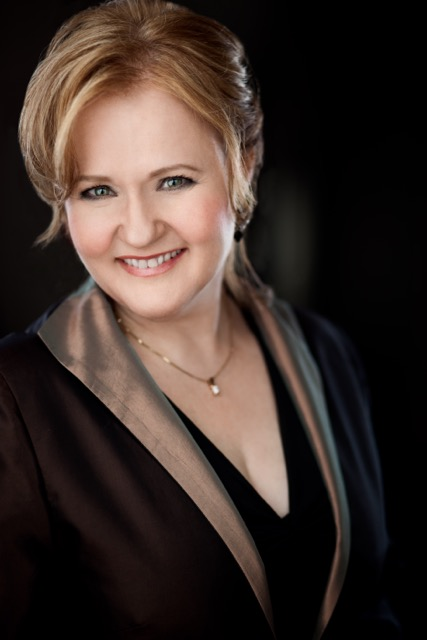 When I was 21 years old, I found myself in the crook of a grand piano singing Schubert’s Der Hirt auf dem Felsen with clarinetist François Houle, and Martin Isepp at the keyboard. Looking back on that first experience in song, I realize how much influence the people in that program had in my professional life as a singer, and now, as a teacher. The well is deep with the benefits I gained in Banff — in fact, they have become the wellspring that has nourished my career. No one could have been trained through the Banff program and not have been changed. There were new challenges each day: singing in front of your peers, voice lessons, coachings to prepare for the next composer or concert.
When I was 21 years old, I found myself in the crook of a grand piano singing Schubert’s Der Hirt auf dem Felsen with clarinetist François Houle, and Martin Isepp at the keyboard. Looking back on that first experience in song, I realize how much influence the people in that program had in my professional life as a singer, and now, as a teacher. The well is deep with the benefits I gained in Banff — in fact, they have become the wellspring that has nourished my career. No one could have been trained through the Banff program and not have been changed. There were new challenges each day: singing in front of your peers, voice lessons, coachings to prepare for the next composer or concert.
Martin had wonderful stories to tell, experiences he wanted us to live, and hemiolas to find — he was the ‘King of Hemiolas’! It wasn’t all work, though; once a week we would go to Lake Minnewanka, to be in nature. Martin wanted us physically connecting to the world that poets ask us to inhabit in song. We talked about poetry and listened to the birds sing and the brooks murmur, and we felt the wind on our faces. This tactile learning and its benefits were taken back into the basement studios at the Banff Centre. Nature was always near; I remember a particular elk that liked to lie near the window well where Mary Morrison taught. It was surreal.
My strongest memory was when Martin asked me to sing Vergebliches Ständchen, but with my hands in my pockets! He had a lesson for me to learn — that the story-telling had to begin in the sound and word. He determined that this was going to be my journey, and assigned me songs that required absolute stillness. He knew what I could bring to a story as an animated communicator, but the growth he knew I needed was being still and finding the expressivity in my sound.
This challenge would have been an impossible task had it not been for Mary Morrison. Meeting Mary changed my life. She is my life-long teacher, mentor and friend. I will never forget the support she freely gave, that met all of us after a concert or a masterclass, and the instruction that always followed. I learned from her that a ‘performance’ doesn’t mean that the journey is done. Every moment in music, whether it was a lesson, a performance, or simply observing a colleague, was an opportunity for me to grow as a musician and a storyteller. To describe the significance of my technical learning from Mary would need another whole article. Suffice it to say: I became passionate about technique under her guidance.
These two people, Martin and Mary, taught me about a marriage that should never end; the marriage of sound and word. The sounds made by the human voice, emanating from the soul, coupled with the rich musical world of the composers, through the skilled hands of
pianists, in the dance of notation and word. These two elements are so intertwined that the one who observes cannot tell which element is leading. In Banff, we marvelled at the beauty of it daily… what a blessing.
Reminiscences of Martin Isepp and Banff: Summer, 1991
By Susie Allan, pianist
I was first coached by Martin during my second year of postgraduate study at the Guildhall School of Music and Drama. Being a green and inexperienced student, I confess to having known nothing of his artistic esteem. He appeared kindly, gentle, unassuming and modest. But when it came to the music, what passion, discipline and uncompromising care he took over it. Thanks to him I was invited to audition for the ‘Banff Centre for the Arts’. The institution was unknown to me, and I’d never been to Canada before — but five weeks of fully funded study of the Art of Song was more than enough for me to realise it was an opportunity worth fighting for.
The audition turned out to be an unforgettable occasion in more ways than one! As the candidates arrived at Martin and Rose’s beautiful Hampstead home, we were shown into an elegant drawing room in which we milled about nervously. After a few minutes, I was called through to the music room with my singer to perform our short programme. We returned to the drawing room only to be met by a most unexpected scene: clouds of dust and panicky commotion, with singers yet to audition frantically covering their noses and mouths with scarves, coat collars, jumpers, darting hither and thither to escape the plaster dust billowing from a large portion of the ceiling which had evidently detached itself on to the floor! Despite the small (but I imagine rather expensive) calamity, nobody was hurt, and the auditions continued, regardless of the possible effects of the dust!
So it was an enormous privilege to have been accepted on to the song programme, and to study with Martin, and Mary and John Hess, in the stunning setting of the Rockies. In a masterclass situation, Martin was an absolute master of the form. He had an exceptional way of enabling both singer and pianist to find a clearer path to the essence of a song. Interpretations became deepened, enriched, sometimes quite transformed, whilst still maintaining the musical integrity of the students in the spotlight. And this would happen in front of our ears and eyes in a time-slot of around thirty minutes. He was simply the best in this regard: the song itself was always planted firmly at the top of the pedestal, 50% voice, 50% piano. He helped singers to understand the piano parts better, to listen more keenly, to develop a deeper awareness of the entire composition; and such was his understanding of voices, he would help us pianists to aim towards bringing out the best in a voice, through the way we might use colour and rubato, so to reveal a song’s secrets more fully.
The five weeks of study culminated in two concerts. In preparation for this article I dug out both the programme and recording, and have had such pleasure listening to the young Jenny Wollerman, Rosalind Jones, Connie-Lin Chmura, Nathan Berg, and Brett Polegato to name but a few. It was gratifying to appreciate we are all still making music across the world. I’m sure I will not be alone in acknowledging the debt of gratitude we owe to the great Martin Isepp (1930–2011).
A Winter Journey Through a Pandemic
By Kathleen Van Mourik, Pianist and Artistic Director, International Festival of Song and Chamber Music Society
The concert halls are still closed. I started a small recital series in April called ‘Isolation Point Virtual Concerts’. It was inspiring to see the beauty musicians were creating, so I decided to expand the idea when we cancelled a summer festival. The pandemic encourages wanderings into uncharted emotional territory. I feel as if I am inside a winter journey, isolated, the poetry resonates wildly… the inner drama of the individual.
COVID-19 continues to haunt musicians. We don’t know what the future holds for us, but I saw a window of opportunity, and it looked out onto the landscape. We could still be creative — an artist, a baritone, a small group of pianists, a recording engineer, a videographer and a resiliency grant along with a good old prairie winter in the great white north. We are used to isolation. I ramble around on a farm that has put the pandemic on the backburner for much of each day, until I sit down at the piano to practice — how blessed am I, all the piano masterpieces at my disposal — but I’m used to collaborating. I miss the intensity of working together. Art song has always been my first love, and covid torpedoed the creative forces of humans when they come together to create art.
Eveline Kolijn is a phenomenal artist. Her work reflects the intertwining of art and the environment. I asked her if she might be interested in a project for Schubert’s Winterreise, and it became an obsession, just as it does for all musicians. It draws us into the darkness, paths to insanity and despair, questions our relationship to nature — a signpost of our times. Were we all headed to the poorhouse? Were we all delusional, seeing sun-dogs on the harsh prairie landscape, or were we doomed to be broken like the Leiermann?
„Eine Straße muss ich gehen, die noch keiner ging zurück.“
We musicians are in uncharted territory — isolated and alone. The words of Wilhelm Müller resonate as deeply as the music. When I talked to Brett Polegato about singing a Winterreise that would be portrayed within an Alberta winter landscape, I hoped he would take the risk. I wanted to create a film that shows our fragility, our homelessness when art is lost. Two young pianists, Cindy Zhang and Jack Olszewski, believed in my wanderings and were excited to be part of this project. The audio/film crew, the musicians and artist were willing to get together, masked, distanced, the only intimacy of contact through the music.
The experience was surreal. The cities had returned to light-lockdown, but the rural areas were still relatively unrestricted. Masking was not yet a provincial mandate, and indoor gatherings not yet illegal. We were inspired. It was, after so many months, a true collaboration. I’m looking forward to viewing all our efforts that went into creating the Winterreise film, a product of COVID-19, a phoenix rising from the ashes, a tribute to Alberta landscapes.
The music and film were recorded in rural Alberta. Logistics were challenging. We recorded over a week, isolated, masked when not performing, distanced, and we lived. In fact, we lived like there was no tomorrow.
The release of the Winterreise film is scheduled for spring, 2021. Please visit www.mountainviewfestival.com for future updates.
American Composers at Play
By Stephen Powell, baritone
My first experience working with a living composer at the piano was with the American Composer Lee Hoiby. We performed his song cycle I Was There in 2001 at Weill Recital Hall in New York City, and this event remains one of the highlights of my career. Ever since that day I’ve had the dream to record an album of contemporary American Art Songs with composers that possessed the pianistic skills to play their own music. That dream came to fruition in 2020, culminating with the release of my first solo CD, American Composers At Play (Acis Productions).
William Bolcom, Ricky Ian Gordon, Lori Laitman, and John Musto are giants in the world of contemporary music. During the beginning processes of choosing repertoire from each composer, I had the wonderful opportunity to rehearse their music in their own personal spaces, which was simultaneously an artistic revelation and a musical education. Whether it was in Bill’s Michigan home on a crisp autumn afternoon, Lori’s grand and spacious Manhattan apartment, John’s comfortable living room in his high-rise condo, or standing next to Ricky and his upright piano with his sweet little dog Lucy lounging nearby, listening to their thought processes, stylistic choices, and underlying purposes in creating these songs made me feel like the luckiest singer on earth. Having the ability to lean over the piano and ask questions about their ideas, reasons, feelings, intentions, text choices, diction preferences, and emotions, was extraordinary. To then have the excitement and vitality of being in the moment with the creators present and performing their own music was both inspiring and thrilling.
We were fortunate to finish recording all the tracks before the Covid pandemic hit in March of 2020, but we still had the arduous task of editing, tracking and mastering during the pandemic, which proved quite challenging. Yet through all those moments of difficult decisions and delays, when I thought about postponing the release because of all the hardships the world was facing, one thought kept me going — the world needs Music. The world needs Art.
And even more importantly — we need each other — especially now when live performances are unavailable. Composers need us, more than ever, to give voice to their ideas. Performers need them, for without them we are but empty vessels. And we both need an audience of people yearning to be fed, who hunger to feel and hear and absorb and be filled with the joy of sound and vibration. Until we can all gather again safely, seek new ways and opportunities to perform new music. Help those who are struggling to create find ways to be heard. Give voice to others’ hopes, dreams, creations, desires, wherever and however you can, and do so without fear or concern, worry or dread, but with an earnest belief that Art is the highest calling, the greatest example of our humanity, and the worthiest cause to which we offer our hearts and souls.
We need each other.
Peace. Love. Joy.
STP
To purchase a copy of American Composers At Play please visit https://stephenpowell.us/recordings.
Mahler: When Art Song Becomes Orchestral
By Susan Platts, mezzo-soprano
“In its beginnings, music was merely chamber music, meant to be listened to in a small space by a small audience.”
– Gustav Mahler
One of my first experiences performing with an orchestra was with the Victoria Symphony about 25 years ago when I was hired as the alto soloist for Mahler’s 2nd Symphony. My relationship with Mahler’s music began a few years earlier when I performed Urlicht, the 4th movement from his 2nd Symphony. This performance was with piano in the very small setting of my voice teacher’s living room. In some ways, I felt great comfort in having already performed Urlicht, but stepping onto a stage with a full orchestra in a big concert hall was a far cry from that living room. I had to learn to express deeply intimate music in a larger space whilst navigating the orchestral forces. No matter how softly the musicians played, a greater direction of my sound was required to be heard in the concert hall. It was a learning curve and something that, to this day, constantly needs attention due to the various factors involved, including repertoire, acoustic characteristics of the hall, and the conductor’s sensibilities.
Taking music from a small space with a piano to a grand stage with an orchestra can be challenging. Typically, before the first orchestra rehearsal, a soloist will have a piano-vocal rehearsal with the conductor. This serves many purposes, from interpretation and tempi to diction and dynamics. During this rehearsal, you might feel that your sound is as strong or as loud as needed or extremely soft and tender for the most intimate moments in the score, but those perceptions might dramatically change when you are on stage with the orchestra. It is a balancing act. Where are you standing on the stage? How far down can the orchestra’s dynamics be taken whilst still delivering the wave of sound the music requires? Is there someone in the hall that can speak up if the balance is off? How can I be heard more clearly?
My time spent mentoring with Jessye Norman was priceless in many ways, but the biggest thing she helped me with was the intention and direction of my sound. This is my most valuable tool when moving from intimate Lieder with piano to the orchestral stage. Jessye worked to bring out my more “innerlich” sound, allowing me to more easily project into the concert hall whilst maintaining the integrity of the dynamics. To this day, I still see her sitting in front of me “pulling the sound out”, constantly giving my voice the feeling of a forward flow into all the corners of the hall. The intention of direction is not necessarily singing louder, but rather directing the sound more efficiently whilst still giving detailed attention to diction. Whether performing in a living room or a large concert hall, maintaining the intention of your voice’s direction is key to a good performance and greatly contributes to vocal longevity.
On Song
By John Gilhooly, O.B.E
Artistic and Executive Director of Wigmore Hall
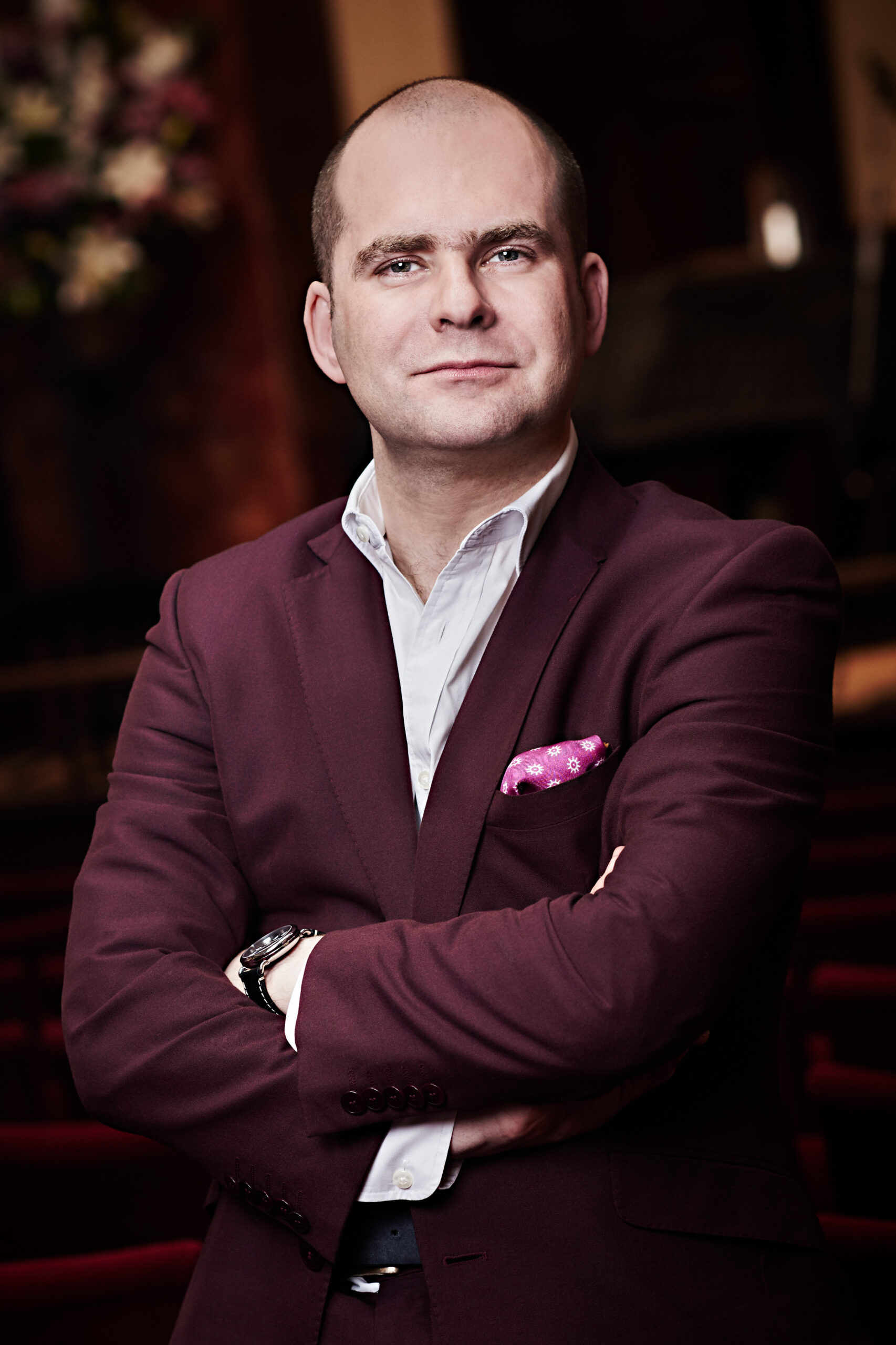 Since 2005, Wigmore Hall has expanded its song recital series from 42 recitals a year to just under 100 a year. The COVID-19 health crisis has silenced some of our song recitals this year, but since 13 September we have been open to a live public audience and live streaming online. It was a huge joy to welcome Dame Sarah Connolly with Malcom Martineau back to the Hall in September, and Gweneth Ann Rand’s performance of Messiaen’s Harawi, with Simon Lepper, was truly exceptional. It has been interesting to see how our live streaming has attracted a new and young online audience for the song recital. During concerts, online comments from the public are coming from a worldwide audience of every age and demographic. Wigmore Hall easily has the world’s biggest song recital programme in terms of sheer numbers, however it is heartening to know that song thrives outside London, in the Ludlow English Song Festival, Leeds Lieder and the Oxford Lieder Festival.
Since 2005, Wigmore Hall has expanded its song recital series from 42 recitals a year to just under 100 a year. The COVID-19 health crisis has silenced some of our song recitals this year, but since 13 September we have been open to a live public audience and live streaming online. It was a huge joy to welcome Dame Sarah Connolly with Malcom Martineau back to the Hall in September, and Gweneth Ann Rand’s performance of Messiaen’s Harawi, with Simon Lepper, was truly exceptional. It has been interesting to see how our live streaming has attracted a new and young online audience for the song recital. During concerts, online comments from the public are coming from a worldwide audience of every age and demographic. Wigmore Hall easily has the world’s biggest song recital programme in terms of sheer numbers, however it is heartening to know that song thrives outside London, in the Ludlow English Song Festival, Leeds Lieder and the Oxford Lieder Festival.
Some commentators insist that the song recital is living on borrowed time. They point to ageing audiences, patchy programming at leading concert venues, and the incompatibility of narrowing attention spans and deep listening to refined settings of poetic texts. Promoters do not always know the song repertoire or understand what it takes to bring song to life. They may not value song as highly as instrumental music or, if they do, believe that song recitals are a hard sell. There are clear challenges for song recital audiences around language, where a programme might easily contain songs in German, French, Spanish, Italian and English. These can present genuine barriers to people who want to understand what they are listening to without having to decode poetic texts in foreign languages or even in translation. But it is the promoter’s job to overcome and not dodge those challenges, to provide audiences with the highest quality experience of song and open minds to this vast imaginary world.
Song has been part of human life since early times. It remains central to every culture, civilisation and community, and holds the power to touch our deepest emotions, more a spiritual necessity than a garden variety of entertainment. Art song belongs to this vast legacy of expressive communication, combining words and music in ways that so often exceed the sum of their parts. As Chairman of the Song Prize for BBC Cardiff Singer of the World, I am always reminded of the enormous value of this great tradition and of the pressing need to keep it alive and well for future generations of singers, song pianists and audiences.
Last-minute cancellations due to travel restrictions have enabled me to introduce new artists to the Hall in debut recitals: for instance, Elizabeth Llewellyn with Simon Lepper in a programme of Coleridge-Taylor, Strauss and Mahler; a significant debut for the German-Romanian baritone Konstantin Krimmel with Malcolm Martineau; and Ema Nikolovska, an outstanding Canadian YCAT and BBC New Generation Artist. These are people to watch.
I am now looking to post-pandemic times and how we can celebrate song with major festivals and themes. Next year’s programme will probably be confirmed on a month-by-month basis, and I don’t imagine huge thematic threads for song until 2021. But rest assured, Wigmore Hall will always remain the home of song.
Tunes Behind the Keys
By Rachel Fenlon, soprano and pianist
“I was only a folk singer for about two years…. By that time, it wasn’t really folk music anymore. It was some new American phenomenon. Later, they called it singer/songwriters. Or art songs, which I liked best. Some people get nervous about that word. Art. They think it’s a pretentious word from the giddyap. To me, … the word art has never lost its vitality.”
– Joni Mitchell
Sometimes I like to call art song the endangered species of classical music. No one wants to see it go extinct — it is beautiful and miraculous, yet keeping it alive feels like a mode of preservation. Its lack of fiscal power within the music industry has banished its relevance to the past: mummified, rather than relevant. For many years, as a lover of the hypnotic union of music and poetry that is art song, I watched with deep objection as exactly this happened: an increased institutionalisation of the art form, leaving it feeling outdated and stale, unable to evolve. And of course, the inevitable happened: I began to break traditions, and rules, to see, listen to, and experience the results.
I began accompanying myself and singing song recitals from the piano 5 years ago. I was already based in Berlin, and was doing an artist residency in Lunenburg, Nova Scotia. I was equal parts pianist and singer, always have been, and until that point I’d always felt that I could never entirely inhabit a musical space, for feeling I was leaving a part of myself behind. At this residency — breathing in salt-water air, the beckoning of timeless hours — came my first urge to sit and play my own accompaniment for a Schubert recital. From this moment, the rest is history. That performance was a revelation: I felt so free, so truly at home with the songs, despite not yet having a developed technique for self-accompanying, and not really knowing what I was doing.
The path thereafter was performing recital after recital with a total experimental attitude. Which repertoire worked, how did the audience react, what are the technical limitations and freedoms? For example, I had to address purely technical questions such as projecting text clearly from behind the grand piano — how to angle the piano to achieve this best, how much the audience wants eye contact with the singer (not as much as you’d think). I did art song young artist programmes with figures like Malcolm Martineau in Scotland and the Oxford Lieder festival as a singer and pianist, and was in both places the first ever to be invited as a self-accompanying singer. My idea was to get to the heart of the tradition, in order to break free from it. I began to commission composers, and perform contemporary music in every recital. More and more, I believe firmly that giving voice to the composers of our day is crucial to the vitality of this art form. I am excitedly awaiting four new song cycles currently being written for me to self-accompany. One cycle is being composed to my poetry, two are with electronics, two are written by Canadian composers.
Spontaneity is an operating word for me. It’s where I feel the spirit is free. Accompanying myself allows me to be very spontaneous with interpretation, and tempo, and I am very inspired by the singer/songwriter and folk singer approach to song. It has always felt very natural and unaffected, and that is what I’m striving for as a performer, especially of “classical” music. I perform everything from memory to further this freedom: from Schubert, Debussy, Britten cycles to modern songs of Crumb, Ligeti, Gubaidulina. The freedom of memory is an amazing place to inhabit, and I can enjoy spontaneity right up to the point of deciding to play a certain song instead of another on stage that night, and chatting with the audience about it — because, why not?! Spontaneity is intimate, risky, and vital, and it requires a relationship with the audience. Spontaneity allows the songs to take on their own lives, their own stories.
The quest for accompanying myself, questioning tradition and preconceived notions of what song should be, puts me in constant conversation with the music, in communication with text, sound, and spirit. I’m certainly not the only artist right now to traverse new paths of the art song, and I encourage all of us to question where the limitations of the genre serve us, and where they hold us back. That can only be done by breaking a few rules.
Berlin, November, 2020
A Postcard from London
By Iain Burnside, pianist
Ah, Covid. The gift that keeps on giving. As I write this in rainy London howls of pain are uniting the music community: how crap it is that most concerts are cancelled; how our Government, happy to receive our taxes, undervalues the arts, and freelancers in particular; how we miss the buzz of making music together; how we miss our mates.
Silver linings pale into insignificance in the face of such dark clouds, and yet glimmers of far-off silver do fall on us workers in the song mines. Our collaborative music-making defines social distancing – it’s the length of a grand piano. We personify Small Is Beautiful. While opera companies agonise trying to fit orchestras into pits, the song recital can sail serenely on. We also live, thank God, in the era of the portfolio career. How many singers and pianists do you know, living on concert work alone? So let’s hear it for teaching, coaching, writing, presenting, ducking and dodging. I recently went for a long dog walk (another silver lining) with an old conductor friend, who enjoys a flourishing international career. His problems put my own into sharp perspective. I nearly suggested that the music industry might now question its orchestra-centric pyramidal structure, with conductors at the pinnacle — but I thought better of it, and we walked on happily with our dogs.
Another socially distanced activity is recording. From the ashes of this season I was lucky enough to salvage three song CDs: two neglected mid 20th c. composers, one Scottish (Erik Chisholm), one Irish (Ina Boyle), and the rather less neglected Viennese composer Franz Schubert and his Winterreise. Covid cast its evil spell on the Chisholm sessions, two years in the planning. Our mezzo was travelling back from the Salzburg Festival. Four days before the recording, the UK Government slammed a quarantine ruling on Austria and boom! Bang went fourteen songs in often impenetrable Scottish dialect. The next silver lining appeared with the first manic phone call I made, to a Scottish soprano friend. Out of work actors say, my greatest asset is my availability. So the soprano in question was thrilled at the opportunity, turned up immaculately prepared and sang brilliantly. (Note to pianists, as mezzo morphs into soprano: you just never know when those transposition skills will come in handy.)
Winterreise posed a different Covid-accentuated problem: imposter syndrome. Lord, I am not worthy. A couple of days before those sessions I felt stale in the face of over-familiar piano parts, staring into the abyss of impossible beauty. I decided on some internet surfing, dipping into the kazillion existing recordings in the hope of epiphany. But that way madness lies. I unplugged and went back to the piano, determined to find my own way through.
I was reminded of that feeling last week at the Guildhall School, in rehearsal for a group student recital featuring tricky, off the beaten track repertoire. An aspiring baritone caught me off guard, enthusing that what he loved about this project was not being able to find recordings. It’s so liberating! What I decide to do is valid in its own right! Er, yes indeed. My challenge is to encourage them in the same direction, whatever they sing. Imposter syndrome alert!
Curses, challenges, the occasional silver lining. These are hard times for all of us, individually and together. I send my best to all my Canadian friends and colleagues. Stay healthy. Chins up. See you on the other side.
A WORD FROM THE EDITOR…
Please let us hear from you about our articles, and
particularly with suggestions for future subjects and authors.
You may contact us at [email protected] ;
or consider leaving a post in the new Comments section
at the bottom of the Art Song Canada page of this website.
Teachers: Please bring our e-zine to the attention of your students
and suggest they subscribe. It’s free!
– Jim Norcop, Editor
Aldeburgh Memories
By Françoise Sutton
Past President, Canadian Aldeburgh Foundation; Honorary Director, Art Song Foundation of Canada
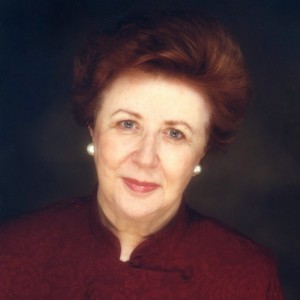 In June 1970, my husband, our 12-year-old son Philip and I arrived in the small, seafront town of Aldeburgh in Suffolk. We had come to investigate the music festival which had been established there in 1948 by its native son, Benjamin Britten and his partner, Peter Pears. Stricken with jet lag, we headed out for a walk on the Crag Path amid a gale along the shingle beach to try to revive ourselves. Sea and sky were the same steel grey colour and we met not a soul. A world-famous festival, mid-June and nobody around? Then I noticed a man, alone with his dog by the lifeboat, looking at the sea. As we drew nearer, I thought “could that be…?” but dismissed the idea as a mirage due to lack of sleep. The man then suddenly turned back towards us and it was indeed Britten himself. We could not have hoped for a better welcome to Aldeburgh!
In June 1970, my husband, our 12-year-old son Philip and I arrived in the small, seafront town of Aldeburgh in Suffolk. We had come to investigate the music festival which had been established there in 1948 by its native son, Benjamin Britten and his partner, Peter Pears. Stricken with jet lag, we headed out for a walk on the Crag Path amid a gale along the shingle beach to try to revive ourselves. Sea and sky were the same steel grey colour and we met not a soul. A world-famous festival, mid-June and nobody around? Then I noticed a man, alone with his dog by the lifeboat, looking at the sea. As we drew nearer, I thought “could that be…?” but dismissed the idea as a mirage due to lack of sleep. The man then suddenly turned back towards us and it was indeed Britten himself. We could not have hoped for a better welcome to Aldeburgh!
Our first event was a stunning performance of The Rape of Lucretia starring Janet Baker with the English Chamber Orchestra, conducted by Steuart Bedford. This took place in the Maltings Concert Hall (810 seats), a converted Victorian malt house. The red brick walls and the seats of blond wood and cane chairs combined to offer perfect acoustics.
The hall is situated 5 miles from Aldeburgh in the village of Snape, which later became also the site of the Britten-Pears School for Advanced for Musical Studies in 1972. Situated in the middle of a vast field of marshes and reeds, near the estuary of the River Alde, this peaceful setting is unique for audiences, performers and students alike.
For the next 20 years, the last 2 weeks of June were firmly reserved for the Aldeburgh Festival. We got to meet other regular visitors, artists and personalities involved in the running of the Festival. A great many concerts followed, including the first performance of Britten’s last opera, Death in Venice in 1973, with Peter Pears and John Shirley-Quirk in the major roles and conducted by Steuart Bedford. It got a triumphal reception which, alas, the composer missed due to failing health. The opera includes an important piano part, brilliantly played by Stephen Ralls, at the time the repetiteur of the English Opera Group. Little did we all know that, a few years later, Toronto would become his home and that, together with pianist Bruce Ubukata, they would start an outstanding recital series aptly named The Aldeburgh Connection. They both had been on the Faculty of the Britten-Pears School for many years.
The 1975 Festival was a turning point for our family. One day, out of the blue, the Treasurer of the festival handed me a large envelope with the instruction to look it over. To my stupefaction, it contained the Letters Patent of a new foundation named the Canadian Aldeburgh Foundation. That same day, I was asked to become its first president. The goals were to encourage cultural exchanges between Canada and the UK and, most of all, to provide financial assistance to talented young Canadian singers (and originally string players) enabling them to attend the summer masterclasses offered by the newly established Britten-Pears School.
In 1977 the first contingent of Canadian students (3 singers,1 pianist and a string quartet) landed in Aldeburgh. Over the following years, more than 340 young musicians followed, eager for the rare opportunity of concentrated study with the great names of the music world: Souzay, Schwarzkopf, Hotter, Ameling, Vishnevskaya, Johnson and, of course, Peter Pears himself who taught a Bach course right up to the day before he died, in April 1986. Rostropovich came to coach and conduct Onegin and Murray Perahia did the same for Così fan tutte. In the cast, a Canadian student named Gerald Finley sang Guglielmo.
Forty years on, after the deaths of both Britten and Pears, many changes inevitably occurred. The CAF was particularly affected when the School decided to cover tuition, as well as travel and living expenses for the students. We then decided to recast ourselves as The Art Song Foundation of Canada focusing on singers and collaborative pianists accepted to any song programme of their choice worldwide. As such, our work continues.
The last words belong to one student: “For me, the richest musical experience I have had to date. The word ‘magical’ comes to mind”.
It was a great privilege to have been a small part of it.
Song is a Fragile Genre
By Martin Katz, pianist
Professor of Music, University of Michigan
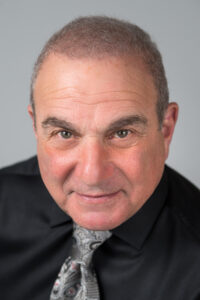 I write in response to an article in Art Song Canada’s recent issue by my esteemed colleague, Graham Johnson. There certainly is no one more knowledgeable or passionate about the world of song than he. His name has become synonymous with historical detail, with sound advice about program planning, and fascinating anecdotes about poets, composers, singers and their pianist partners. If Google were exclusively about art song, it would surely be called Graham.com.
I write in response to an article in Art Song Canada’s recent issue by my esteemed colleague, Graham Johnson. There certainly is no one more knowledgeable or passionate about the world of song than he. His name has become synonymous with historical detail, with sound advice about program planning, and fascinating anecdotes about poets, composers, singers and their pianist partners. If Google were exclusively about art song, it would surely be called Graham.com.
All that being said, I find I must disagree with some of the points he makes in the aforesaid article. Yes, song is a fragile genre much of the time, but at the moment — at least in North America — the art song recital is dangerously close to requiring resuscitation. Our concert halls are too big; only celebrated singers can fill them, and too often these are singers with international operatic careers but lacking experience and identification with the more modest gestures which songs require. And Graham is correct: few people spend time with poetry these days. The concentration “muscle” of today’s public is not being exercised; we are so bombarded with stimuli that the notion of watching two performers standing still for the better part of two hours has become almost inconceivable.
But are we prepared to allow the experience of a song recital to die? I, for one, do not want it on my tombstone that I aided its becoming extinct by doing nothing. The question is: what is appropriate and beneficial? How far is too far? When is the genre no longer recognizable? I remember a recital featuring Mussourgsky’s Nursery cycle where the singer (in a long gown) straddled a broom and galloped around the stage for the hobby-horse song. I think Graham and I would be in agreement that such behavior overwhelms the song and presumes that the composer and poet have not done an adequate job, and is therefore completely unacceptable.
For me, the texts in a recital are no less important than the music they inspired, perhaps even more important sometimes. Graham does not discuss the fact that modern audiences are not polyglots, nor that advocating the study of the texts in advance is a lost cause. He writes of the pianist becoming invisible as the activities on the stage increase, but I wonder if that is the worst of the results when a concert becomes a “show” (Graham’s term). For most of my five decades of performing, I was unaware of any obstacle to the communication my partners and I were offering the audience. We were making good music, the texts were being pronounced correctly and delivered expressively. I shared Graham’s opinion about adding surtitles to the experience. I was convinced that the experience would lose its identity, that the Art would be diluted. I argued long and loudly against the texts being displayed.
Along came a series of song concerts where the auspices convinced me to at least try surtitles once. I find it difficult to articulate here the amazing change in the atmosphere, the palpable connection between stage and public that I experienced. The energy flowing back and forth was something I had never felt, and as I said, this was after hundreds of concerts all over the world. My conversion was immediate and complete. The genre was not ruined, corrupted, nor diminished in any way. Quite the opposite, actually. I did not feel I had become an invisible pianist, and many post-concert comments I received confirmed this. The singers expressed pleasure in seeing the audience’s faces, rather than the tops of their heads as they read the printed texts.
Most important is the idea that art song is the marriage of music and text. If the audience does not understand the poem, line by line in real time, that marriage is incomplete. As a result of my recent experiences with surtitles, I am now a firm believer that a contemporary audience is more in touch with this wonderful fusion of words and music with the addition of these visible translations. The price of not understanding the words far exceeds the small distraction of a screen over the singer’s head.
Der Jüngling an der Quelle
By Steven Philcox, pianist
Head of Collaborative Piano Studies, University of Toronto Faculty of Music; Co-Artistic Director, Canadian Art Song Project; Director, Toronto Summer Music Art Song Program
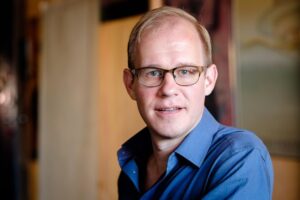 In my heart of hearts, I am a singer. My most vivid childhood memories are underscored with music, and song in particular. Whether the lullabies sung by my grandmother, songs sung in grade-school music circles, or the classic country ballads that seemed to ceaselessly emanate from our stereo, the enchantment of words and music took hold of me at a very early age and has never let me go.
In my heart of hearts, I am a singer. My most vivid childhood memories are underscored with music, and song in particular. Whether the lullabies sung by my grandmother, songs sung in grade-school music circles, or the classic country ballads that seemed to ceaselessly emanate from our stereo, the enchantment of words and music took hold of me at a very early age and has never let me go.
I had always expressed a certain envy of the children in our neighbourhood who took piano lessons. Unfortunately, we didn’t own a piano nor did we have the means to purchase one. At the age of ten, I returned from school to find a piano sitting in our living room. A distant relative had passed away and the piano needed a new home. My uncle, an amateur pianist himself, helped haul the piano from northern BC to our place in Penticton. It was a low-back upright, a little worse for wear, but she had 88 working keys and two pedals. I was beside myself as my uncle spent the better part of that afternoon teaching me the 1945 classic Sentimental Journey (Homer, Brown and Green). Imagine the thrill. Within hours I was playing what felt and sounded like music. I was on cloud nine (not to mention singing!). I was enrolled in piano lessons immediately, I think mostly to stop me from playing this incessant tune which for those around me had become a little less than sentimental.
I was introduced to Art Song through our annual Kiwanis Music Festival — a rite of passage for most young Canadian musicians. When I was sixteen, I was paired with a young soprano to play for her classes. She had a crippling stutter in spoken interactions but sang with one of the most fluid and luminous sounds I’d ever heard (made all the more expressive by a soul set free from the bondage of its spoken counterpart). For the first time I became aware of music’s power to heal. I understood that playing for her was an extraordinary experience, one that would change me forever and plant the seed of my love for the human voice.
Upon graduation I was unsure about my future direction. I adored music but also had a passion for mathematics and debate. I needed time to reflect and get away from small town living. I needed to see the world…
And so, I lived as an exchange student for one year in Naga City, Philippines. I experienced unforgettable things: earthquakes, erupting volcanos, unspeakable poverty, unfathomable wealth, civil rebellion, cultural celebrations, and through it all a resilient people with very deep musical roots. Folksong, pop music, and dance were part of my daily life, and in the evening, karaoke was king! I played regularly, learning the songs we were singing socially, lifting music from the radio, immersing myself in the music around me. Song became the language that connected me with the people and my surroundings, the thread that tied everything together. At the end of my year I was sure of two things: a) I was changed, and b) I wanted to pursue music.
The title of this article is borrowed from the poem by Salis-Seewis, set so beautifully by Schubert when he was 20. As I look back on these formative years, I see that I was very much the youth at the spring, constantly renewed and guided by music and song. How incredible then, on that fateful day a piano arrived in our home, that the name engraved above middle C in ornate gold script would be…
Schubert.
Seeking an Old Truth
By Monica Whicher, soprano
Head of Voice Studies, University of Toronto Faculty of Music; Director, Art Song Foundation of Canada
 I originally wrote this piece in February, well before we found ourselves in this current state of isolation and uncertainty. My thought was to encourage support of Song, and of all who convey and generate this wonderful art form. My thought was to nudge us all towards experiencing the remarkably rich assortment of song recitals available to us, thanks to professionals and, especially, I wrote, thanks to student performers and composers:
I originally wrote this piece in February, well before we found ourselves in this current state of isolation and uncertainty. My thought was to encourage support of Song, and of all who convey and generate this wonderful art form. My thought was to nudge us all towards experiencing the remarkably rich assortment of song recitals available to us, thanks to professionals and, especially, I wrote, thanks to student performers and composers:
“Song — reports of its demise notwithstanding — is everywhere. Scour, for example the Wholenote or La Scena magazines and you will see recital listings featuring established and up-and-coming artists in mainstream and unique venues. Go! You will see that well-known and emerging composers are presenting their most recent commissioned works. Go! Go! But where you can really take heart is with the young musicians who are creating — because they can and they must — new Songs, even as I sit here typing. Look at your local university Concert Calendars and you will be amazed. Go! Go! Go!”
Reading that paragraph now, I feel I have passed through a portal, leaving a whole world of expectation and excitement and experience behind. As we all know, just now there is no going to anything. Reading those words of encouragement, I feel almost foolishly naïve. Suddenly, there are no performances to attend. For the seasoned artists and for those starting out; for the listeners, for proud parents of young recitalists, for partners and teachers; for all of us, this loss of shared music — of so many songs — is like a blow to our collective being.
As we simply try to stay well and safe, to feed our families, to thrive in whatever ways we can, it is hard to imagine a return to the musical worlds we have inhabited, and have very often taken for granted. So, unmoored, I am searching for old truths — for the musical memories that might steady me.
I am remembering the comfort of being sung to. I am remembering working hard to play a tricky passage in “Parade of the Giants”. I am remembering the magic of church music.
I am remembering one particular song, something I used to sing as child with my friend Christina; every visit found us, side-by-side on the piano bench and happy as clams, singing and playing “With a Smile and a Song”, often recording ourselves on a portable cassette player for posterity.
I am remembering the first time I heard Robert Schumann’s “Ich grolle nicht” (my mom was singing it) and Gerald Finzi’s “To Lizbie Brown” (my dad was singing it); when all might not have been exactly right in my world, these songs overtook my teenaged heart the same way James Taylor’s ballad, “If I Keep My Heart Out of Sight” — the background music to many a doleful evening — always managed to do.
I am remembering my years at the University of Toronto, surrounded by songs and the friends who were singing and playing them. Our teachers, each in a different way, guided us to meet this music’s challenge, honour its beauty and expose its stories; ultimately, this process revealed everything about a relationship with music. Did I ask, then, as I struggled to become myself, “Is song relevant? Is music relevant?” No, I certainly did not. I simply sang and played and knew it to be so. I think we all did.
Now, in the midst of this changed world, I feel forced into asking myself that very question. I ask it because now, more than ever, I need the answer to be yes, and yes for everyone, musician or not. In this uncertain pause, when those of us who are often noisy together are forced to be noisy (or quiet) alone, it emerges ever-more-clearly that music is the thing which brings solace and inspiration and comfort to a world in isolation, a world of music-makers and, so importantly, music-receivers.
Remote voices and instruments are miraculously converging to generate music for hungry listeners; countless songs have been offered for countless online listeners — songs that provide meaning, or a laugh, or express political disgust; songs that meet us where we are and challenge us to discover more; songs that are old treasures or new friends; songs that make us cry because they are so alive with possibility… songs that feed us.
And there is the old truth: because it provides nourishment and hope, music is relevant — before and after this unprecedented moment in time.
For sustenance and solace and inspiration and companionship, we must look for this truth wherever we can presently find it. And then, when it’s time again, look for it out in the world, where all of us will have returned to what we hold dear — the collaborative ritual of singing and playing and striving and listening. And with particular joy, we will witness those young musicians exploring their old truths — and, finally, sharing — because they can and they must — their brand new songs.
Live Arts in 2020: The Richard Bradshaw Amphitheatre Free Concert Series — Past, Present, and Future
By Liz Upchurch, pianist
Head of the Canadian Opera Company Ensemble Studio
As I write this article from self-isolation, arts venues across the globe are closed with the regrettable words “cancelled until further notice due to COVID 19”. I wanted to find a way to celebrate live arts rather than grieve the lack of them. I cannot think of a better way to do this than to describe one of the greatest live performance phenomena of the last decade. That is the Richard Bradshaw Amphitheatre Free Concert Series. For those of you who are unfamiliar with the venue it is a breathtaking space that is part of the Four Seasons Centre for the Performing Arts. It is nestled, fittingly, in the heart of downtown Toronto.
It is the home of a huge and remarkable free concert series that reflects the thriving and diverse community that surrounds it. It is the largest free concert series in Canada, with over 70 concerts a year.
It has provided a showcase for the COC’s Ensemble Studio recitals. This has given our young opera singers and pianists the exceptional opportunity to make chamber music and connect with an audience in an intimate setting. Performing there is now a big component of their training and one close to my heart. It is through my capacity as Head of Ensemble Studio that I have had the privilege to programme countless concerts as well as being involved as a performer and educator.
A few months before the building opened, Nina Draganic (the first director of programming for the series) asked me “what would you like to do and how many concerts would you like to participate in?’ I knew I wanted to frame the Studio concerts with “meet the artists” and then bid a fond farewell to those graduating with their “les adieux”. This arc has remained. The rest of the recitals encompass a huge variety of repertoire, principally art song, as well as chamber music with members of the COC Orchestra and Academy.
However, it is not just the Ensemble that fills up the vocal series. The series also highlights other Canadian vocal talent, including Ensemble alumni. In addition, artists from the casts of the COC season volunteer to give a recital during a run of their performances. Featured in the picture below is the British soprano Sue Bullock performing in the 1000th concert last year. Sue had opened the FSC with the Ring in 2006, the same year that I played the very first concert in the RBA. Celebrating this milestone was monumental.
I wonder if Richard Bradshaw (director general, music director and visionary of the COC ) and Jack Diamond (architect of the Four Seasons Centre) had any idea what a legacy they had left us. Since 2006 we have had: 1,081 concerts in total, 198,084 audience members, 6,657 artistic appearances and 52 world premieres.
Richard Bradshaw died in 2007 one year after the FSC was built. This article is a thank you to all the sponsors, artists, administrators, volunteers and audiences who help to keep music live everywhere. We all eagerly await the time when arts organizations everywhere will once again be able to open their doors.
The Vocal Arts & British Columbia’s Coast Recital Society
By Frances Heinsheimer Wainwright
Artistic Director of the Coast Recital Society, Sechelt, British Columbia
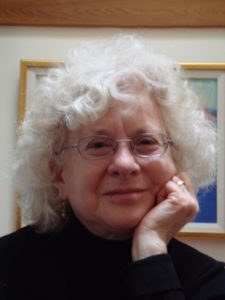 The Coast Recital Society is a classical music concert society located on British Columbia’s beautiful Sunshine Coast. How does a small, classical music concert organization thrive in a small BC community accessible only by ferry? The roster of outstanding performers over the years is surely part of the formula, as is our committed and loyal audience. The vocal arts have long occupied a significant place in our programming, with a wide range of repertoire – from Purcell and Schubert to Butterworth and Mussorgsky.
The Coast Recital Society is a classical music concert society located on British Columbia’s beautiful Sunshine Coast. How does a small, classical music concert organization thrive in a small BC community accessible only by ferry? The roster of outstanding performers over the years is surely part of the formula, as is our committed and loyal audience. The vocal arts have long occupied a significant place in our programming, with a wide range of repertoire – from Purcell and Schubert to Butterworth and Mussorgsky.
A New York native, I was truly fortunate in my early twenties to work at the “old” Metropolitan Opera House on 39th street in Manhattan. Night after night I heard unforgettable, great singers: Price, Rysanek; Callas; Gobbi; Vickers, London, Corelli, Schwarzkopf; Nilsson, to name but a few. Moving the clock forward, I moved to Canada in 1967, and began a 30 year career as a music producer for the English network at CBC Montreal. In 1997 came retirement and the move to the small community of Sechelt, BC.
The vocal arts are well represented in our concerts, with an impressive roster of singers and collaborative pianists: Karina Gauvin with Rena Sharon; Suzie Leblanc with Robert Kortgaard; Russell Braun with Carolyn Maule; Christianne Stotijn with Josef Breinl; Isabel Bayrakdarian and Serouj Kradjian; Richard Margison with Kinza Tyrell; Danill Shtoda and Larissa Gergieva; Susan Platts with Rena Sharon; Tyler Duncan with Erika Switzer; Philippe Sly with Michael McMahon; Patricia Hammond with Robert & Ellen Silverman; and only one (most regrettable cancellation): the lovely Layla Claire. Repertoire is varied and frequently a journey of discovery for our audience: from Schumann, Grieg, Schubert and Tchaikovsky, to Glinka, Balakirov, Viardot, Duparc and Raminsh.
Concerts take place in Sechelt’s Raven’s Cry Theatre, a 276 seat multi-purpose theatre that serves as an excellent concert space. We own a fine, reconditioned 9 foot Steinway concert grand most suitable to vocal recitals. Concerts are preceded by pre-concert chats, with commentary about repertoire, and an opportunity for the audience to ask questions about the music and the musicians. The 6 concert subscription series is sold out annually, with a significant waiting list.
Our audience consists of music lovers with a long history of concert attendance, many of whom have moved to the Sunshine Coast to escape those brutal Canadians winters. Yet, more than a few members of our committed audience are newcomers to the classical music concert setting. The CRS series is extended through our CRS Artists in the Community program, bringing our artists to eldercare homes and schools. Looking toward the musical future of our youth, we offer scholarships for local students, school concerts, and master classes by the wonderful CRS artists.
In our increasingly intrusive cyber world, our concerts connect music lovers who value the importance of live performances. The Coast Recital Society is living proof that a significant audience for classical music in all forms, — and vocal music in particular — exists not only in major centres, but in small communities as well.
 Since everyone is spending more time at home than usual, we thought we’d let our subscribers know about a wonderful new online video series from Dutch soprano Elly Ameling. Here is a link to her ‘Some Thoughts on the Heart of Art Song’.
Since everyone is spending more time at home than usual, we thought we’d let our subscribers know about a wonderful new online video series from Dutch soprano Elly Ameling. Here is a link to her ‘Some Thoughts on the Heart of Art Song’.
Das Kind und das Badewasser
By Graham Johnson, O.B.E., pianist
The title is not that of a forgotten Schubert song, although I admit to having thought of Der Vater mit dem Kind D906, and of the father in Erlkönig who tries in vain to protect his child. Throwing out the baby with the bathwater is a hazard faced by all those whose admirable enthusiasm for enhancing and rejuvenating song performance leads them to forget what makes song unique in the first place.
There is a limit to human concentration and the lied, at its multum-in-parvo best, was designed to stretch listeners’ brains and ears to the limit. There is little room for distraction. As the singer stands next to the piano, the interaction between voice and accompaniment is like the enmeshing of delicate gears, each cog in this complicated loom having been oiled by countless hours of work, first on the part of the composer and then by the performers. This interaction, singer and pianist weaving between them a very special magic, takes a lot of listening to appreciate, (one gets slowly better at listening, just as one gets better at playing).
But there now seems to be a determination to “help” the cause by inventing as many distractions as possible: lighting, sets, dancing, costumes, back-projections and intrusive surtitles that seem, at a distance, to be bigger than the singer’s face. The twentieth century employs technology foreign to the nineteenth in order to make the song experience more palatable. In these troubled times, listening to anything in more than one dimension seems an impossible ask. A sad by-product of this is that it lets young performers off the hook in searching for ever greater depth and subtlety in their own performances.
Art song is very vulnerable; its import can very easily be unwittingly destroyed with the best of motives – and what often gets lost is the close interaction between voice and piano. Putting on an ersatz musical or a fake opera using songs can be mildly diverting, but it is forcing square pegs in round holes. The verdict will inevitably be that Schubert & Mayrhofer are not as captivating as Rogers & Hammerstein. Even talented theatrical producers able to bring off a cleverly-wrought song evening, as well as those choreographing songs into ballets, have seldom, in my experience, been remotely interested (I can think of one exception) in listening to two people, standing side by side, making music on an otherwise empty stage.
The hidden drawback in such song “shows” is always the lack of pianistic presence and equality. For all the pianistic detail (or lack of it) that the audience can actually hear, there is so much else going on that listeners simply don’t have the bandwidth to take it in: the pianist might as well be a worthy repetiteur at a Sitzprobe, or a continuo player in the pit. One also requires a certain stillness in order to be able to concentrate, whether as performer or listener. In the end these new solutions will not make enduring friends for the medium because they give the listener no opportunity to experience the form as it can be at its sublime best, and where an equal amount of attention is paid to both artists. Remember that in most art songs it was the composer himself who first played the accompaniments.
Imagine the unimaginable: a modernizer seeking to broaden interest in the ancient Noh drama in Japan and saying “Well, those masks are great but they don’t communicate with people. Why not get rid of the masks? The whole thing is so slow, let’s speed it up a bit! And it doesn’t have to be so long, does it?” In the end you will have something that is no longer anything like the Noh drama, no longer of interest to the real enthusiasts while failing to grab the passing market for those looking for a merry night out. Go to the Kabuki instead! The Japanese are a remarkably clean nation, but in this instance I doubt whether they would entertain throwing the baby out with the bathwater.
Speaking up for tradition is a tough call in a world of faint fame and dwindling finances; no one can deny that art song is hard to sell to a public less and less interested in poetry. It is an art form that celebrates the education and refinement of the library rather than the raw and timeless theatrical appeal of the stage. You can deny and fight this notion, sometimes very ingeniously, but given the actual material at our disposal, superbly geared to its original (mainly nineteenth-century) purpose, it is a losing battle. Art song was a Cinderella from the beginning, as it was in Schubert’s own time, and will remain so, whatever we do.
This is not, however, to shrug and accept that Cinderella will never go the ball. My whole life has been spent in fighting for song. Over the last forty-five years I have put my mind to the making of hundreds of multi-singer programmes and anthologies that can somehow draw the audience into what songs mean and how they relate to a wide range of themes, including the lives of the composers and poets. The song repertoire is a vast and complex cultural treasury, and there is huge scope for delightful enterprise in its presentation and performance. But we should never forget the true miracle of song: one singer without a microphone, one piano without plugs attached to it, no costumes, no theatrical lighting, the evoking of magic in the imaginative hands of singer and pianist whose conjuring deserves to be, must be, unimpeded by competitive attention-seeking side-shows.
Programme planners! Place individual songs in whatever context you like, stun us with new repertoire artfully juxtaposed, juggle the sequences, interpolate spoken material, employ actor-collaborators, create an atmosphere that is quasi-theatrical if you must. I’ve done all these things, and more. But at the moment the song is actually being performed. the entire focus must be on its duality, the pianist playing a major and equal role, the singer concentrating on communing with her partner, a dialogue where each inflection of music and poem matters, and is heard to matter.
If not, you might as well rinse your oily broad brush of show-business in the same bathtub in which you have attempted to wash your baby. You have certainly meant no harm to the vulnerable infant; it is a real shame that the apple of your eye, now doused with a colourful coat of paint (that does little to enhance the delicacy of its complexion), has disappeared down the plug hole. Call the plumber. The next time the child is spruced up for a public appearance, keep a sharper eye on its welfare; remove it carefully from the tub. And even if you decide to throw out the water it is your responsibility to keep the baby, the heartbeat of our profession, safe from harm.
And one final thought: this precious child, in a fitting reflection of the twin roles of composer and poet, is not from a single parent family – sorry singers, the pianist is equally responsible.
Lieder at Lunch
By Harald Krebs, Ph.D., pianist
Professor, University of Victoria
In 2001, Sharon and I, eager to share our passion for the Lied with students, colleagues, and interested folks from the town, started a series of 45-minute noon-hour Lied recitals at the University of Victoria. We give three to four recitals during the academic year. Admission is free, and attendees may bring their lunch. We provide informative and entertaining commentary, and a PowerPoint presentation showing texts (in German and English) and images. We perform some familiar repertoire, but our primary mandate is to surprise our audience with little-known songs, including songs by women. Occasionally, we repeat our shows at senior residences, schools, and academic conferences.
We start each season with a recital titled “Unterwegs” (On the Road), in which we recount our Lied-related travels and perform relevant repertoire. We travel to Germany and Austria each year to do research (on Lieder!) in libraries in archives, and of course take in any available Lied recitals, master classes, and competitions. We also frequently give conference talks and guest lectures on the Lied. It is therefore no problem to fill a recital with songs that we found, studied, performed, or heard while on the road.
Whereas “Unterwegs” is, inevitably, a mixed bag, our other recitals focus on a particular topic or composer. Some recitals that we particularly enjoyed putting together are: “Bug Songs” (an insect in every song—and lots of buzzing around in the piano parts!); “Stormy Weather” (another tough one for me as pianist); “Fish Special” (two menu items were Mahler’s “St. Anthony’s Sermon to the Fishes” and “Rheinlegendchen”); “Cuckoo Songs” (again, Mahler yielded some great ones); and “Mom and Pop Songs” (we included one French song—Poulenc’s “Nous voulons une petite sœur”, in which only mom is specifically mentioned, but the presence of pop can be inferred from the size of the family!).
Composers on whom we have focused include Hanns Eisler (whose distinctive Lieder are sadly neglected in Canada); Johannes Brahms (only a fraction of his song output is regularly performed); Josephine Lang (1815–80 — we call her “our” composer because we wrote a book about her); Fanny Hensel; and Clara Schumann (we celebrated her 200th birthday with a party to which we “invited” some of her friends, all of them represented by a song that they composed or that they performed with Clara).
It is an immense amount of work to create these recitals. Learning the repertoire occupies some time, of course, but Sharon spends even more hours crafting stunningly beautiful PowerPoint presentations, and we both work hard on honing the commentary.
Our audiences like the format and the content of our recitals, and keep coming back for more. Recently, after a rehearsal in a church where we were performing a few days later, a woman who was working there said, “I don’t actually like Leider [sic], but maybe I’ll come to your concert.” She did come, and she changed her tune after our recital: “I’ll never again say that I don’t like Lieder!” We won her over — and she even knows how to pronounce the word now!
Art Song Report from British Columbia
By Robyn Driedger-Klassen, soprano
Head of Voice, Vancouver Academy of Music
Suzie LeBlanc and Dorothée Mields were featured in a concert celebrating the 400th anniversary of 17th century composer, Barbara Strozzi. They were joined earlier in the week by Alex Potter and Samuel Boden in a performance titled Song of Songs, music by Palestrina, Monteverdi and more. There was also a standout performance of Handel’s early cantatas with Amanda Forsythe.
The 2019 Fall season in Vancouver was marked with numerous exciting performances of Art Song. Music in the Morning presented Dichterliebe with Russell Braun and Carolyn Maule. The always innovative series, Music On Main, presented Iestyn Davies with Fretwork in Music After a While which juxtaposes the music of Henry Purcell with the contemporary, minimalist works of English composer, Michael Nyman. Also in October, Sandra Radvanovksy appeared in a special benefit recital for the UBC Opera which was followed the next day by a masterclass. Finally, the Vancouver Recital Society opens its season on November 17th with a recital given by Measha Brueggergosman and Justus Zeyen.
Looking ahead to April 1st, the Vancouver Academy of Music hosts the city’s first SongSLAM. This unique event gives composer and performer teams the opportunity to premiere new art song and compete for audience prizes. For more information visit: http://www.sparksandwirycries.org/songslam
Probing the Seams
By Catherine Robbin, O.C., mezzo-soprano
Professor Emeritus, York University; President of the Art Song Foundation of Canada
 I recently read a novel by Sebastian Faulks called A Possible Life. Perhaps some of you have read it, too. It raises some very interesting possibilities about human consciousness and human connection. How connected are we, really, to other individuals, generations and cultures? To what extent are we all living a shared life, taking part in one universal story? It got me thinking about how these questions might relate to the art of song. Do we, could we, tap into these possible connections every time we step on the recital stage?
I recently read a novel by Sebastian Faulks called A Possible Life. Perhaps some of you have read it, too. It raises some very interesting possibilities about human consciousness and human connection. How connected are we, really, to other individuals, generations and cultures? To what extent are we all living a shared life, taking part in one universal story? It got me thinking about how these questions might relate to the art of song. Do we, could we, tap into these possible connections every time we step on the recital stage?
Our art form offers us access to some of the greatest poetry in a number of languages from writers of many generations before our own as well as that of our contemporary poets. These writings, these resonant thoughts have been set to music by some of the world’s finest composers. How many hearts and minds and throats and ears have these songs passed through over all these years, and still when we gather and share them every one of those people is inside of us. We still respond to the same emotions, fears, anxieties and joys. The style of the music and the poetry changes, but the urge to share it does not.
Every song begins with a breath. The quality of that breath is everything. It indicates that something of ourselves is about to be shared. The manner of taking a breath can indicate a wealth of life messages. Each phrase of a song must be anticipated, not just technically, but emotionally. We’ve all heard the maxim: think — breathe — sing. We have the thought, then we breathe and immediately we turn that breath into speech, a living thing, moving breath until there is silence, with no break at all where something is not being said. That is what my teacher, Diane Forlano used to say, and that is how you grab the audience by their shirt fronts and tell each one of them, “I have something to say, and you want to listen.” Our breathing and the way we use it as singers, is one of our most valuable tools for communication. As the inhalation initiates the communication of a thought, the exhalation completes all the nuance and energy of its message.
In the singing of songs, we want to be able to share our vitality, our life force. In singing we are using both sides of the brain simultaneously, both in a physical act and an intellectual coordination. What could be more human than that? What defines our humanity? Is it our superior intellect, our self-reflective abilities? Certainly, it includes our knowledge of our own mortality, which does distinguish us from other animals. How much of our human thought is engendered by that knowledge alone — not just our fears, anxieties and loves, but even our humour!
Our goal is to make the song inhabitable by both the singer and the listener by our honesty and openness to the music and the poetry. With that achieved, we truly can begin to probe the seams between us.
New Art Song Composers’ Recommended Checklist
By John Greer, composer
(with thanks to Richard Hundley)
 1.) Delve deeply into the world of singers and singing. Join a choral group. Engage the singers you most admire in discussion and conversation. Pianists, accompany singers both in and out of the vocal studio, soaking up all of the vast store of accumulated wisdom of master voice teachers you can. Learn the subtle peculiarities of every tessitura (strengths, challenges, endurance) the similarities and differences of every vocal fach. Discover the importance of transposition to the singer, even by as little as a semitone — something unknown to the routine of the instrumentalist. Learn and observe the particular rules of lyric diction in whatever language(s) you choose to set.
1.) Delve deeply into the world of singers and singing. Join a choral group. Engage the singers you most admire in discussion and conversation. Pianists, accompany singers both in and out of the vocal studio, soaking up all of the vast store of accumulated wisdom of master voice teachers you can. Learn the subtle peculiarities of every tessitura (strengths, challenges, endurance) the similarities and differences of every vocal fach. Discover the importance of transposition to the singer, even by as little as a semitone — something unknown to the routine of the instrumentalist. Learn and observe the particular rules of lyric diction in whatever language(s) you choose to set.
2.) Develop a curiosity for folksong and popular song. There are important reasons that songs capture the popular imagination and ear without music notation. The great song composers knew/know of this wealth of literature and were/are able to channel it when necessary. If you think writing a strophic song is easier than a through-composed one, try it sometime! The complex art of writing one single vocal line that fits numerous strophes of a narrative text like a glove is largely a lost one. Setting folk song for performance on the formal recital stage is a valuable creative service, putting its practitioners in the distinguished company of greats such as Brahms, Mahler, Cantaloube, Ravel, Vaughan Williams, Copland and Benjamin Britten
3.) Choose you song text carefully. Text can be anything: old or new (with sometimes complex copyright considerations!), light or weighty, literary or vernacular, short or long but, regardless of the language one is writing in, a lyric text should be one that is intended to be recited or declaimed, not pondered on the page. A universally successful song text is understandable in a single hearing. Study your text in full detail before you even begin to think about musical setting. Translate or research all words in the text that may be unfamiliar to you. Memorizing your text before you set it (an easy and pleasant task with most short, single-song texts) can only make composing more fluid and effective. Speak and repeat each line to discover which words phrases need to remain together, then ensure that you don’t break these up in your musical setting in a way that will make fluid communication/comprehension a more difficult task for your singer/listener. Some composers want to explore creating their own song texts. Historically the vast majority of the world’s most beloved song is the result of a poet/composer collaboration excluding theatre geniuses the likes of Cole Porter and Stephen Sondheim. Speaking of the latter, one of the best and most eloquent examinations and verbalizations of the creative process of the lyricist is Sondheim’s two-volume collection of complete lyrics Finishing the Hat and Look, I Made a Hat. I cannot recommend them too highly.
4.) If writing a song cycle, observe the wise advice of Francis Poulenc: contrast each song in a cycle from its neighbours as much as possible. (Experienced performers already know to do this when constructing their own song groups so as to best represent the composer’s creative range.)
This learning curve may seem steep but hopefully the rewards will be proportionately great. Thank you for taking up the torch. Best wishes and happy composing!
American Art Song: A Genre in Transition
By Martha Guth, soprano
Co-Director and Co-Founder, Sparks & Wiry Cries; Assistant Prof. of Voice, Ithaca College; Faculty, SongFest
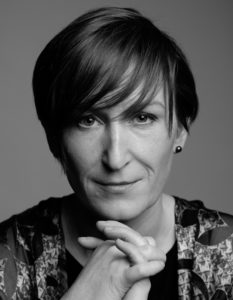 From the vantage point of someone who has spent her life performing, producing, and commissioning song, as far as the amount of music is concerned, American art song is entering a renaissance. The composers are many and prolific, and they are being commissioned. The texts are enthralling and generally of the ‘now’. Small organizations are proliferating and there are some genuine attempts to add seats to the ever-growing table of composers and performers. Organizations are also trying new venues with different ideas about etiquette and social behaviour. While all of these things are worthy and important, the audience, with few exceptions remains small.
From the vantage point of someone who has spent her life performing, producing, and commissioning song, as far as the amount of music is concerned, American art song is entering a renaissance. The composers are many and prolific, and they are being commissioned. The texts are enthralling and generally of the ‘now’. Small organizations are proliferating and there are some genuine attempts to add seats to the ever-growing table of composers and performers. Organizations are also trying new venues with different ideas about etiquette and social behaviour. While all of these things are worthy and important, the audience, with few exceptions remains small.
Why?
Art song is the only genre in classical music that wasn’t 100% birthed by the church or the nobility, making it somewhat unique in classical music. Though there were rich patrons a-plenty, art song was meant to be performed in the home, where within, secrets clothed in metaphor were spilled in the secluded living rooms of artists and family. Evenings were about collaboration, communion, and a soul’s recognition of our collective humanity. A place in which poetry, that most solitary recreation, could be appreciated and turned outward through conversation and performance.
But while stories of loss, longing, love, and death are universal and can be appreciated by all, there is a problem with telling these same ones over and over on their own. Why should the ‘Miller’ immediately resonate with women, people of color, and those of us from different socioeconomic backgrounds other than highly privileged? Does it make a difference that one can explain or update them, showing how all are alike so that “anyone” can appreciate them? Is the solution to stop telling the stories of Schubert or Fauré or Apollinaire or Goethe? Perhaps not. Instead, equal room must be made so that those with different perspectives and backgrounds may be the storytellers, if more people are to join us in the concert hall as audience. For a century we have failed to find a living definition for American art song, closed off as we have been to real change, and attached to programming as if in a cultural reenactment. Classical music as a whole suffers this issue, beginning with how we define ourselves. The very words ‘Classical musician’ lets the public know in a not so secret code who we are referencing with every breath. However, we do have an opportunity here. Art song is a nimble art, and the possibility for change can be almost immediate because of the ease of production and a format that need not favor one culture over another. Since the music is texted and each piece is relatively short, the stories can be specific, and an evening can be both expansive and deep. Let the poets, composers, performers, and the producers be a better reflection of the broader public, and let us take advantage of the format of the Schubertiade to invite a wider array of ‘Song-Makers’ (continuing and acknowledging the debt we owe to the great Graham Johnson who started this conversation with his brilliant programming). Those teams of artists will each bring their following, allowing this beloved art form to flourish, grow, change, and multiply. Then the floodgates can open to a true renaissance, where interest grows because the music is an accurate reflection of the population.
Listen to the Aldeburgh Connection!
By Stephen Ralls, C.M., and Bruce Ubukata, C.M., pianists
Directors of the Art Song Foundation of Canada
In July 1977, two pianists, one Canadian and the other English, met at  the Britten-Pears School in Aldeburgh, England. Just over a year later, the Englishman emigrated to Toronto and has lived there ever since. Looking back after all these years, the partnership of Bruce Ubukata and Stephen Ralls began remarkably expeditiously. Stephen began work as a coach in the Opera School at the University of Toronto and he and Bruce continued their careers in the art song world that they both loved. A major step was the creation in 1982 of the Aldeburgh Connection.
the Britten-Pears School in Aldeburgh, England. Just over a year later, the Englishman emigrated to Toronto and has lived there ever since. Looking back after all these years, the partnership of Bruce Ubukata and Stephen Ralls began remarkably expeditiously. Stephen began work as a coach in the Opera School at the University of Toronto and he and Bruce continued their careers in the art song world that they both loved. A major step was the creation in 1982 of the Aldeburgh Connection.
During 32 seasons, we engaged more than 250 Canadian singers, from the newly launched to the most established and distinguished — many leading soloists gave their first public recital appearances with us. Usually, we presented a number of singers at a time in a concert centred around a specific theme, with carefully prepared narration linking the songs. Bearing in mind where we came from, it was inevitable that there should be a certain attachment to the music of Benjamin Britten; but, again following Aldeburgh’s lead, the largest number of songs by any one composer which we performed were those of Schubert — notably in our annual “Greta Kraus Schubertiads”, presented in honour of our beloved mentor and friend.
Our concert career climaxed in 2013 with a Britten Festival of Song. Immediately, we rolled up our sleeves and began organizing our vast archive. Piles of large manilla envelopes, one for each concert, were hauled out of our basement; we are indebted to Massey College for the use of two library carrels where we could sort our papers. Forty boxes are now deposited and will be available for consultation in the University of Toronto’s Music Library. At the same time, we created an online archive which holds a great deal of information — the accumulated legacy of more than three decades “Celebrating the Art of Song” (as our motto puts it).
Our site is easy to access; just go to www.aldeburghconnection.org and click on “Archives”. Here you will find details of all our concerts since February 1982 in Toronto and elsewhere in Ontario, across Canada and in the USA and the UK. Search by title, date, artist, song, composer or poet. Look at the house programme, with complete notes, from the day of the concert and, finally, browse the large selection of recordings of about a quarter of more than 300 concerts. Again, it’s easy to listen to these. On the Archives page, go to “Concert Recordings”, then click on the concert you want to hear. The “Listen” button will give you a SoundCloud column of items, including any spoken material; you can go to an individual piece or, indeed, listen to the concert straight through.
We are sure that this internet resource will be of great benefit to singers, students, teachers and audience members alike. Happy researching — and do spread the word!
What does it mean to make contemporary song accessible to audiences?
Education, Diversification, and Presentation.
By Ally Smither, soprano
 As someone who sings a lot of contemporary music, and as a visible minority in the classical music world, I am often asked about issues of accessibility and diversity. When thinking about these topics, I often begin by focusing my thought processes through an empathetic lens: who are the people in my concert hall? Who are the people that I wish were present, but are not? How do they or how would they feel about the art I am presenting? Would it foster closeness? Joy? Best of all, would they leave my concert feeling understood, inspired by, and reflected in the art I created?
As someone who sings a lot of contemporary music, and as a visible minority in the classical music world, I am often asked about issues of accessibility and diversity. When thinking about these topics, I often begin by focusing my thought processes through an empathetic lens: who are the people in my concert hall? Who are the people that I wish were present, but are not? How do they or how would they feel about the art I am presenting? Would it foster closeness? Joy? Best of all, would they leave my concert feeling understood, inspired by, and reflected in the art I created?
At its absolute best, art facilitates empathy and human connection; it is an incredible tool to explore and share not only our own feelings, but those of the people around you. Song is the ultimate mechanism for communication and celebration. Every culture has song, every person has a voice.
Unfortunately, through its long-standing ties to wealth and whiteness, classical music (and by proxy, art song) has manifested as an exclusionary and elitist activity. Many of us who are inclined to see art song as being inherently accessible have been blessed with an education that allowed our ears to be primed for it. This combination of a somewhat necessary education for entry and content that reflects only a privileged niche of the population creates a twofold wall between new audiences and our art.
I think the path ahead of us is difficult, but straightforward. First, we need to be investing in music education at the earliest, but also all levels. Recommitting ourselves to outreach, especially to minority or under-served communities, is not only a moral imperative, but an act of pragmatism: it serves to cultivate a future base of audience members. Secondly, we need to commit to telling diverse musical stories. This does not mean putting a “token” minority composer on concert programs and calling it a day; it means continual and thoughtful programming throughout the year to make sure that the stories being told reflect the population of your area. It means delving deep into what our preconceived notions of “art music” are, and whether those notions are a reflection of systemic bias. The population is hardly comprised of old or dead white men, so why should concert programs overwhelmingly feature their works? Last but certainly not least, concert presentation needs to be warmer and more inviting. There can never be too much human connection. Take the extra steps: speak to your audience, project your text, contextualize the music before you perform, ask who is new and tell them how excited you are that they joined tonight. Let’s be real humans and communicate that why we love this music is that is lays bare our humanity in a way nothing else does.
This work will be and should be challenging. We need to ask ourselves honestly if we are comfortable with the status quo and, if not, actually do the work to change it. If that reflection leads to the realization that we just secretly want more of the exact same, then we have even more difficult work to do. Our discipline, art song, offers endless ways to adapt and connect; shouldn’t we aggressively be doing exactly that? Let us not underestimate the intelligence of our potential audiences, but rather always overestimate how much we should do to give the public what they both need and deserve.
Art Song in Alberta
By Shannon Hiebert, pianist
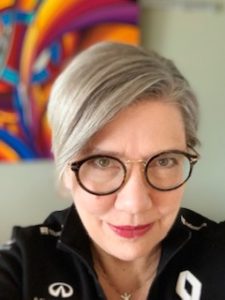 Summer in Alberta is marked by long days spent outdoors, road trips, camping and of course festivals, festivals and more festivals! Whether it’s opera at the Banff Centre, Big Valley Jamboree in Camrose, Edmonton Folk Festival or Opera NUOVA’s yearly festival, there is a song experience for everyone! This romantic ecology beckons to winter weary Albertans, inspiring the journey into nature unfazed by the possibility of high gas prices, mosquitos, wildlife, hail and yes, even snow!
Summer in Alberta is marked by long days spent outdoors, road trips, camping and of course festivals, festivals and more festivals! Whether it’s opera at the Banff Centre, Big Valley Jamboree in Camrose, Edmonton Folk Festival or Opera NUOVA’s yearly festival, there is a song experience for everyone! This romantic ecology beckons to winter weary Albertans, inspiring the journey into nature unfazed by the possibility of high gas prices, mosquitos, wildlife, hail and yes, even snow!
The history of art song and singing in the regions of Alberta is rooted in education. The province has eight public universities, eleven colleges and seven private universities, most offering training in the vocal arts and theatre. Recent years have seen professional singers return to their home province to share the benefit of their experience singing, performing and teaching around the world.
University of Alberta voice faculty John Tessier, Elizabeth Turnbull and Sherry Steele present innovative recitals with repertoire from Canadian premieres (Bright Winter,Gil Shoat) to staged song cycles (La Bonne Cuisine, Bernstein). The Edmonton Recital Society continues to bring in international and homegrown artists. The 2018/2019 season featured Jihwan Cho, Baritone and Viktoria Reiswich-Dapp, piano in a performance of Schuberts Die Winterreise. The 2019/2020 season welcomes Tracy Dahl, coloratura soprano in recital with Shannon Hiebert, piano. Edmonton’s vibrant theatre community has given life to numerous cabaret performances in small immersive venues, in coffee shops, theatres, diners and intimate recital spaces, students and professional offer a wide range of song experiences. Mercury Opera, founded by Alberta native Daricia Parada, continues with their mandate of presenting “opera in unexpected places”. This summer’s production of Carmen begins in Edmonton’s historic Commodore Diner and ends at the iconic Chez Pierre, Edmonton’s first and oldest bar and strip club. Variety is the spice of song in this northern city where there’s a song recital experience for every age.
University of Calgary voice professor, Laura Hynes joined the performing arts faculty in 2015. Her recital programming focuses on innovation in art song recital through social justice issues (Raise your Voice), transgender voice transition and collaborative performance. Mount Royal College and the Calgary Pro Arts Society offer a variety of masterclasses and concerts. Cowtown Opera, under the direction of Michelle Minke continues to present cheeky, English-language versions of opera classics. This young vibrant company provides opportunities for young artists who have completed their training. The Mountain View International Festival of Song welcomes baritone, Brett Polegato with pianists Charles Foreman and Kathleen van Mourik for a recital of English song featuring composers Ivor Gurney, Gerald Finzi, Samuel Barber and John Ireland.
Perhaps the most distinguishing feature of Alberta’s song community is the plethora of summer training programs. The Southern Alberta Vocal Experience (S.A.V.E.), Cowtown Opera’s Summer Academy (COSA), and Opera NUOVA’s Opera and Musical Theatre Festival all offer intensive training in the art of song performance with international faculty.
The art song experience in Alberta is as diverse as the landscape. From lieder to opera and cabaret, the hills are alive with the sound of music!
Circle of Life, Circle of Music
By Adrianne Pieczonka, O.C., soprano
Österreichische Kammersängerin
Honorary Director, Art Song Foundation of Canada
I recently spent a month in Vienna, a city very dear to my heart. I began my career in Vienna over 30 years ago and whenever I return, I always feel a deep connection to this wonderful city – to its music and to its traditions.
A few weeks before my rehearsals started at the Vienna State Opera, I received a message that my beloved Viennese voice teacher, mentor and friend, Hilde Zadek, had died at the amazing age of 101 years old.
I had visited Hilde exactly one year earlier. It was a lovely occasion where we reminisced about teaching, performances, old friends etc.
I had often worried that I would not be in Europe when Hilde passed away but the timing was indeed serendipitous. Her state funeral at the Staatsoper would be held on March 27th.
I was in Vienna to sing The Marschallin in Richard Strauss’ opera Der Rosenkavalier. Our first performance on March 21st would mark the 1000th performance of this opera at the Wiener Staatsoper.
A few days before the first performance, a symposium was held and many wonderful singers were in attendance — Christa Ludwig, Gwyneth Jones, Reri Grist and Gundula Janowitz to name a few. These grande dames spoke about performing various roles in this iconic, very Viennese opera and they also discussed favourite conductors — Kleiber, Bernstein, Karajan and Böhm were all fondly mentioned. The original manuscript was on display and an historian spoke about the often contentious relationship between Strauss and Hofmannsthal.
There of course were several “current” Octavians, Sophies and Marschallins in attendance as well. I felt very honoured and humbled that it was I who would sing the 1000th performance.
My teacher, Hilde Zadek, also loved the role of The Marschallin and she sang it many times in Vienna and internationally. We both shared this particular love of Strauss — I studied my first Arabella, Ariadne and Kaiserin with her. When Hilde was in her late 20’s she sang a concert in Zürich under Richard Strauss himself at the podium. I believe the year was 1947 and Strauss was in his 80’s.
This circle of life and of music is so incredible to me — that Hilde sang under Strauss and that we both shared this great love of Strauss’s music — including his Lieder as well, natürlich!
On March 27th, Hilde’s funeral was held at 11am at the State Opera. The Wiener Philharmonic and the choir of the Staatsoper performed parts of Mozart’s Requiem. I was asked to say a few words in her honour and I spoke about Hilde as a voice teacher and mentor. Christa Ludwig eulogized her by reciting a wonderful poem and telling some touching anecdotes. That evening I would sing the third performance of Der Rosenkavalier and again I felt the circle of music and circle of life touching me deeply. I kept Hilde close to my heart all evening and it was a very special experience for me.
A few days after the final performance, I gave a solo recital at the State Opera. The wonderful German accompanist, Wolfram Rieger, was my partner.
The final group of songs on my recital were songs by Richard Strauss. The very last song I sang was “Zueignung” (Devotion or Dedication) which has long been a favourite of mine. Written when Strauss was just twenty-one years old, published as part of his Opus 10 (the first ever group of songs he published), it was dedicated to Heinrich Vogl, a principal tenor at the Munich Court Opera.
Opus 10 was conceived originally for the tenor voice but I think it has become especially well loved by sopranos over the years. The short three-versed poem (text by Hermann von Gilm), with its mantra-like refrain after each verse of “Habe Dank”, roughly translated to “for this I am thankful”, is very powerful and affirming. It is often sung at the end of a recital or as an encore and is usually rapturously received.
At my recital, before starting this final song, I spoke briefly to the audience, sharing with them briefly my history with Hilde Zadek. I ended by dedicating “Zueignung” to the memory of Hilde Zadek.
Isn’t life amazing? Isn’t music equally as amazing? As singers of opera and art song we are blessed with the opportunity to tap into our life experiences — to plumb the depths of despair and pain and soar to the heights of happiness and love. What a blessing indeed!!
Innovation Born of Isolation: Art Song on the Prairies
By Mel Braun, baritone
Vocal Area Coordinator, University of Manitoba
With collaboration from Laura Loewen and Sarah Boumphrey
When you grow up in a small Prairie farming town, you quickly learn a few essential things. The sky is vast and the wheat fields are beautiful. When the Red River floods, everything slows to a standstill and you’re stuck at home. Most importantly, you learn that the music which surrounds you at home, school, church, and social functions, is what knits the community together. Singing and playing together (let’s not forget hockey and curling) is more than a way of life. It’s how you survive against the elements, collaborating imaginatively with others to create something new: innovation born of isolation.
The history of art song on the Prairies is not unlike my experience growing up here. The last seven decades have seen a succession of wonderful performers, teachers, and composers leading the way in Manitoba and Saskatchewan, many trained in larger centres and bringing the fruits of their musical education back to the Plains. Building on the foundation provided by standard Art Song, these musical mentors have encouraged their students to explore new work and new ways of working together. The result has been a huge outpouring of new art song and a real dedication by artists in both provinces to exploring new ways of presenting art song. All these efforts have been supported by the many regional Arts Councils, Festivals, Competitions and Recital Series active on the Prairies.
Desautels Faculty of Music professors Mel Braun and Laura Loewen are committed to commissioning new works. Along with collaborators and fellow Manitobans David Klassen and Rosemarie Vanderhooft they have created innovative concerts, often in unusual settings. A Schubert/Lightfoot concert in a village barn in Neubergthal, Randolph Peters’ “Violinmaker’s Lament” (John Weier), and John Greer’s “A Prairie Boy’s Life” (William Kurelek) are a few of the highlights from recent years. Flipside Opera, led by Desautels graduates Lisa Rumpel, Judith Oatway, and Dawn Bruch has specialized in staged art song, with programs like #nofilter, featuring Gabriel Kahane’s “Craigslist Lieder” and Richard Pearson Thomas’s “Hair Emergency”. Living Room Live, led by collaborative pianist Nicola Davies, has created a series of House Concert Tours for Classical Artists with recital circuits in Manitoba, Saskatchewan, and BC. New Music specialists Sarah Jo Kirsch and Maddy Hildebrand will be touring the BC circuit next Spring. Kirsch recently returned from Sweden, where she premiered a new work: “A Ghazal” for soprano and live electronics by Desautels composition professor Örjan Sandred. Innovative pairings have also extended to the local choral community where Indigenous song-makers like Andrew Balfour and Jeremy Dutcher have collaborated with Camerata Nova.
In Saskatchewan, University of Regina professor Helen Pridmore is focusing on the solo human voice, creating performance through improvisation. University of Saskatchewan professor Gary Gable, an adept crossover artist, assembles and performs programs in multiple languages and styles with pianist Kathy Gable. A frequent performer in China, he uses song as a tool to bridge cultures. Saskatoon Opera Artistic Director Barbara Montalbetti, a long-time song-maker and innovator, includes new art song collaborations like Danika Lorèn’s Collectif in Saskatoon Opera’s yearly programming. Robert Ursan, who scores theatre productions and composes musicals and art songs, is currently at work on a new staged song cycle about PTSD. Pianist David L McIntyre, composer of many song cycles including the delightful “Creek Bistro” which he wrote for Lynn Channing, will be presenting “Edibles” (Ogden Nash) and “Psalms” (Joanne Gerber) with soprano Adria Mcculloch in the coming weeks at Saskatoon’s Gustin House. For both Ursan and McIntyre, living on the Prairies is a marvelous adventure as an artist. You never know what will inspire you, but when inspiration hits, you run with it.
Many cultures inhabit the Prairies, and the Prairie way is to welcome new cultures, adding their stories to the fabric of the ever-growing Prairie Songbook. In a place where isolation is a big factor, to say nothing of the weather and the mosquitos, collaborating is how we get by and the big sky under which we live presents us with the endless inspiration and creative freedom to act on these impulses. Long live art song on the Prairies!
Report from Beijing
By Warren Jones, collaborative pianist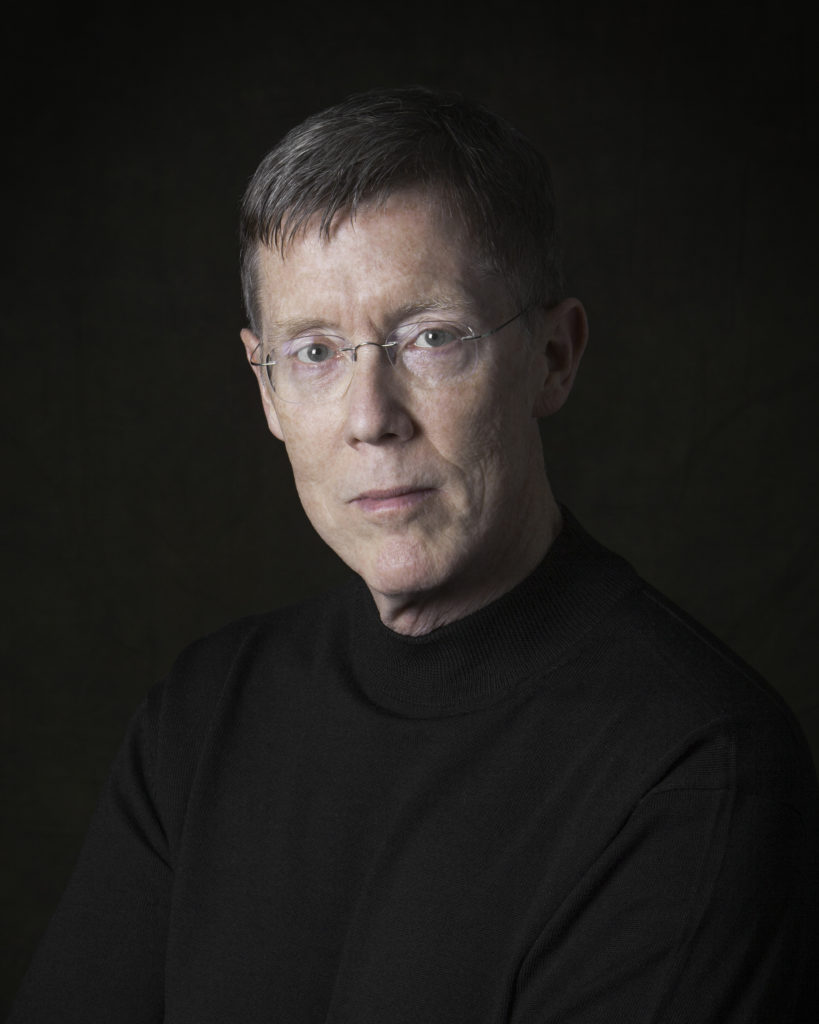
May 20, 2019
The First China International Music Competition (Piano) 2019 in Beijing, China
OMG! Singers?!?
It has been my distinct pleasure to be a jury member for the First China International Music Competition here in Beijing, China, which began on May 4, 2019, and which finishes tonight with a performance of three large Romantic piano concerti with the Philadelphia Orchestra under the leadership of their Music Director, Yannick Nézet-Séguin. Our time here in Beijing has been revelatory, to say the least: we have heard much beautiful piano playing through three rounds of solo recitals and concerti. But perhaps the most revealing section of the competition has been the inclusion of a song recital in the semi-final round, with three singers who were engaged as singer/collaborators for those concerts: soprano Meigui Zhang, from the Lindemann Program at the Metropolitan Opera; Julien Van Mellaerts, baritone from New Zealand, who was a prize winner last year in the song division at the Montreal Competition; and Xiaomeng Zhang, baritone from China who just completed his Artist Diploma at Juilliard.
The two imposed programs consisted of songs by Schubert, Debussy, Poulenc, Hahn, and Strauss. They were selected for their intrinsic lyric qualities as well as their challenging piano parts, which demanded the widest range of technical and interpretive abilities, from the liquid, flowing “Liebesbotschaft” through the complexities of “La belle jeunesse” to the outgoing exuberance of “Cäcilie”.
It was a daring gesture to devise a round in an international piano competition in which a solo pianist was paired simply with a singer, the better to discover that pianist’s originality of musical concept (tone, phrasing, texture, articulation, etc.) and flexibility in approach with different artists, in the most exposed of all collaborative music making, that of a song recital. The audience was most appreciative night after night, and the jury was given the opportunity to examine the great number of diverse aspects of music-making that are amplified by this format.
All of these details were worked out collaboratively by Richard Rodzinski (the General Director of the competition) and me over several months. It has been extremely gratifying for me to have listeners of all nationalities (including some of my pianist colleagues!) thank me for introducing them to the tenderness of “Im Frühling” and the kaleidoscopic rush of emotions and colors in “Le printemps” by Reynaldo Hahn. One audience member told me that she simply could not wait for each evening’s different rendition of “A Chloris”, as it had become her obsession since she heard it on the first recital here. Proof again: the richness of our beloved art song repertory never fails to engage new feelings of wonderment in new ears!
I sincerely hope that the competition in Beijing has boosted both the profile of the song recital across the world (the entire competition has been live-streamed globally through Chinese and Italian services), and the understanding in the public’s mind of the complexity of interchange and dialogue and expression that happens when pianist and singer collaborate together on song repertory. A big note of thanks to all the people who made the entire project possible.
UPDATE May 21, 2019 CANADIAN TRIUMPH!
Since composing the above, we now have the result of the First China International Music Competition, and the winner is the young Canadian pianist, Tony Siqi Yun, who is a native of Toronto, has studied in China and is currently enrolled in the Pre-College Division at Juilliard. He has performed wonderfully throughout the contest, in all the rounds, and his young professionalism, musicality, and technical and interpretative abilities have been a joy to hear, including his account of the Tchaikovsky Concerto in the medalist round. His talents were especially on display in the round with singers. Congratulations, Tony Siqi Yun!
All best to everyone,
Warren Jones
Berlioz’ Nuits d’été, Part 3: Form and Meaning Wedded as Never Before
By François Le Roux, baritone
Author, Le chant intime and L’Opéra français : Une question de style
Chevalier, Ordre des Arts et des Lettres
Winner, 2004 Prix René Dumesnil
In three of the six songs singers often miss the true meaning of each poem, and how Berlioz totally respected their complexity:
#3 “Sur les lagunes” has for its original title Lamento-La Chanson du pêcheur (“Lamento-The Fisherman’s Song”). Almost all songs from the repertoire of fishermen or, even more, sailors, are traditionally somber and sad (their job was always full of danger). Both Gautier and Berlioz knew that tradition. The song is actually but a working song used by a fisherman to help him catch fish with a net. Why over-sentimentalize it? It is a beautiful barcarolle by its rhythm, and one should just have the pleasure of singing all’italiana (the Italian way). Gautier used the Italian term Lamento; the French word is Lamentation [1]. By the way the song ends without words, on Ah! which is added by Berlioz to the poem… By all’italiana I mean sing for the beauty of the sound, the phrasing, the tessitura, the sheer pleasure of singing…
In #4, the text seems more traditionally romantic: “Reviens, reviens, ma bien aimée” (“Come back to me, my beloved”); however, the “refrain” [2] comprises a long sustained “mute e” at the end of bien-aimé-e (with a crescendo) that is almost sinful for experts of French prosody [3]. Why would Berlioz do that, if not to break a rule? And it is not the only one: the classic octosyllabic verses are reworked in this way:
Reviens, reviens / ma bien aimé-e (4+5: 9 syllables instead of 8, the ending e does not count normally in French poetry), Comme une fleu-eur / loin du solei-eil (5+5: 10 instead of 8), La fleu-eur de ma vi-i(e) est / fermé-e (8+3: 11 instead of 8), Loin de ton souri-i-re vermeil (9 instead of 8). The “-re” of souri-re is placed on a strong beat, which is not allowed in classical French prosody.
The other two strophes are more classically set to music, with nothing overlooking the classical prosodic rules.
How should a singer perform this daring prosody? With “good taste”, of course, while being conscious of what is unusual!
#5 Au Cimetière (In the graveyard) is also for Gautier a Lamento. Berlioz chooses a vocal floating line that does not go towards lyricism, over a repetitive piano part; a question it is (Connaissez-vous la blanche tombe – Do you know the white tomb), and it has to stay like a magical, almost dreamy fantastic experience one recalls with a feeling of danger and pleasure mixed together. No fear of death there, but the attraction of a “Lorelei”, or siren, or ghost… The voice should attract, suggest, evoke, not more. The music coming back as a souvenir in the text (Sur les ailes de la musique / On sent lentement revenir /Un souvenir – “On the wings of music / It seems a memory / Is coming back”) is a waltz for Berlioz. Another dance![4]
To sum up, I would say that, in order to pay a real tribute to Gautier and Berlioz’ revolutionary minds, and to keep the cycle fresh and alive, it is important to sing it as a creation, a new work, as if the singer would be inventing it “on the spot”, although all the uncanny elements described above are well studied, and all clear to his/her mind. Should it not be the case for all the songs in a recital? Even more so for a well-known cycle like this one!
_______________________________________________
[1] As a winner of the prix de Rome in 1830, Berlioz spent 2 years in Italy, and enjoyed it very much. He came back with a lot of musical ideas that will appear in in the symphony in 4 parts with viola solo Harold en Italie (1834), and in his first opera Benvenuto Cellini (1838), among other works.
[2] Of the 8 strophes of the poem Berlioz set only the first 3, the first one serving as a “refrain”.
[3] As the term suggests, a « mute e » should not be accentuated. And there is in the poem the traditional alternating between “feminine ending” (the penultimate syllable is accentuated: ai-mé-e) and a “masculine ending” (the last syllable is accentuated: so-leil). Which Berlioz dismounts totally.
[4] The waltz is quickly becoming the favorite dance in balls and salons at the beginning of the 19th century. Berlioz wrote some wonderful ones in almost every major work of his (i.e. “Un bal” [A ball], the second movement in the Symphonie fantastique composed in 1830).
Parts 1 and 2 of Berlioz’ Nuits d’été appeared in the Winter and Spring issues of Art Song Canada, available on the website.
Berlioz’ Nuits d’été, Part 2: Novelty in Style and Expression
By François Le Roux, baritone
Author, Le chant intime
Winner, 2004 René Dumesnil Award
The title invented by Berlioz for his cycle may have been inspired by Shakespeare’s A Midsummer Night’s Dream (published in 1600). Berlioz was a lover of Shakespeare’s theatre, and its general “fantastic” (or fanciful) atmosphere: he composed in 1839 a dramatic symphony with choir and soloists entitled “Roméo et Juliette”, and his last opera “Béatrice et Bénédict” (1862) is deriving from the play Much Ado about Nothing. French romantic movement loved the bizarre, the uncanny; Gautier’s title for the book La Comédie de la mort (The Comedy of Death) is already provocative, for death was in his days, and still is generally perceived as tragic.
And that is the reason why a lot of misunderstanding about Berlioz’ Les Nuits d’été is common; maybe because of the perception of romantic music, as it appears in German Lieder, that express personal feelings, questioning the place of man on earth, more than anything else. In French romantic songs based on Gautier’s poems, fantasy is very important; Gautier himself claimed that art had to live for itself (L’Art pour l’art – Art for the sake of Art), without sentimentality, or connection with earthy reality. It was in reaction against the generally sentimental poetry used by the former generation, so easy to perceive in many famous romances (see, for instance, the most famous of all “Plaisir d’amour” (1784) by Martini on a poem by Florian, which Berlioz orchestrated in 1859). And, as is generally admitted for a new generation, there was a desire of transgression, to shock, or at least to question the public. Here, all 6 songs comprise elements of derision:
To begin with, at least 3 of the 6 Nuits d’été have strongly erotic (or sexual) connotations: #1 (Villanelle), #2 (Le Spectre de la rose), #6 (L’Île inconnue):
– In #1, the erotic elements (all taken from the nature: blackbirds, nests, rabbit, deer, moss, strawberries, woods, lilies-of-the-valley…) are light and connected with the evocation of spring. A Villanelle is a kind of pastoral poem, very much in favor in 16thcentury France (see what poets Passerat, Desportes, etc. produced); in the 18thcentury it became also a rustic dance (in 4/4), comprising some frivolous elements, emphasized by the music itself. If Gautier’s original title for #1 is “Villanelle rhythmique”, it is certainly to refer to that dance. On his part, Berlioz uses that element very clearly. The tempo should stay alive and joyful.
– In #2, the phantom of the rose (Le Spectre de la rose) is at the same time masculine (phantom) and feminine (rose); in its address to the lady he/she haunts, all the words used are double-meant, for instance: Tu me pris encore emperlée / Des pleurs d’argent de l’arrosoir: “You took me while I was still impearled / With the silver tears from the watering can” (no further explanation needed, I hope…). Or later Et j’arrive du paradis: “And I am coming from Paradise” (j’arrive – “I am coming” – repeated 4 times by Berlioz, in a growing crescendo!). This phantom is, with his/her long breathtaking sung lines, and the shortened breath for the verse Mais ne crains rien, je ne réclame (“But fear not, I am not asking”), very much alive… The use of many octaves (i.e. paupiè-ère close) should be very fluid, accentuating the low note (paupiè-ère) and going up as with a swing, like a Viennese waltzer would seem almost to fly. Again a dance!
– The “unknown island” of the last song (#6) is mocking the idealized eternally faithful love, unachievable… Berlioz respectfully does a Barcarolle (Gautier’s original title of the poem), but some elements are almost grotesque, like the accents of the accompaniment before Est-ce dans la Baltique… And who is inviting the lady for a trip? If it were a travel agent, the Mephistopheles kind it seems, with his sarcastic tone (La brise va souffler – “The wind is about to blow”…).
Part 3 of Berlioz’ Nuits d’été will appear in the Summer issue of Art Song Canada. Part 1 is available in the online Winter issue.
A Brief Atlantic Overview: Fall 2018/Spring 2019
By Caroline Schiller
Professor of Voice and Opera, Memorial University of Newfoundland
Song continues to thrive on the East Coast. Art song, whether performed with piano as sole collaborator or creatively fused with dialogue, media, and theatre is being performed throughout Canada’s Atlantic provinces. In venues, ranging from university and local concert halls, to performances in pubs, galleries, and libraries, we seem to be singing everywhere and about everything. Based on recent performances, musicians in this area are actively working to connect with our colleagues, our audiences, and our world through our programming choices. This year’s concerts explore the old and new, they reflect our culture, our climate, and our lives, present and past.
We are fortunate in Atlantic Canada to have a strong art song tradition and many communities still maintain a thriving concert series. While impossible to single out every performance, recent recitals have included Pascale Beaudin and collaborative pianist Simon Docking as part of Halifax’s The Music Room Chamber Players Series, whose program featured Debussy’s Ariettes oubliées; Cecilia Concerts included Julie Nesrallah in recital with collaborator, Robert Kortgaard in a varied program including Rossini’s La Regata Veneziana; and MusicUNB hosted a programme inspired by folk songs with Sally Dibblee, joined by UNB Musician-in-Residence Nadia Francavilla, and collaborative pianist Stephen Runge featuring John Greer’s, My Fancy Early and Late. Paula Rockwell with collaborative pianist Jennifer King performed Nocturnes, Serenades and Lullabies for a Winter’s Evening with Britten’s A Charm of Lullabies as its centrepiece for Dartmouth’s Community Concert Series; and The Music Room features Dalhousie University faculty members Marcia Swanston, Michael Donovan, with collaborative pianists Lynette Wahlstrom and Greg Myra in a program that includes Beethoven’s An die ferne Geliebte and Interpretations of a Life, written by David Warrack for Maureen Forrester.
Atlantic Canada’s universities continue to be a source for art song creation, performance, and training. Concert programming at universities throughout the region has included visiting artist recitals, faculty performances, and varied themed recitals. Concerts highlighting the works of Claude Debussy and Leonard Bernstein have been performed by faculty and students at a number of schools during the 2018 centennial, including Mount Allison University and Dalhousie University Fountain School of Performing Arts. While a concert of art songs with the ocean and water as its theme, was presented by soprano Jane Leibel and collaborative pianist Laura Loewen to the Royal Society of Canada as part of the “Future of the Oceans Symposium” at Memorial University. We are fortunate to have university voice programs dedicated to the training of 21st-century musicians. Through these programs, university students actively and creatively explore art song repertoire in study and performance and then, connect to their communities through a variety of outreach and concert initiatives.
Contemporary repertoire, new art song works for voice, and first performances have been the focus of a number of concerts this year. Newfoundland composer, Andrew Staniland’s Execution Songs with Erika Switzer, piano and Martha Guth, soprano are one example of the east coast’s vibrant composition scene. Performances focused on “demystifying” contemporary vocal repertoire were presented as part of Newfangled Music and a recital of contemporary vocal works presented at Halifax’s The Music Room. The latter program of Canadian repertoire with Janice Isabel Jackson and Barbara Pritchard has as its title, Canadian composer David Scott’s Disordered Songs. Memorial University of Newfoundland’s Newfound Music Festival and Gala concerts typically include a number of firsts. This year’s concerts included a new comedic art song entitled “I Really Don’t Understand Why Everyone Looks at Me Like I’m Crazy” by composer Clark Ross written for soprano Jane Leibel and pianist Ian Sutherland. Reflecting on contemporary song repertoire, performers and composers are exploring ever more creative options in concert presentation from the use of multimedia, spoken dialogue, to staging. One such example is Suzie Leblanc and composer Jérôme Blais’ work, Mouvance, which was presented as part of the Open Waters Festival in Halifax. This multimedia, poetry, theatre, song experience based on contemporary Acadian poems, and other concerts of this kind, are suggesting new boundaries for art song-related performance and presentation.
Programming the Art Song Recital
By Brett Polegato, baritone
Director, Art Song Foundation of Canada
Many years ago – when I was one and twenty (or thereabouts) – I had the temerity to put together a programme of solely English art song and mélodies for a prestigious recital series in a major Canadian city. I was exceedingly proud of the programme and was excited for its debut. Ah, the folly of youth! Although the recital was well received by the audience – I believe we got a standing ovation for our efforts – we were roundly taken to task by the critic. While he thought it was a valiant attempt on our part to present a programme in both official languages, he made the point that the English and French repertoire wasn’t “strong enough” to support an entire evening of song.
Thankfully, times have changed.
In the three decades I have been giving recitals, I have enjoyed watching the art form adapt and evolve. Many say the recital is dead. And in some ways they are correct: fewer are the formal and “serious” concerts – those evenings of Art in which a singer and pianist performed songs by mostly dead composers, in chronological order, to a roomful of respectful listeners who quietly followed both texts and translations in a printed programme. Lieder dominated the proceedings. In those days singers, by and large, did not talk to the audience and applause was reserved for the ends of groups.
We recitalists are a tenacious lot and we quickly understood that this model could not last and so…we changed the model. Today’s recitalists have become extremely inventive in their programming choices – rarely do recitals begin in the Baroque and end with Strauss. “Modern” music no longer stops at Benjamin Britten or Francis Poulenc, and we are lucky to have many marvellous contemporary composers whose contribution to the repertoire ensures that the breadth and scope of a programme is limited only by the imagination of the performers. Musical theatre and popular song have also found a place in the repertoire, and I have sung Sondheim, Porter, Novello, and even Billy Joel alongside the likes of Vaughan Williams and Charles Ives.
But it is the form of the recital itself that has undergone the greatest transformation. The old rules that defined what constituted a recital no longer apply and performers are finding new ways of making the art form their own. Like our musical theatre counterparts, we have begun interacting with audiences; often poems are read, personal anecdotes are recounted and visual imagery such as slides are incorporated in an effort to make the experience more personal and inviting. It is not uncommon to share recitals – recently, I have performed with instrumentalists, cabaret singers and actors – in an attempt to appeal to our “multi-tasking” audiences. Pianists also step out from behind the keys to talk about programme elements, and our recitals regularly include piano solos. Groups of songs are more loosely structured and spontaneous applause is welcomed. More than ever, we strive to be storytellers and are willing to bend the form to achieve our goal.
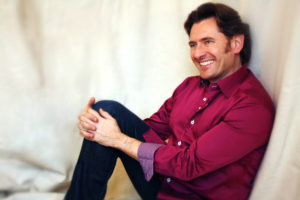 In July of this year, I am proud to be making my Wigmore Hall recital debut with pianist, Iain Burnside, in a programme of English song entitled, A Transatlantic Voyage: English Songs from Here to There. The programme includes the usual suspects – Britten, Vaughan Williams, Barber and Ives – but joining them are Rebecca Clarke, Marc Blitzstein, Craig Urquhart, and Canadians, Healey Willan and Harry Somers. I have many wonderful stories to tell, and the immediacy and power of the English language to tell them all.
In July of this year, I am proud to be making my Wigmore Hall recital debut with pianist, Iain Burnside, in a programme of English song entitled, A Transatlantic Voyage: English Songs from Here to There. The programme includes the usual suspects – Britten, Vaughan Williams, Barber and Ives – but joining them are Rebecca Clarke, Marc Blitzstein, Craig Urquhart, and Canadians, Healey Willan and Harry Somers. I have many wonderful stories to tell, and the immediacy and power of the English language to tell them all.
Berlioz’ Nuits d’été, Part 1:The Birth of French Mélodie
 By François Le Roux, baritone
By François Le Roux, baritone
Author, Le chant intime
Winner, 2004 René Dumesnil Award
To commemorate Hector Berlioz’s death 150 years ago, recitalists in 2019 will certainly not miss his quintessential song cycle Nuits d’été (Summer nights) H.81. Often seen as an orchestral suite for big voices, it is less known and less performed in its earlier piano version, and many people among both the public and performers miss almost completely the poetic elements that both poet and composer elaborated, and cherished, as new. Let us have a look!
The birth of French mélodie is considered to date from the composition of Berlioz’s Nuits d’été (completed in 1840-41), even if this opinion is a bit arbitrary. It is true that Berlioz deplored the artistic level of the romance, which was, at that time in France, the contemporary song style that wedded text (often poetic) and music. It seems that the use of the term mélodie was inspired by the book title Irish Melodies by the Irish poet Thomas Moore (1779-1852). Several excerpts from this book were set to music[1]. To make a long story short, things evolved when the 19th century composers of romances wanted to give more independence to the melodic line in relationship to the poetic text. Their goal was to “stick” to the poetic suggestions as much as possible and not to be too constrained by a form that was completely closed, cyclic, or “blocked,” as a succession of couplets interspersed by a refrain could be. Calling Les Nuits d’été the first cycle of mélodies is not completely accurate, since the first song of the cycle, “Villanelle,” is still a strophic romance, as is the fourth song, “Absence.” On the other hand, in “Sur les lagunes” (“On the Lagoons”), we notice a change, even if there is a sort of refrain: Que mon sort est amer! / Ah! Sans amour s’en aller sur la mer! (“How bitter is my fate! / Ah! Without love, to go to sea!”).
Another element makes Les Nuits d’été an important marker: the cycle is the fruit of a direct collaboration between two artists: Hector Berlioz (1803-1869) and Théophile Gautier (1811-1872), who knew each other personally.[2] It is even possible that Gautier gave his poems to Berlioz before their publication[3]. One can also imagine that Gautier wrote his poems with the idea that music could accompany them as some of the titles of his poems are clearly oriented towards music: “Villanelle rhythmique” (“Villanelle” for Berlioz), “Lamento-La Chanson du pêcheur” (“Sur les lagunes” for Berlioz), “Lamento” (“Au Cimetière” for Berlioz), “Barcarolle” (“L’île inconnue” for Berlioz). It is also interesting to note that La Comédie de la mort (The Comedy of Death), the collection of poems that Les Nuits d’été comes from, include many more pieces than just the six in the cycle. Gautier probably gave more texts to Berlioz, who only chose six.I would like to advocate the original piano version of the score (not the usual reduction from the orchestral one) published by Catelin in Paris in 1841 (the complete orchestral version dates from 1856). It is easy to download from the website Gallica of the French National Library: https://gallica.bnf.fr/ark:/12148/bpt6k3119544?rk=364808;4.
What better way of being faithful to the composer’s intentions? If the original piano version exists only in one key (with the indication “for tenor or mezzo-soprano”), at least it will be the basis for a true pianistic interpretation, instead of a mere reduction. Some differences are really striking if one compares the orchestral versions and the piano one (e.g., no prelude to “Le Spectre de la rose”). Let Berlioz ask us the true question: Où voulez-vous aller?
[1] Berlioz composed in 1830 “Irlande, neuf mélodies imitées de l’anglais” (“Ireland, nine melodies imitating the English”), published only in 1863. All songs are in French. Moore’s poems were published in Paris by Chassériau in 1823 in a French translation by Louise Swanton Belloc (1796-1881) under the title: “Les Amours des Anges et les Mélodies Irlandaises”, where Berlioz found some of the translations he used.
[2] However, a precedent exists in the romance: the poet Marceline Desbordes-Valmore, (1786-1869) and the guitarist and composer Pauline Duchambge (1778-1858) wrote together more than thirty published romances.
[3] All 6 belong to the chapter “Poésies diverses” in the book La Comédie de la mort, published by Desessart in Paris in 1838. 2 were first published in a magazine: “Le Spectre de la rose” in Don Quichotte (May 7, 1837), and “L’Île inconnue” in Le Rameau d’or, a keepsake published at the end of 1835.
Part 2 of Berlioz Nuits d’été will appear in the April issue of Art Song Canada.
Rediscovering Healey Willan’s Art Song Legacy
 By Steven Philcox and Lawrence Wiliford
By Steven Philcox and Lawrence Wiliford
Founders, Canadian Art Song Project
Since its founding in 2011, Canadian Art Song Project (CASP) has been recognised largely for its commissioning activity and numerous concert presentations dedicated to Canadian song, both old and new. Many readers will also be familiar with our recording library housing five titles, with another scheduled for release this summer. While our mandate is strongly tied to breathing life into the present and future of the art form, our audience may not be aware of CASP’s efforts to revitalize and reconnect to the song traditions of our past. One such initiative has been our Healey Willan project.
Willan was born in the south of London, England, in 1880 and from a young age would be rooted in a musical education very much tied to his rigorous Anglo-Catholic upbringing. As such, the name of Willan generally invokes a deep response to his liturgical compositions: masses, motets, and choral works—the music for which he remains best remembered. His devotion to the musical traditions of both church and country would follow him as he settled in Toronto in 1913. At this time, when the musical world was seeing a tremendous shift towards the serial and atonal experimentation espoused by the composers of the Second Viennese School, Willan would be steadfast in his own ideals of beauty: “I’m a lover of beauty. I love beautiful things, I love beautiful poems, beautiful pictures, beautiful music, and of course beauty is one’s own conception of beauty . . . but I find so much music written today is unbeautiful and it sounds to me uncouth.”
When CASP started to research Willan’s song output, we were aware of his nearly 100 published songs and arrangements. Drake’s Drum, The Lake Isle of Innisfree, and Ae Fond Kiss, still regarded as some of his best in the genre, were frequent recital offerings of artists including Maureen Forrester, Lois Marshall, and George Lambert. Unfortunately, performances of Willan’s solo songs have waned, almost to the point of obscurity. Imagine our surprise and thrill when, at the recommendation of one our supporters that we look through Giles Bryant’s record of the Willan archive (now held in Ottawa as part of the collection at Library and Archives Canada), we discovered nearly 100 additional song manuscripts that had never been published. Dated throughout Willan’s lifetime, the collection includes mostly original compositions along with his hallmark arrangements of ballads and folk-songs.
 CASP has slowly chipped away at transcribing these handwritten manuscripts into digital, edited scores, an enormous task when you consider that many of the songs had two and sometimes three versions, all in Willan’s hand and often with the same date! After numerous play-throughs, analysis, and much friendly editorial debate, CASP, in collaboration with the Estate of Healey Willan and the Canadian Music Centre, has recently published Songs from the Healey Willan Archive in two volumes. These feature twenty-two previously unpublished songs that set poetry by Herrick, Browning, Tennyson, and Hood, among others.
CASP has slowly chipped away at transcribing these handwritten manuscripts into digital, edited scores, an enormous task when you consider that many of the songs had two and sometimes three versions, all in Willan’s hand and often with the same date! After numerous play-throughs, analysis, and much friendly editorial debate, CASP, in collaboration with the Estate of Healey Willan and the Canadian Music Centre, has recently published Songs from the Healey Willan Archive in two volumes. These feature twenty-two previously unpublished songs that set poetry by Herrick, Browning, Tennyson, and Hood, among others.
On November 18, 2016, CASP presented a concert celebrating the songs of Willan including many of those recently discovered. In attendance was Willan’s ninety-year-old daughter Mary Willan Mason, who told us that it was the first time she had heard O Littlest Hands and Dearest, a song her father had written when she was just three weeks old. It was a profoundly touching moment, a testament to why such work is important and a reminder of the power of song to transcend time and connect us all.
For more information on Canadian Art Song Project, please visit our website canadianartsongproject.ca.
When a person knows and can’t make the others understand, what does he do?[1]
 By Lara Dodds-Eden
By Lara Dodds-Eden
Doctoral student in Collaborative Piano, University of Toronto
I performed Winterreise for the first time in 2008, in a church close to London’s Sloane Square. As my colleague and I rehearsed beforehand in the nave, a man sat resting in the pews. The church had been his home for a few hours, but he left as he sensed the imminent arrival of a paying crowd. I had been moved by his presence, but did not know how to invite him to stay. Though I felt this music was for him, maybe even about him, I didn’t know how to share that with him.
After all, we were performing 180-year-old German songs, in affluent Chelsea, at the beginning of a millennium straining with anxiety around national borders, social media fame, increasing disparity, and acceleration in the pace of living. Art song’s interiorised subjectivity seems vulnerable in this context and complicated further when its language is different from the vernacular. Of course, the archive is richer for its diversity of language, and yet Simon Keenlyside describes the tendency to ‘mum and mug meaning’[2] when singing in a language you don’t speak — an admission that highlights the compensatory burden on many of our current linguistic strategies.
So we experiment with printed programmes, surtitles, spoken summaries, digital materials. Of course, the obvious ‘solution’ is to sing in translation — to transmute the archive in order to extend its reach. In literature, preliminary debates about gain, loss, and authenticity have expanded to embrace radical approaches[3] and an increasing affirmation of the role of the translator[4]. But in art song, the fundamental question of whether it is conceptually reconcilable at all has largely stalled its use in performance practice. When words and music are in symbiotic relationship, any addition is assumed superfluous, while any change is deemed destructive. Our community’s fidelity to that tenet makes any attempt to translate for singing a fraught undertaking.
Song scholar Eric Sams proscribed against translating Lieder, but his son Jeremy has found himself unable to resist doing so. He has reworded all three Schubert cycles, alongside Brahms’ Liebeslieder Walzer and Wolf’s Italienisches Liederbuch: the latter will have its premiere at London’s Barbican Hall in February 2019. Of course, Sams is just the latest in a long line of would-be translators for art song — I have collected thirteen singing translations of Der Leiermann alone — but his efforts, supported by his interdisciplinary aptitudes, have found an exceptional niche of acceptance and advocacy in comparison to his predecessors’[5]. Some view his ingenious solutions as one-offs. But what would happen if we were to encourage more translators to explore this repertoire[6]?
In advance of the first airing of Winterreise, Schubert reassured a friend who was concerned about his state of mind, saying, ‘Soon you will hear and understand.’[7] Müller, too, famously expressed a desire that his poetry might be received by eine gleichgestimmte Seele — a like-minded soul. Though these men dared hope for one or two empathetic listeners, I suspect we all believe they deserve more — and that more of us deserve to hear what they had to say. Neither man could have imagined their work perforemed on stages in London, New York, or Tokyo nearly two centuries later, let alone know to make provisions for that outcome. What would have happened that night in Chelsea had the man heard my colleague sing ‘I came here as a stranger, a stranger I depart’? And what might have been the effect on that audience, had they been asked to acknowledge their complicity in the final encounter of the cycle, in which ‘no one seems to notice, no one seems to care’?[8]
[1] Quoted in https://www.telegraph.co.uk/culture/music/opera/3602564/The-singers-dance-of-death.html
[2] Such as those by Anne Carson and Alain Badiou
[3] The Booker International Prize for literary fiction is a significant example, honouring both translator and author since its institution in 2016.
[4] Including Leslie Minchin, Frederic Kirchberger and Arthur Fox-Strangways
[5] See Katy Hamilton’s blog discussing her experience tackling Die Erlkönig https://katyhamilton.co.uk/2016/07/31/and-in-english/
[6] Susan Youens quotes Spaun’s account of that time https://hampsongfoundation.org/resource/horrifying-songs-schuberts-winterreise/
[7] These quotes are taken from Jeremy Sam’s Winter Journey translations (songs I and XXIV), which can be found in full in the booklet that accompanies Christopher Glynn and Roderick Williams’ Signum Classics release: https://www.hyperion-records.co.uk/dc.asp?dc=D_SIGCD531
LET’S TALK ART SONG
By Catherine Robbin
President, Art Song Foundation of Canada
The Art Song Foundation of Canada thinks it would be good for art song to have a more public voice.
Our friends in opera have a fine magazine, Opera Canada, which keeps opera- lovers well informed.
With this first issue of Art Song Canada, the Foundation is starting an online “magazine” that will cover various aspects of the art-song world. There will be articles by important people in the field of art song, reports from the various regions of our country, and more.
The material can be accessed directly on the Art Song Foundation of Canada web site and by e-mail via our mailing list, and will be advertised on social media.
If you wish to be on the mailing list for Art Song Canada, please click here.
We hope you will enjoy the following articles by Michael McMahon, Gerald Finley, and Olivier Godin.
Please feel free to be in touch with us. We would be happy to hear your comments and any suggestions for future articles.
In Memoriam — Dr. Max Deen Larsen
March 6, 1943 ~ January 12, 2018
By Michael McMahon
Associate Professor, Piano and Voice, Faculty of Music, McGill University
Director, Art Song Foundation of Canada
With the passing of Dr. Max Deen Larsen on January 12, 2018, the world of art song lost one of its greatest mentors.
Forty years ago, Deen Larsen and his future wife, German cellist Verena Göthel, founded the Franz Schubert Institute in Baden bei Wien, Austria. After attending various masterclasses in German lieder, Deen realised that there was an important element missing in the training of singers and pianists in the performance of the lied and that element was the attention to the poem itself. In creating “Poetry and the German Lied” at the Franz Schubert Institute, Deen brought together not only some of the world’s greatest singers and pianists, but also actors and diction specialists.
Since 1978, singers and pianists from all over the world have spent at least 12 hours a day every day for five to six weeks learning about poetry and lieder in the classroom, sharing wine and food in the local Heurigen, and hiking in the Vienna Woods. Each day would begin with a poetry class given by Deen Larsen in which he would share his passion for German language, its poets, and its composers. He would encourage everyone to search for honesty in his/her interpretation and to remember that what we do is not about us. It is about communicating in a truthful way what the poet and the composer have given us.

It was not only in the classroom that learning took place. Deen would take the participants on hikes in the same woods that many of the poets and composers had visited. He would have everyone stop, be silent, and listen to the sounds of nature. This was followed by a reminder that we are all a part of nature and that the sounds we were hearing were the same sounds that Beethoven and Schubert had heard.
Deen lived and breathed poetry, and generously shared his vast knowledge with all who would listen. He was always so pleased when a former participant would write asking for help in understanding the meaning of a poem, and he would write back with well-considered responses that would undoubtedly shed light on what had otherwise been elusive.
Thinking back to 1978, when I first saw a poster advertising the Franz Schubert Institute, I can still visualise exactly where it was on the wall at McGill University’s Faculty of Music and remember the excitement I felt when I saw the list of artists who would be teaching there. On it were the names of legends in the world of German Lieder, including Elly Ameling ( who has taught at every course since the beginning), Hans Hotter, Kim Borg, Jörg Demus, and Erik Werba. I applied with a singer, was thrilled to be accepted, and found my voice as an artist during that summer in Baden. What I learned has stayed with me and nourished me throughout my career.
Distinguished alumni include Cheryl Studer, Delores Ziegler, Donna Brown, Tyler Duncan, Erika Switzer, Philippe Sly, Jordan de Souza, Gordon Bintner, Rihab Chaieb, Colin Balzer, John Brancy, Ammiel Bushakevitz, Jonathan Ware, Che Anne Loewen, Rena Sharon, and Kathleen Lohrenz Gable.
The Franz Schubert Institute is making plans to continue and will find new ways to pass on the great tradition that Deen so loved. I will be forever grateful to my dear friend and mentor, who helped connect me and so many others to the essence of German Romanticism.
The Voice is the Song
By Gerald Finley, baritone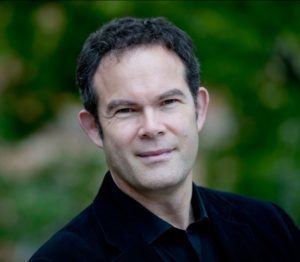
Honorary Director, Art Song Foundation of Canada
While learning my latest program of Schubert and Brahms for concerts and a recording, I came across an Italian version of Schubert’s Staendchen sung by Giuseppe di Stefano on YouTube. We live in an age where the great singers of the past can entertain and bring us great pleasure. How is it that a great Italian singer can bring such depth of feeling through his beautiful voice to a German song?
Knowing that a full program of German song is a rarity, I need to come to a peace with myself that fewer and fewer people will be giving up their precious time to come and hear it. Thankfully, in Hamburg there was a full house, 550 in the small Hall of the Elbphilharmonie, certainly all completely familiar with the repertoire that I was performing.
In the early 1980’s in London when I was a student, song recitals would fill the Royal Festival Hall, some 2,100 places, and then standing room for young ones like me to take up, wanting to hear the great masters like Dietrich Fischer Dieskau and Elisabeth Schwarzkopf. Just a few years earlier, the Albert Hall would fill for similar artists, some 5,000. It is reported that John MacCormack and John Charles Thomas sang for audiences in the many thousands.
Now, the Wigmore Hall (545 seats) does quite well with song recitals, but even the ’stars’ have their programs vetted by the director to ensure that there are not too many similar programs. When I plan a tour to North America, the word from promoters is, “Please sing something in English.” Should I not sing the repertoire that brings the greatest pleasure?
Note the difference between these paragraphs. One is about the singers; the other is about the programs. We are in an age where the simple art of singing without a microphone is under threat. The “X factor” generation wants to be discovered at 18 and then be promoted by the wheels of industry. This discussion is more suited to a great treatise than a reflective article, but it is the crux of the problem, for both singers and promoters.
Singing is a craft that takes devotion and diligence. The great Eva Turner said to me, “You cannot have a career without application and dedication.” And I believe it to be so today: that there are few great artistic lives of leisure and general conviviality. Fischer Dieskau was notorious for his lack of socializing after a concert, even though his home was a haven for chamber music and musical get-togethers. The use of artists in general promotion is a burden that no previous generation has had to endure, and the fatigue and distraction that encircles the singer is taking its toll on those who are amenable.
Singers need to perform and also to husband their resources for the perfection of their art. In their early years, they need extended opportunities to work just with their teachers, the actual masters of the voice. There are legendary stories of the hard taskmasters of Beniamino Gigli, Edita Gruberova, Monserrat Caballe, and lately, Dmitri Hvorostovsky. The ability to sing a song with the most intimate sound is a long-sought and difficult task, when opera houses are demanding louder and more pushed voices to get over those rich orchestral sounds in those enormous auditoriums.
“Opera is where the money is.” Is this the threat for the song recital? Singers need to survive, and expenses in travelling and accommodation are not insignificant. Famous halls in great cities pay an artist and accompanist less than 40% of the ticket sales of a recital. However, a fairly priced recital with a few hundred people can also make economic sense for the artist, and any artistic opportunity should be seized. But agents don’t make so much money, and the burden of logistics can make agents decline engagements. They do not necessarily nurture the “artist” on their roster. Promoters also need to have a keen ear and a loyal audience to present the up-and-coming voices that both need to be heard and need experience in recital. They are rare, but they do us a service.
Song is the vehicle through which the audience can have a direct communication with and from the performer. The performer can offer their own voice in all its wonder, not that of a character. Most importantly, the richness of the composers’ treasury can be explored, and the satisfaction of music lovers and artists can be nurtured.
Singing can be the most satisfying of endeavours, and the challenge faced by young ones who grasp the long, thorny road is great. It is not about loud. It is about discovering the best of one’s own resources, of the liberation of sound and of honest communication, of the composer’s deepest reaction to poetry. Then we might start again to connect with the music lovers in an intimate setting and begin to fill the big halls once again.
Art Song in Quebec
By Olivier Godin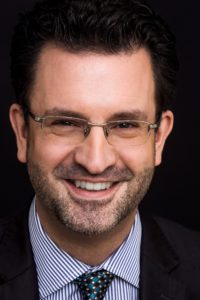
Collaborative pianist and vocal coach at McGill University
As an art song pianist and vocal coach in “la belle province”, I’ve had the opportunity to participate in several projects and the privilege of discovering great events and artists over the years, both as a teacher and a performer. In Quebec, we are very fortunate to have festivals, concert series, and venues that are presenting high-quality art song recitals featuring local and international artists, as well as quite a few schools and summer workshops to pass on this refined and unique tradition to younger singers and pianists.
Beginning with local artists: I believe that Quebec holds a unique place in the world when it comes to great singers. Over the years, so many great voices have started international careers and gained worldwide renown. Several singers are frequently performing art song recitals in the province and across the country, as well as throughout the USA and Europe. Hélène Guilmette, Julie Boulianne, Marie-Nicole Lemieux, Philippe Sly, Marc Boucher, Michèle Losier, Lyne Fortin, Donna Brown, Aline Kutan, Dominique Labelle, and Karina Gauvin, to name a few, always have recitals planned in their calendar.
As for pianists, I feel very lucky and privileged to work around fabulous colleagues such as Michael McMahon, Esther Gonthier, Marie-Ève Scarfone, Pierre McLean, Francis Perron, Martin Dubé, and other fantastic collaborators who are essential to and inspiring for all the singers they work with.
When it comes to venues and festivals, we have so many art-song allies that it would be impossible to be exhaustive, but around the province, I can think of the Arte Musica Foundation/Salle Bourgie in Montreal, which always presents high-calibre recitals (including Sylvia Schwartz, Marie-Nicole Lemieux, Thomas Dolié, and Donna Brown), the Société d’Art Vocal de Montréal, which is presenting one of the best annual art-song series (Gerald Finley, Susan Platts, Michèle Losier, Mariane Fiset), Domaine Forget, which invited Jose Van Dam and Sophie Koch this past summer, the Lachine Festival and Richard Turp, its director, who is one of the reasons why art song is still so alive in Montreal, the Club Musical de Québec, which will be presenting a recital by Simon Keenlyside and Malcolm Martineau in November, and the Musique à Ste-Pétronille Festival, which also offers at least one beautiful art-song recital every summer.
To conclude this short report, I need to mention education, which is the key to the future of art song. Of course, voice faculties of the key establishments all have teachers and coaches who care deeply about art song: Schulich School of Music of McGill University, Université de Montreal, les Conservatoires du Québec, and Université Laval). But we also have many summer programs offering art song as a main discipline for both young singers and pianists. Among them, the new Lachine International Academy, which had its first session last summer with guest teachers François Le Roux, Liz Upchurch, Lena Hellström Färnlöf, and Marie-Ève Scarfone comes to mind. There is also Domaine Forget in Charlevoix, which holds a leading place in the training of young singers and pianists during their summer program, with guest artists such as Jose Van Dam, Sophie Koch, and Wolfgang Hozmair, and Orford Musique, with Francis Perron, Nathalie Paulin, David Lutz, and others.
I cannot end this report without mentioning three Quebec-based record labels that have done wonderful art song projects over the last couple of years: ATMA Classique, Analekta, and Disques XXI-21. These three labels released many recordings featuring recitals by high-level Quebec artists and also recordings of complete songs by various composers (Fauré, Poulenc, Duparc, to name a few). Many of these recordings have won prizes and gained international recognition in specialized publications.

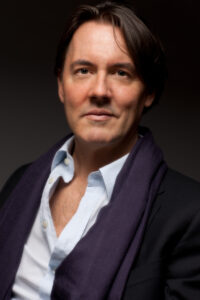
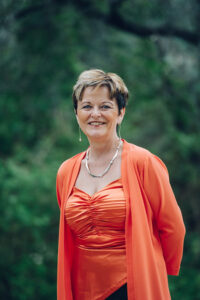

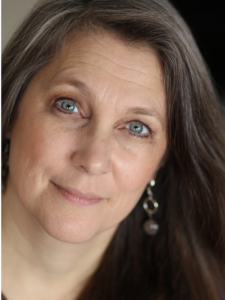


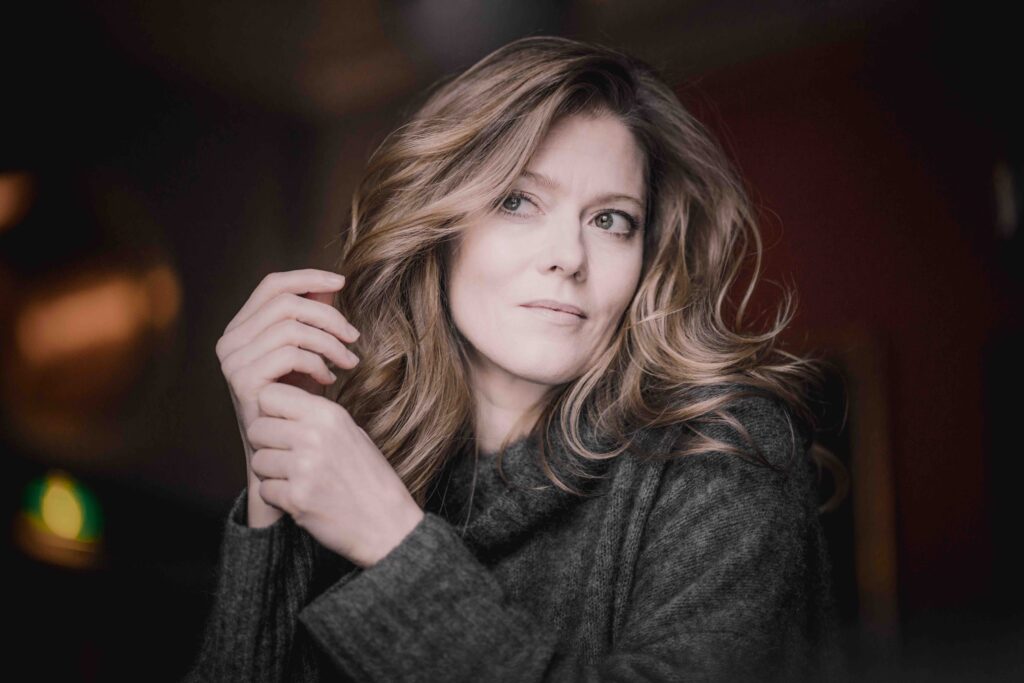

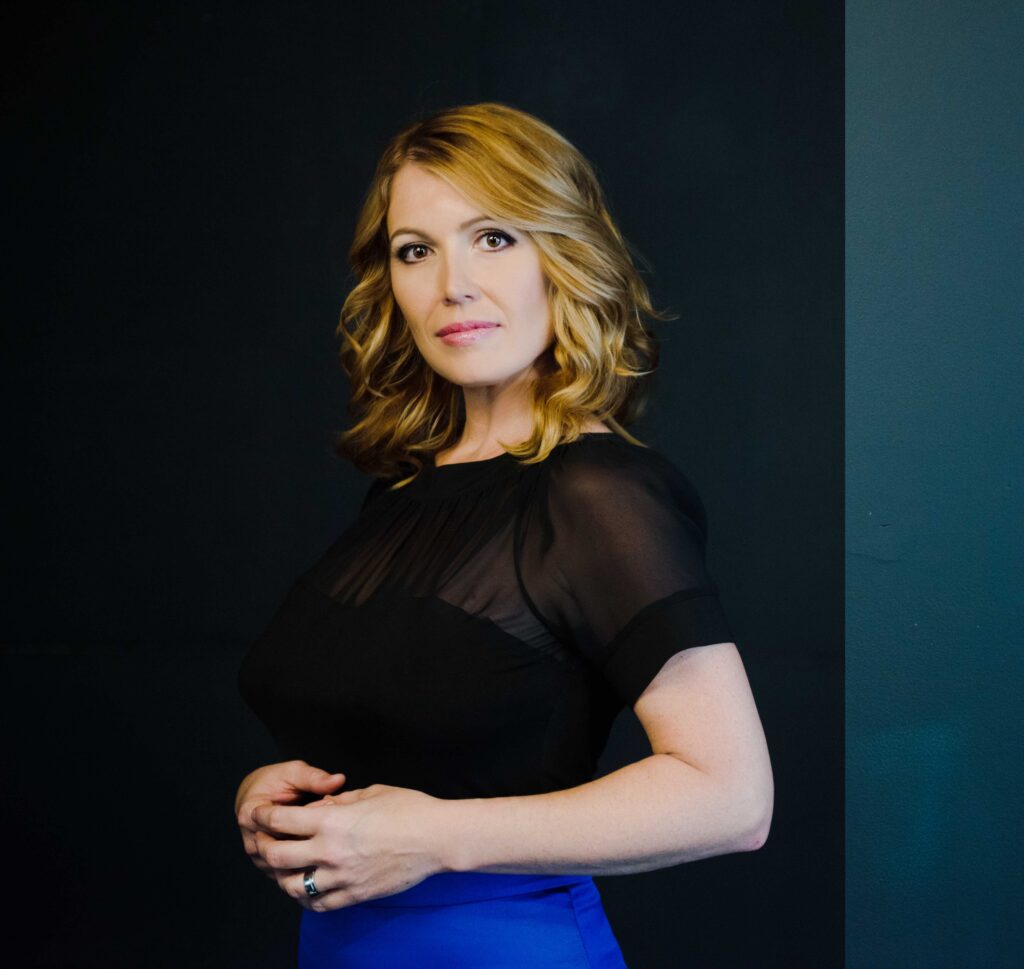
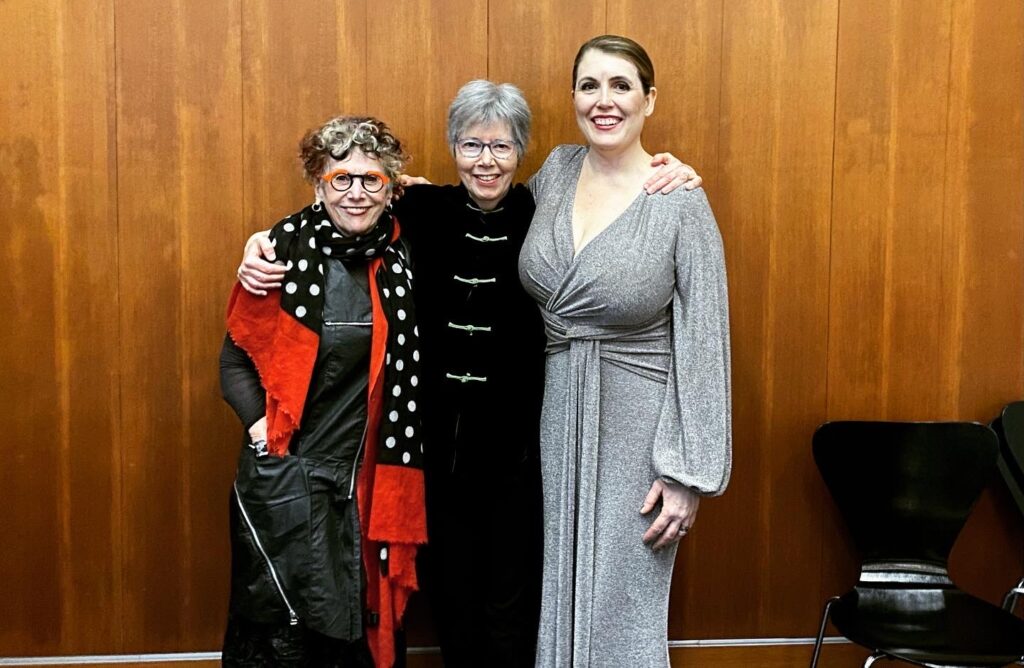

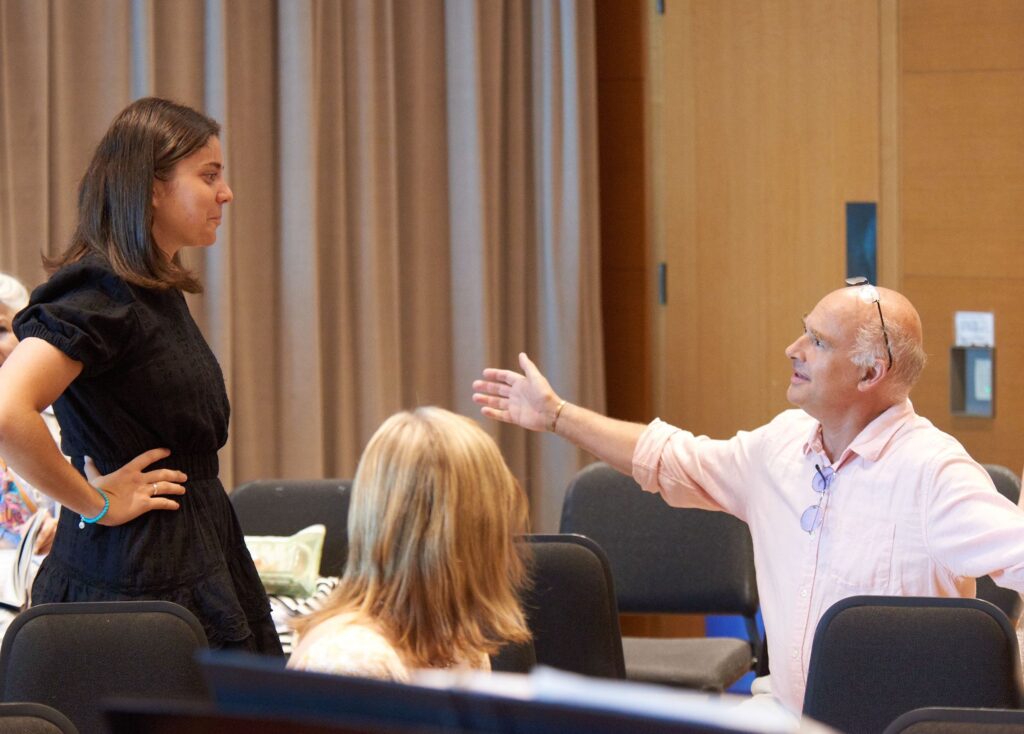


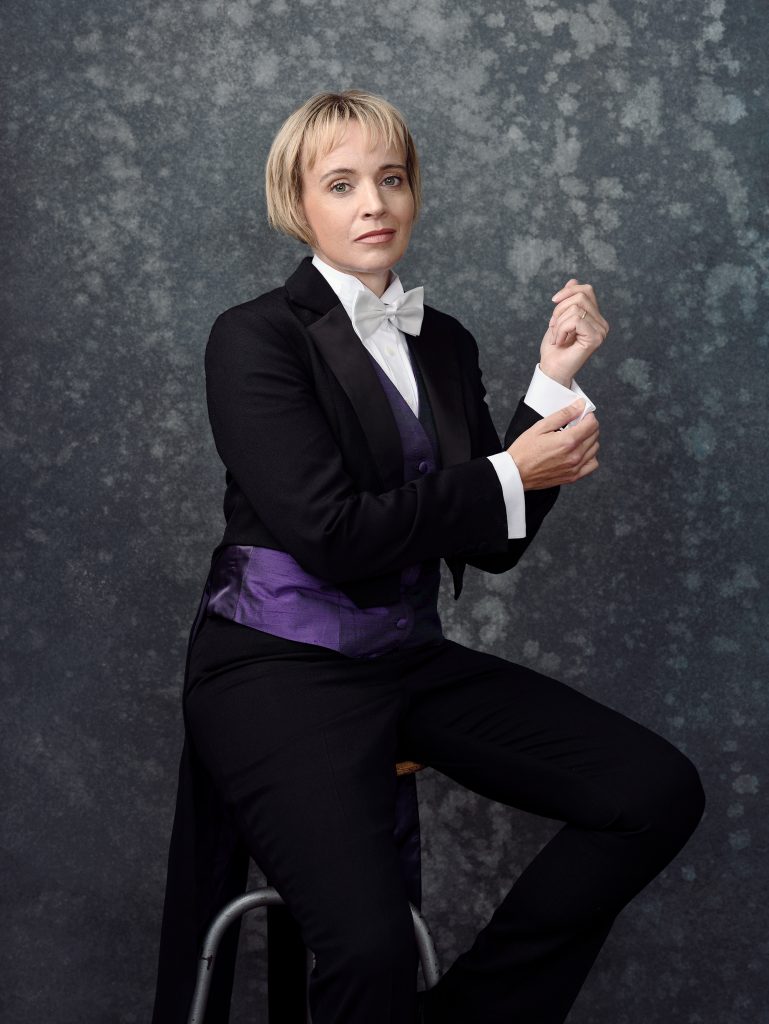

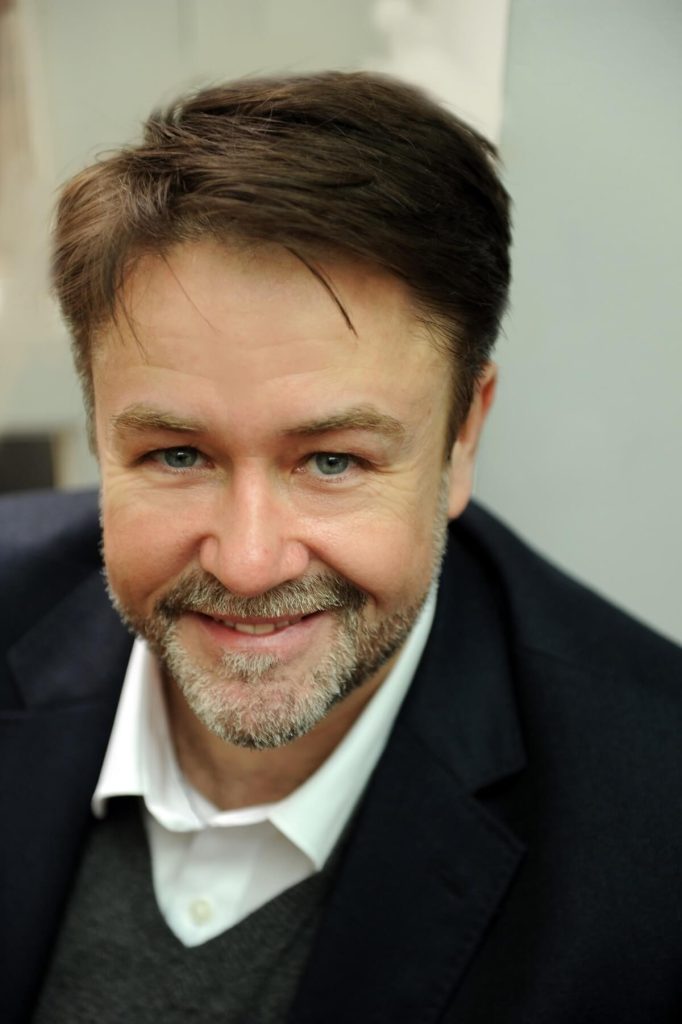
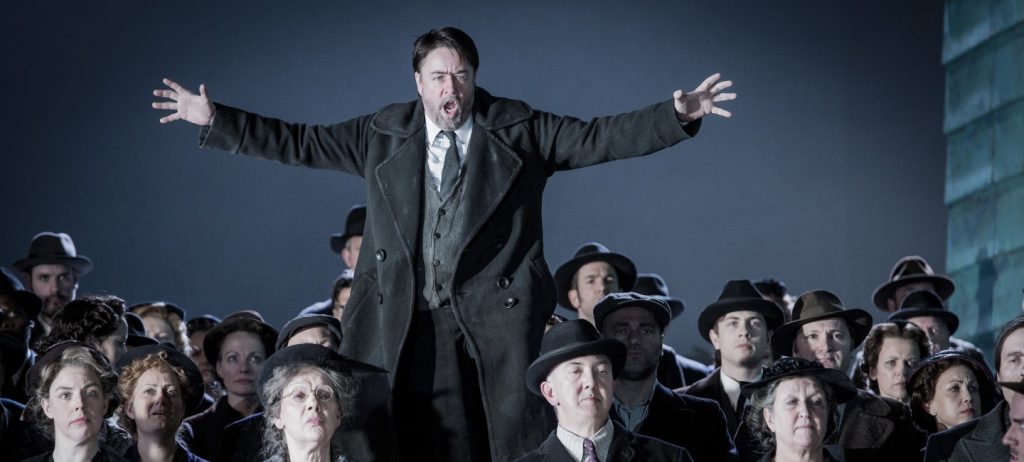
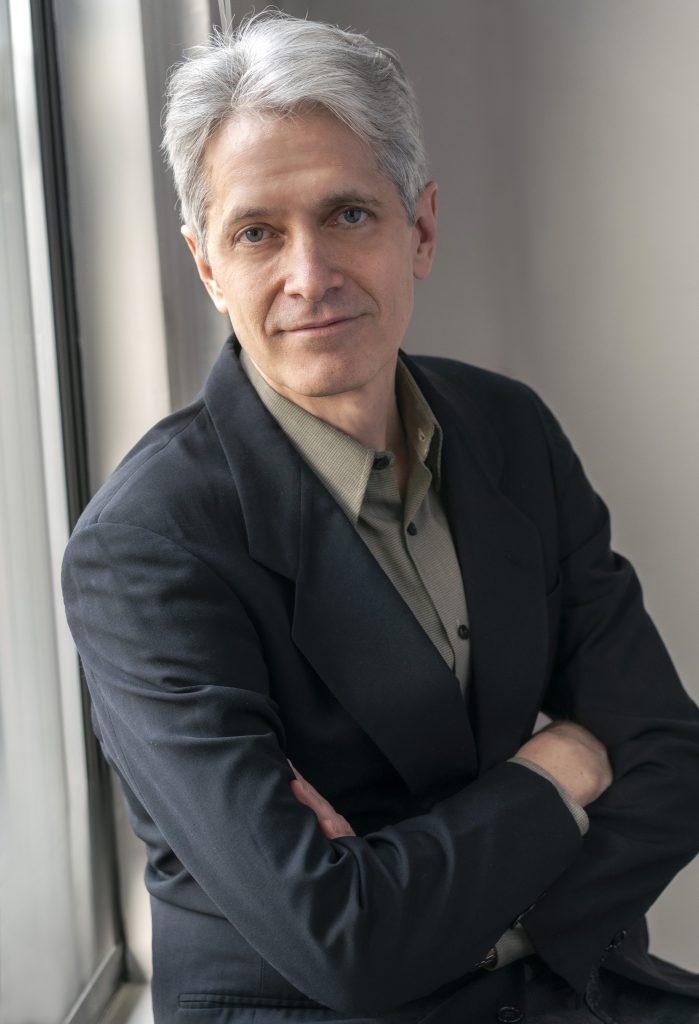

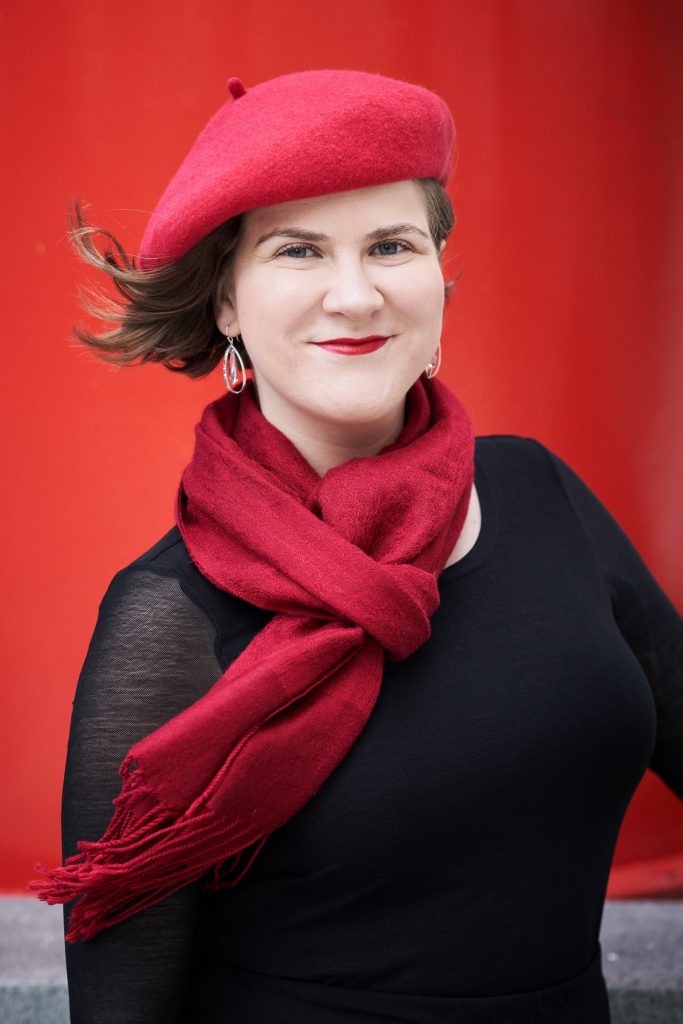
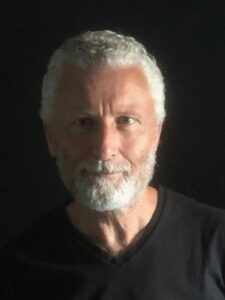
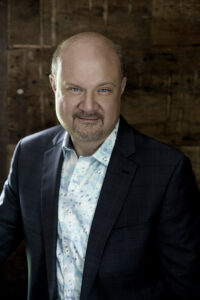

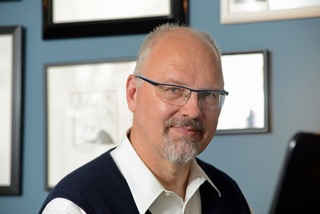

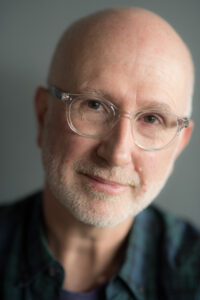

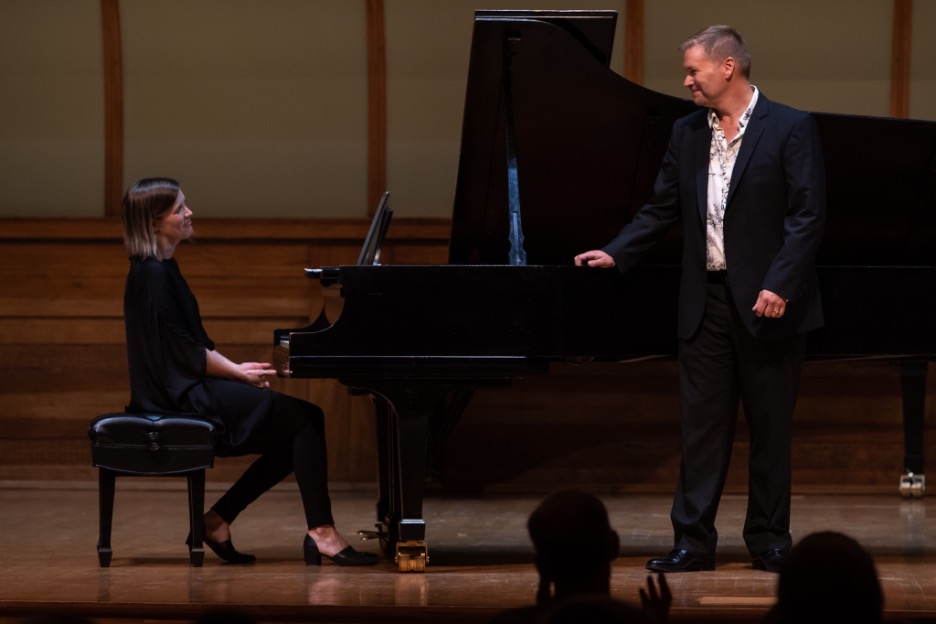
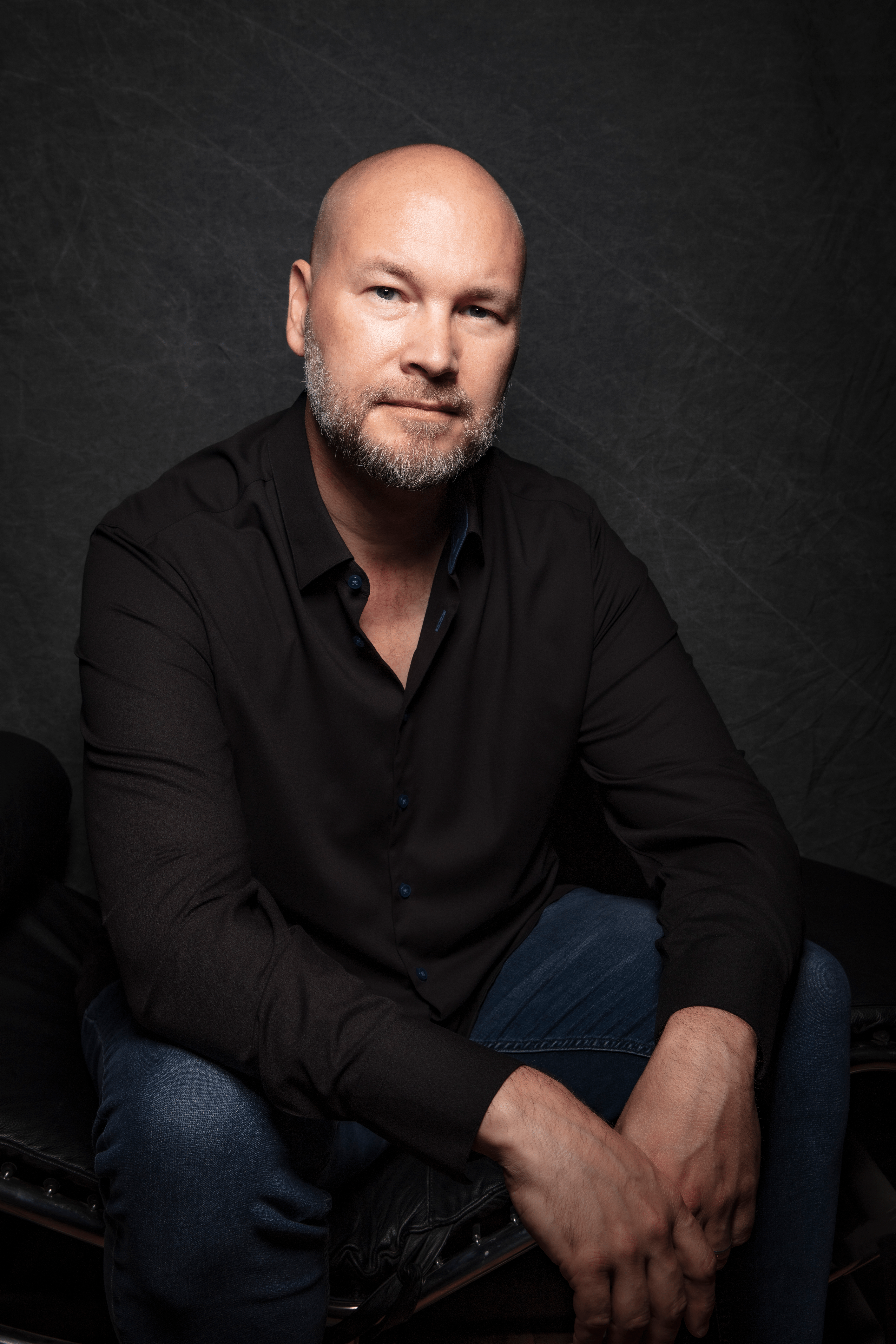
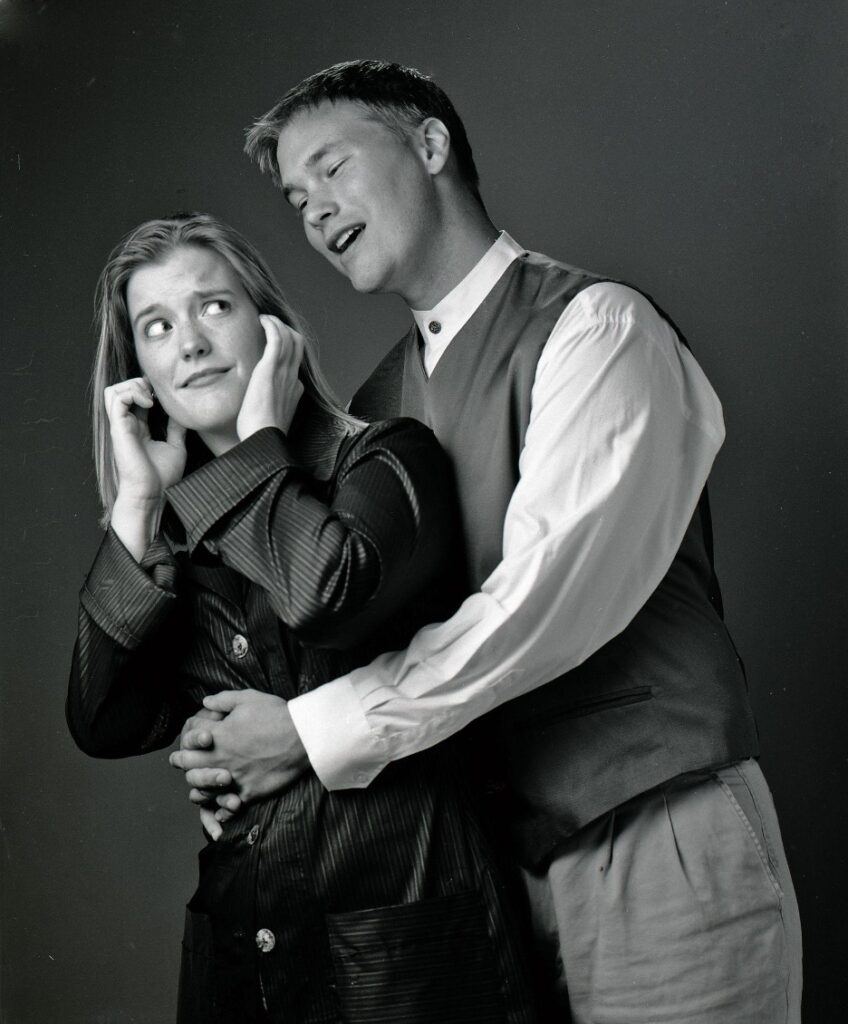
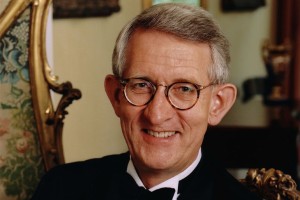


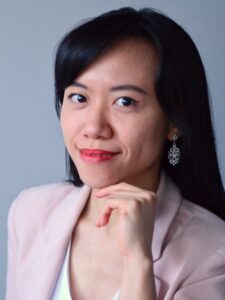

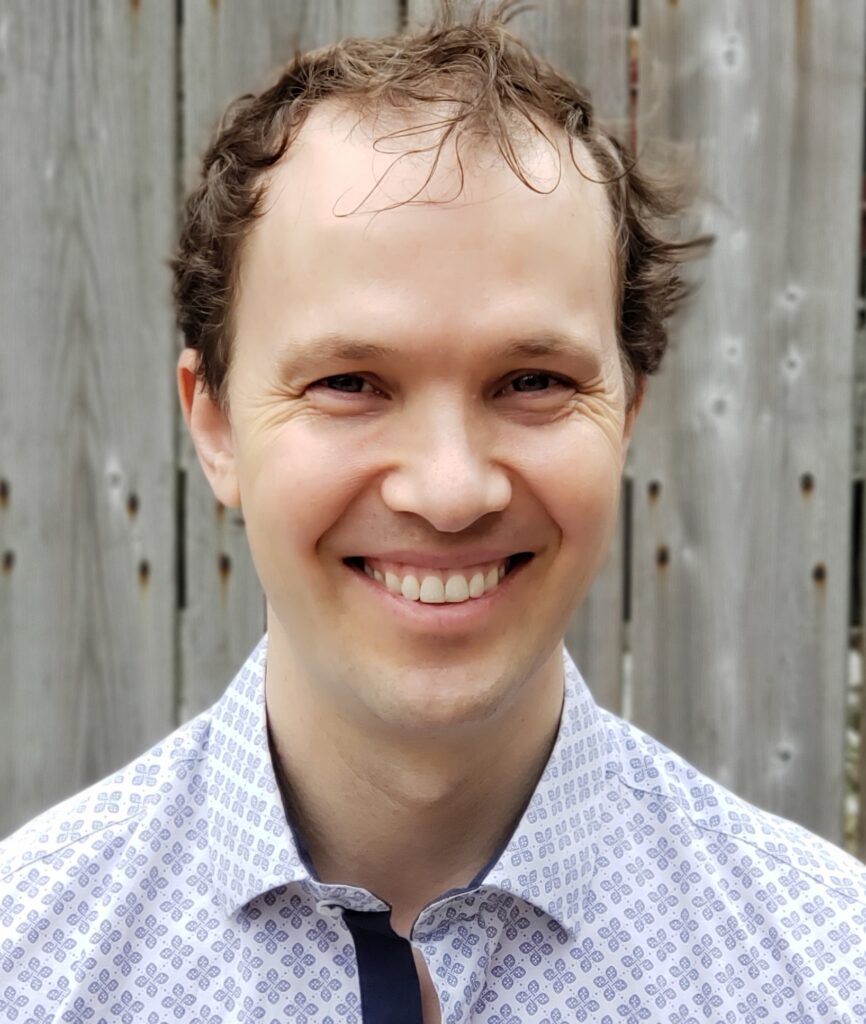




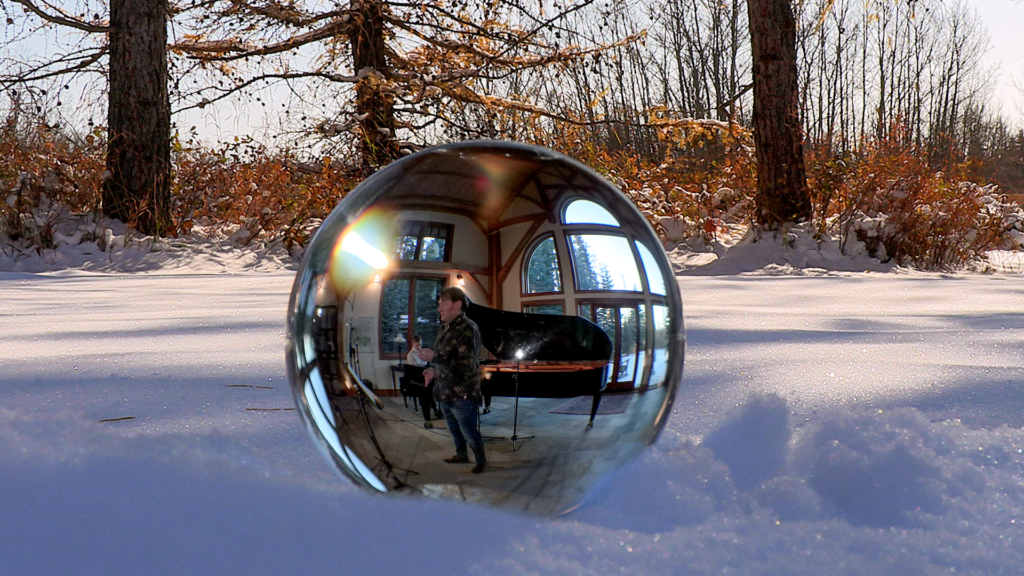
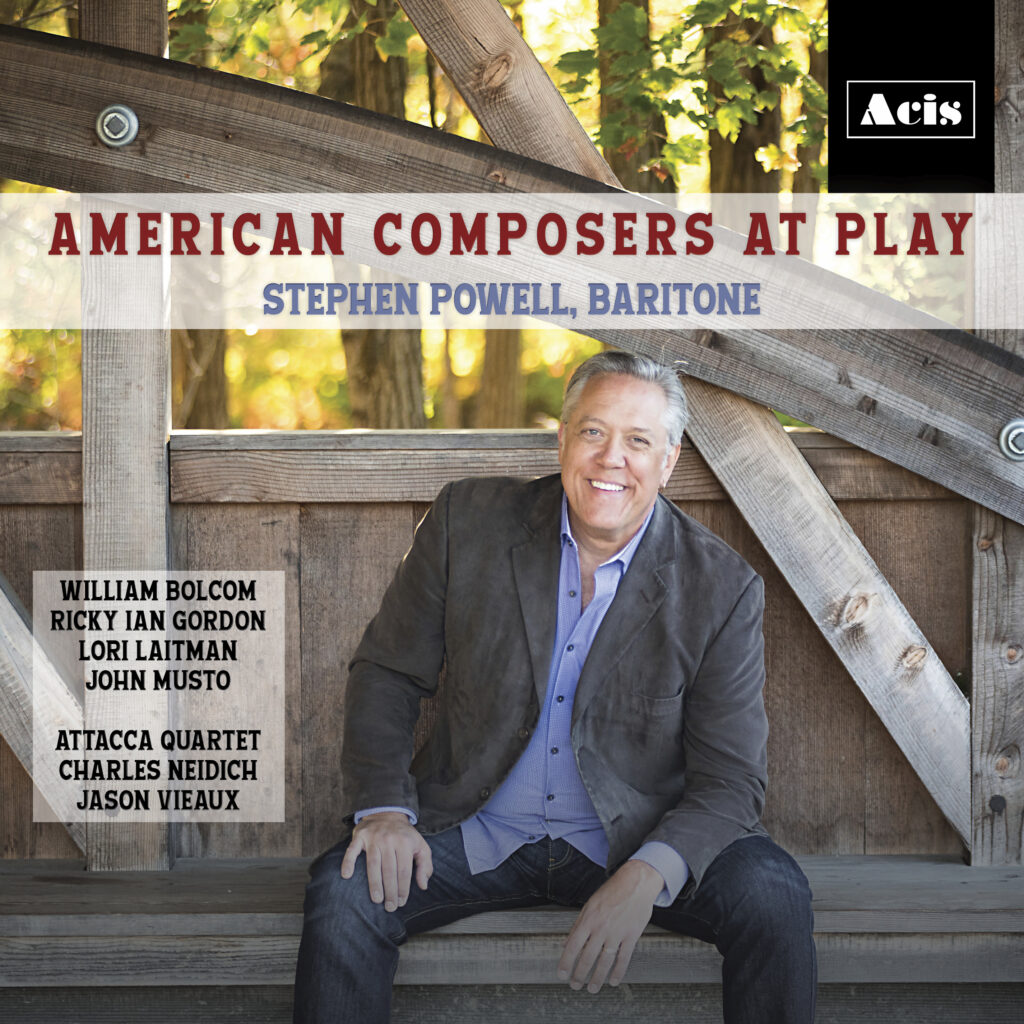
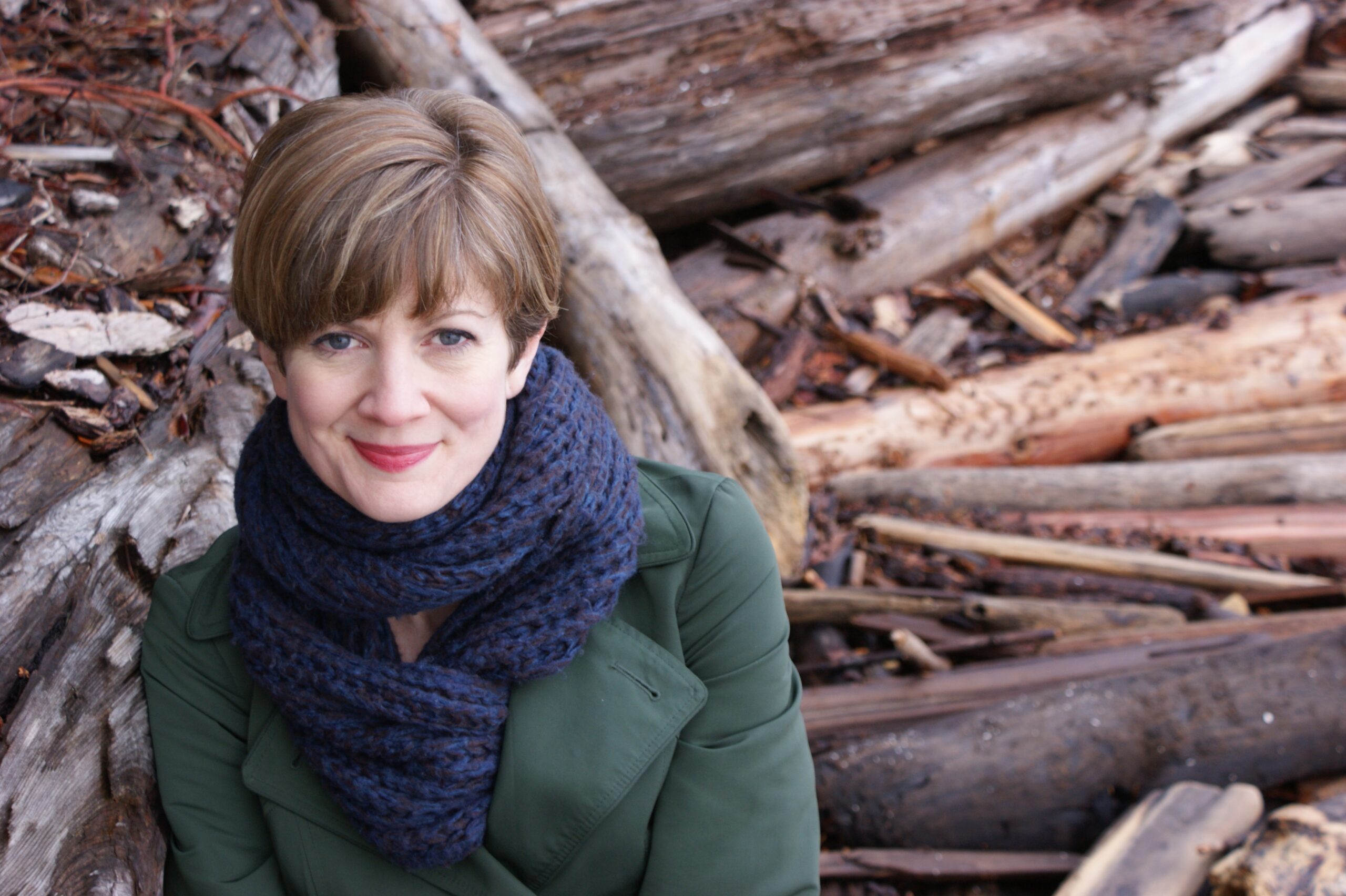
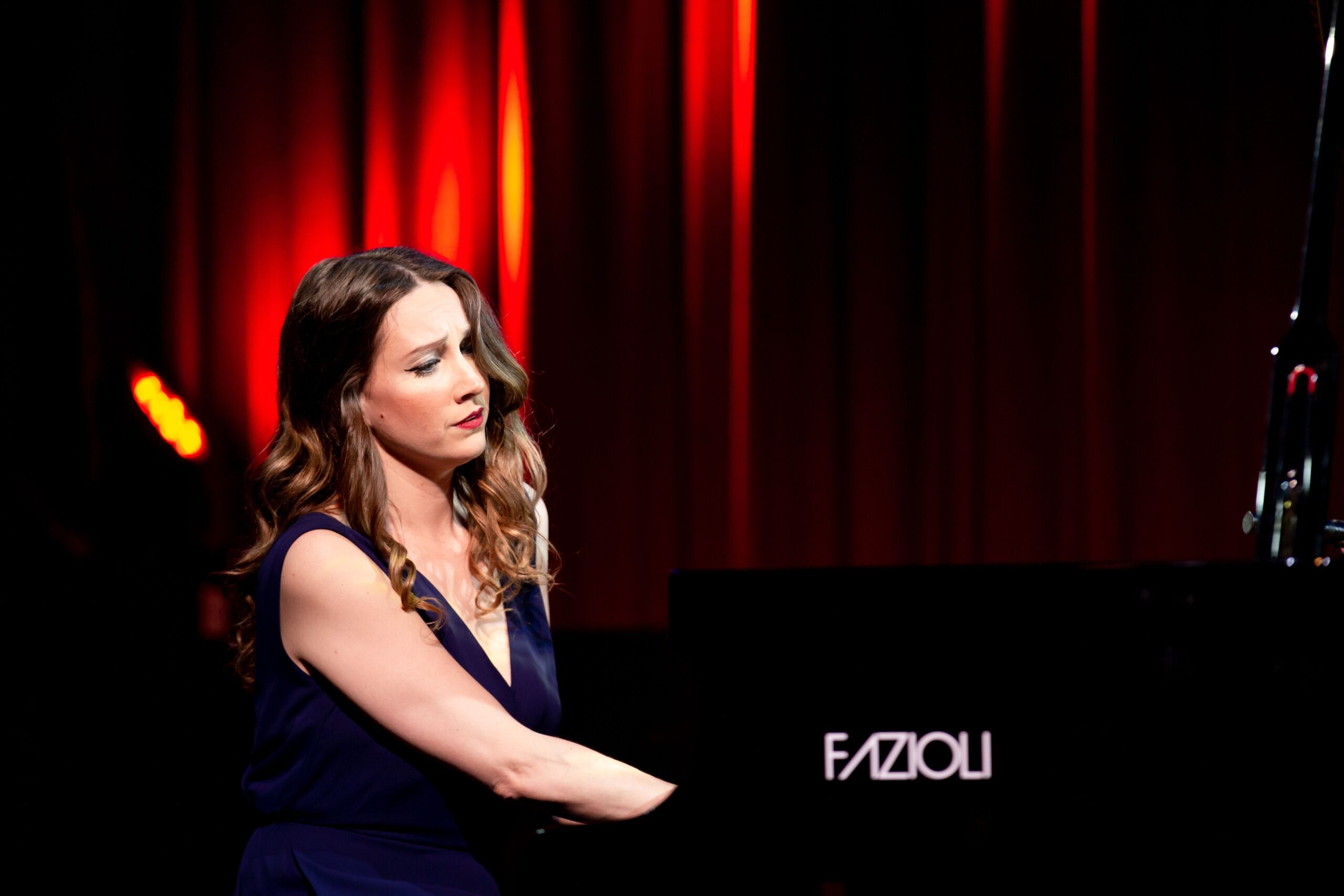
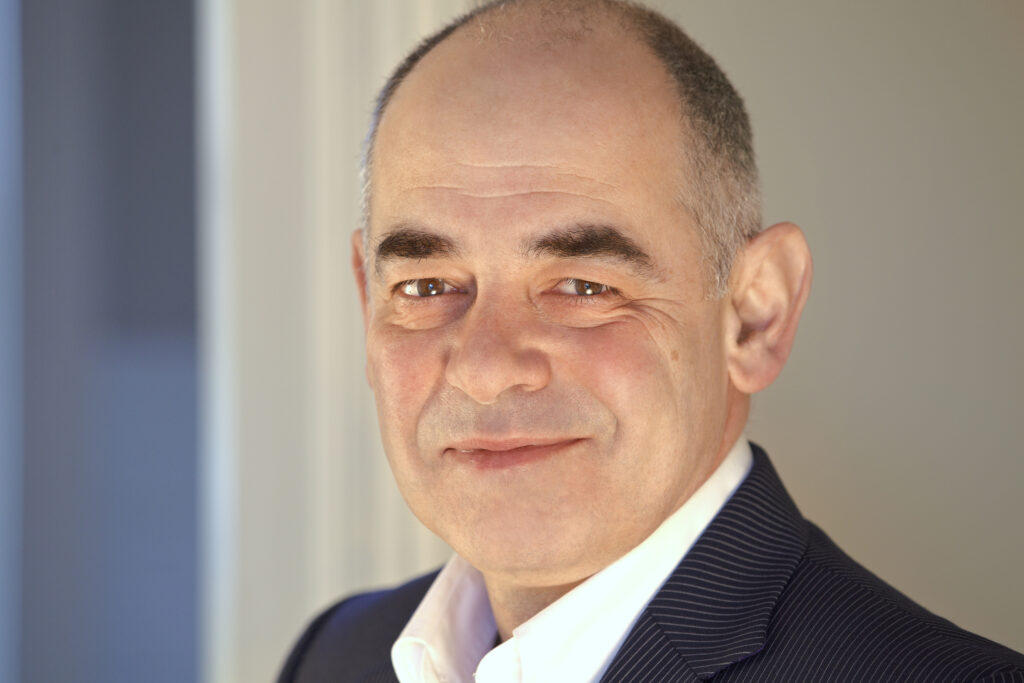



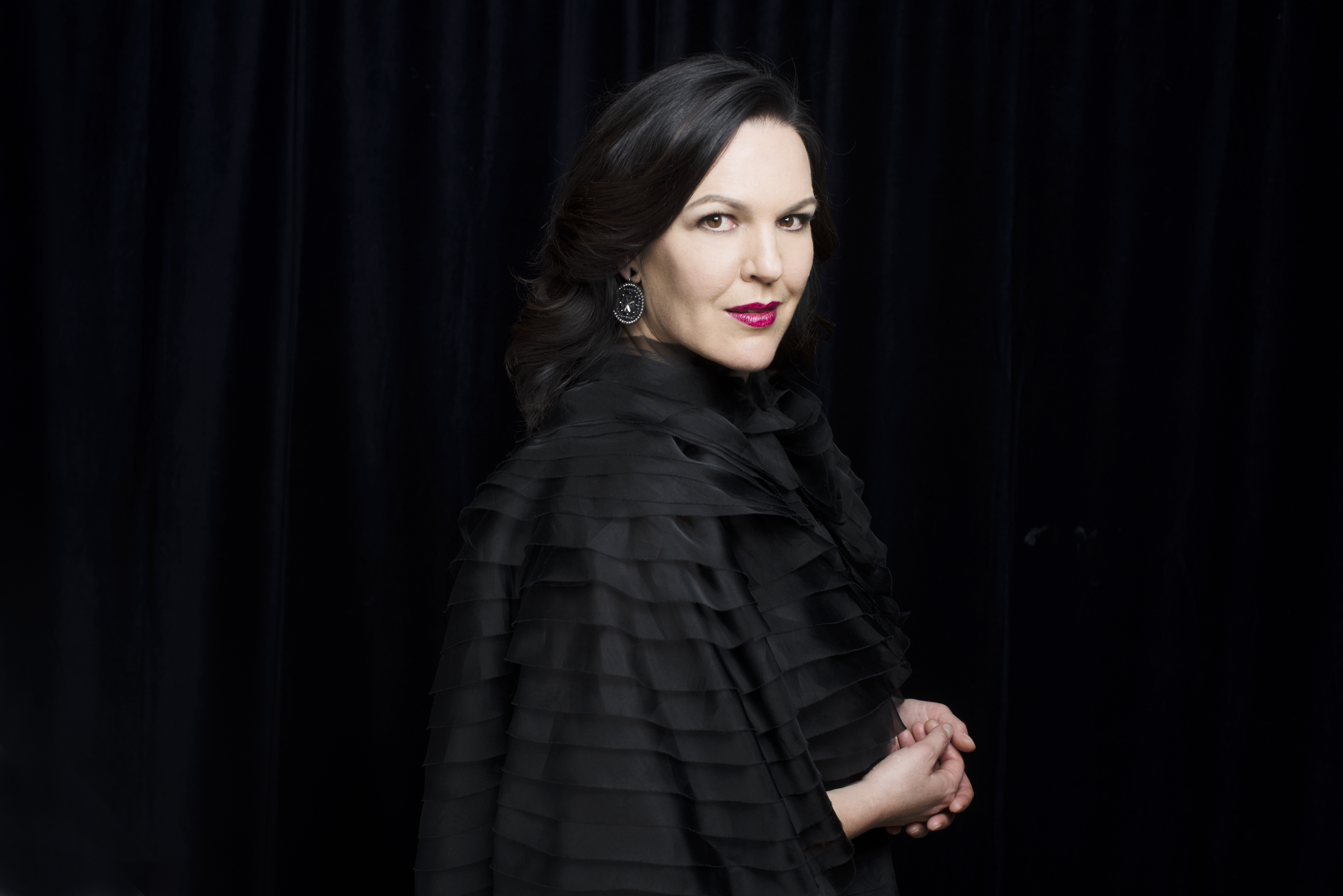
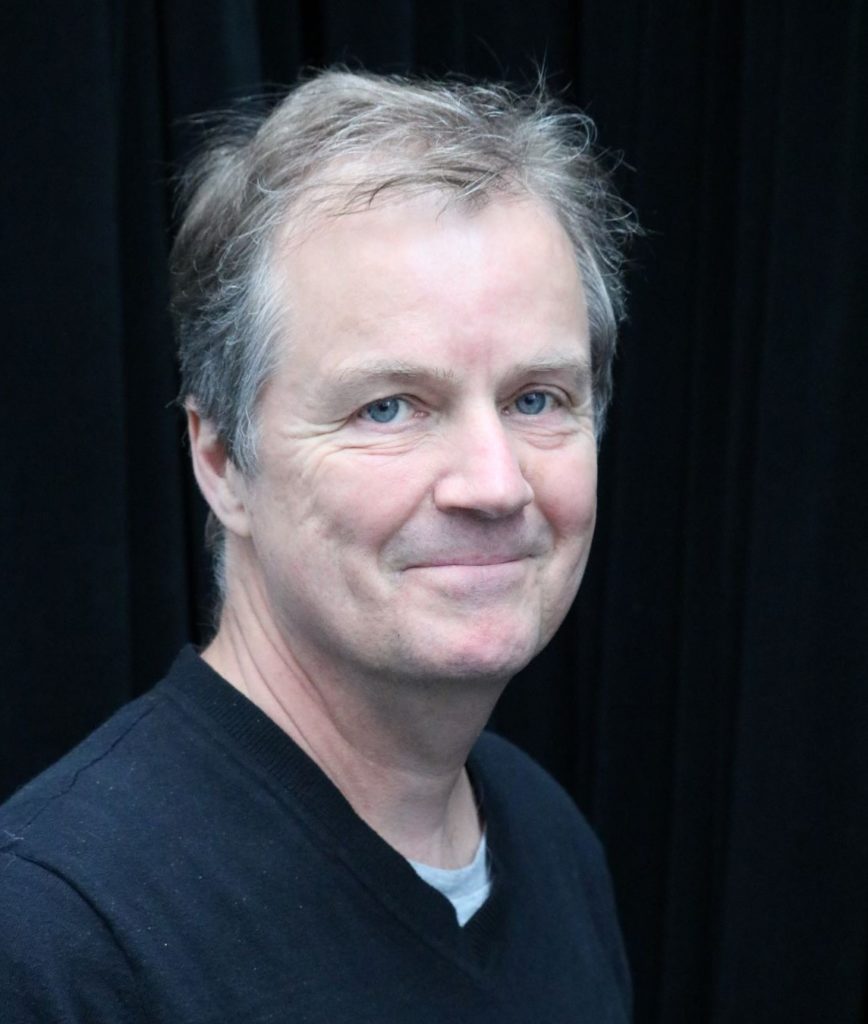

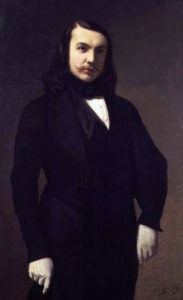

What an interesting issue! My first concert tour, in 1959, was with James Milligan, a great bass-baritone; he studied with Emmy Heim. I taught Leslie Uyeda at the University of Manitoba, and danced with Lorna Crozier at a Blue Mountain poetry conference. I worked with Barbara Hannigan only once, preparing premieres of Harry Somers’ difficult “Abstemious Asses” songs; I’ve been marvelling at Barbara ever since. So this issue was a personal connection.
Hi Bill,
Lovely to see your note and thank you for claiming me as one of your own! It was pure joy working with Krisztina Szabo, and I hope to write more for her. I’m writing a new opera for OPERA NUOVA now, but after that … Our troubled world needs poetry and music more than ever now.
Be well,
Leslie
Very beautiful art song!👍👍👍